 |
||
|
HOME
|
US Navy -
ships
|
US Navy - air
units
|
USMC - air
units
|
International
Navies
|
Weapon Systems
|
Special Reports |
||
|
US Navy - Aircraft Carrier CVA 64 / CV 64 - USS Constellation |
||
|
||
| 12/23 | ||
|
Type, class: Aircraft Carrier, CVA, CV; Kitty Hawk class Builder: New York Naval Shipyard, Brooklyn, New York, USA STATUS: Awarded: July 1, 1956 Laid down: September 14, 1957 Launched: October 8, 1960 Commissioned: October 27, 1961 Decommissioned: August 6, 2003 Fate: sold for scrap / scrapping completed in Brownsville, Texas in May 2017 Namesake: "the new Constellation of the flag" Ships Motto: ? Technical Data: see: INFO > Kitty Hawk class Aircraft Carrier - CV |
||
|
Deployments / Carrier Air Wings embarked + major overhauls: March 1962 - May 1962 with Carrier Air Group 13 (CVG-13) - shakedown cruise / Atlantic Ocean July 1962 - September 1962 with Carrier Air Group 5 (CVG-5) - Atlantic Ocean / Pacific Ocean February 1963 - September 1963 with Carrier Air Group 14 (CVG-14) - Pacific Ocean May 1964 - February 1965 with Carrier Air Wing 14 (CVW-14) - Vietnam War May 1965 - December 1965: Selected Restricted Availability (SRA) May 1966 - December 1966 with Carrier Air Wing 15 (CVW-15) - Vietnam War April 1967 - December 1967 with Carrier Air Wing 14 (CVW-14) - Vietnam War May 1968 - January 1969 with Carrier Air Wing 14 (CVW-14) - Vietnam War August 1969 - May 1970 with Carrier Air Wing 14 (CVW-14) - Vietnam War July 1970 - April 1971: Drydocking Selected Restricted Availability (DSRA) October 1971 - July 1972 with Carrier Air Wing 9 (CVW-9) - Vietnam War January 1973 - October 1973 with Carrier Air Wing 9 (CVW-9) - Vietnam War June 1974 - December 1974 with Carrier Air Wing 9 (CVW-9) - Vietnam War / Arabian Gulf February 1975 - April 1976: Extended Drydocking Selected Restricted Availability (EDSRA) at Puget Sound Naval Shipyard April 1977 - November 1977 with Carrier Air Wing 9 (CVW-9) - Pacific Ocean September 1978 - May 1979 with Carrier Air Wing 9 (CVW-9) - Pacific Ocean / Indian Ocean February 1980 - October 1980 with Carrier Air Wing 9 (CVW-9) - Pacific Ocean / Indian Ocean October 1981 - May 1982 with Carrier Air Wing 9 (CVW-9) - Pacific Ocean / Indian Ocean January 1983 - February 1984: Complex Overhaul (COH) at Puget Sound Naval Shipyard February 1985 - August 1985 with Carrier Air Wing 14 (CVW-14) - Pacific Ocean / Indian Ocean September 1986 - October 1986 with Carrier Air Wing 14 (CVW-14) - Northern Pacific Ocean April 1987 - October 1987 with Carrier Air Wing 14 (CVW-14) - Pacific Ocean / Indian Ocean / Arabian Gulf December 1988 - June 1989 with Carrier Air Wing 14 (CVW-14) - Pacific Ocean / Indian Ocean September 1989 - October 1989 with Carrier Air Wing 14 (CVW-14) - Northern Pacific Ocean February 1990 - April 1990 with Carrier Air Wing 9 (CVW-9) - carrier transfer to East Coast (Norfolk) April 1990 - March 1993: Service Lifetime Extension Program (SLEP) at Philadelphia Naval Shipyard May 1993 - July 1993 with Carrier Air Wing 2 (CVW-2) - carrier transfer to West Coast (San Diego) May 1994 - June 1994 with Carrier Air Wing 2 (CVW-2) - Pacific Ocean (exercise RIMPAC 94) November 1994 - May 1995 with Carrier Air Wing 2 (CVW-2) - Pacific Ocean / Indian Ocean / Gulf April 1997 - October 1997 with Carrier Air Wing 2 (CVW-2) - Pacific Ocean / Indian Ocean / Gulf June 1999 - December 1999 with Carrier Air Wing 2 (CVW-2) - Pacific Ocean / Gulf March 2001 - September 2001 with Carrier Air Wing 2 (CVW-2) - Pacific Ocean / Gulf September 2001 - January 2002: Selected Restricted Availability (SRA) at Naval Base San Diego November 2002 - June 2003 with Carrier Air Wing 2 (CVW-2) - Pacific Ocean / Gulf |
||
| images | ||
 departing Bremerton, Washington for her final journey to Brownsville, Texas via Cape Horn - August 8, 2014 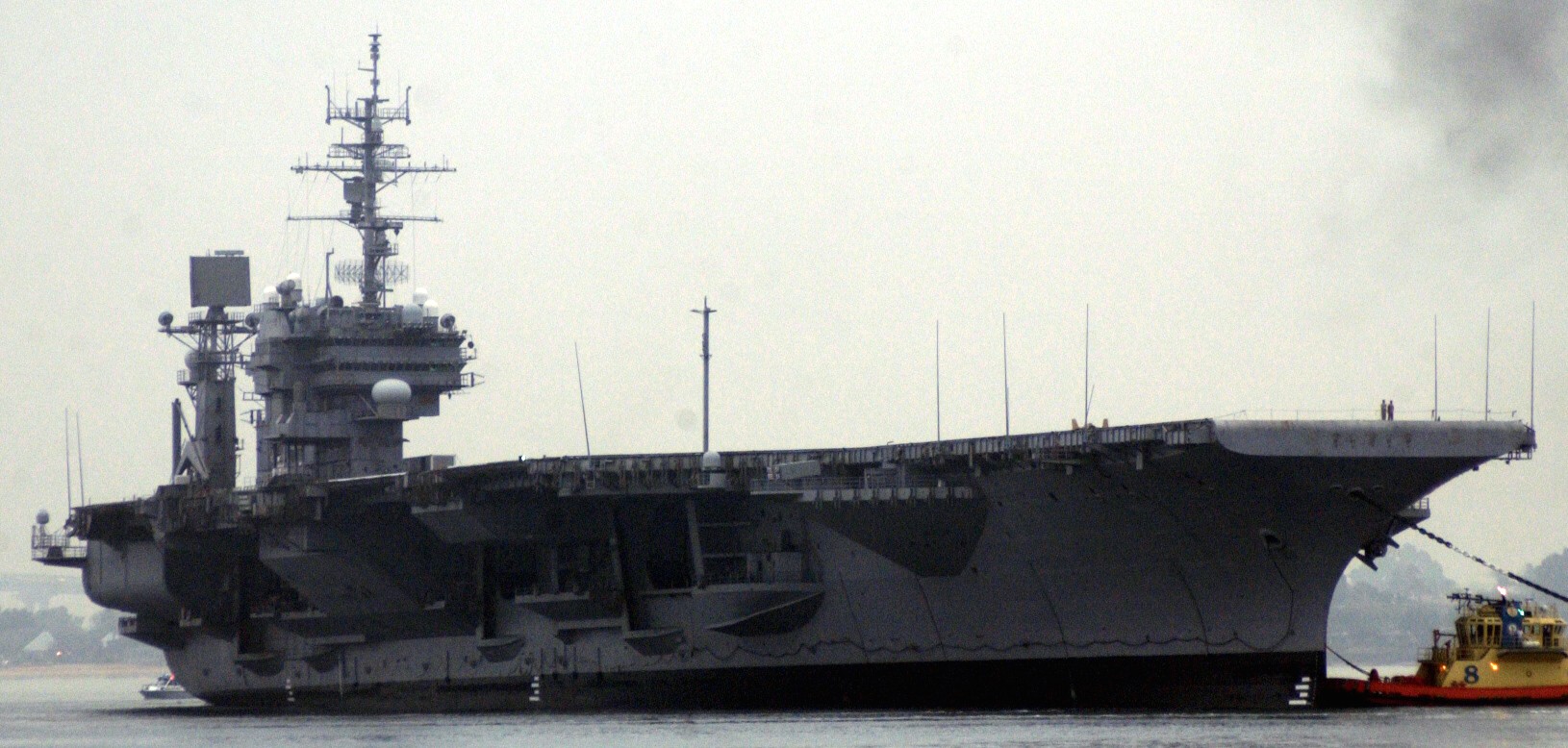 departing San Diego under tow for her transfer to Navy Inactive Ships Maintenance Facility (NISMF), Bremerton, Washington - September 12, 2003 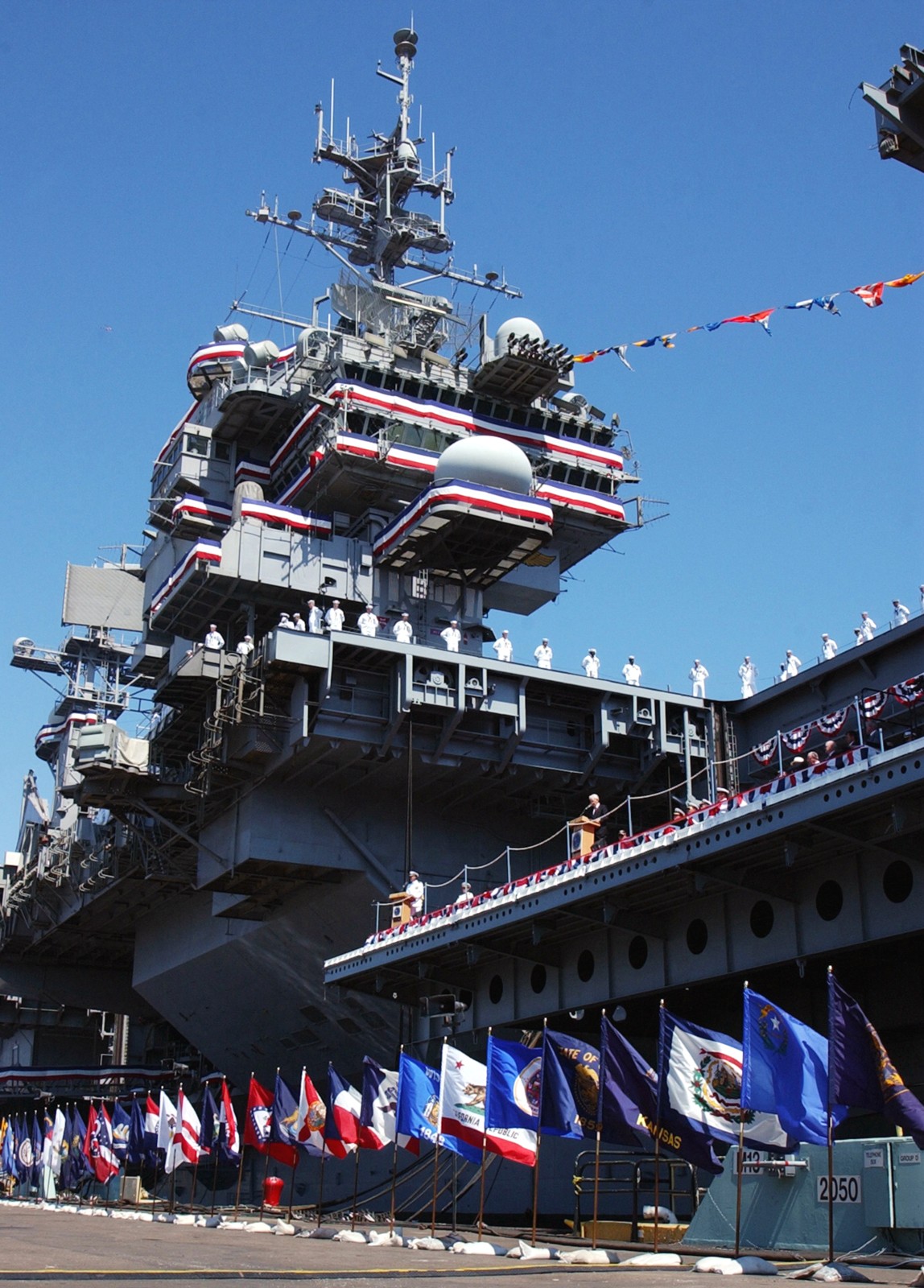 decommissioning ceremony at NAS North Island, California - August 7, 2003 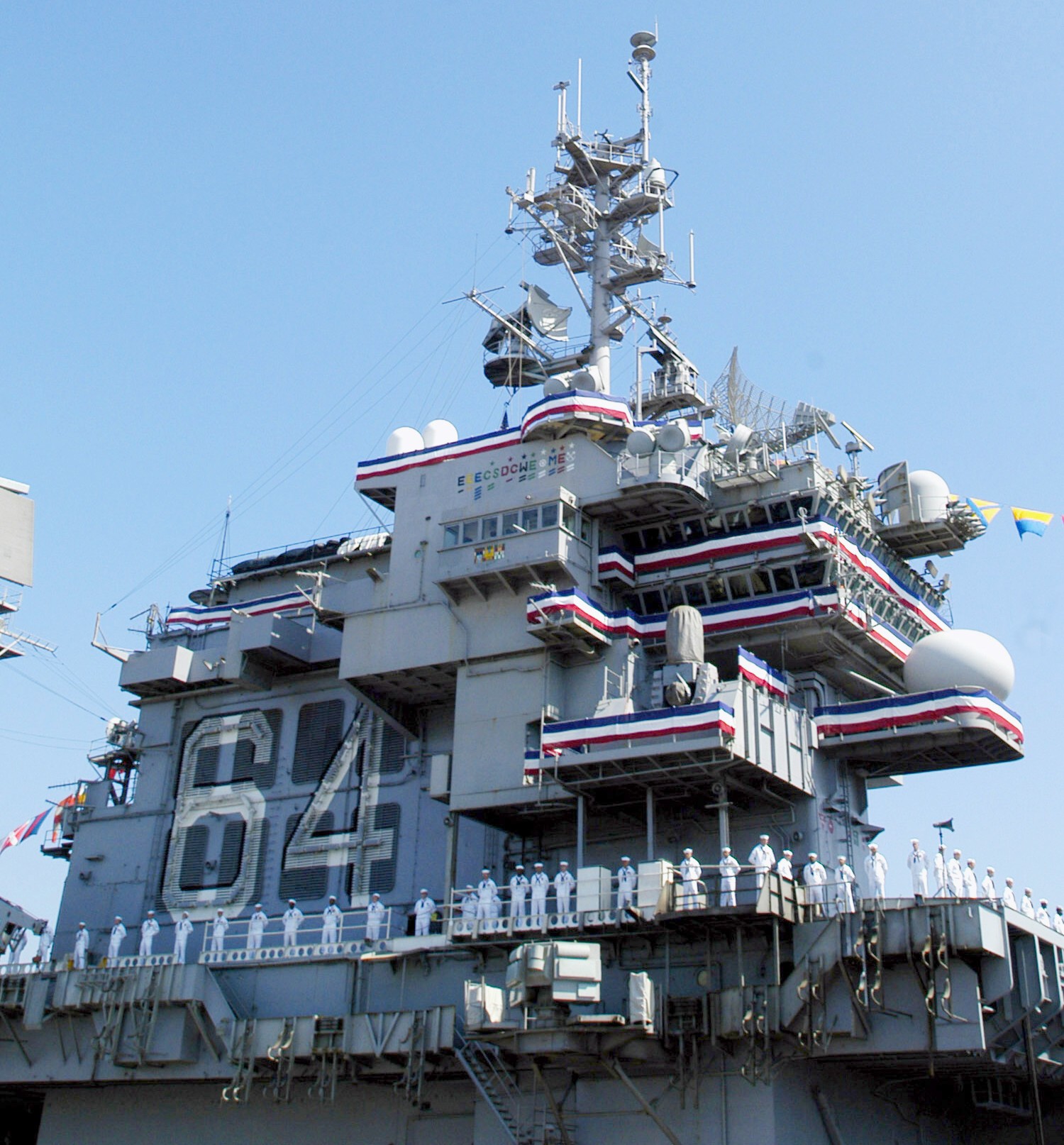 decommissioning ceremony at NAS North Island, California - August 7, 2003 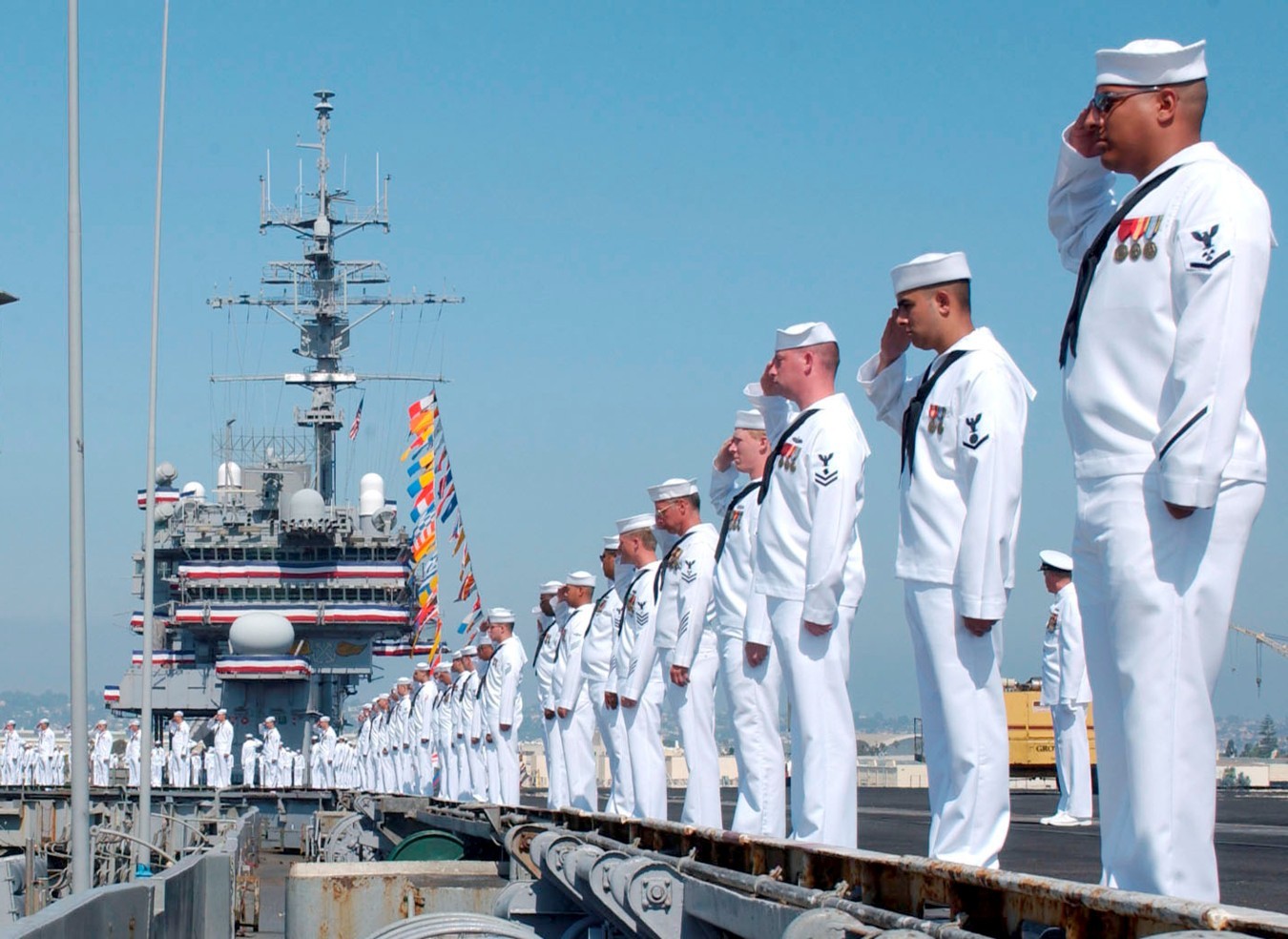 decommissioning ceremony at NAS North Island, California - August 7, 2003 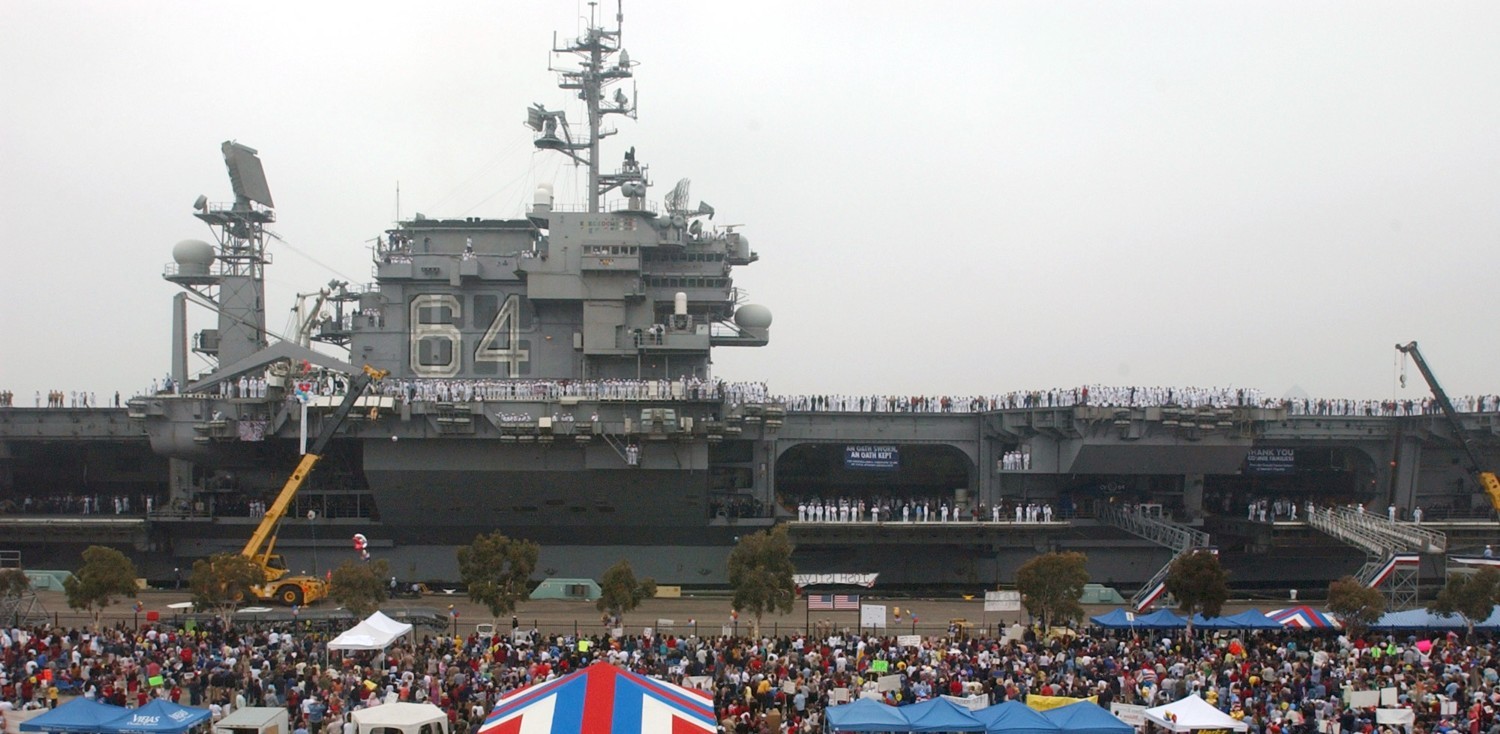 returning to NAS North Island, California from her final deployment - June 2, 2003 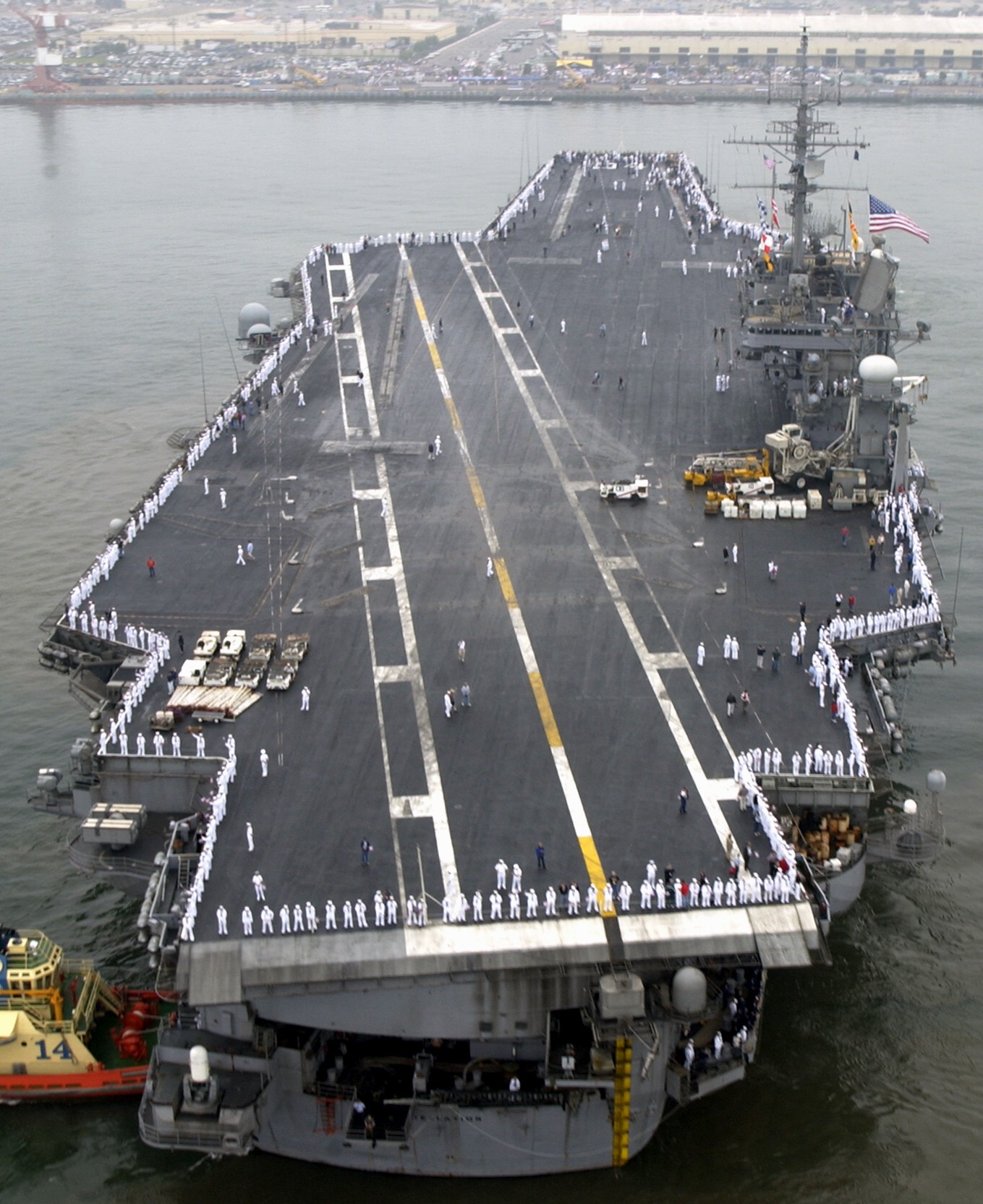 returning to NAS North Island, California from her final deployment - June 2, 2003 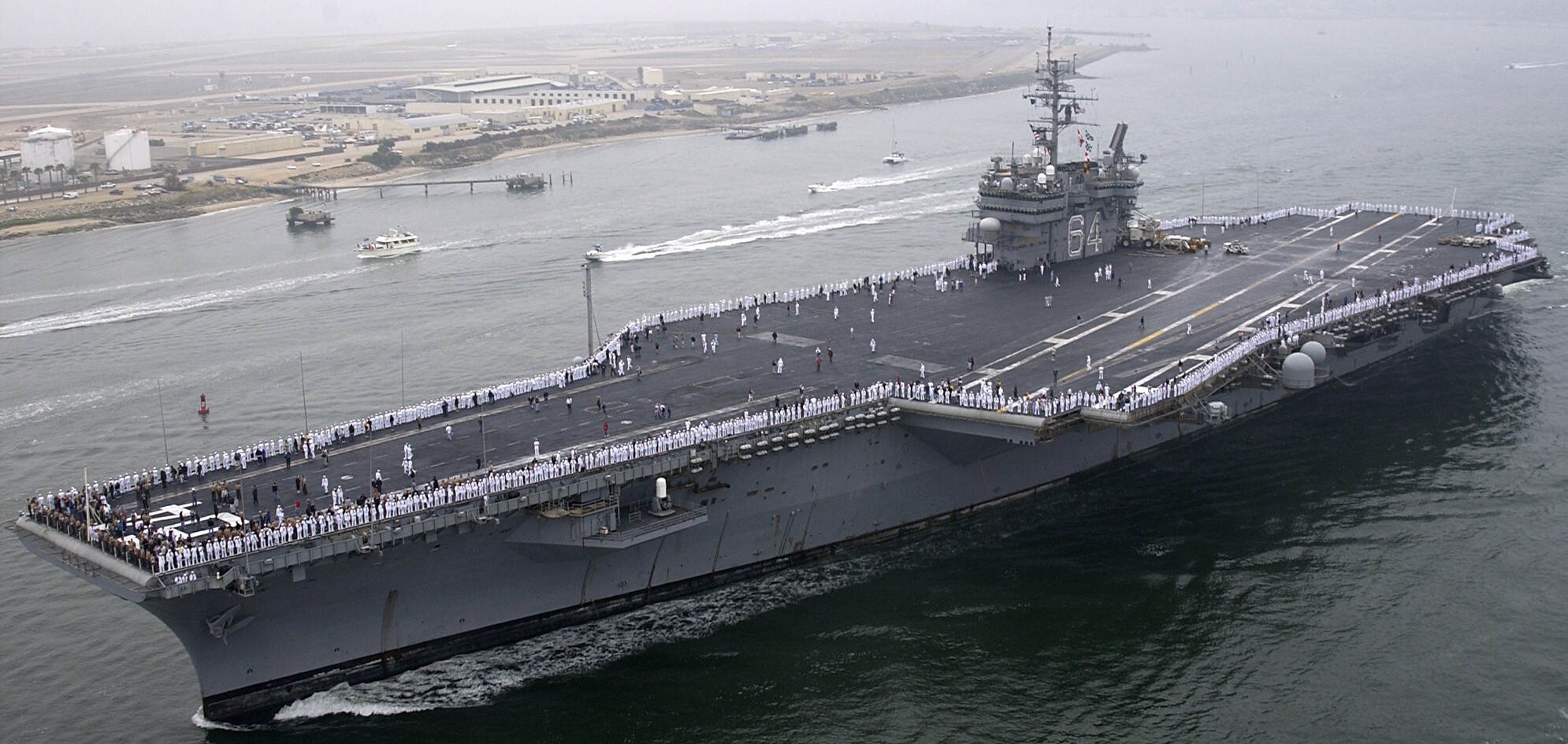 returning to NAS North Island, California from her final deployment - June 2, 2003 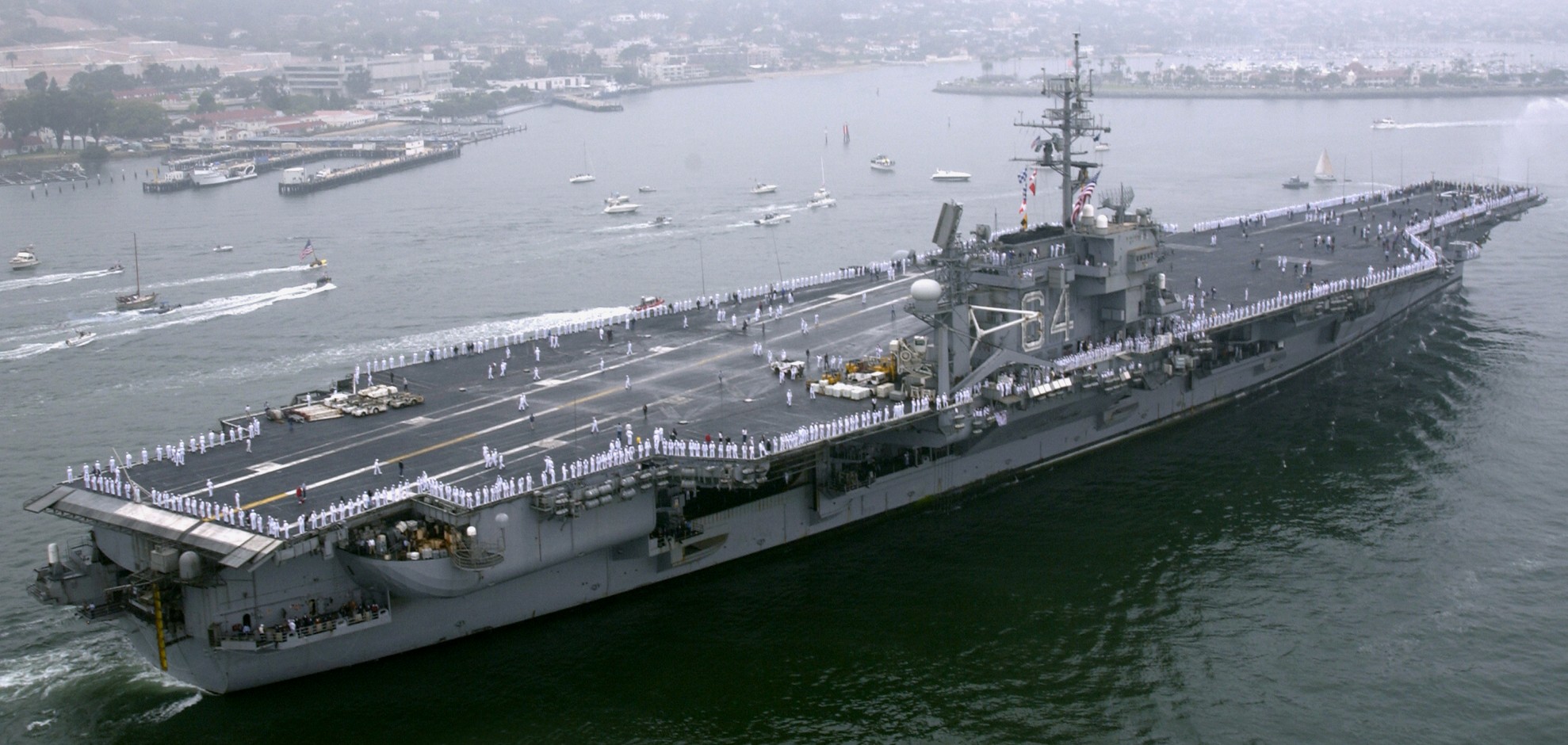 returning to NAS North Island, California from her final deployment - June 2, 2003 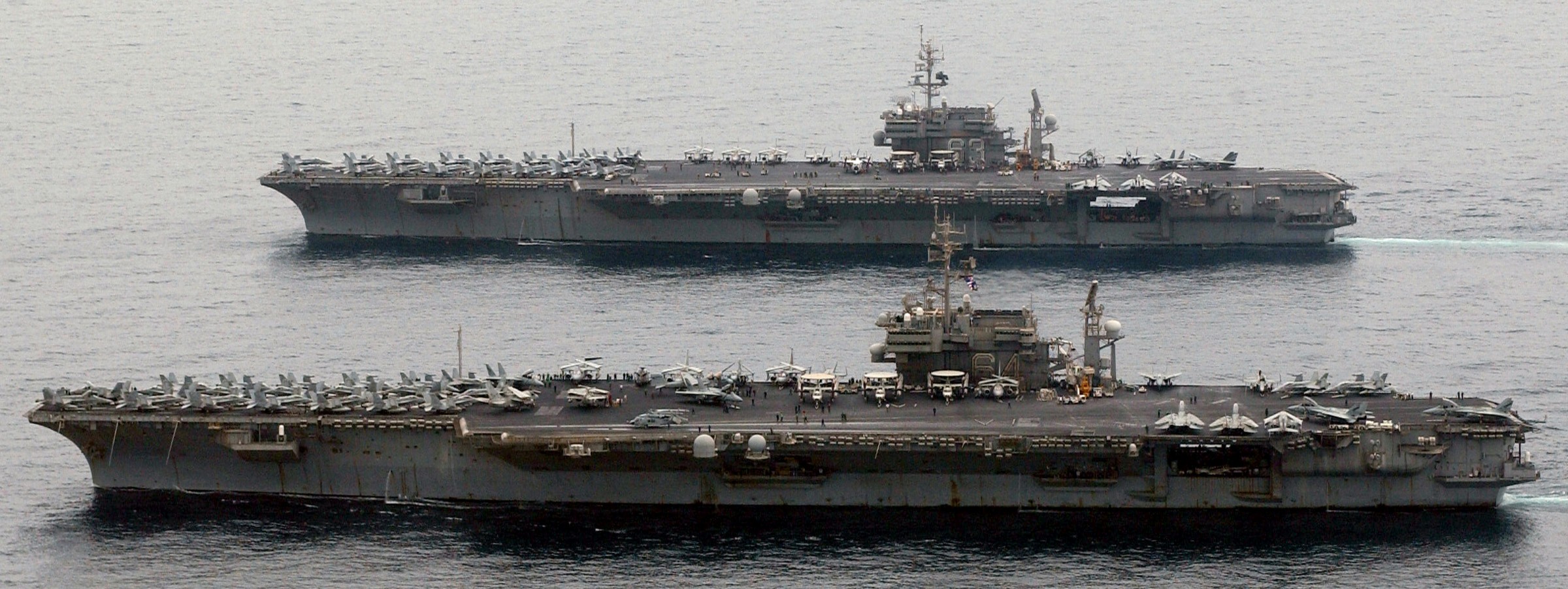 with CVW-2 embarked - alongside USS Kitty Hawk (CV 63) - Operation Enduring Freedom - April 2003 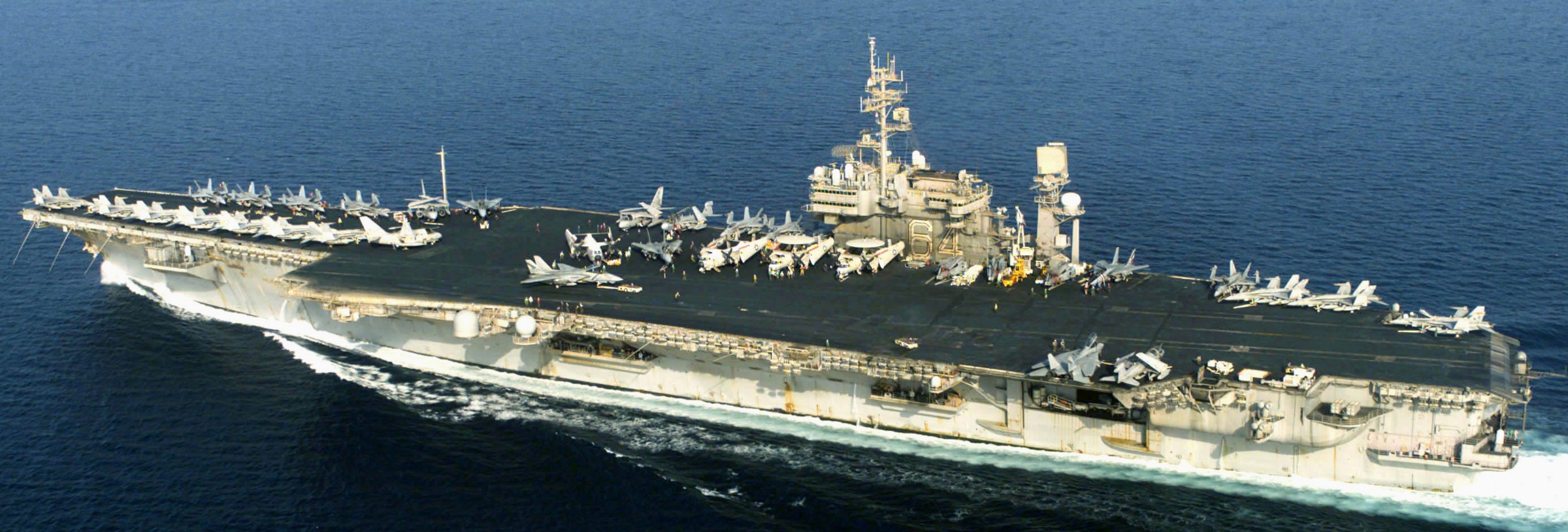 with CVW-2 embarked - Arabian Gulf - April 2003 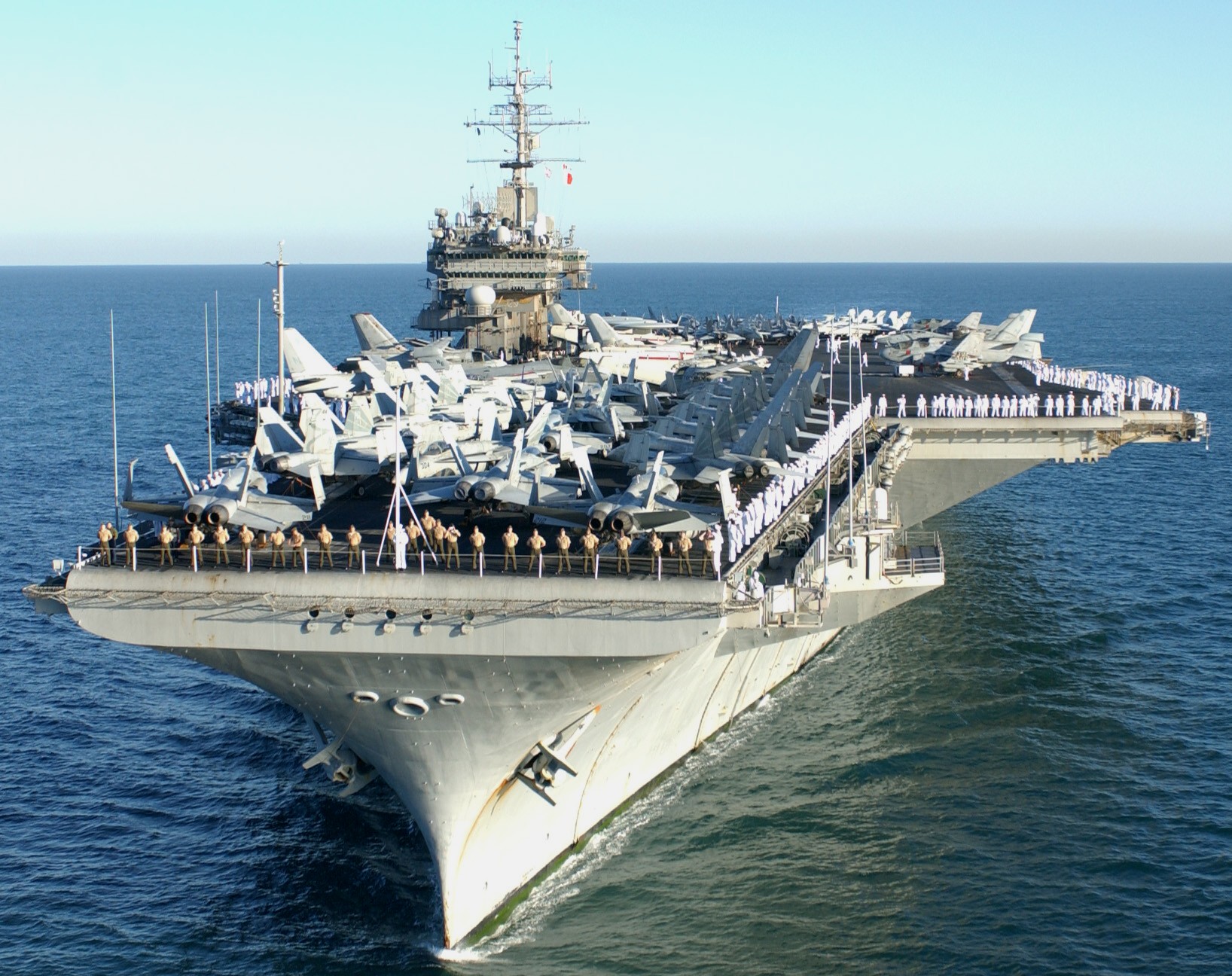 with CVW-2 embarked - off Perth, Australia - April 2003 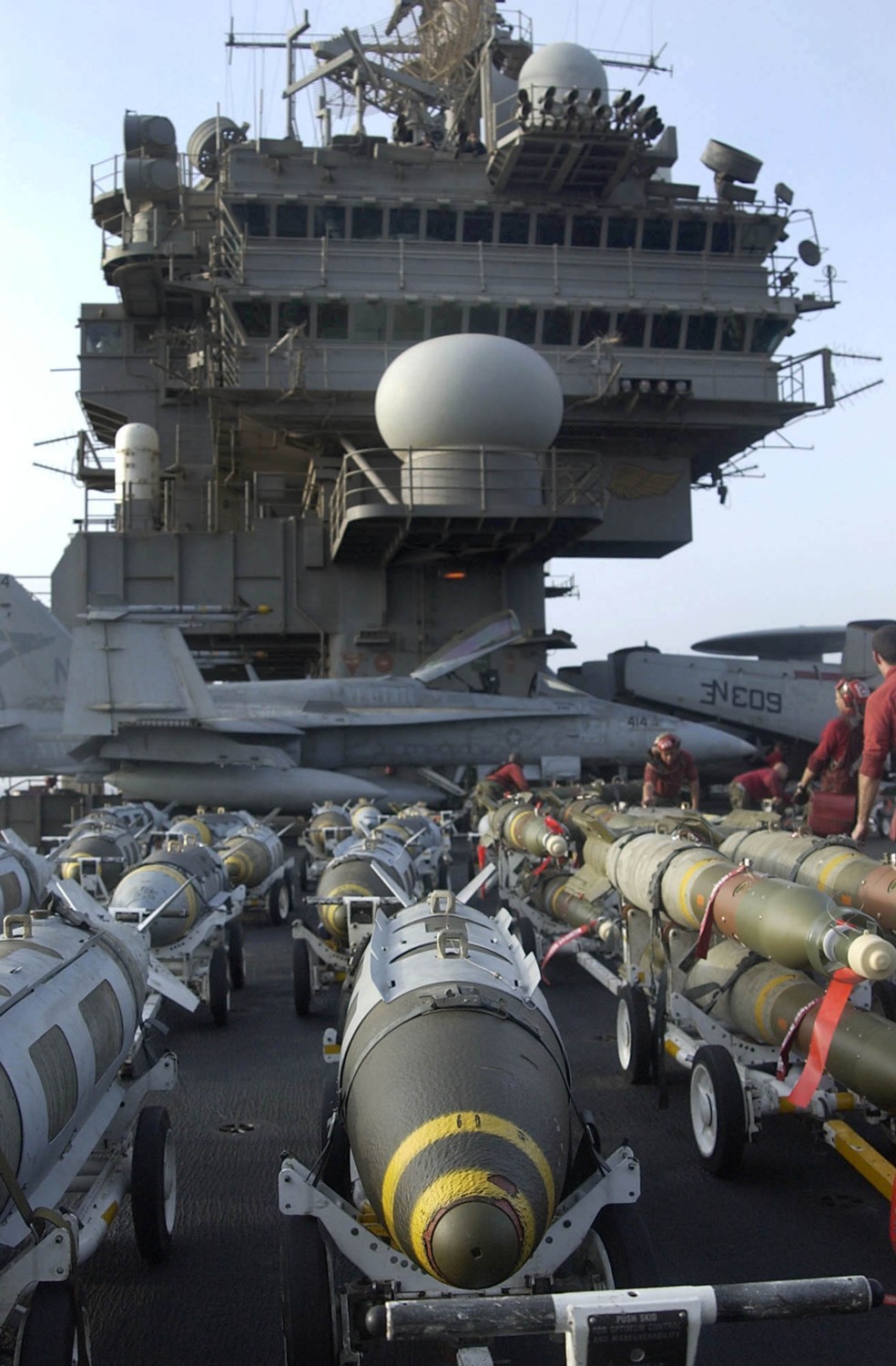 with CVW-2 embarked - Arabian Gulf - March 2003 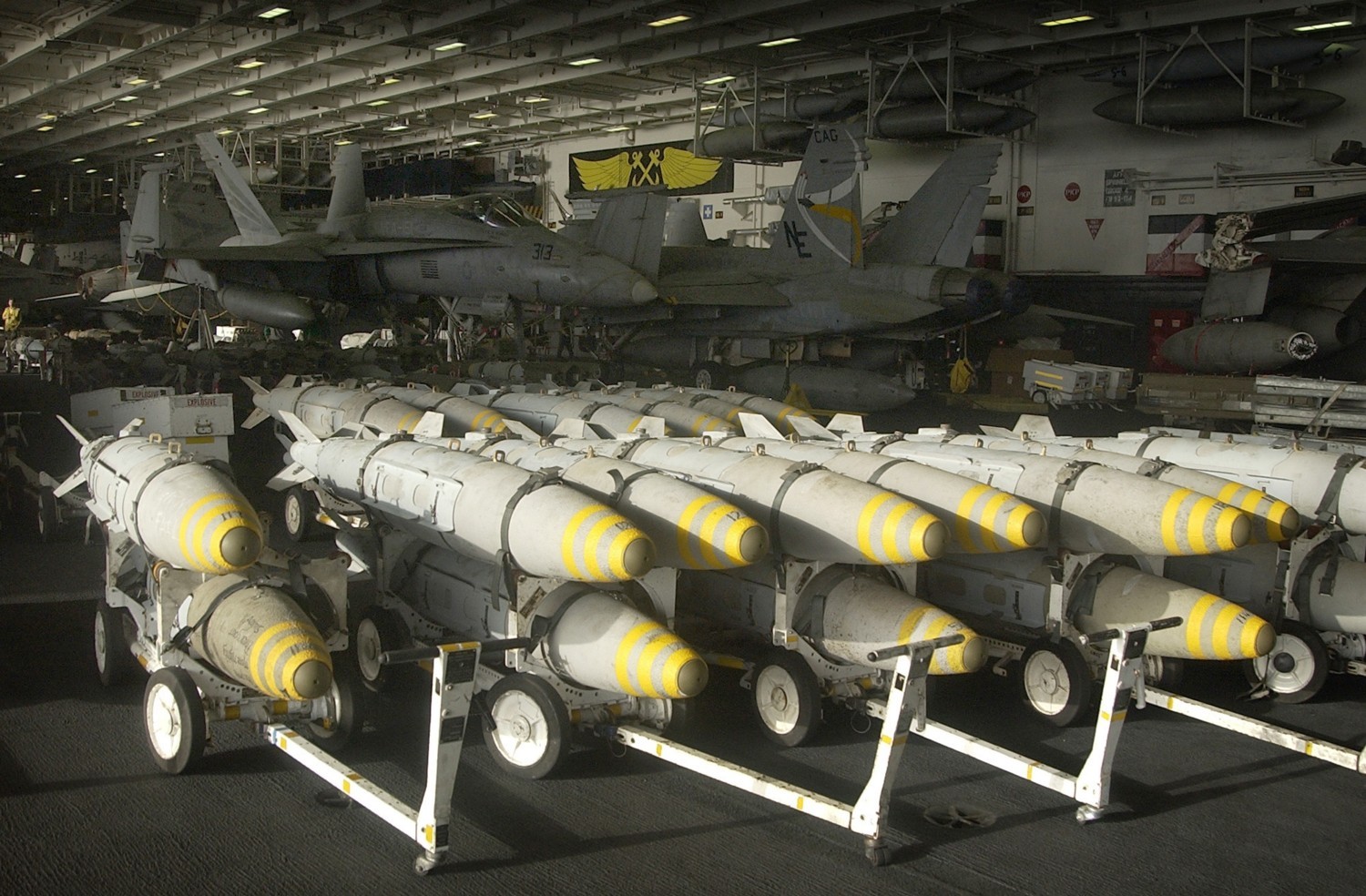 with CVW-2 embarked - Arabian Gulf - March 2003 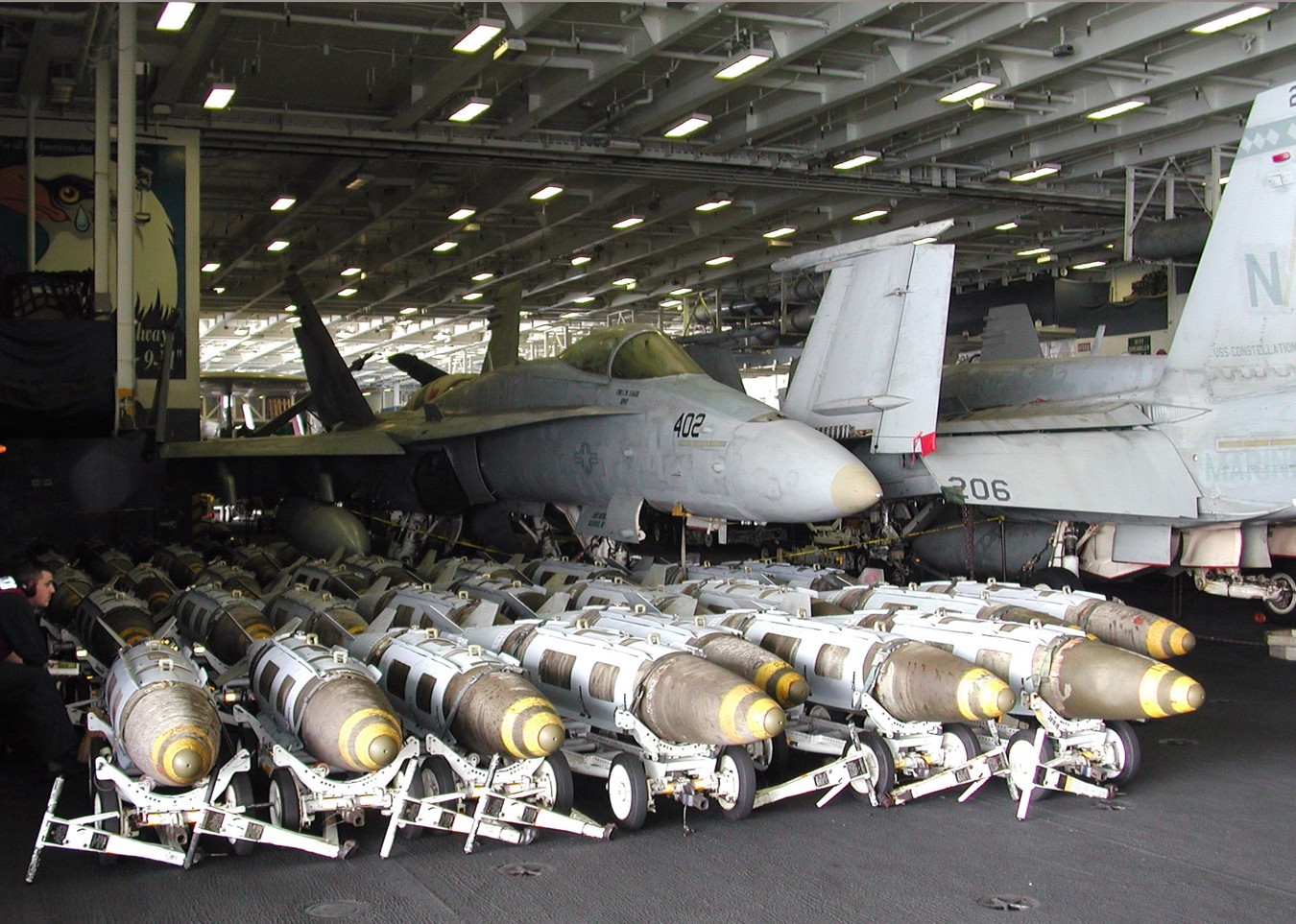 with CVW-2 embarked - Arabian Gulf - March 2003 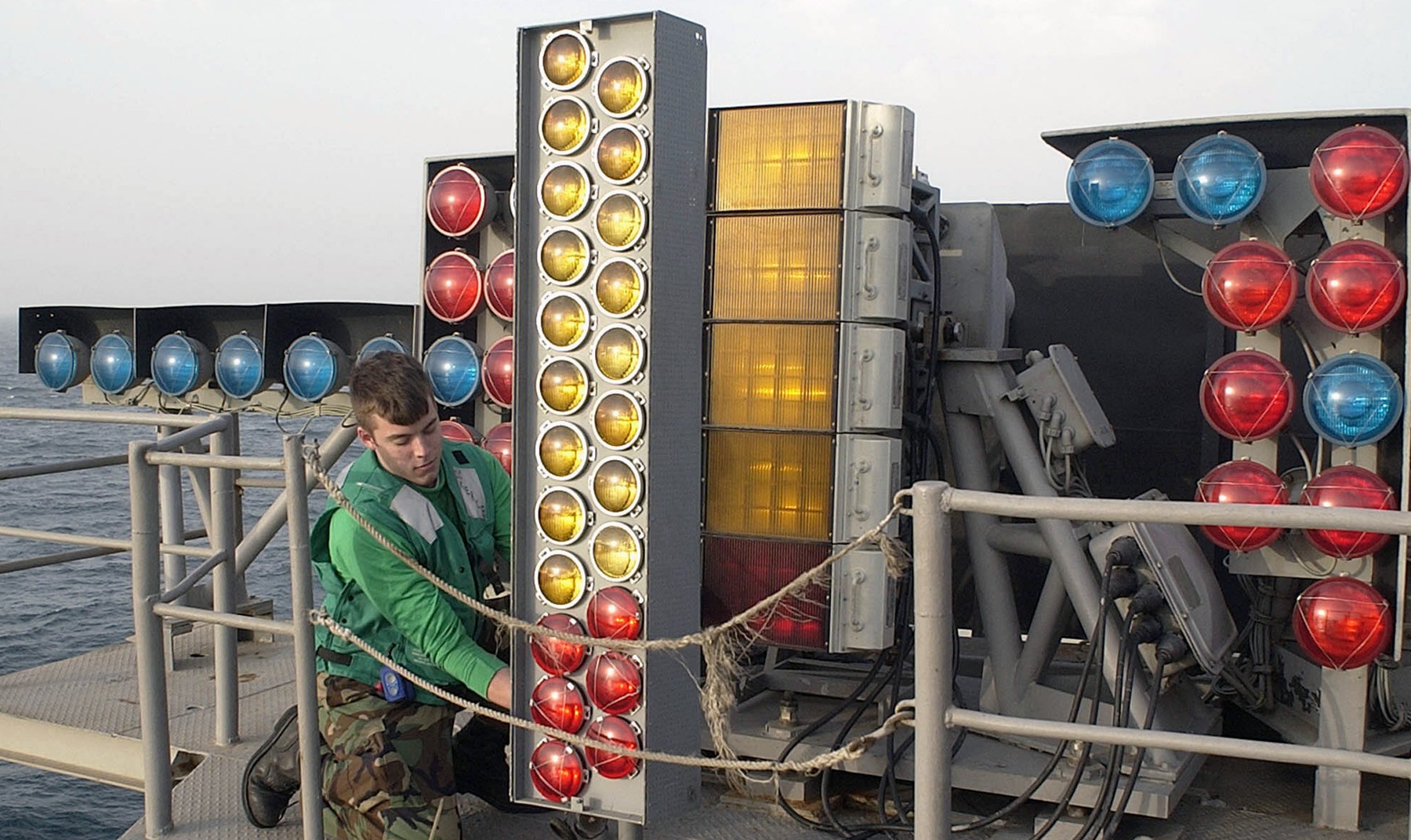 Fresnel lens optical landing system (OLS) - March 2003 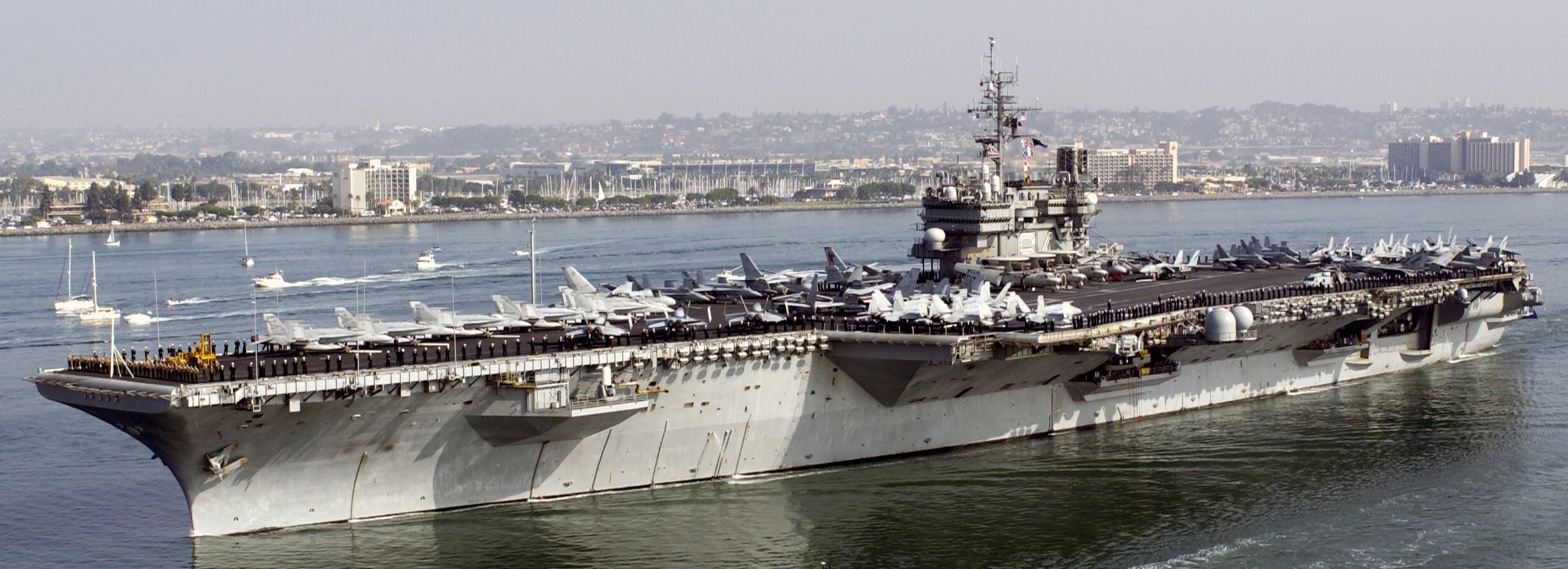 with CVW-2 embarked - departing NAS North Island, California - November 2, 2002 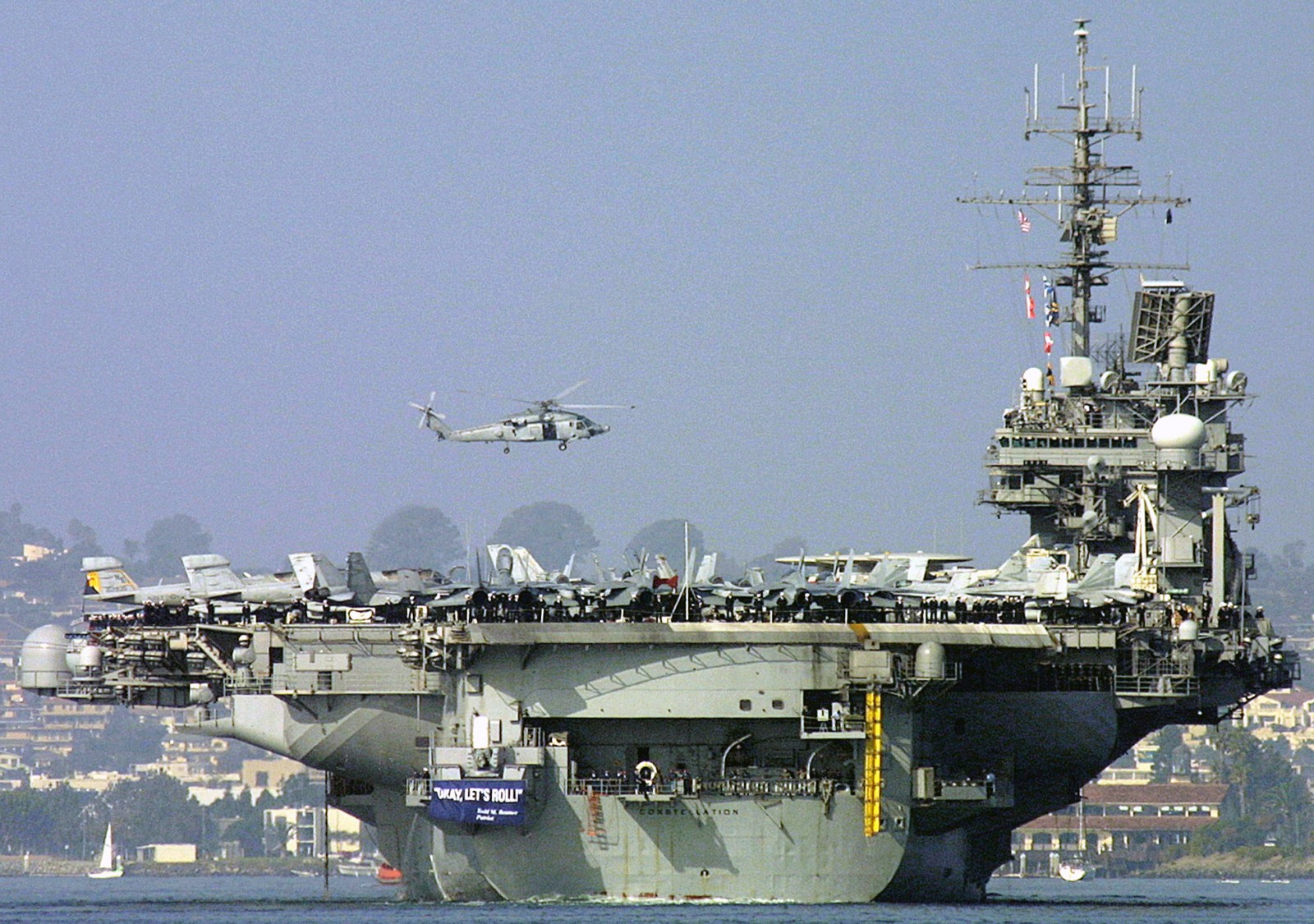 with CVW-2 embarked - departing NAS North Island, California - November 2, 2002 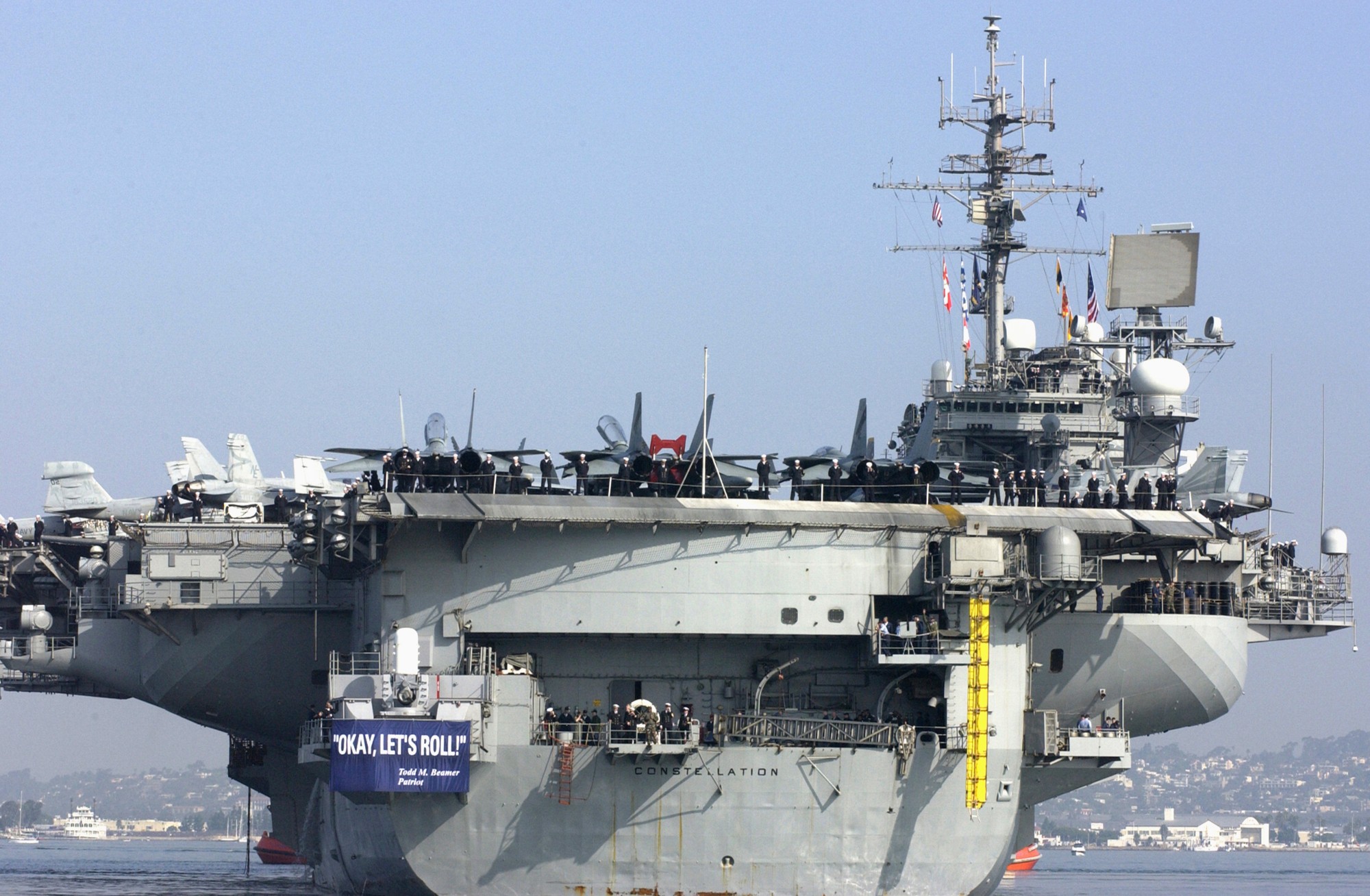 with CVW-2 embarked - departing NAS North Island, California - November 2, 2002 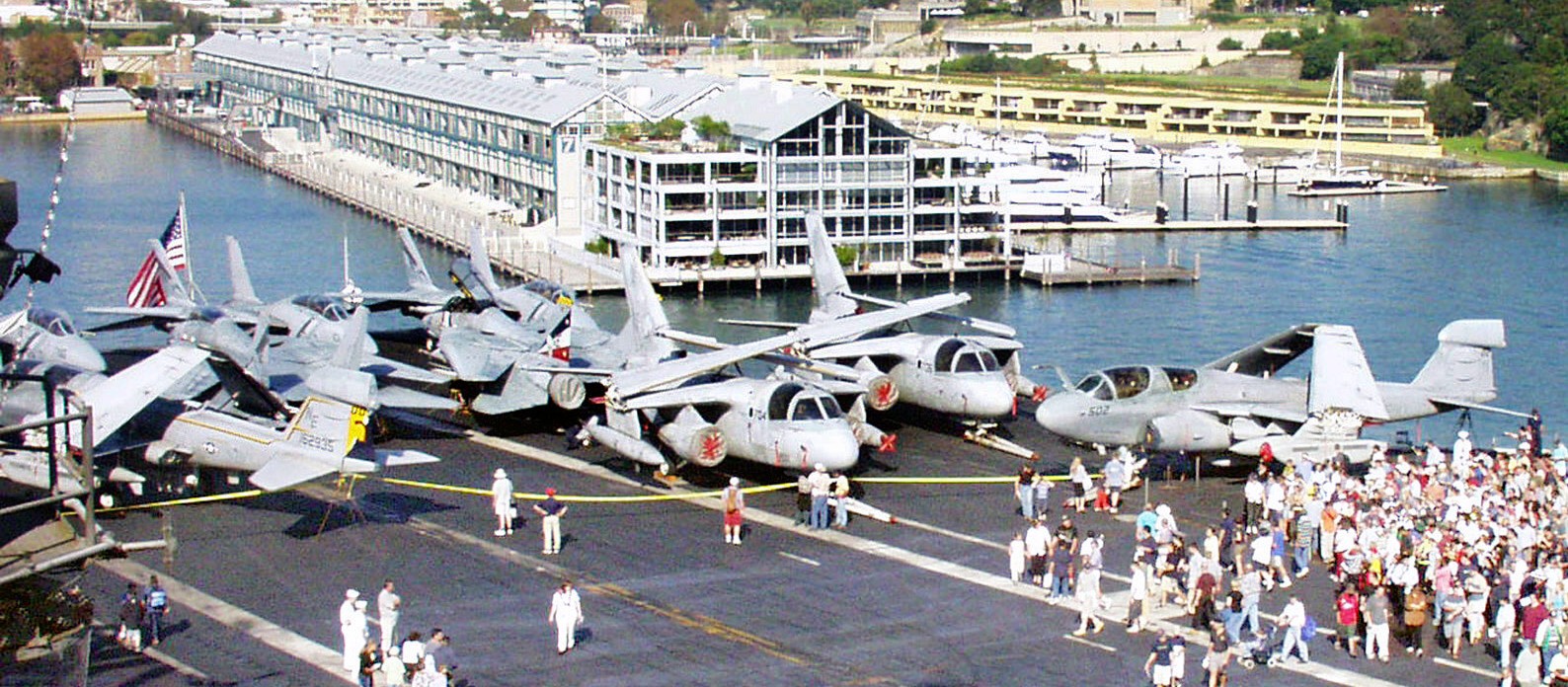 with CVW-2 embarked - Sydney, Australia - April 2001 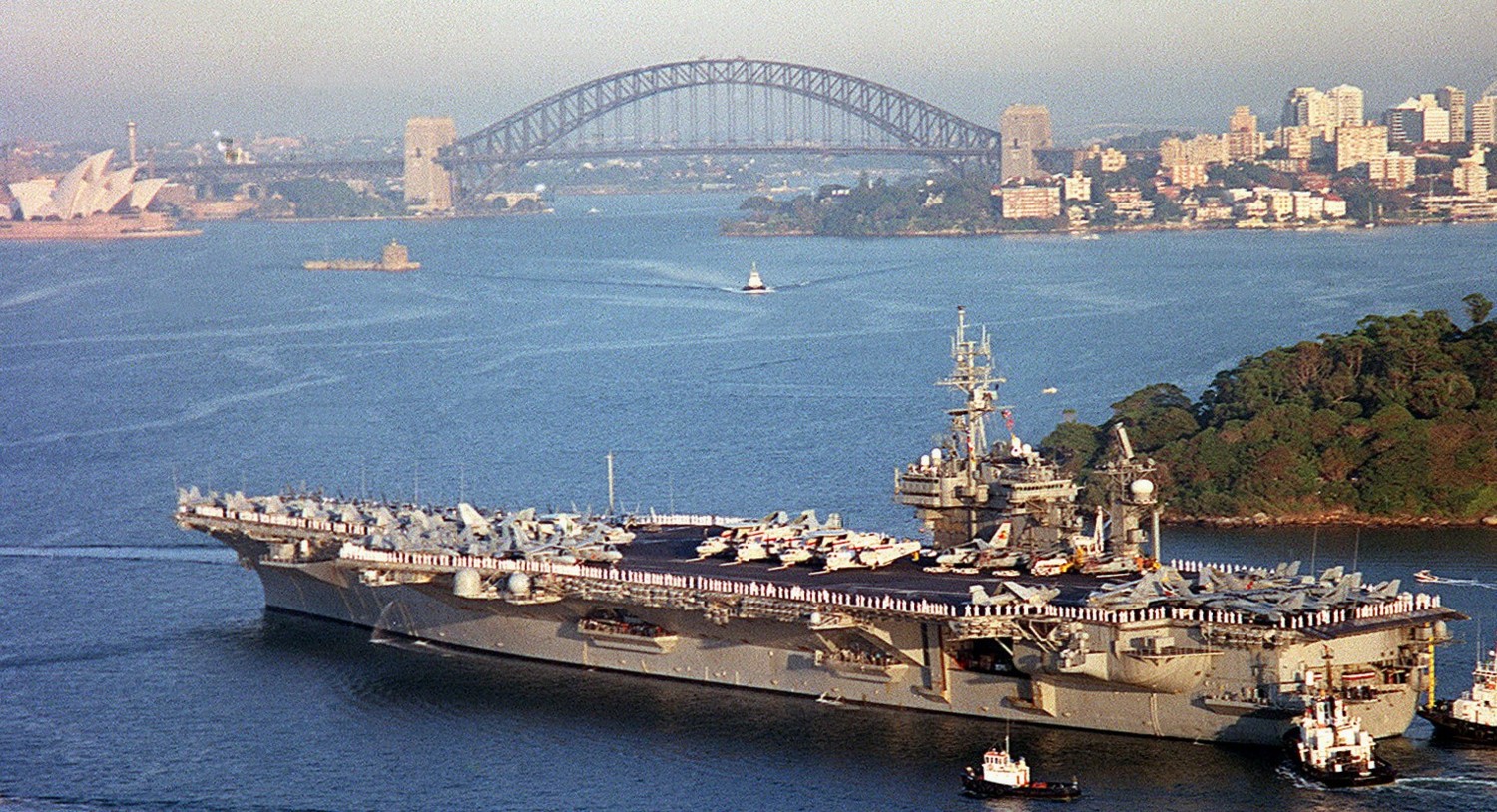 with CVW-2 embarked - Sydney, Australia - April 2001 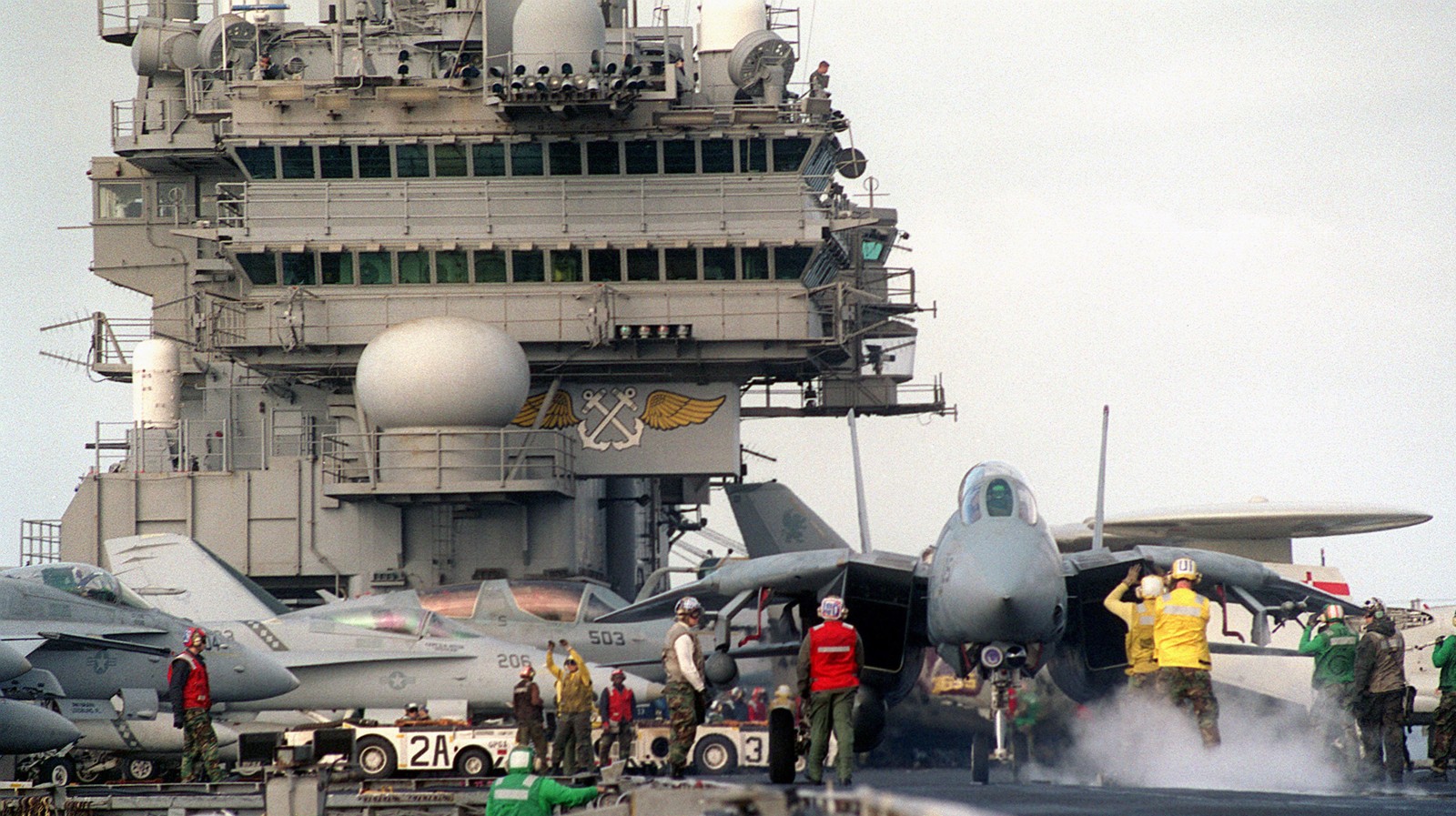 with CVW-2 embarked - off Australia - April 2001 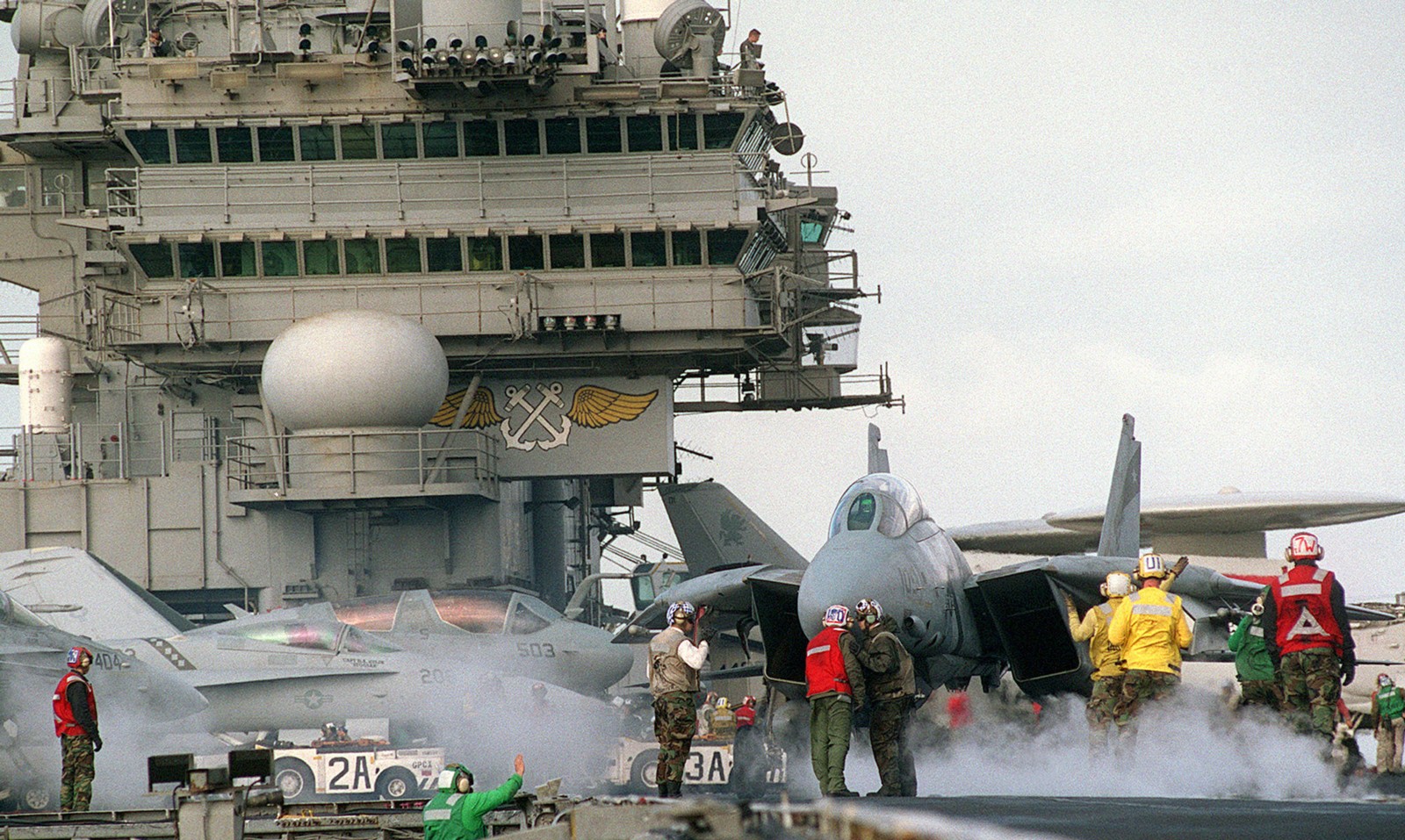 with CVW-2 embarked - off Australia - April 2001 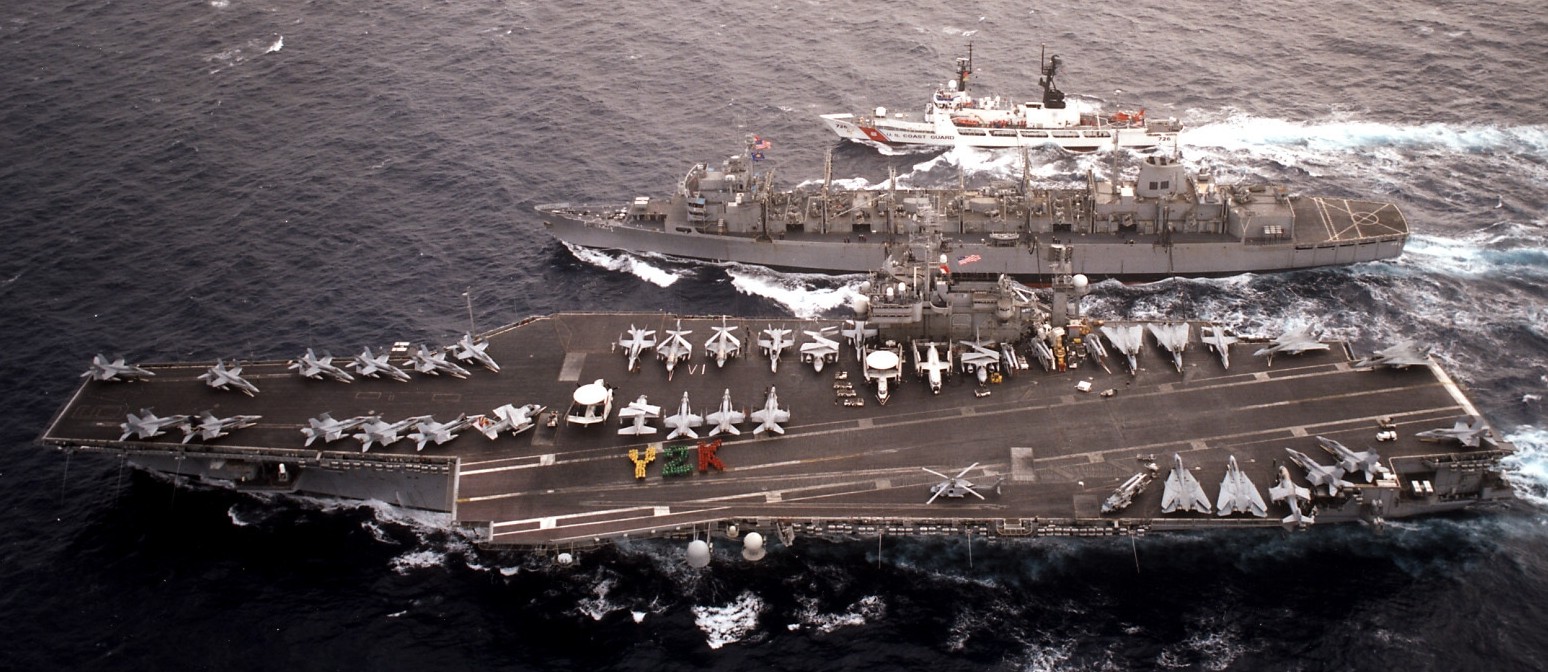 with CVW-2 embarked - Persian Gulf - July 1999 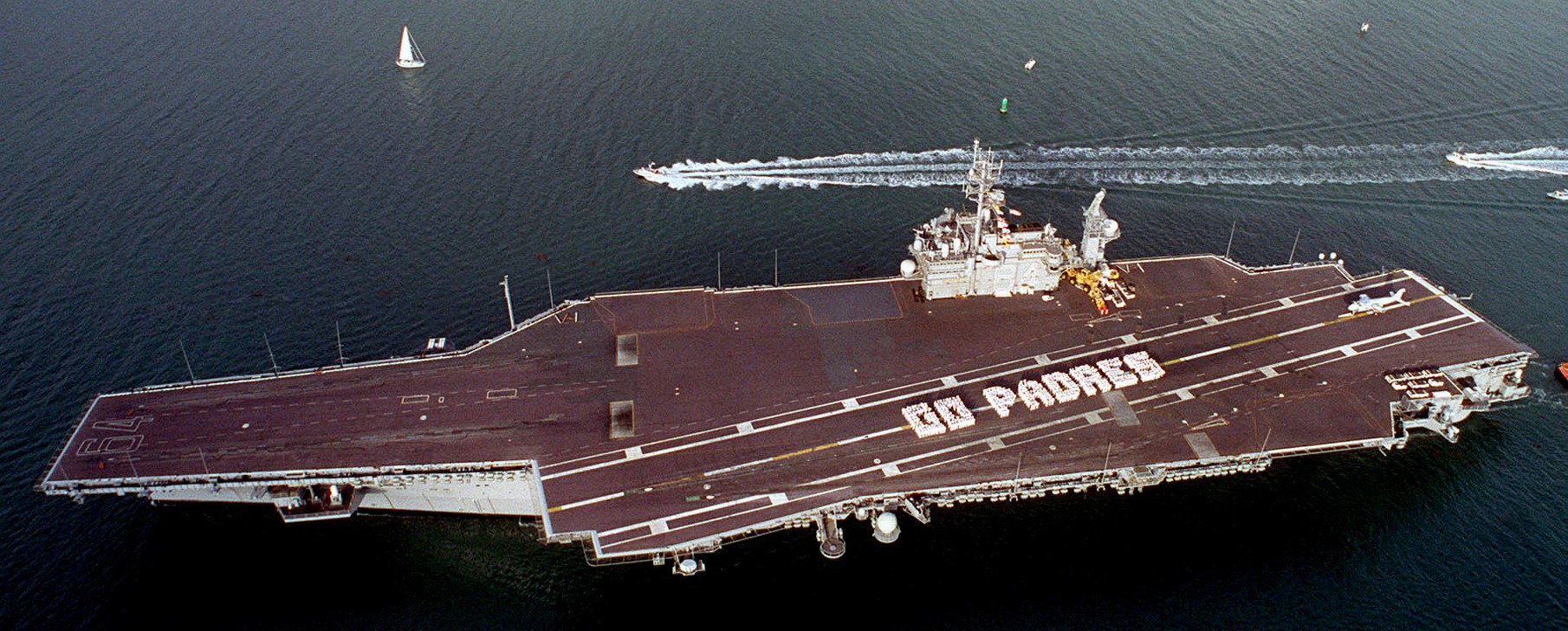 Point Loma, California - October 1998 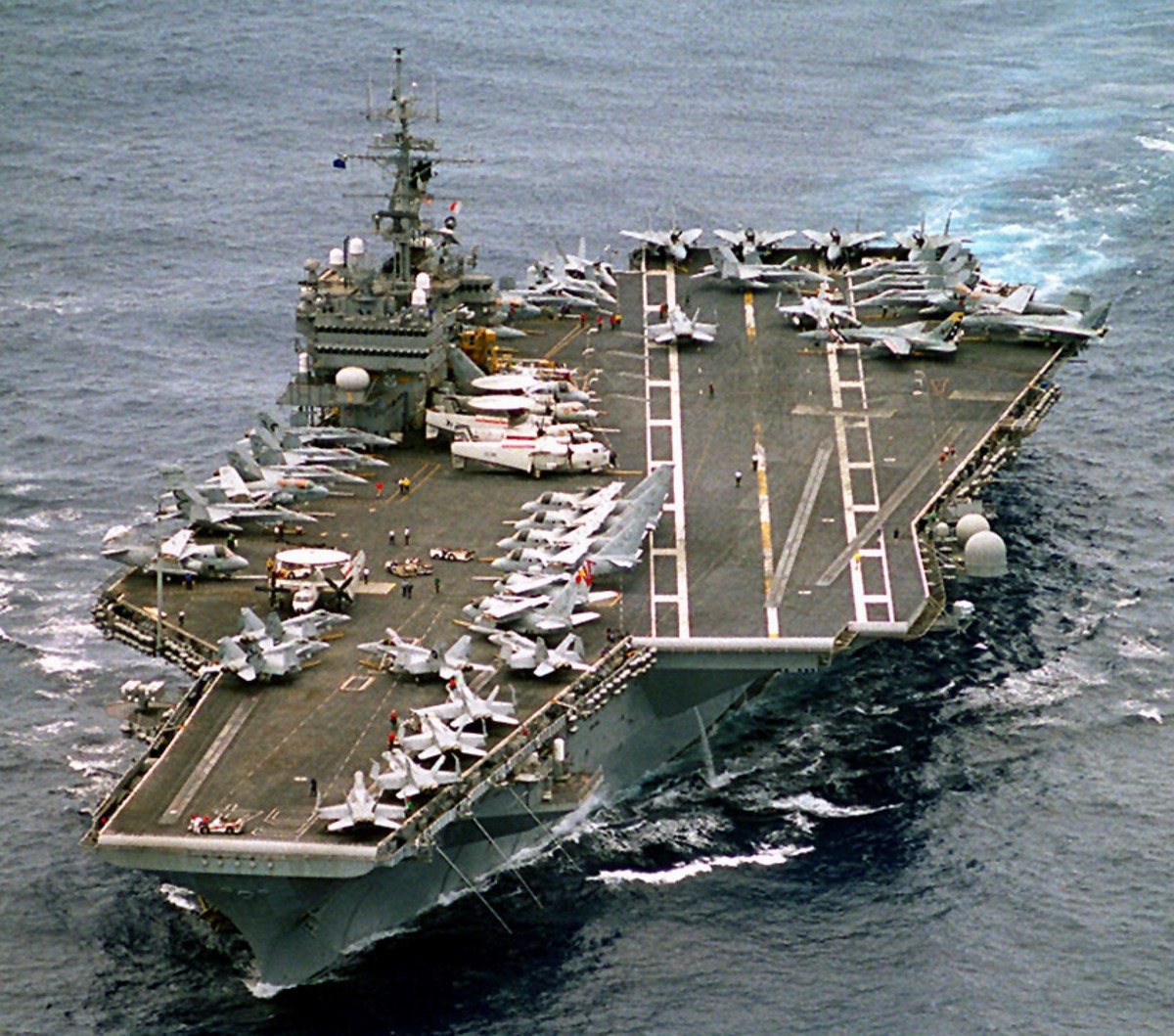 with CVW-2 embarked - April 1997 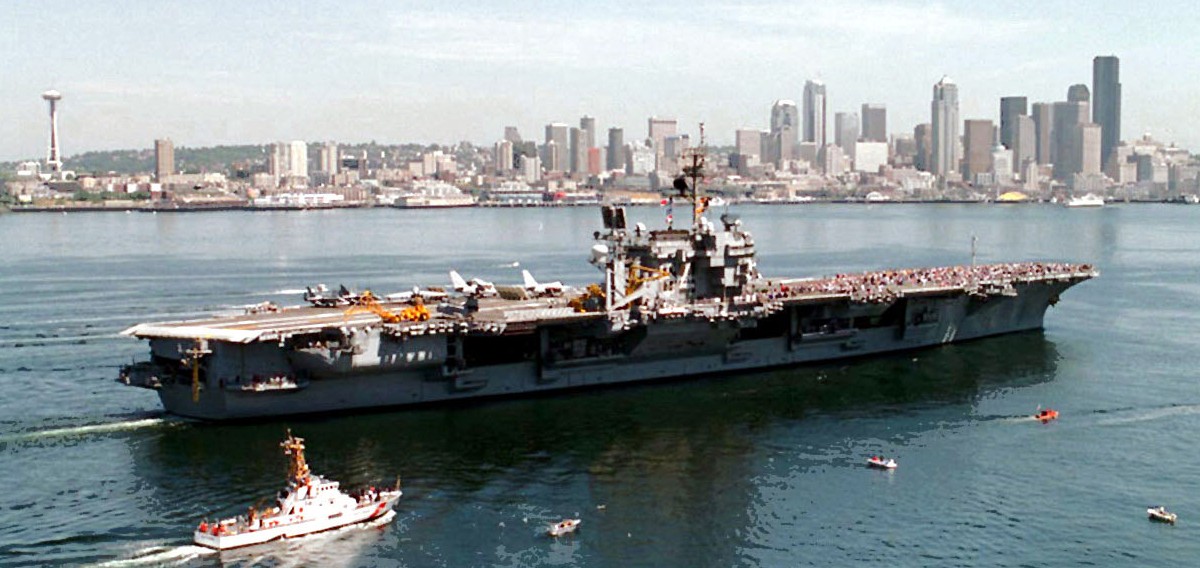 Seattle, Washington - July 1996 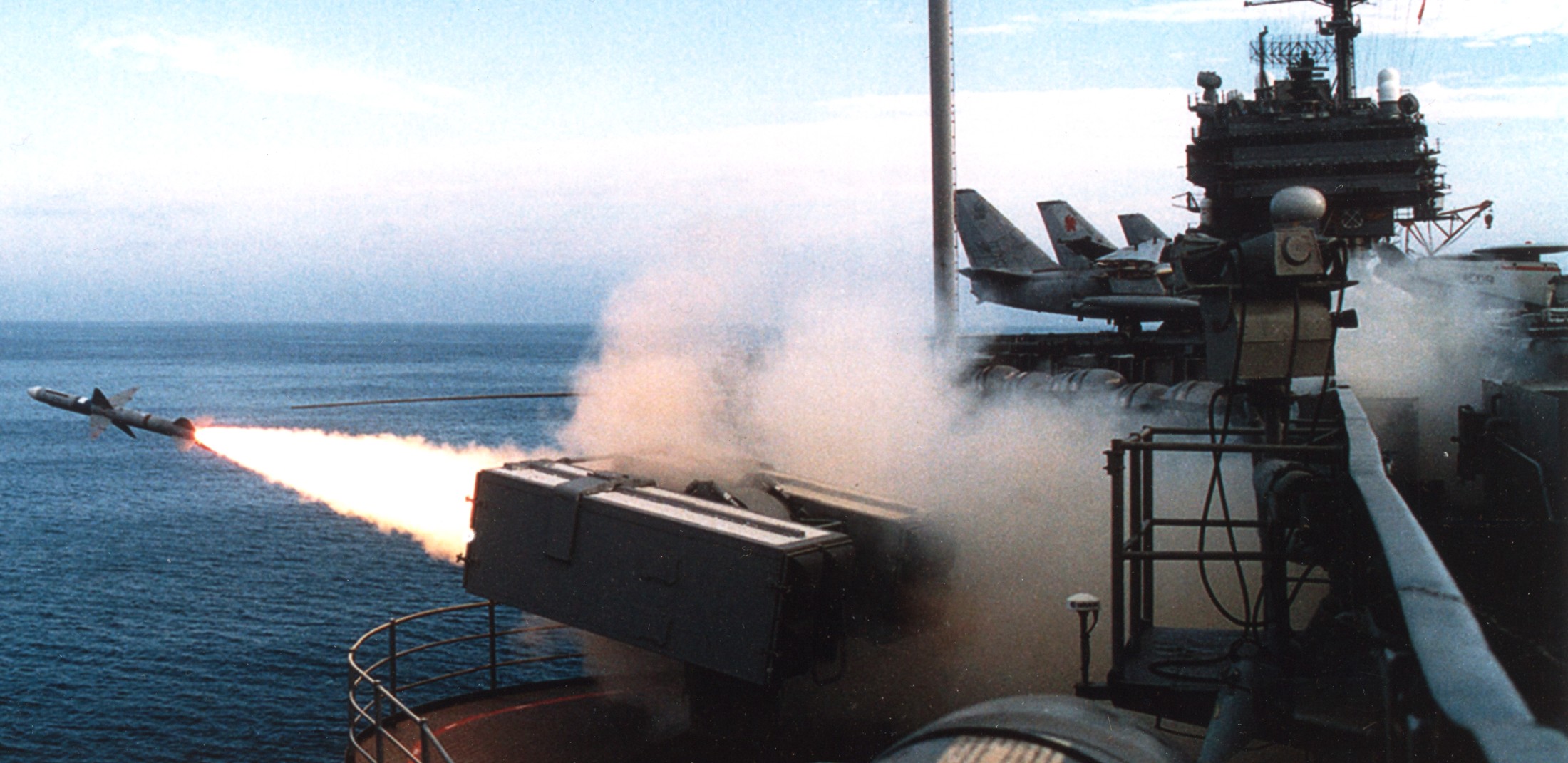 RIM-7 Sea Sparrow SAM missile launch - July 1996  returning to NAS North Island, California after SLEP - July 1993 April 1990 - March 1993: Service Lifetime Extension Program (SLEP) at Philadelphia Naval Shipyard  departing San Diego, California - February 1990 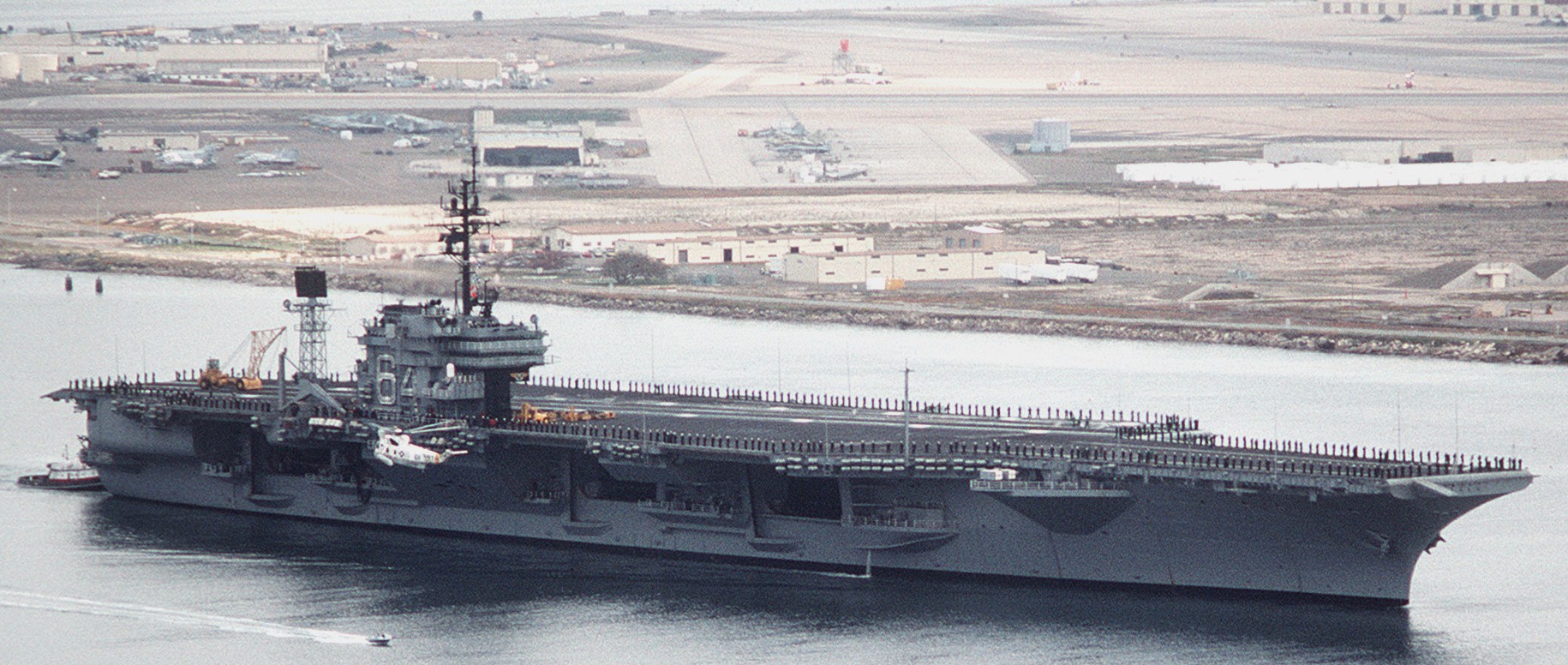 departing San Diego, California - February 1990 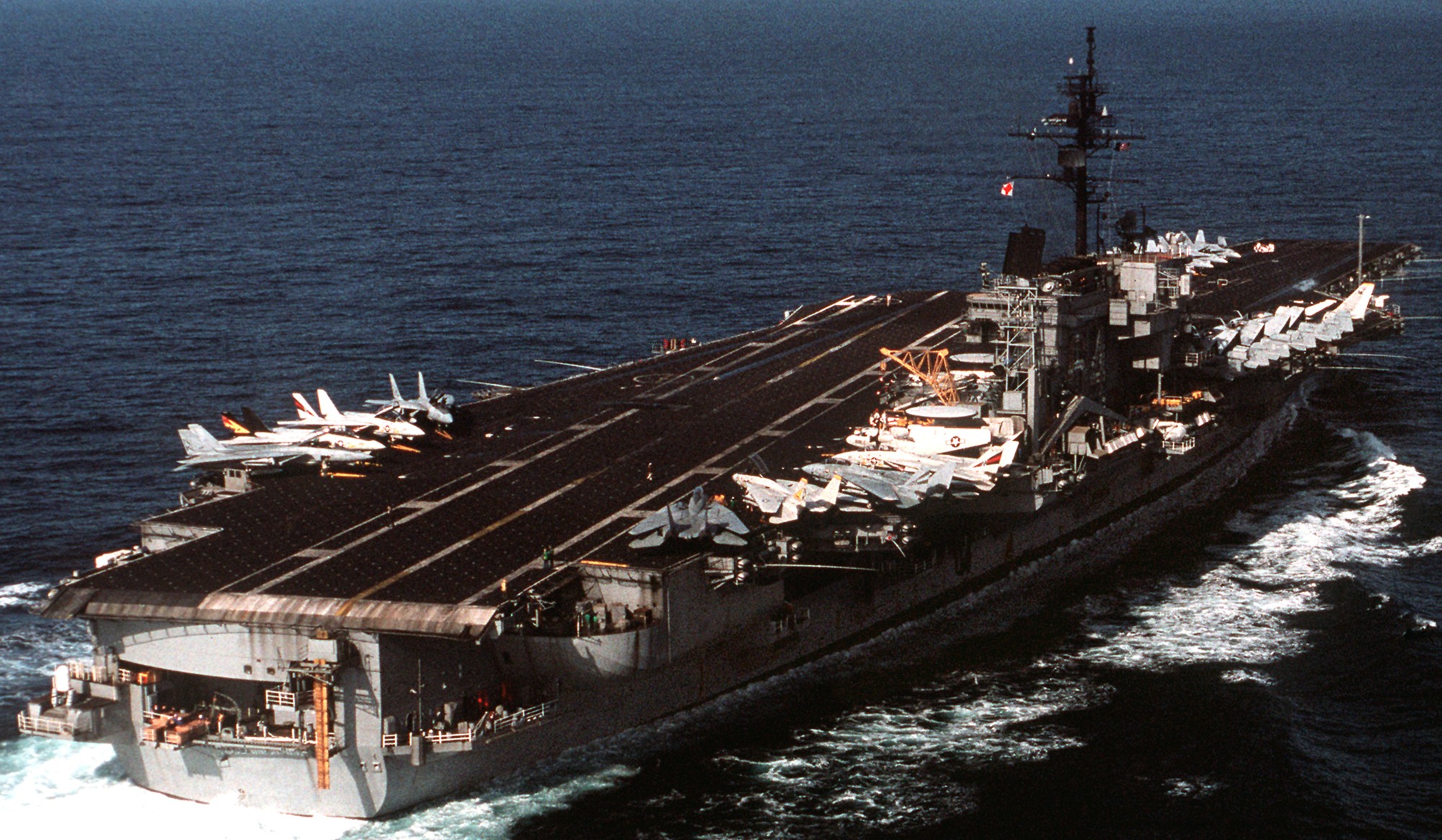 with CVW-14 embarked - exercise PACEX 89 - North Pacific Ocean - September 1989 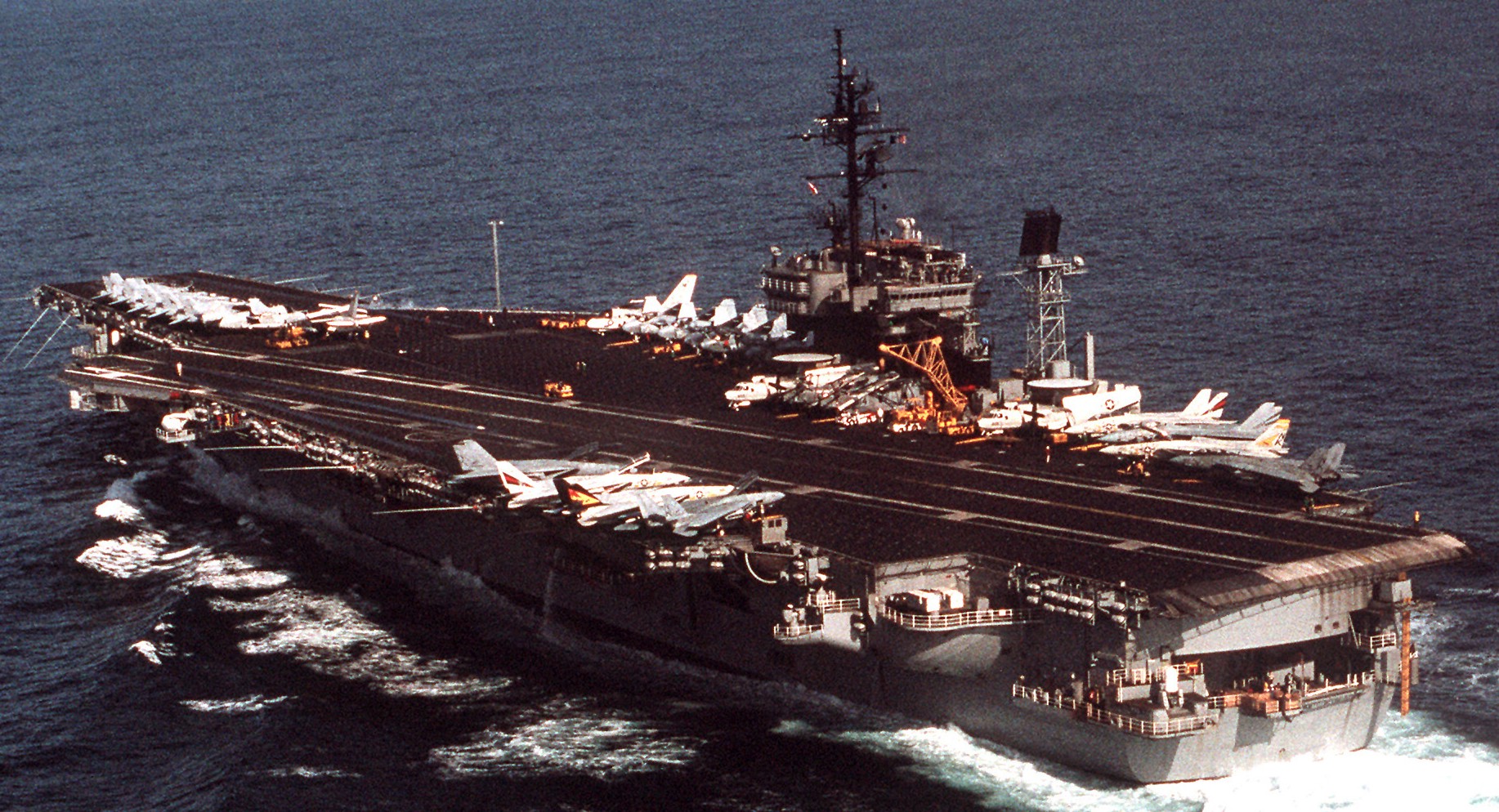 with CVW-14 embarked - exercise PACEX 89 - North Pacific Ocean - September 1989 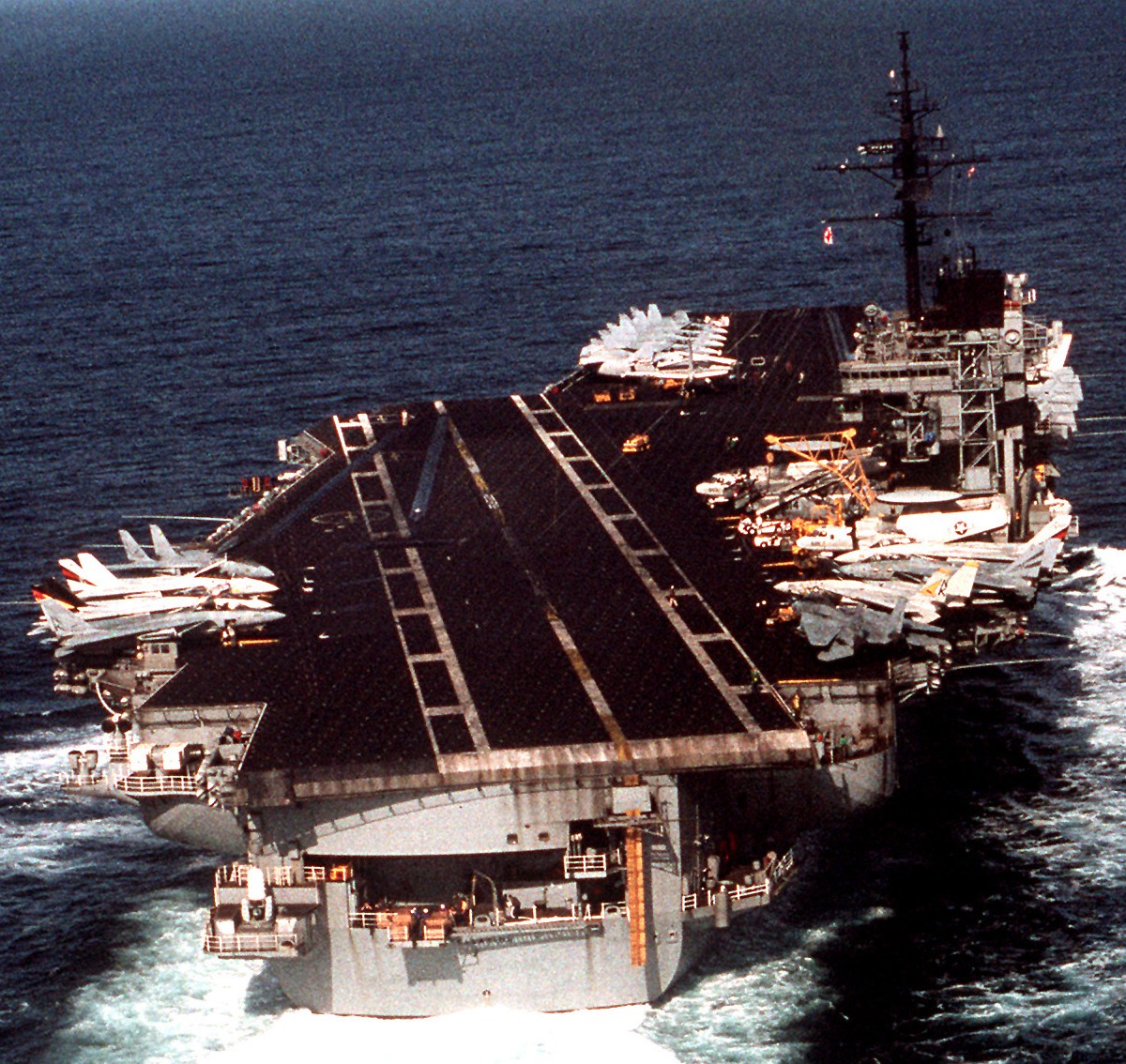 with CVW-14 embarked - exercise PACEX 89 - North Pacific Ocean - September 1989 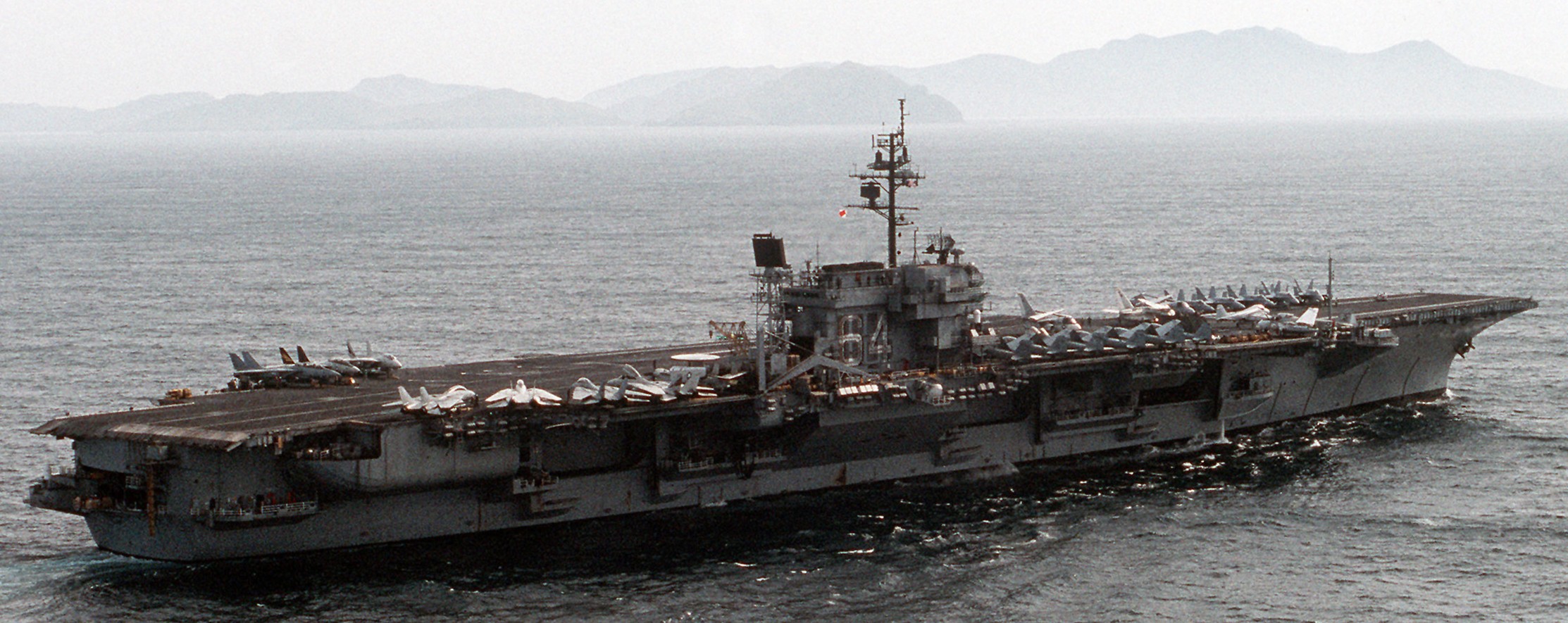 with CVW-14 embarked - exercise PACEX 89 - North Pacific Ocean - September 1989  with CVW-14 embarked - exercise PACEX 89 - North Pacific Ocean - September 1989 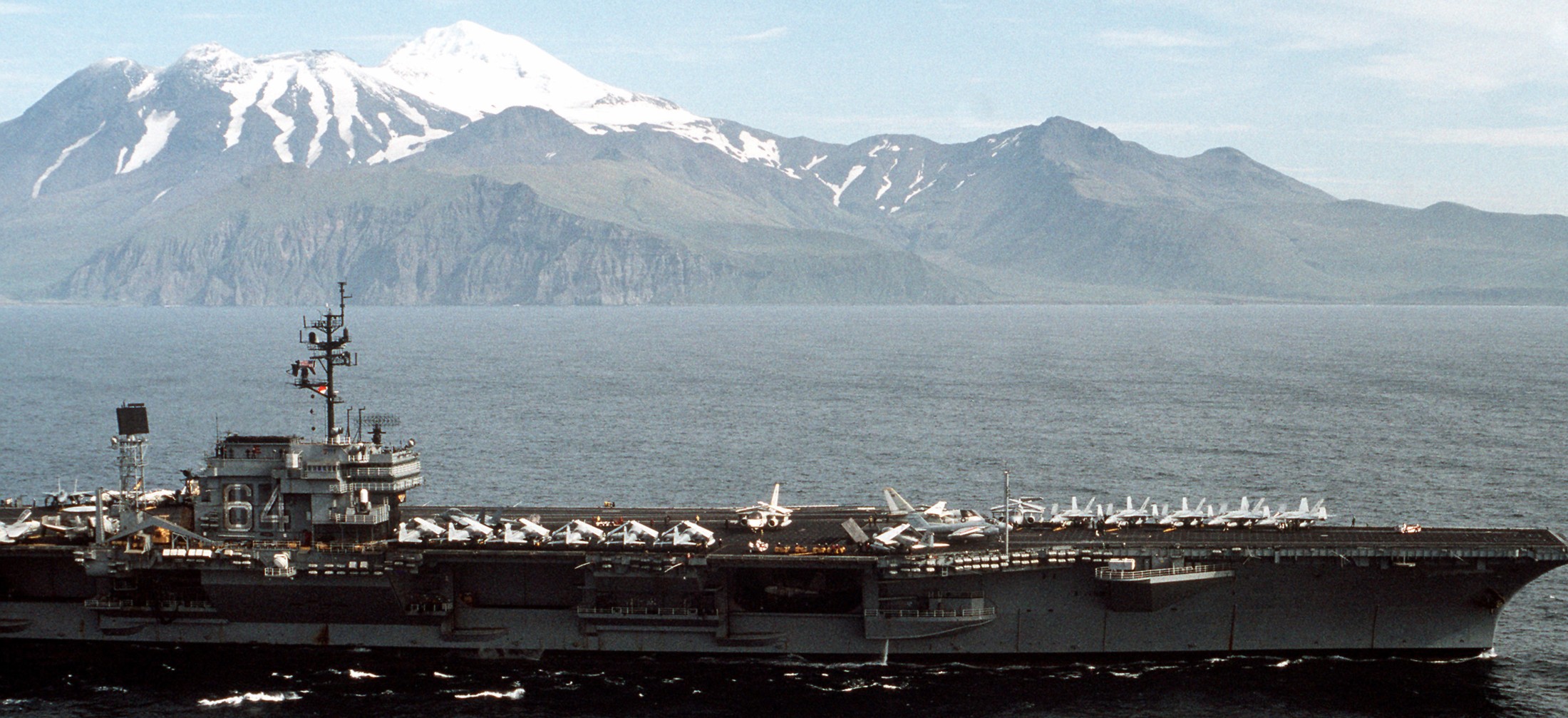 with CVW-14 embarked - exercise PACEX 89 - North Pacific Ocean - September 1989 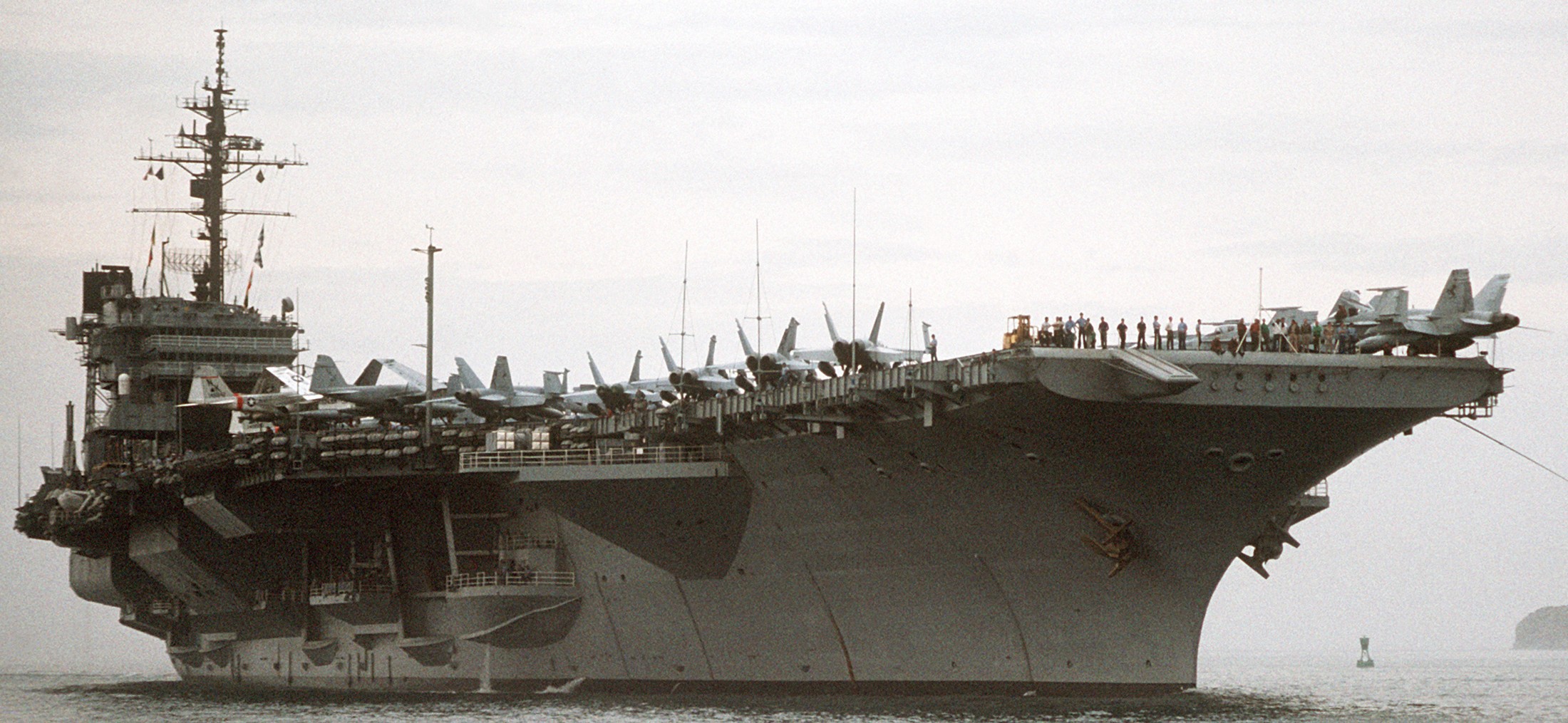 with CVW-14 embarked - exercise PACEX 89 - North Pacific Ocean - September 1989 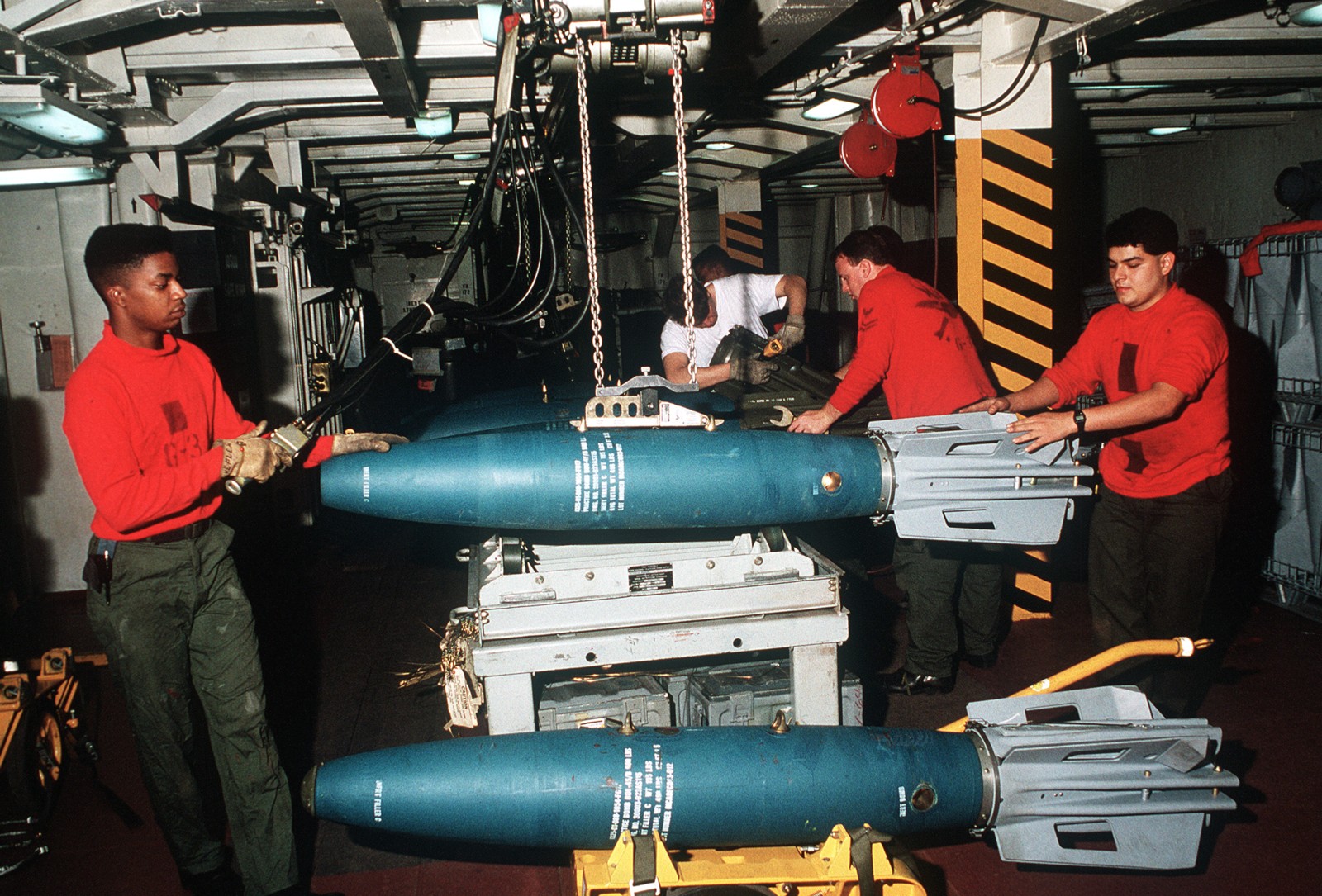 weapon assembly room - exercise PACEX 89 - North Pacific Ocean - September 1989 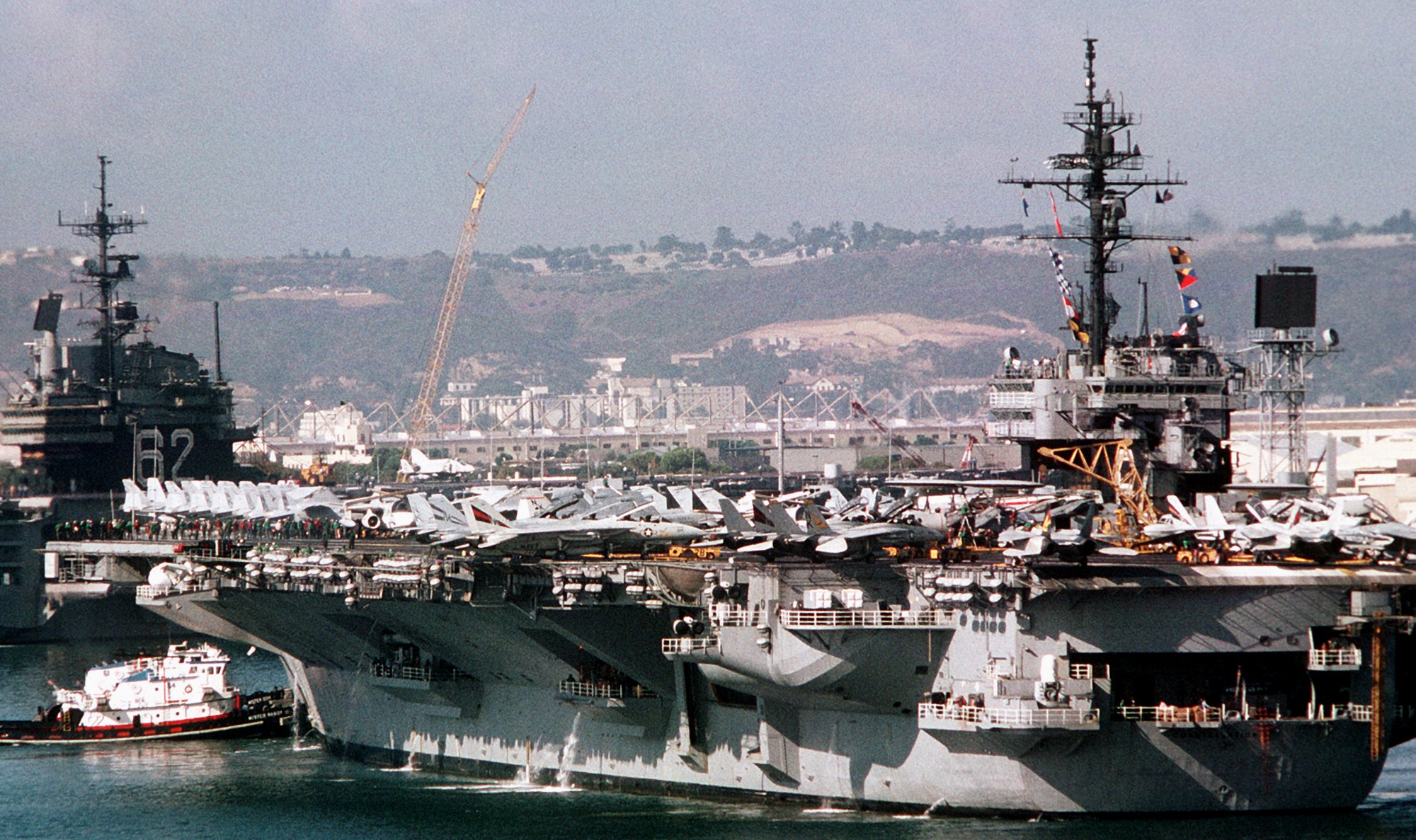 with CVW-14 embarked - departing San Diego, California - September 1989 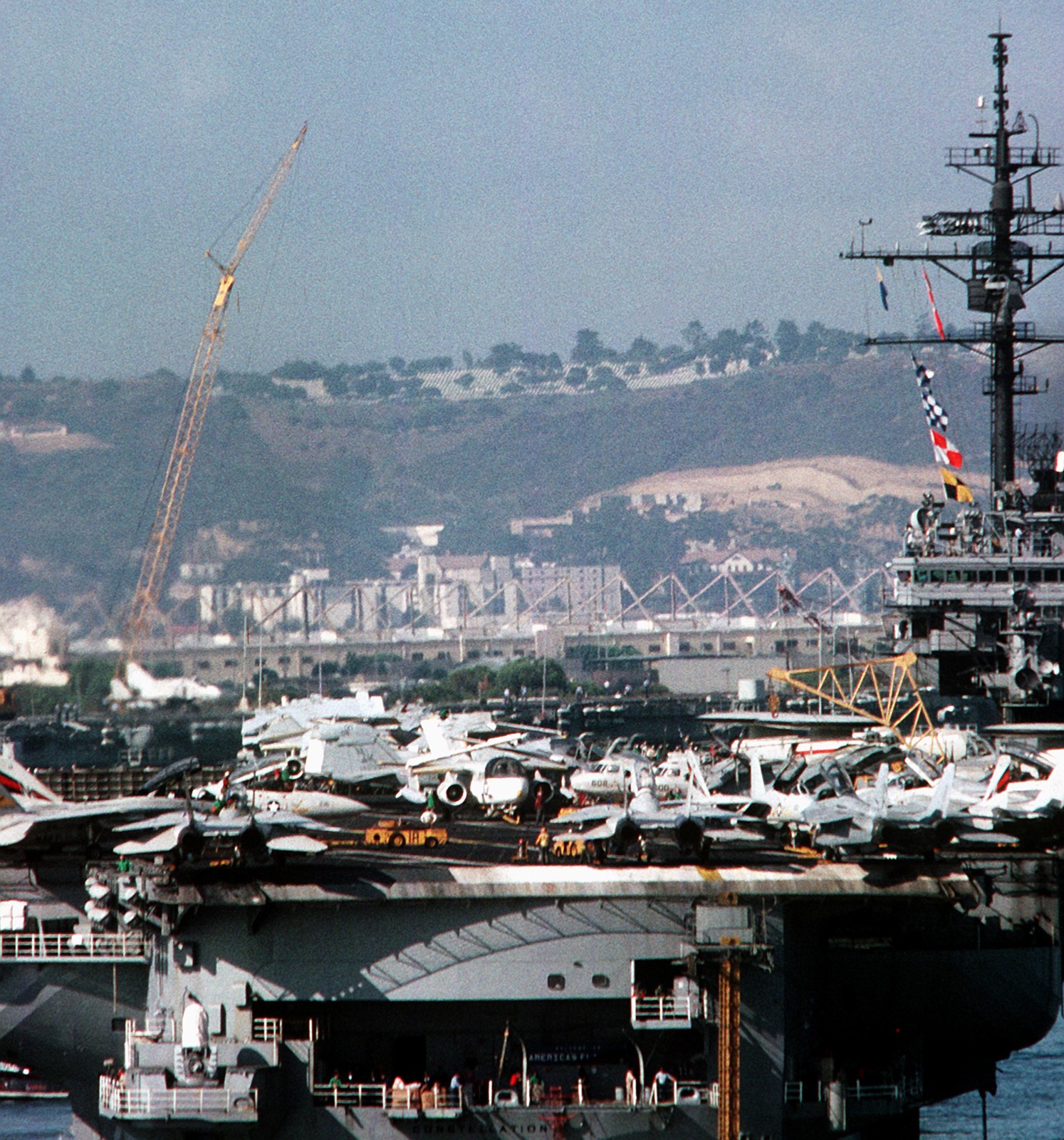 with CVW-14 embarked - departing San Diego, California - September 1989 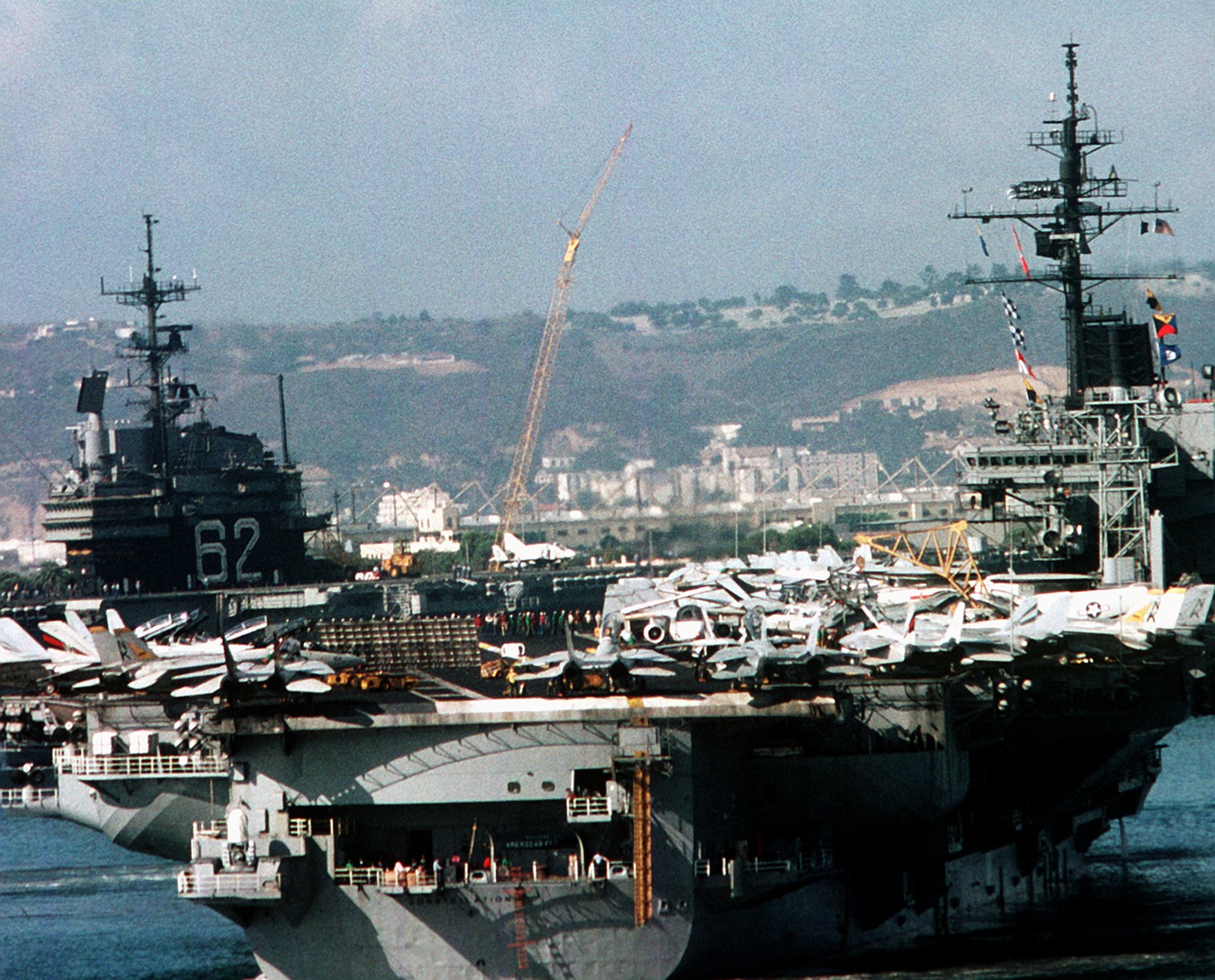 with CVW-14 embarked - departing San Diego, California - September 1989 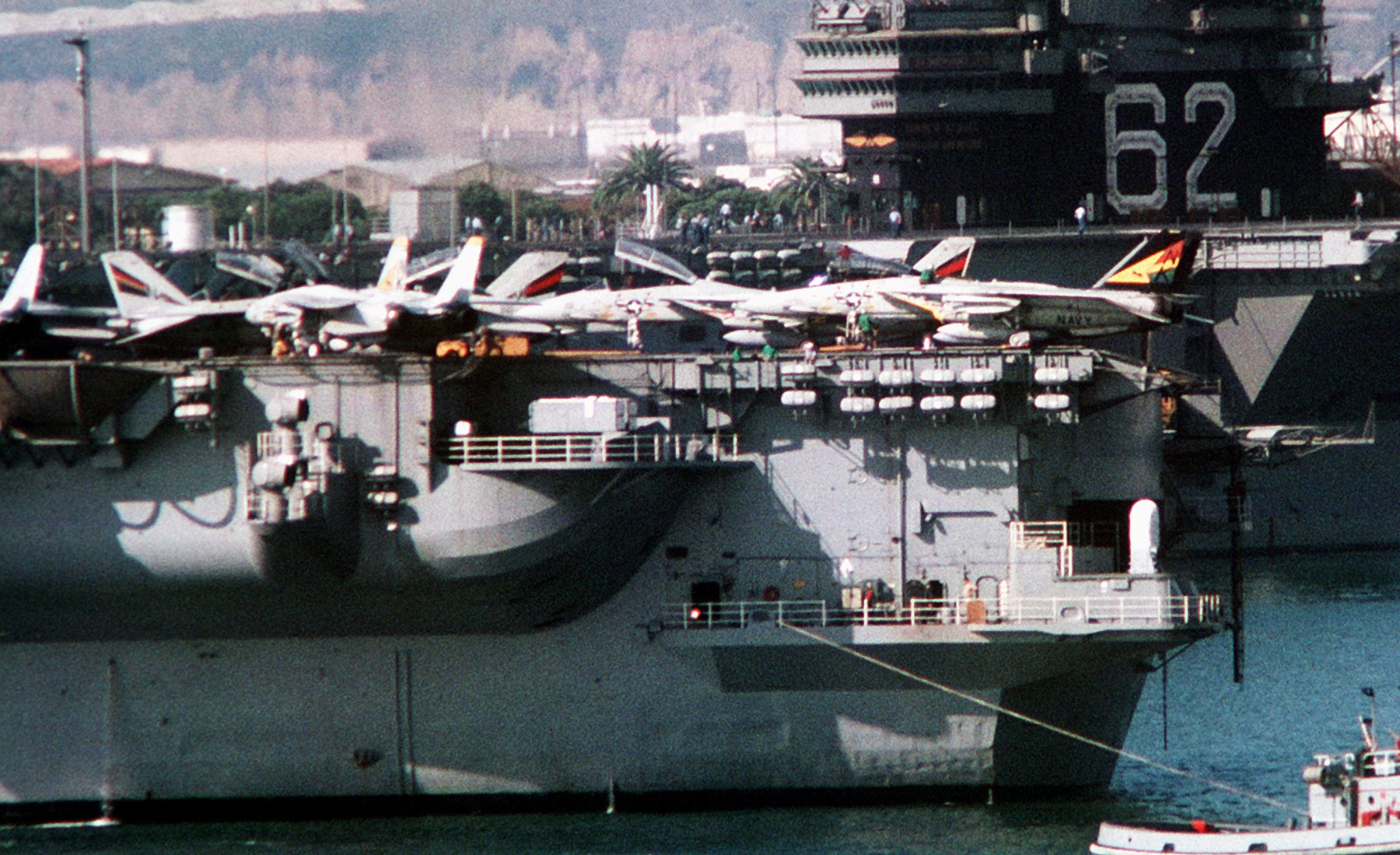 with CVW-14 embarked - departing San Diego, California - September 1989 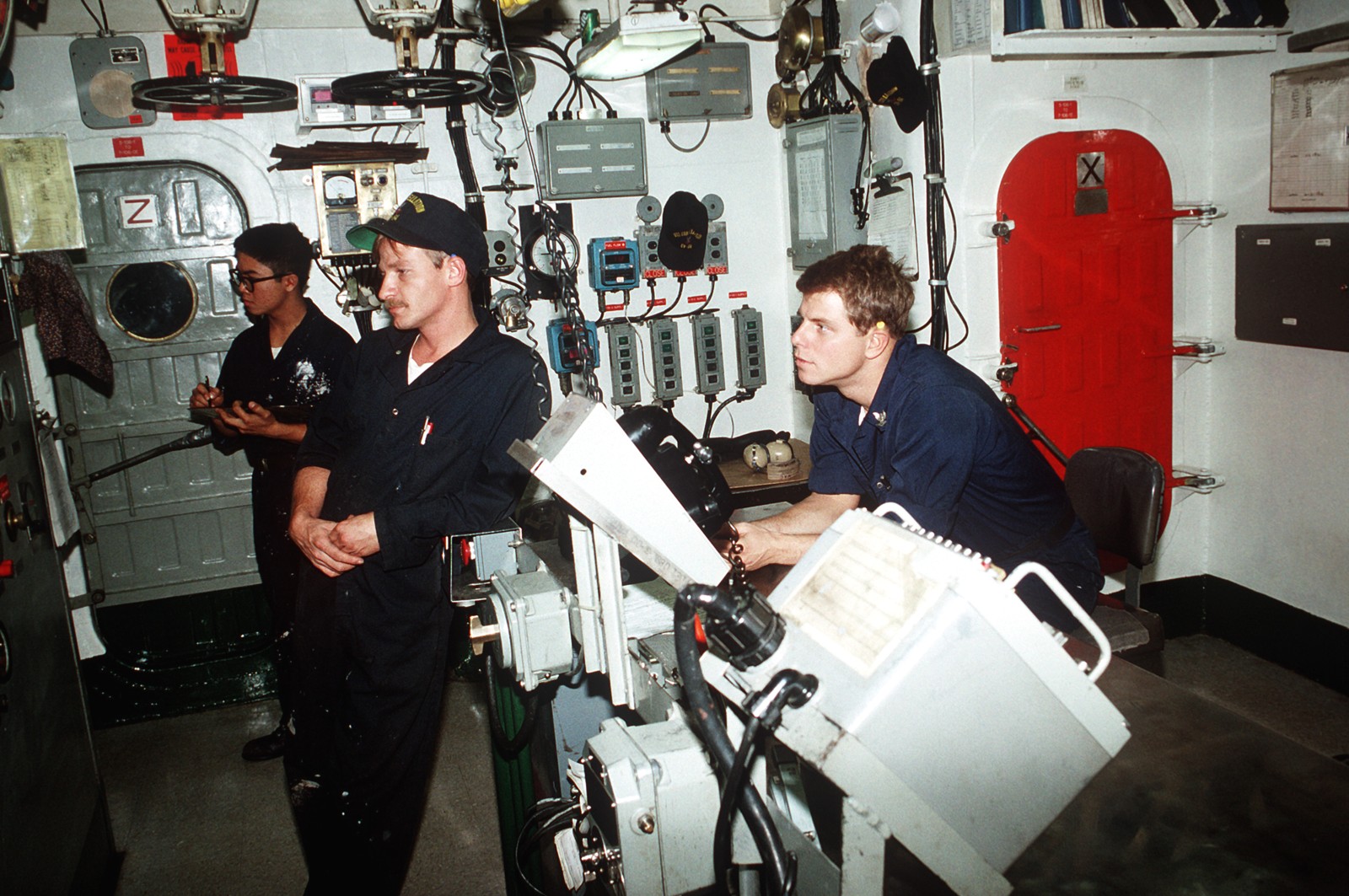 boiler control room - September 1989 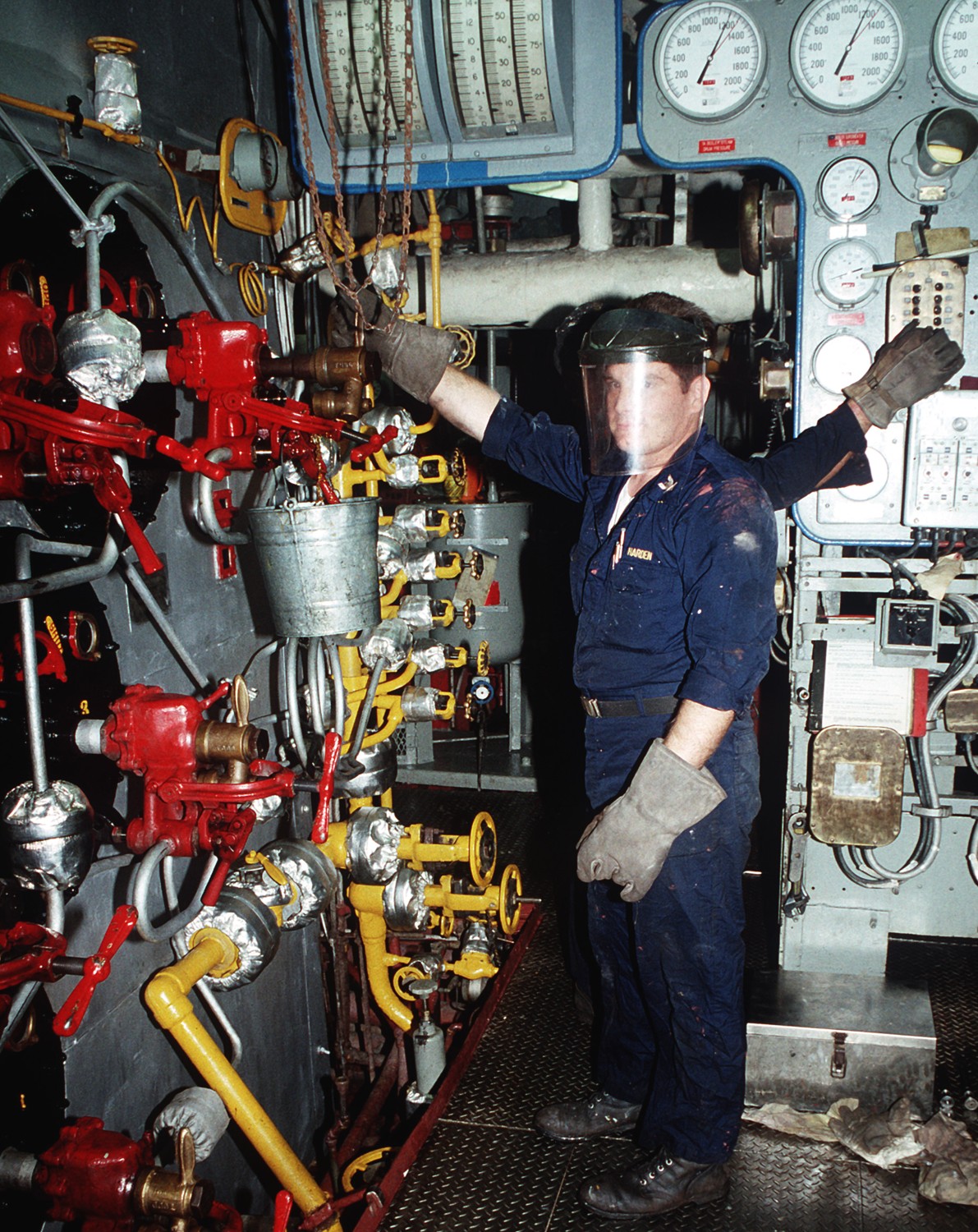 boiler control room - September 1989 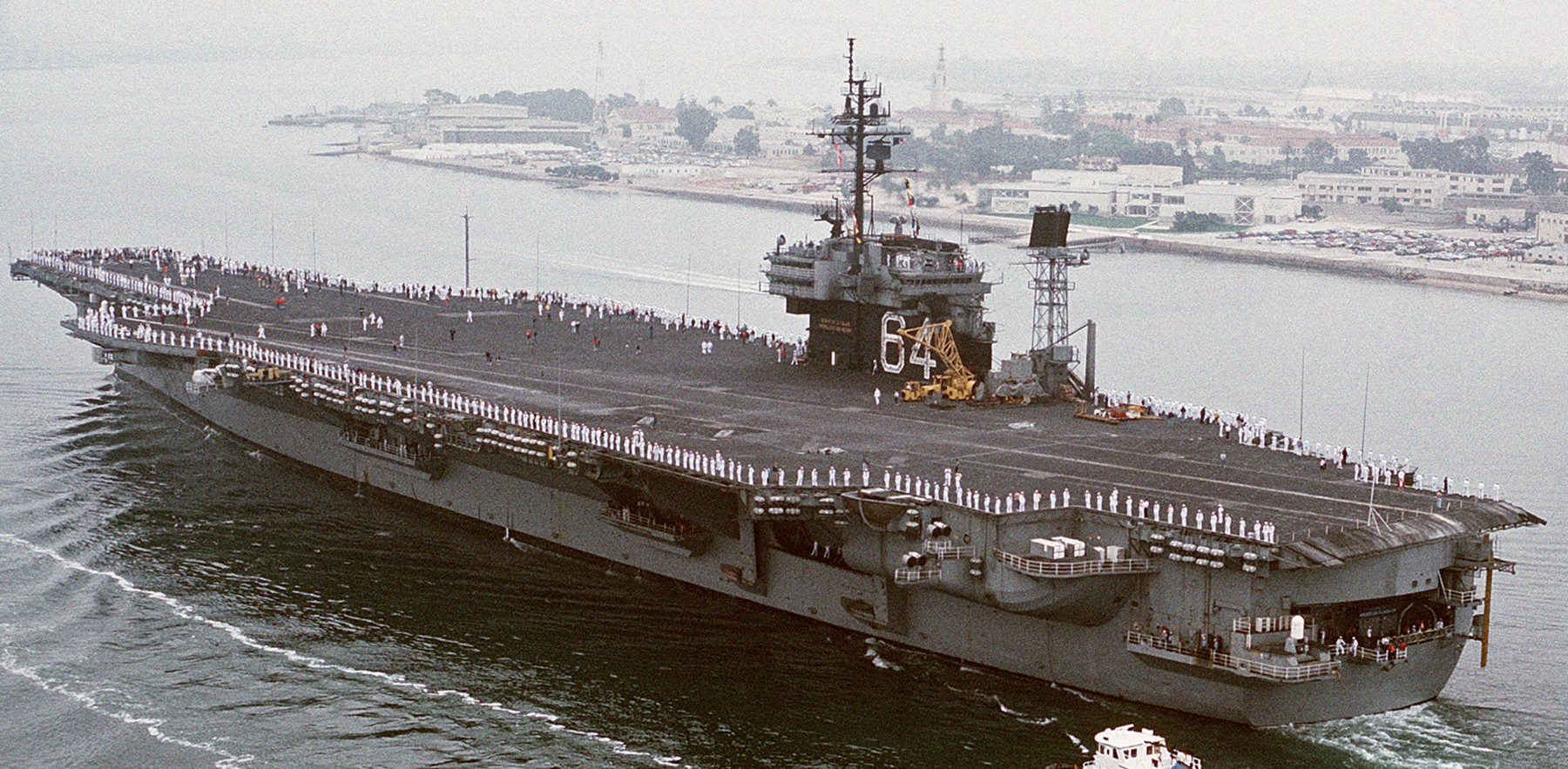 returning to San Diego, California - June 1989 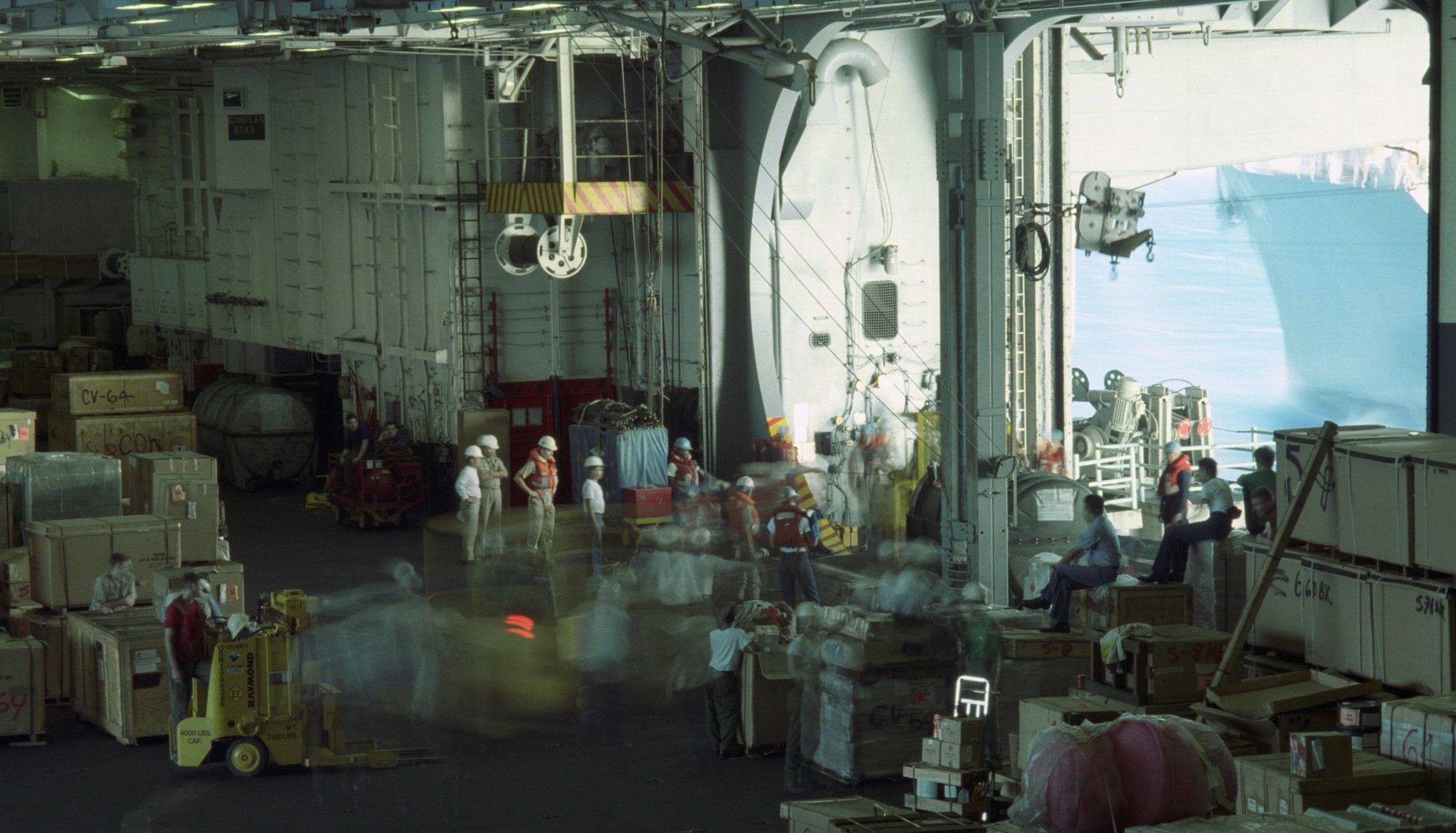 hangar bay during an underway replenishment (UNREP) - March 1989 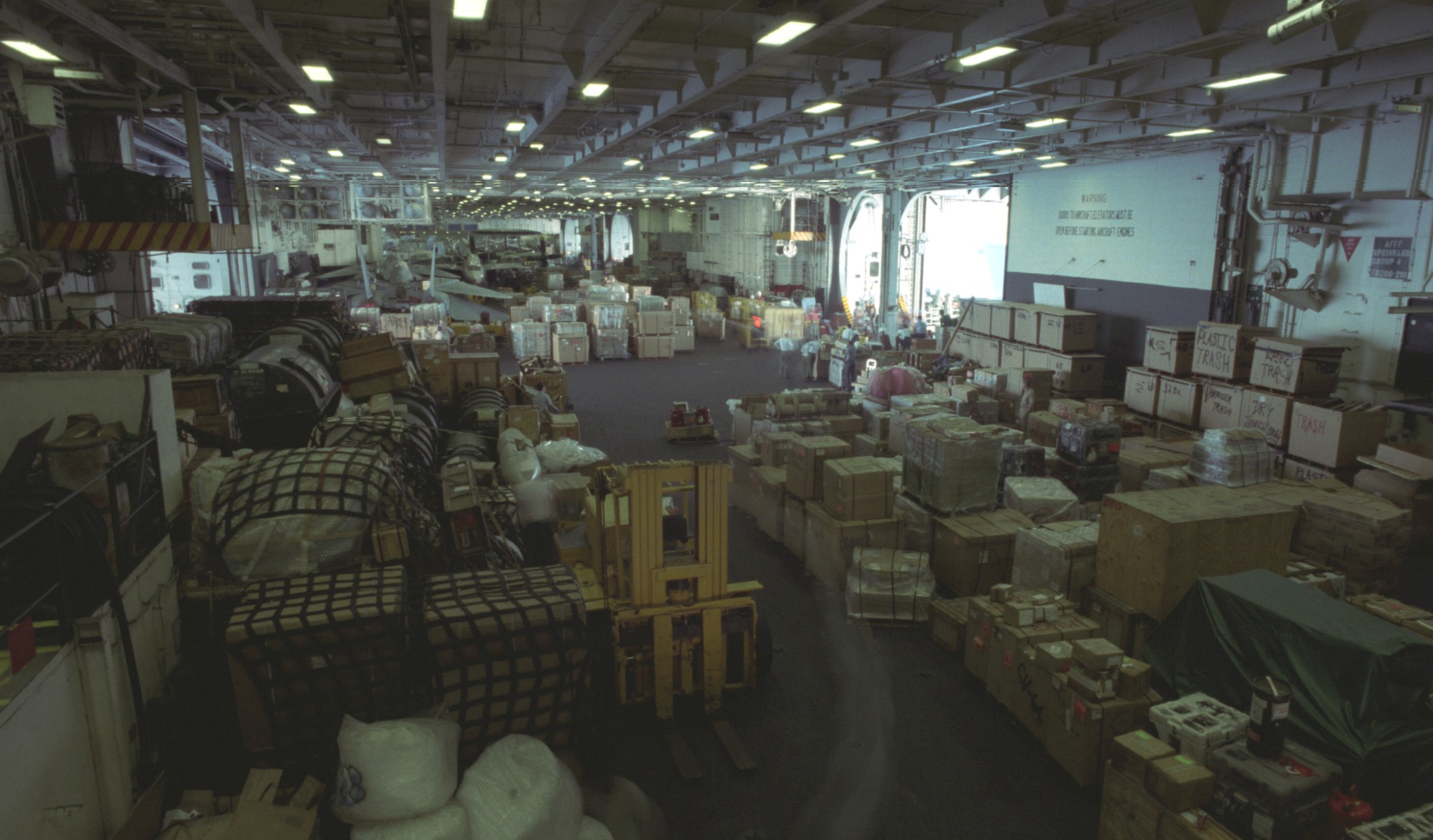 hangar bay during an underway replenishment (UNREP) - March 1989 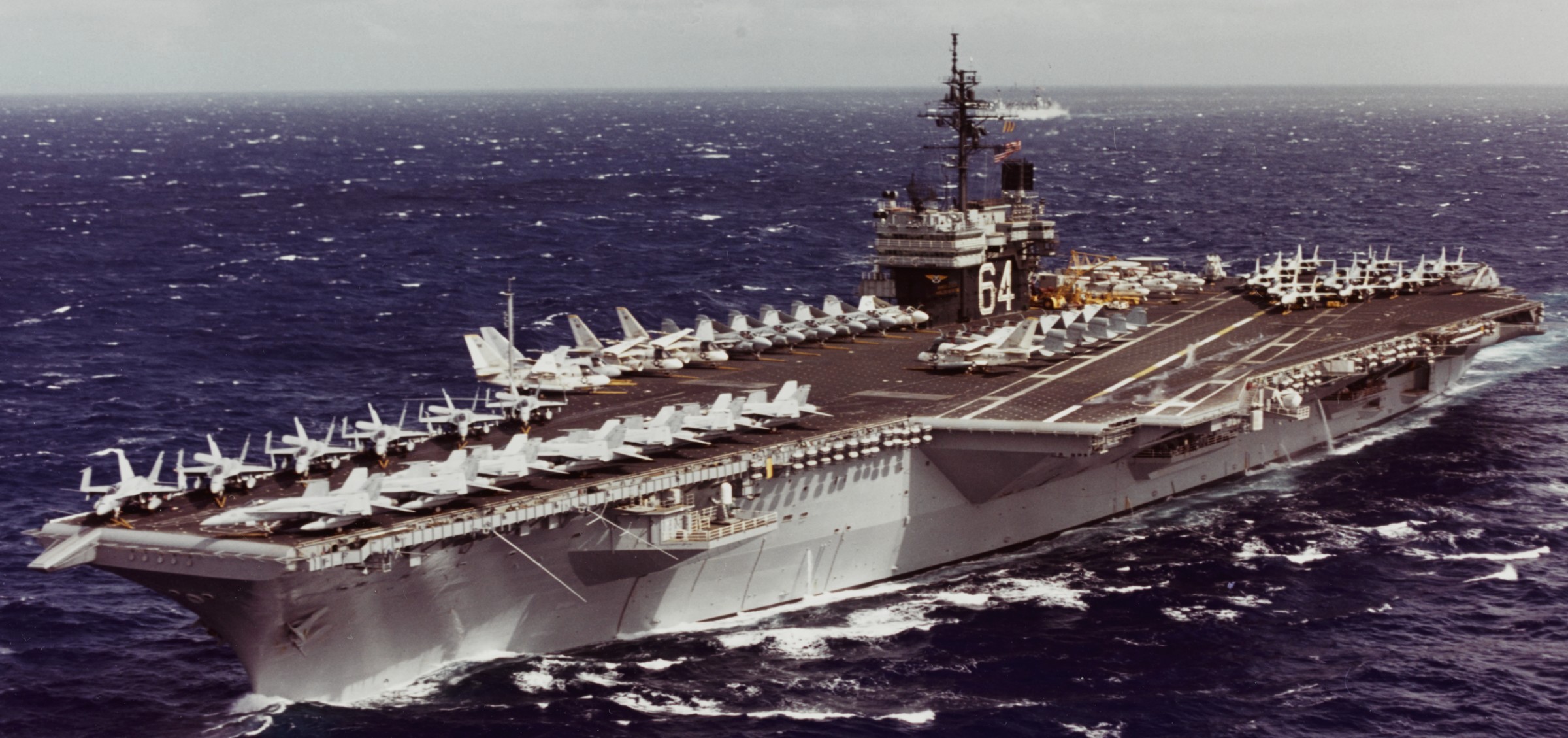 with CVW-14 embarked - December 1988 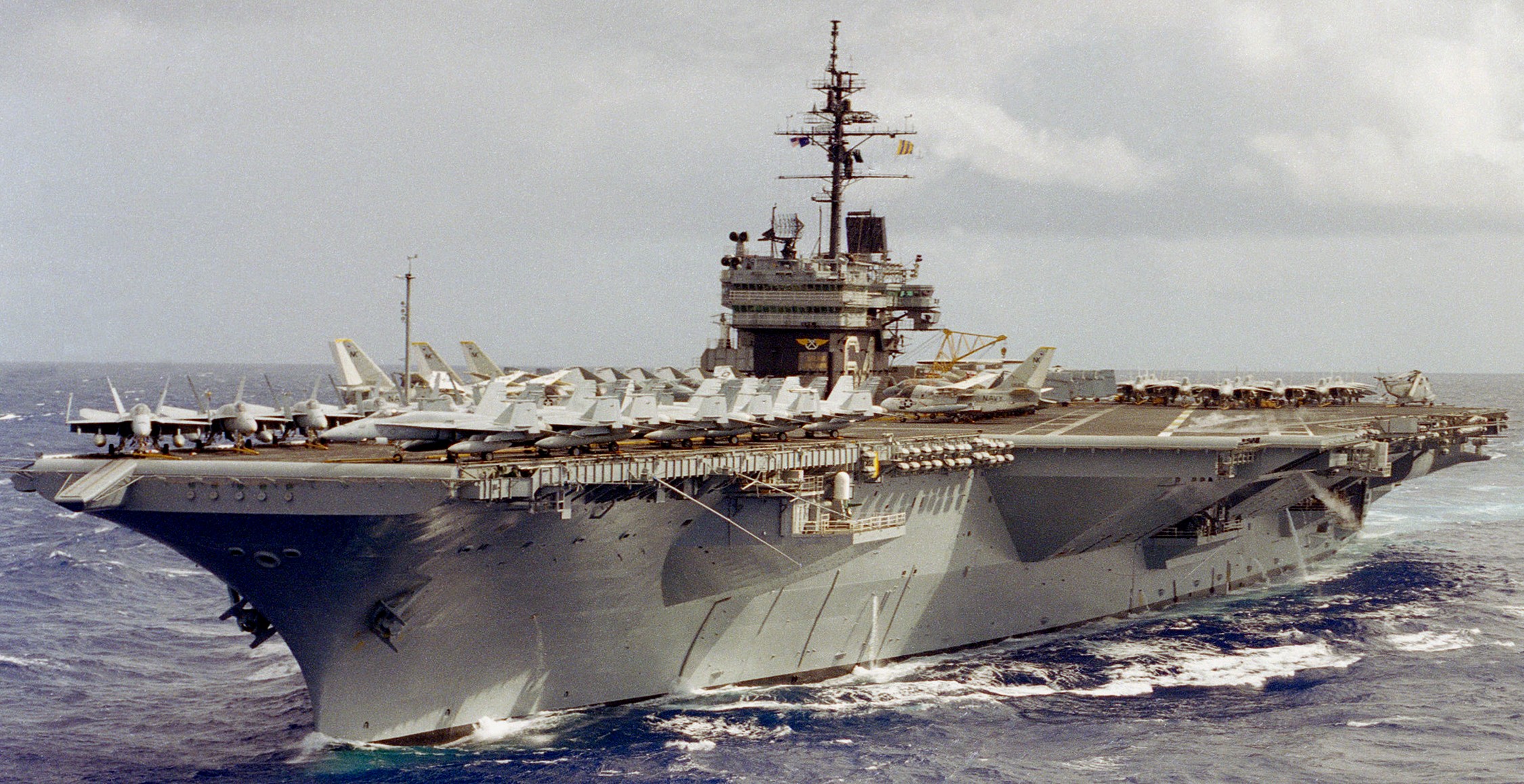 with CVW-14 embarked - December 1988 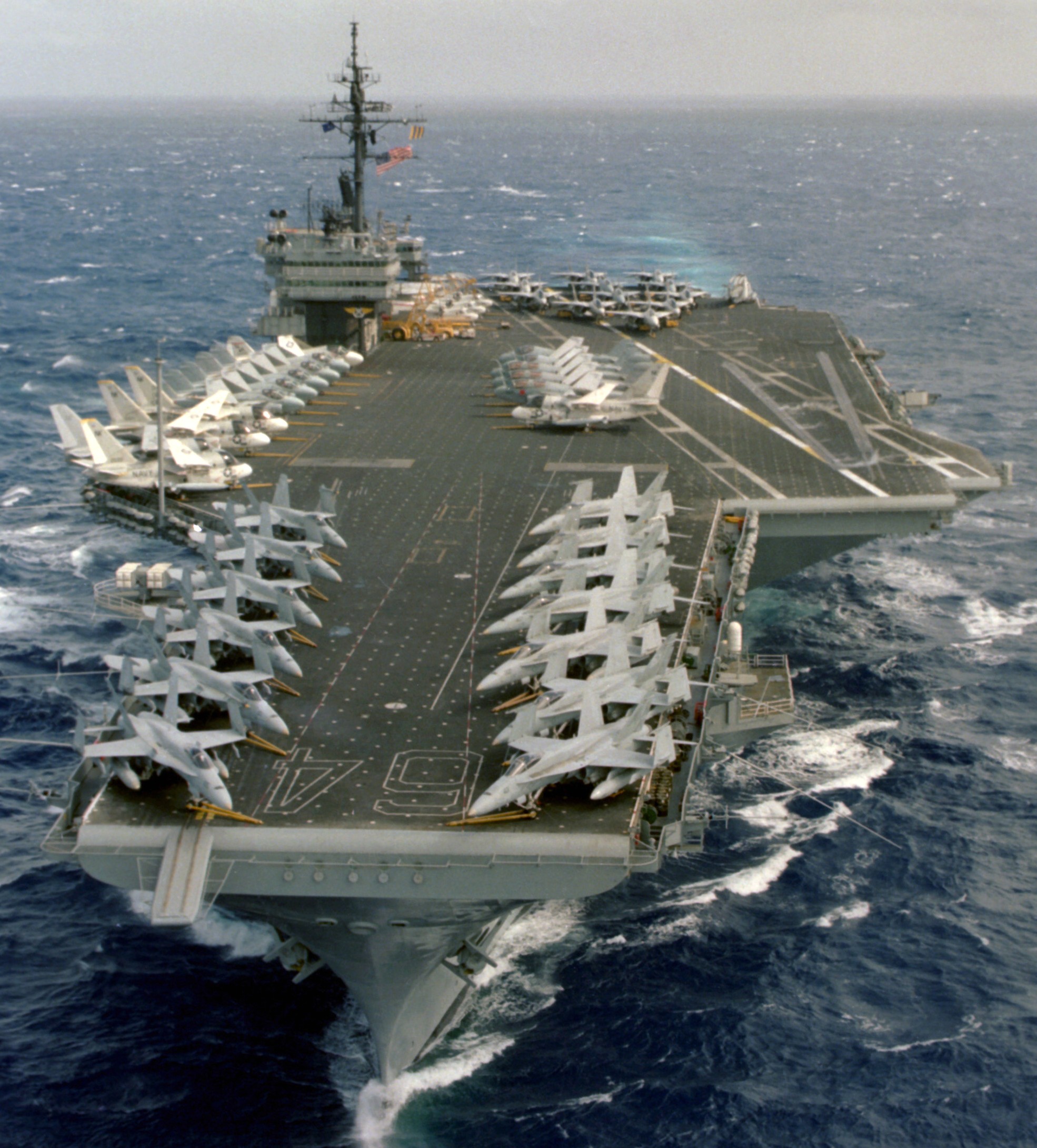 with CVW-14 embarked - December 1988 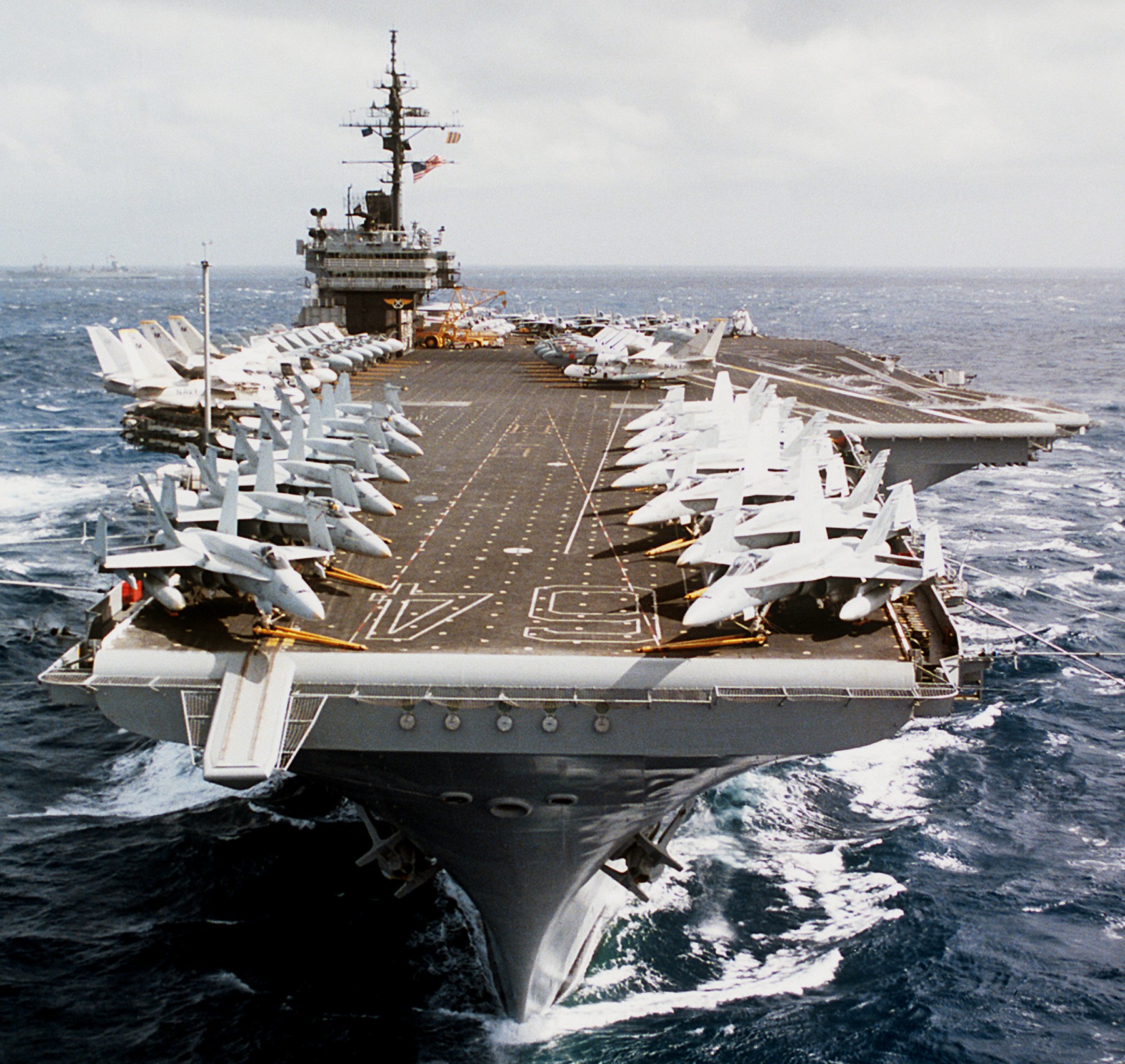 with CVW-14 embarked - December 1988 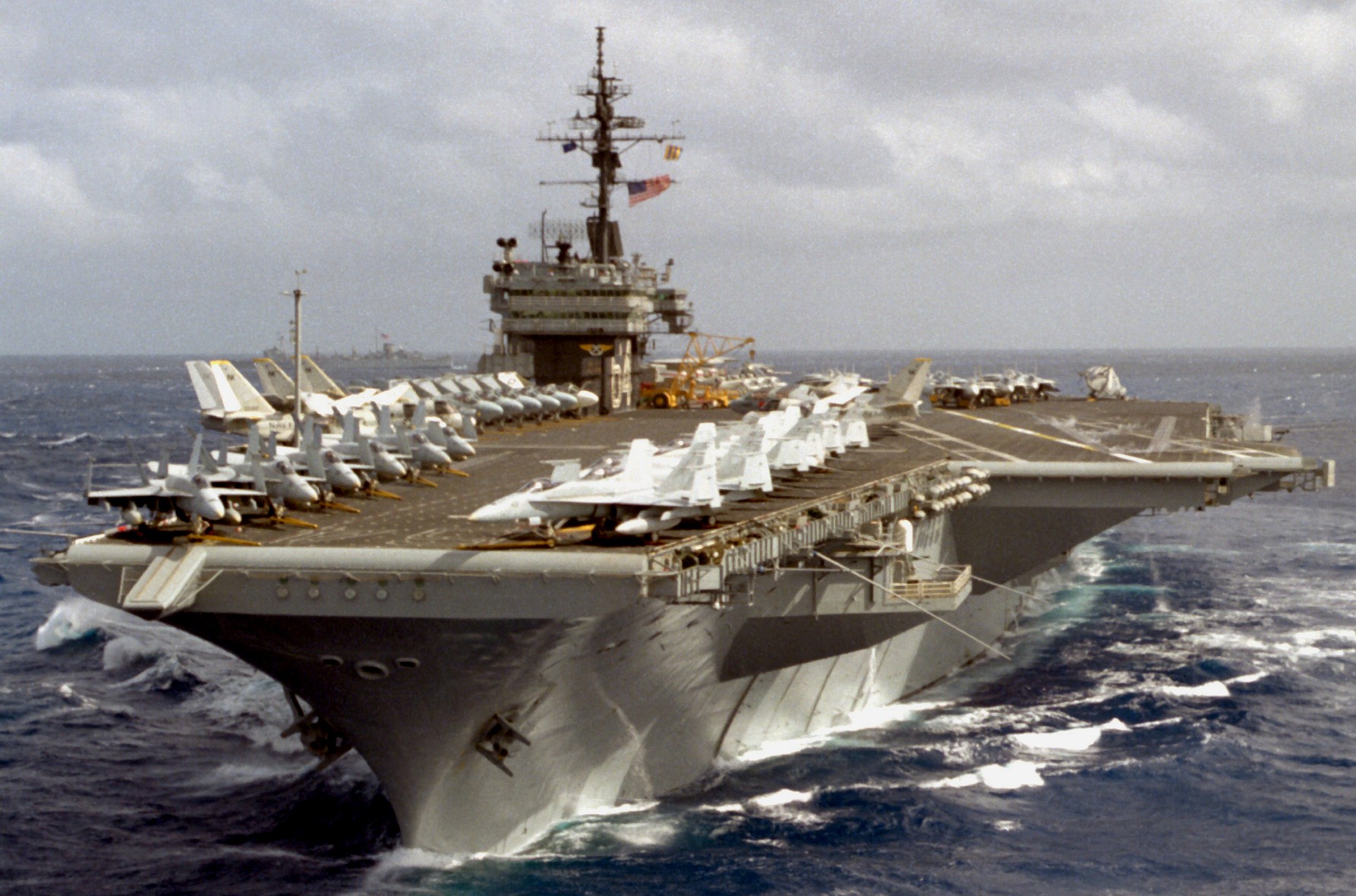 with CVW-14 embarked - December 1988 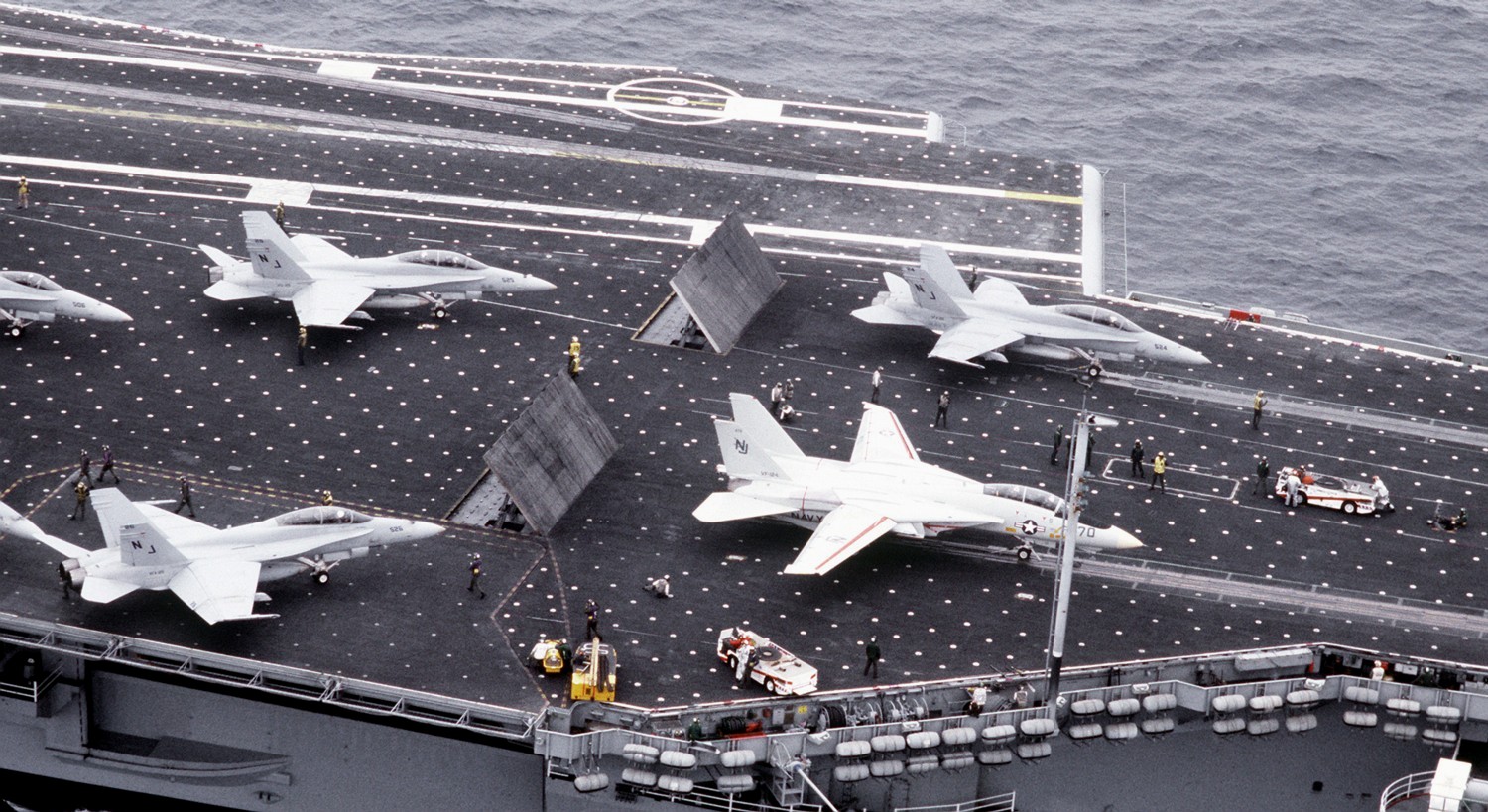 with aircraft of RCVW-12 embarked - August 1988 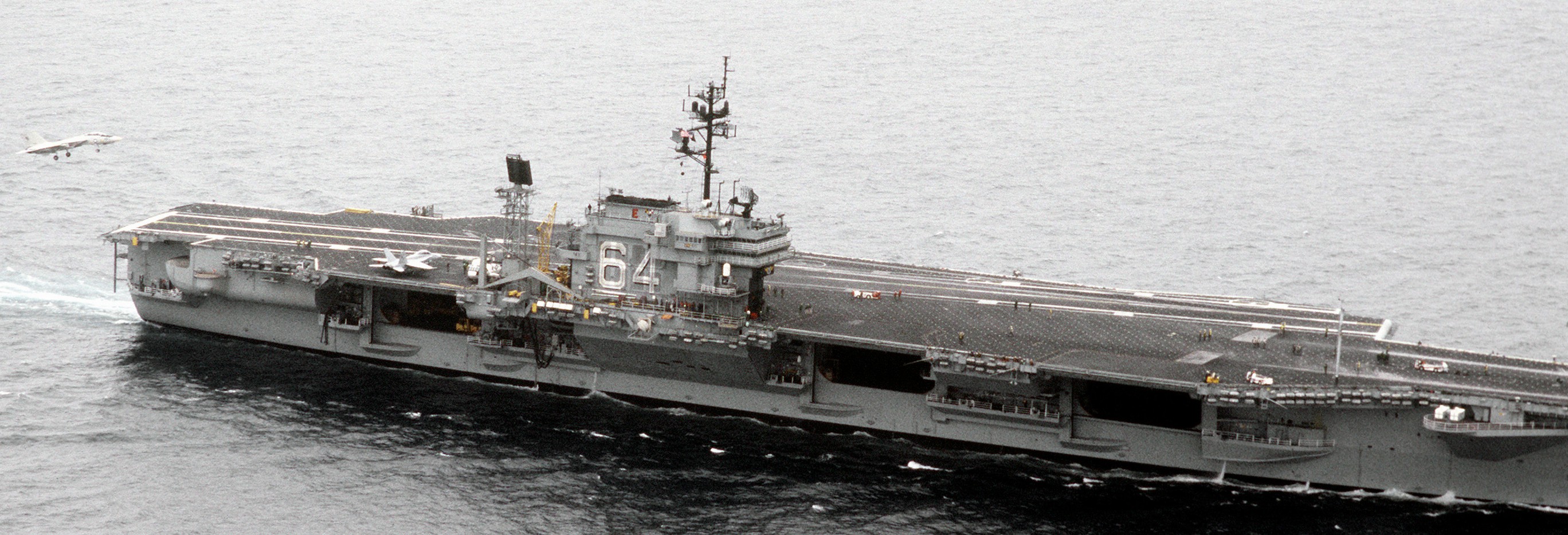 1988 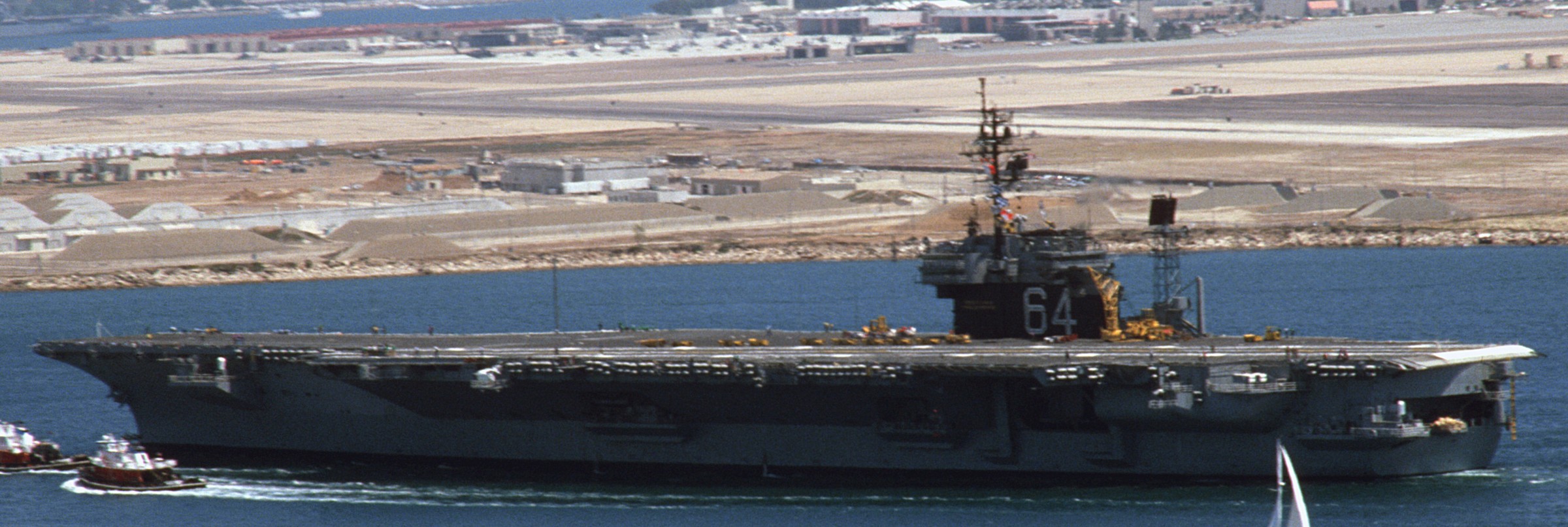 off San Diego, California - 1988  off San Diego, California - 1988 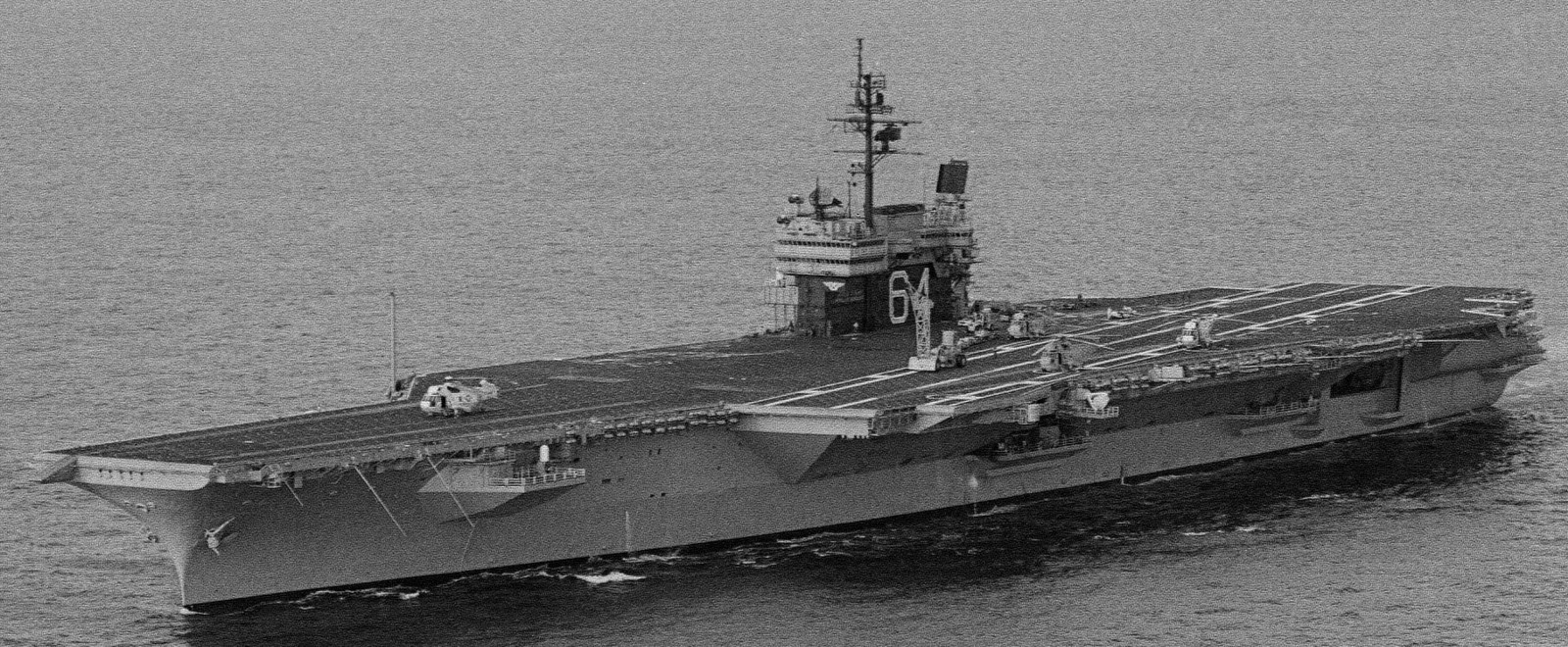 1988 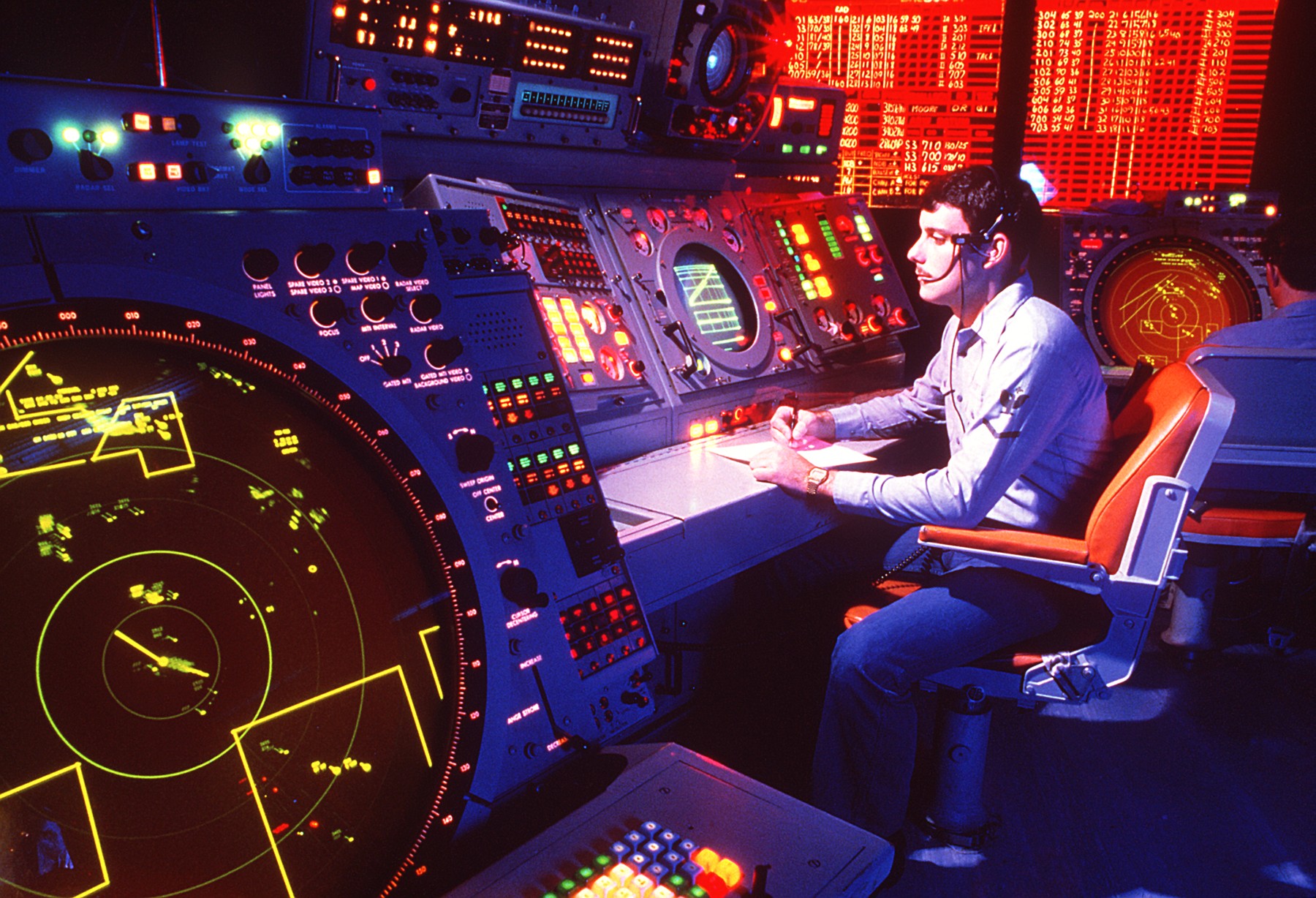 carrier air traffic control center (CATCC) - 1988 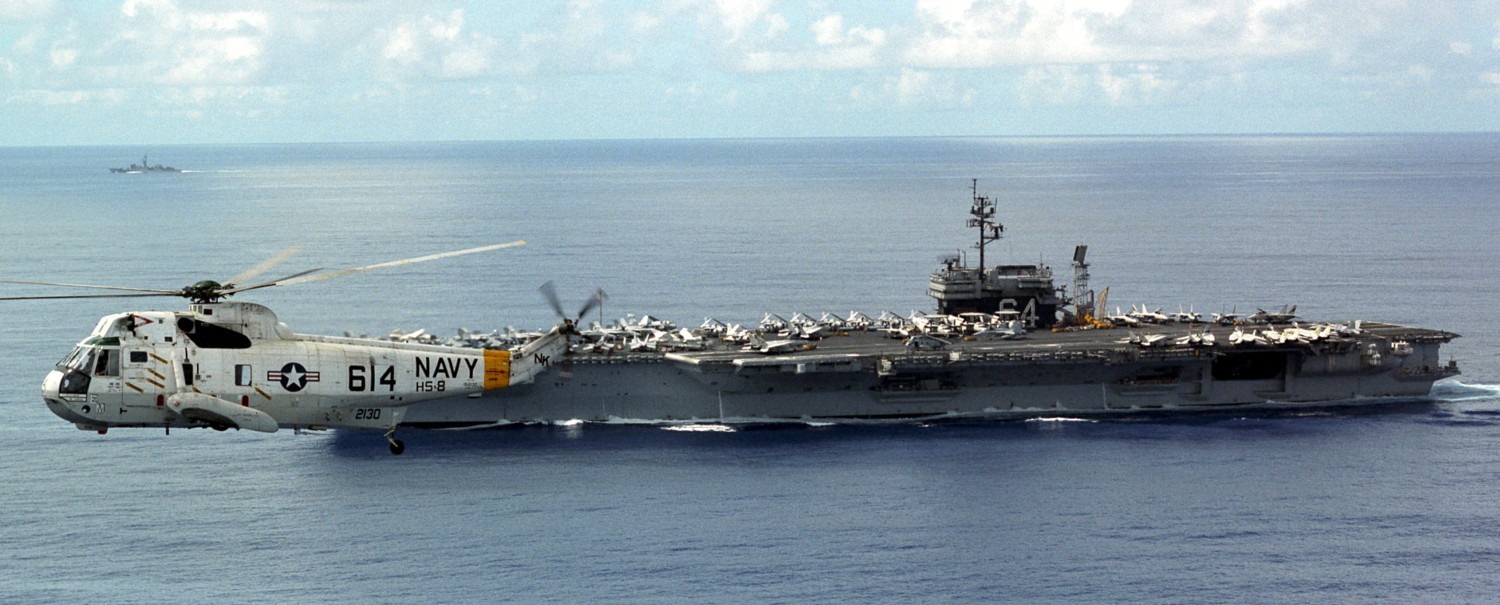 with CVW-14 embarked - August 1987 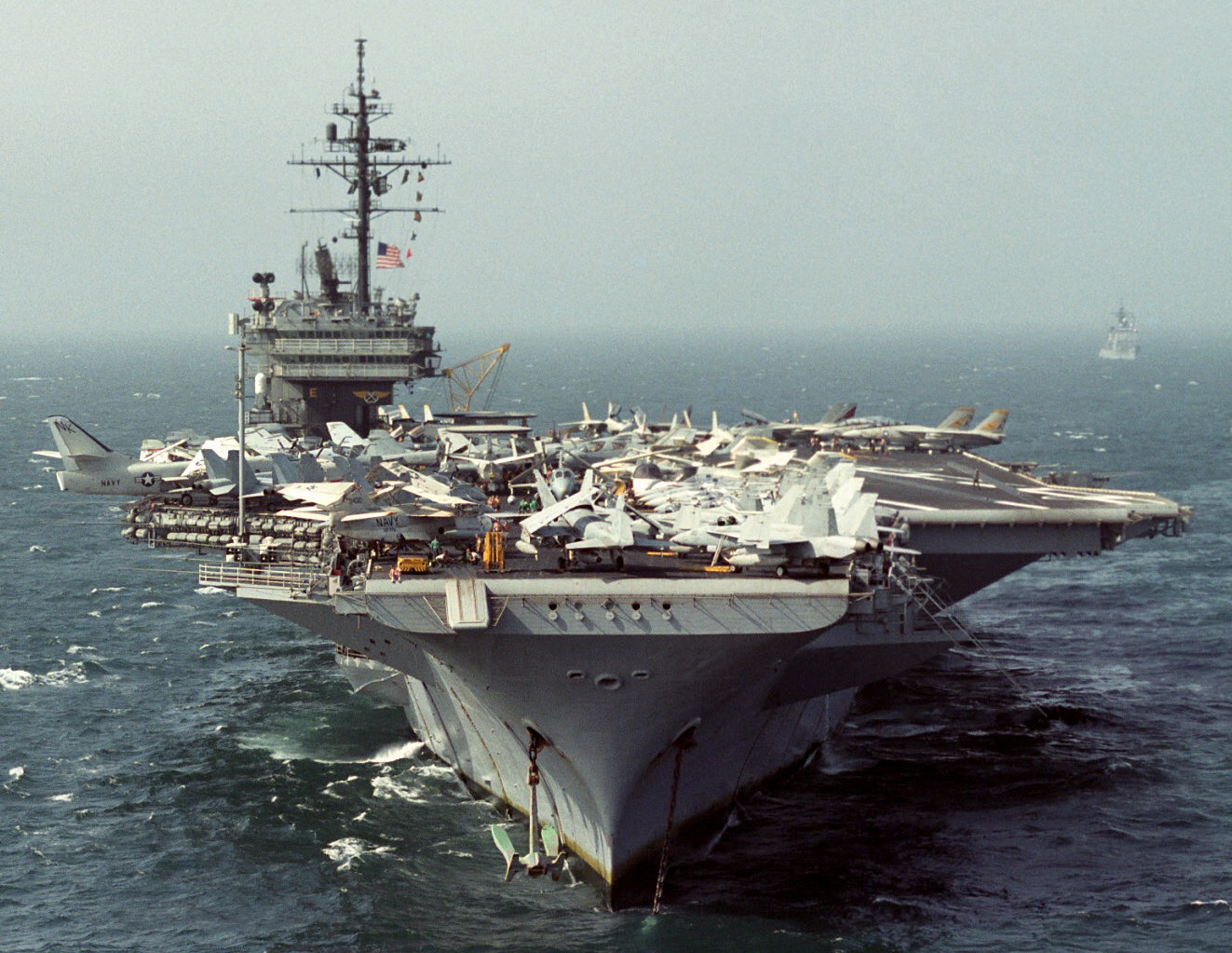 with CVW-14 embarked - July 1987  with CVW-14 embarked - Diego Garcia, British Indian Ocean Territory - May 1987  with CVW-14 embarked - March 1987 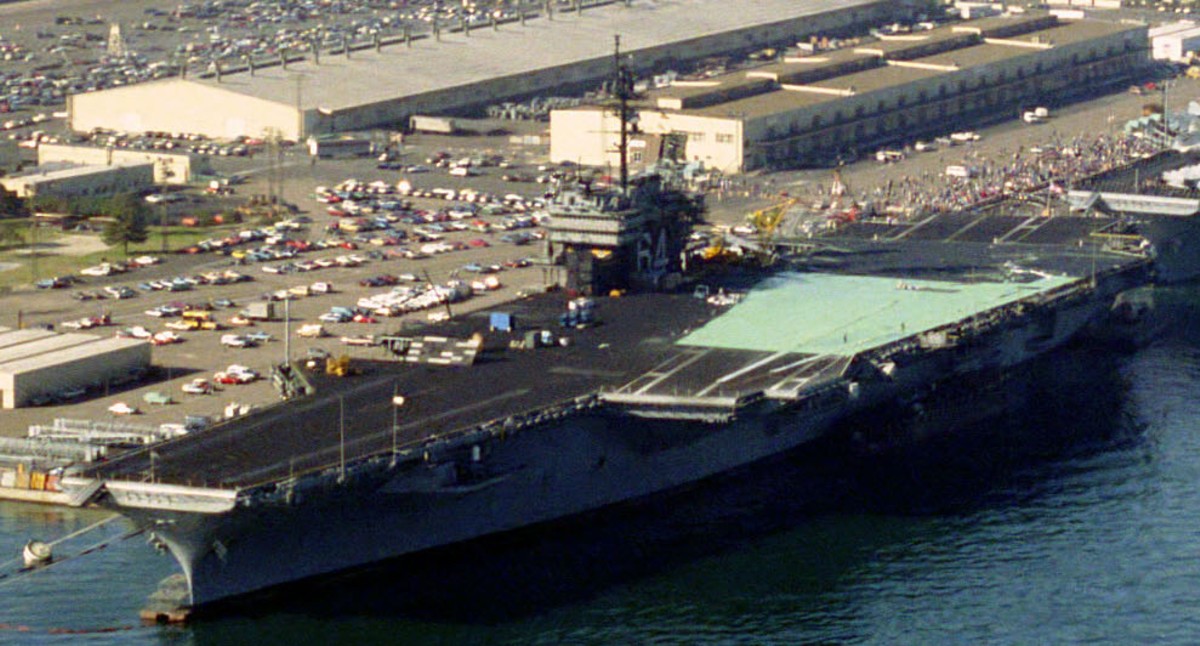 moored at NAS North Island, California - January 1987 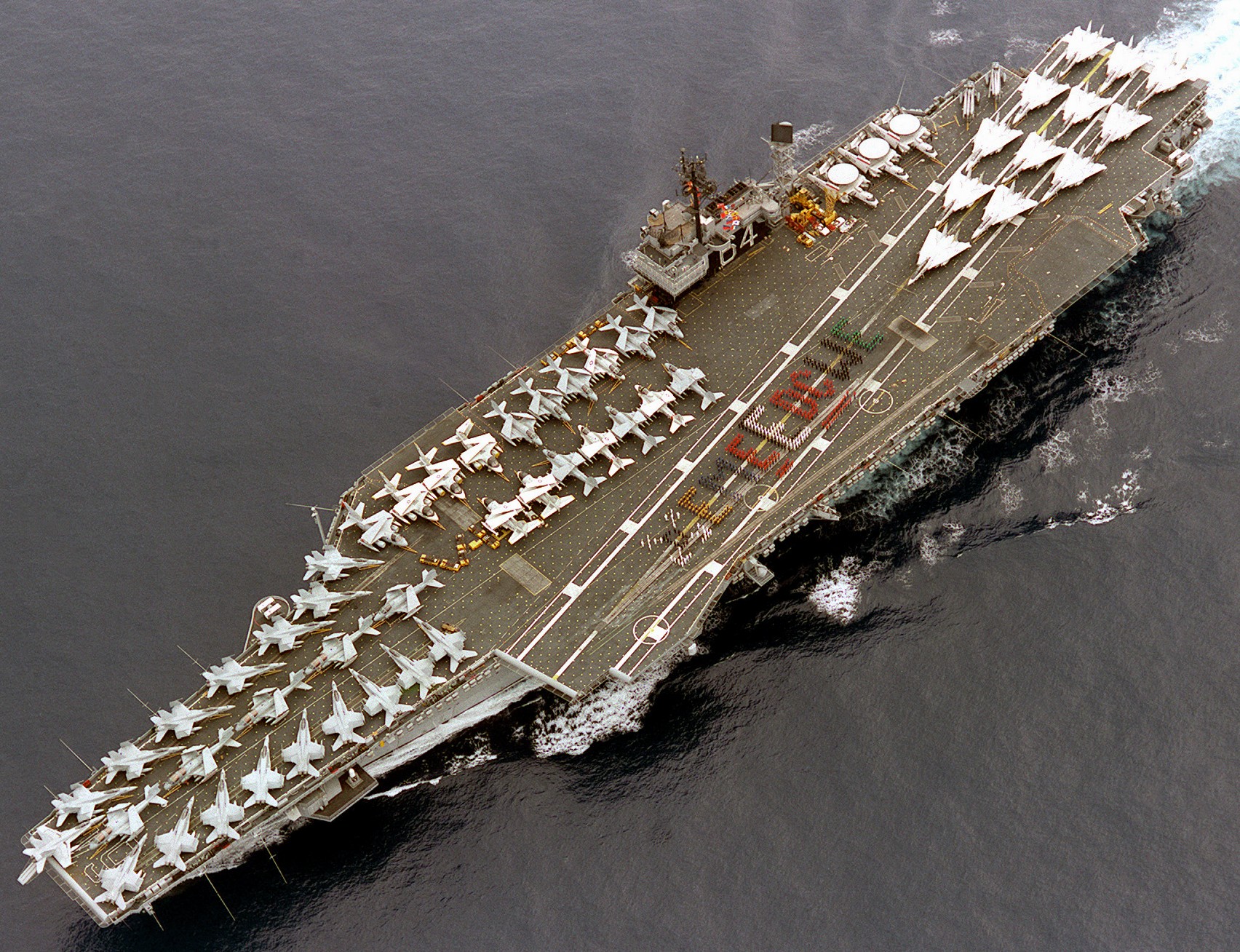 with CVW-14 embarked - August 1986 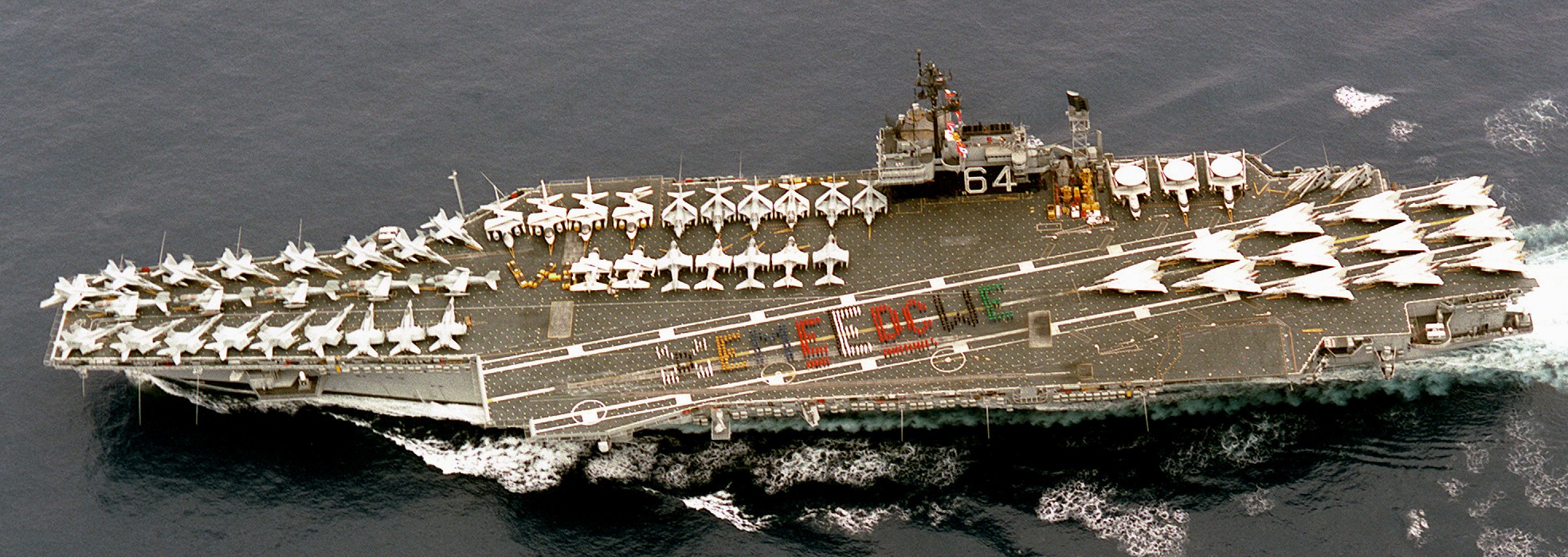 with CVW-14 embarked - August 1986 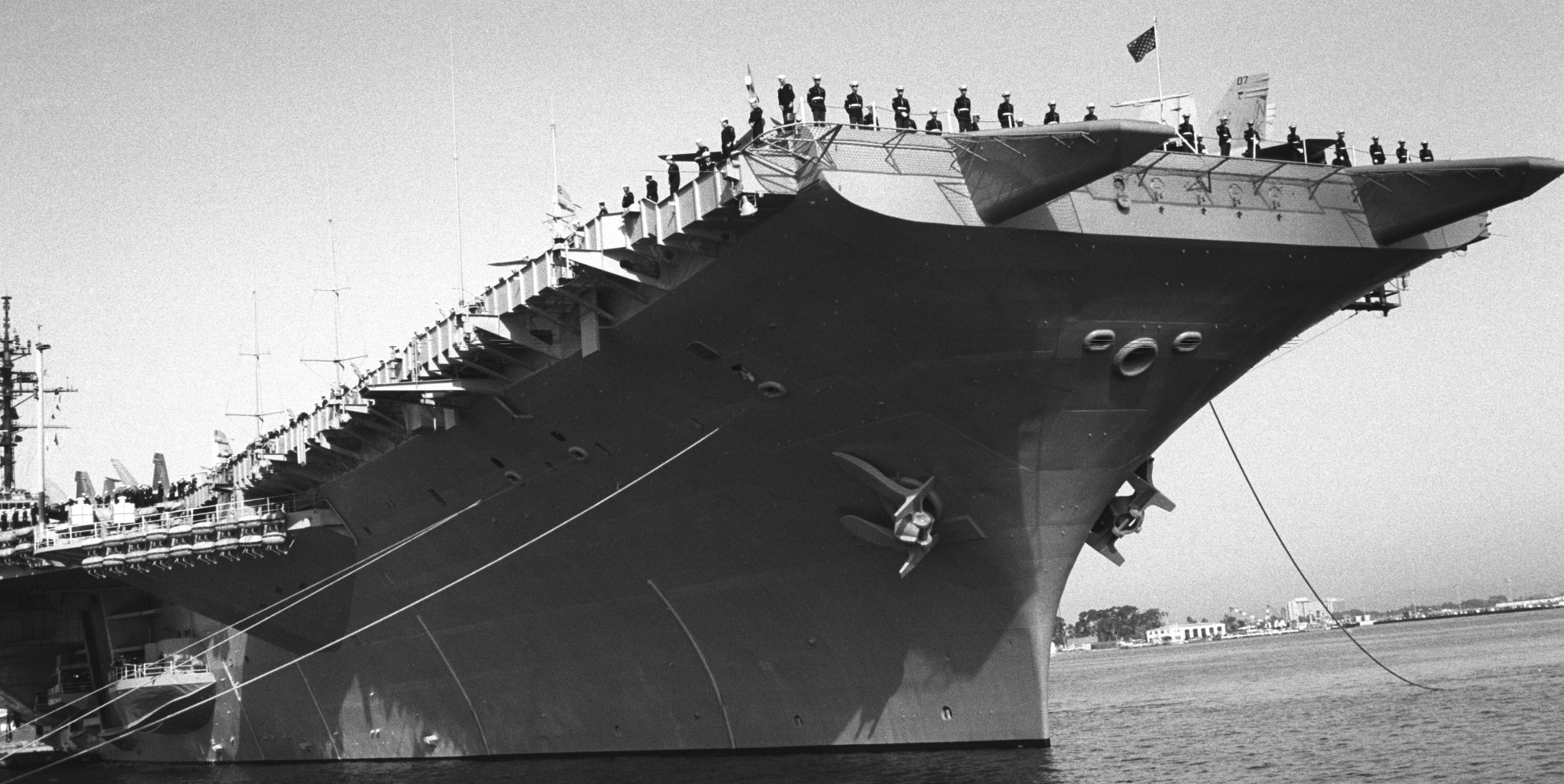 departing NAS North Island, California - February 1985 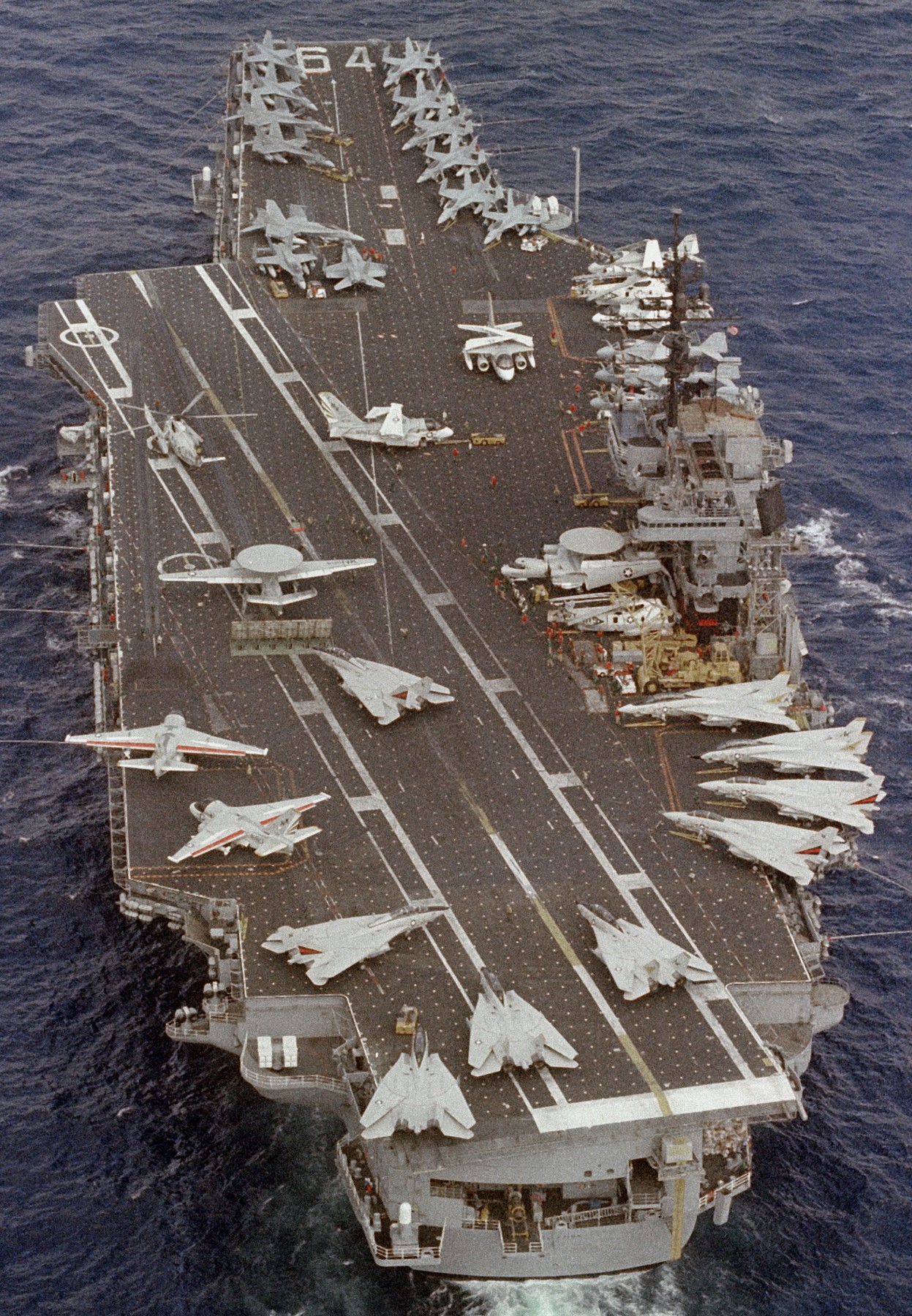 with CVW-14 embarked - 1984 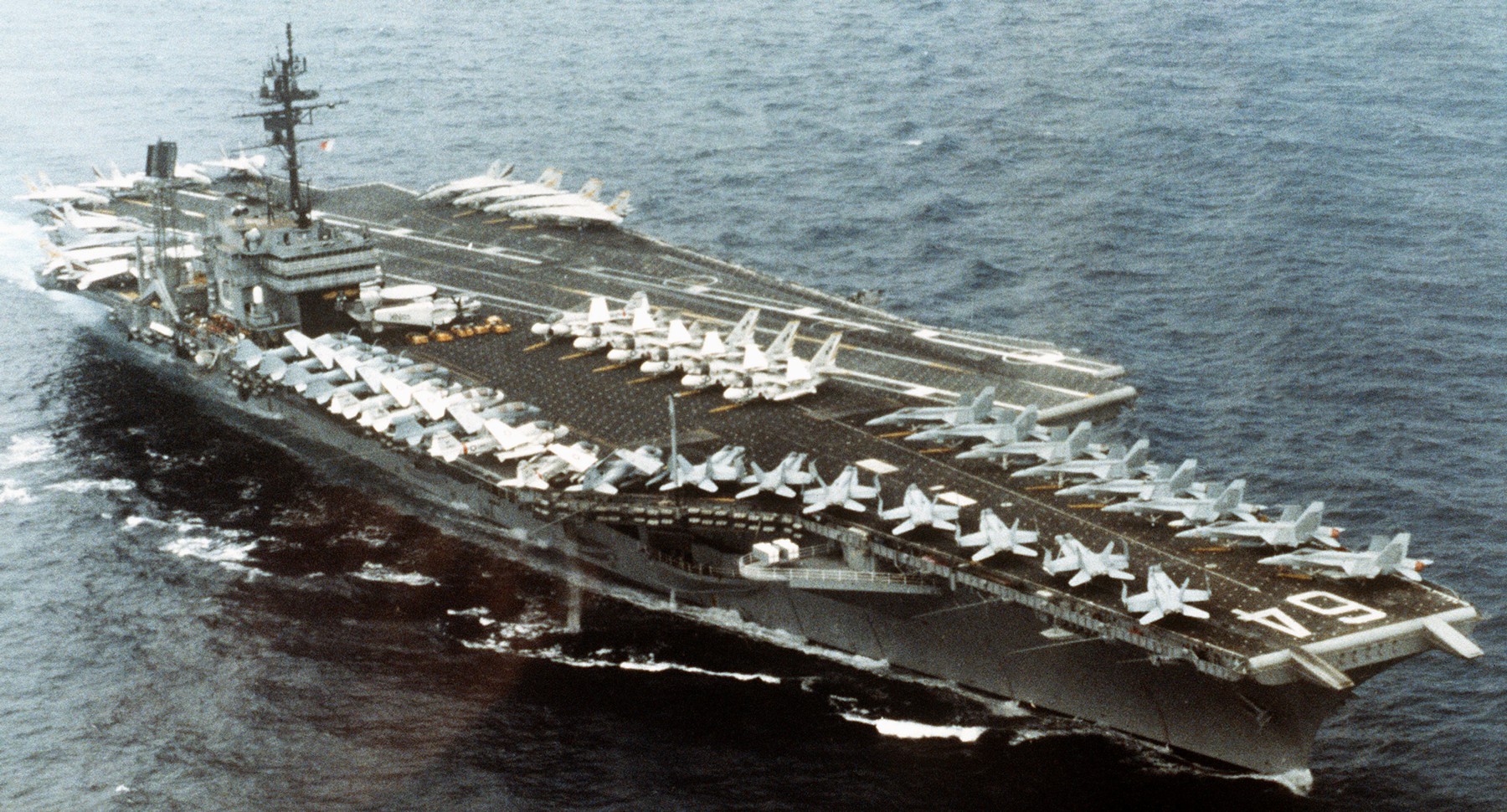 with CVW-14 embarked - 1984 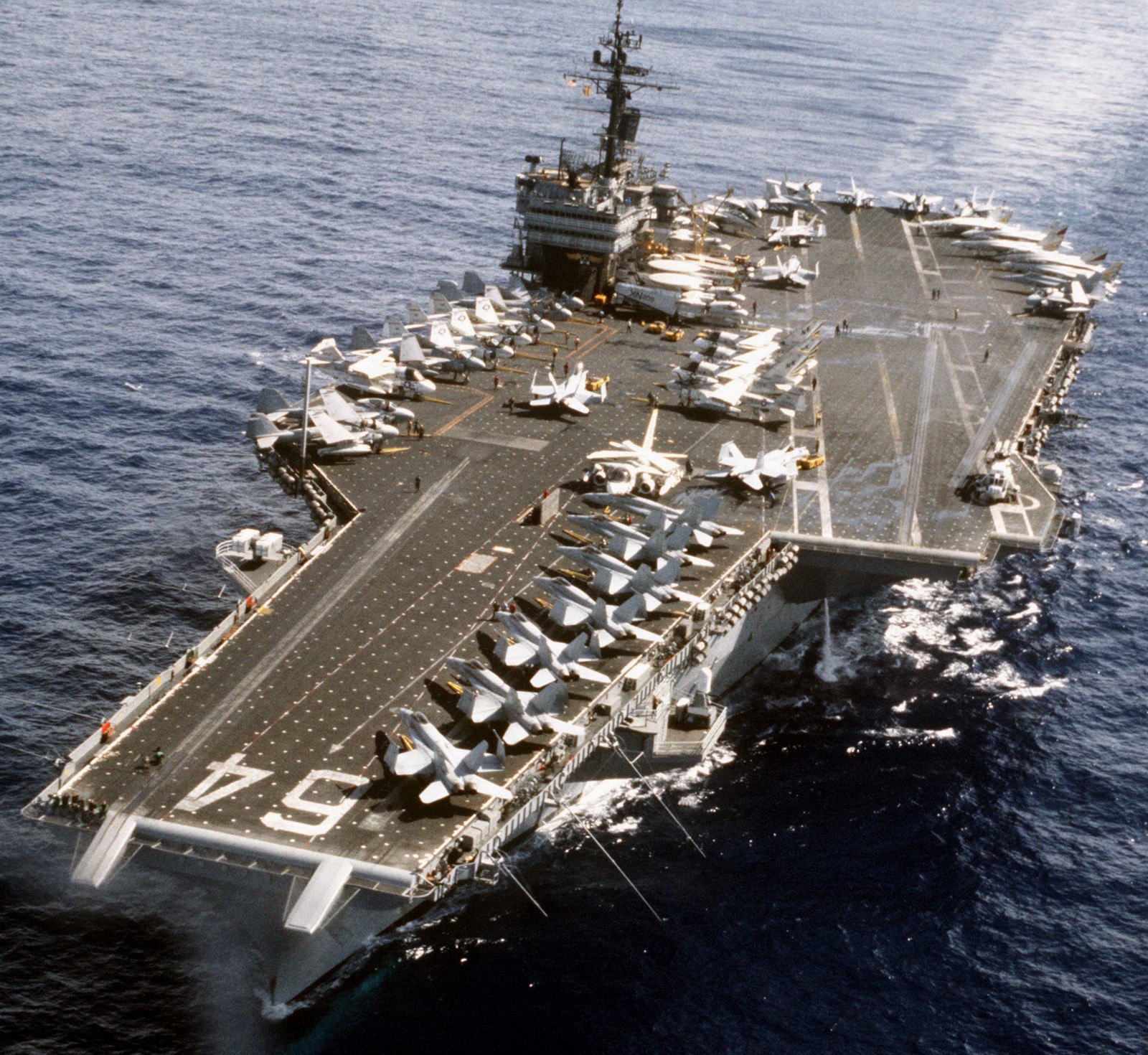 with CVW-14 embarked - 1984  with CVW-14 embarked - 1984 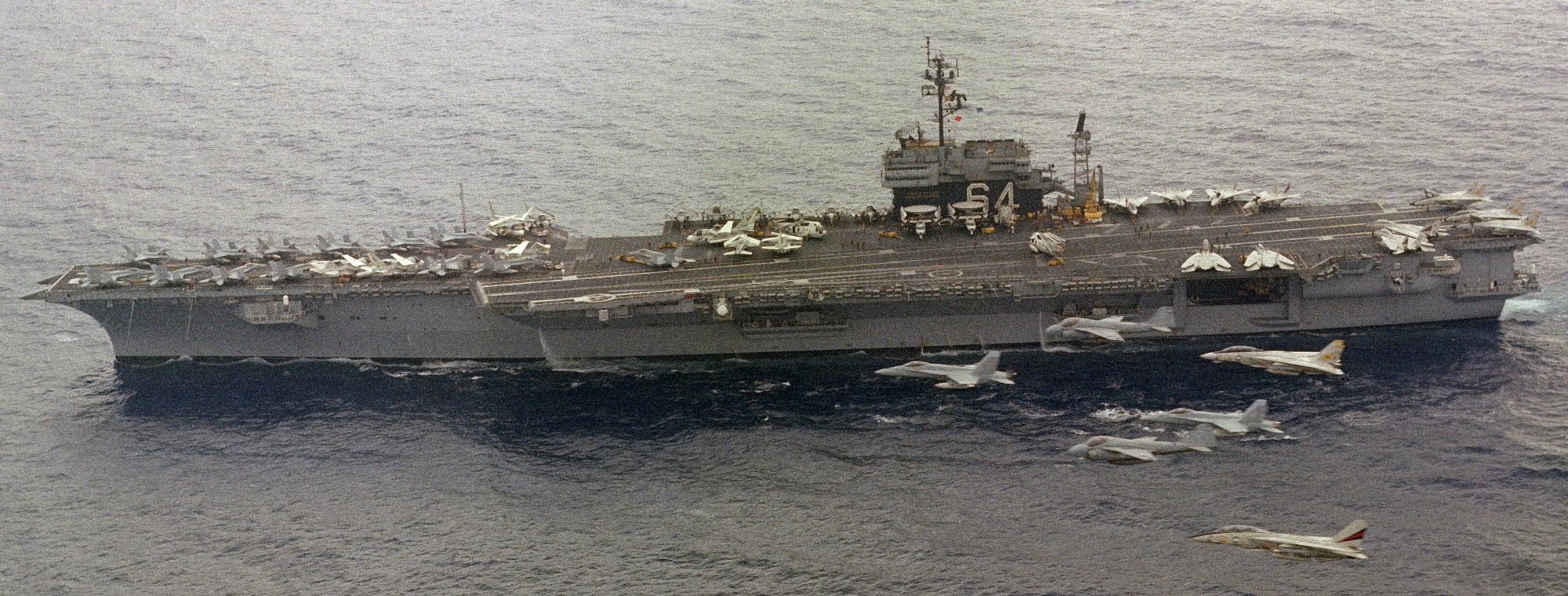 with CVW-14 embarked - 1984 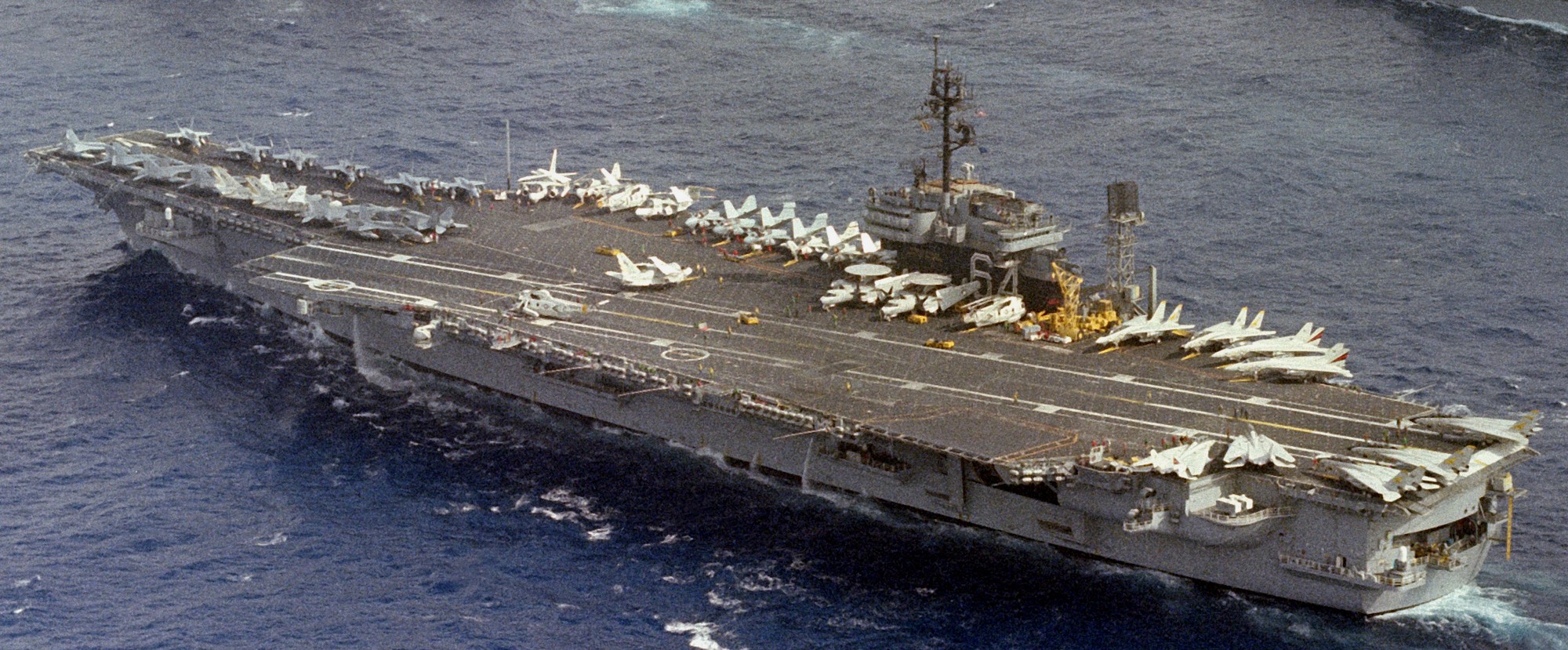 with CVW-14 embarked - 1984  with CVW-14 embarked - 1984 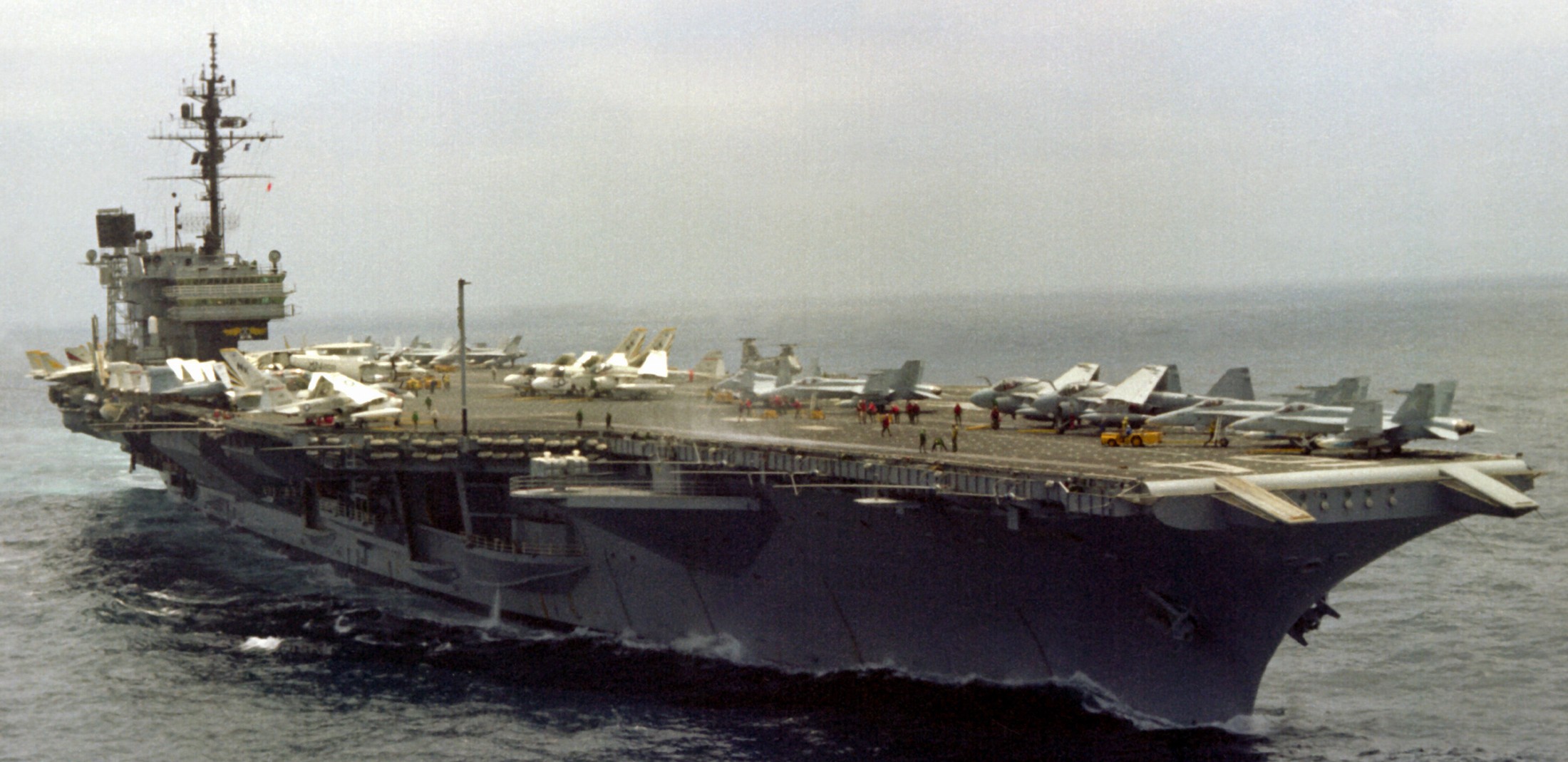 with CVW-14 embarked - 1984 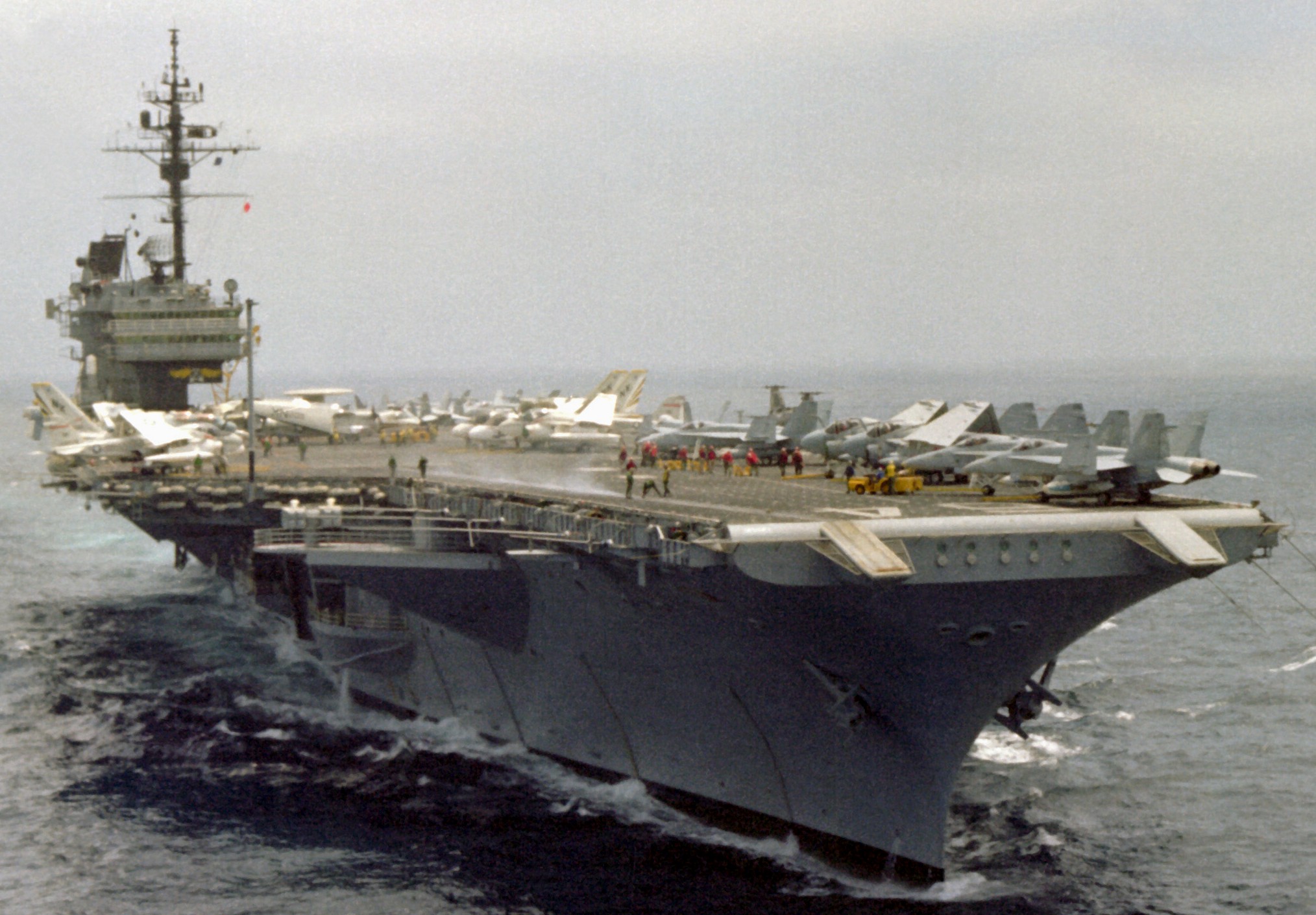 with CVW-14 embarked - 1984 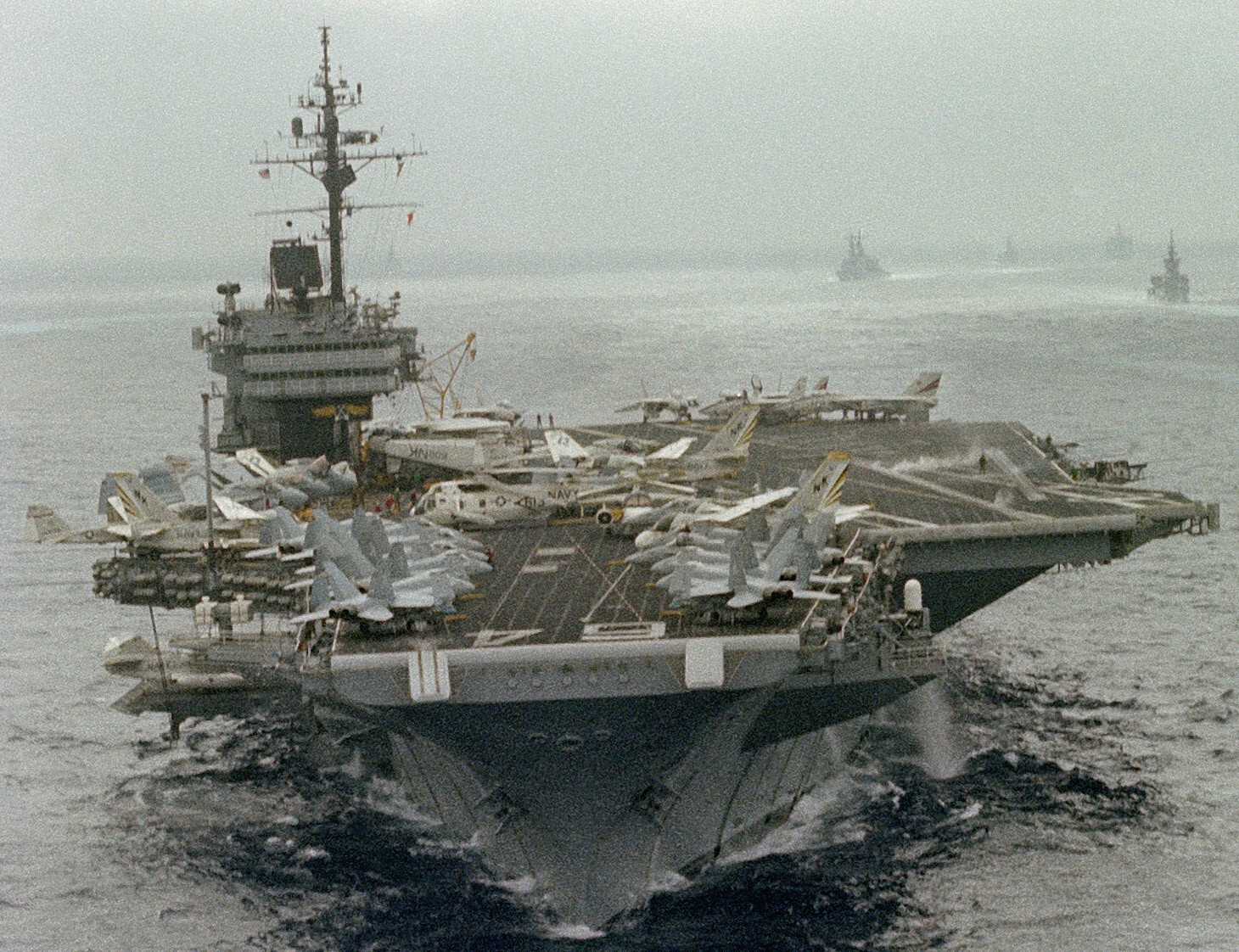 with CVW-14 embarked - 1984 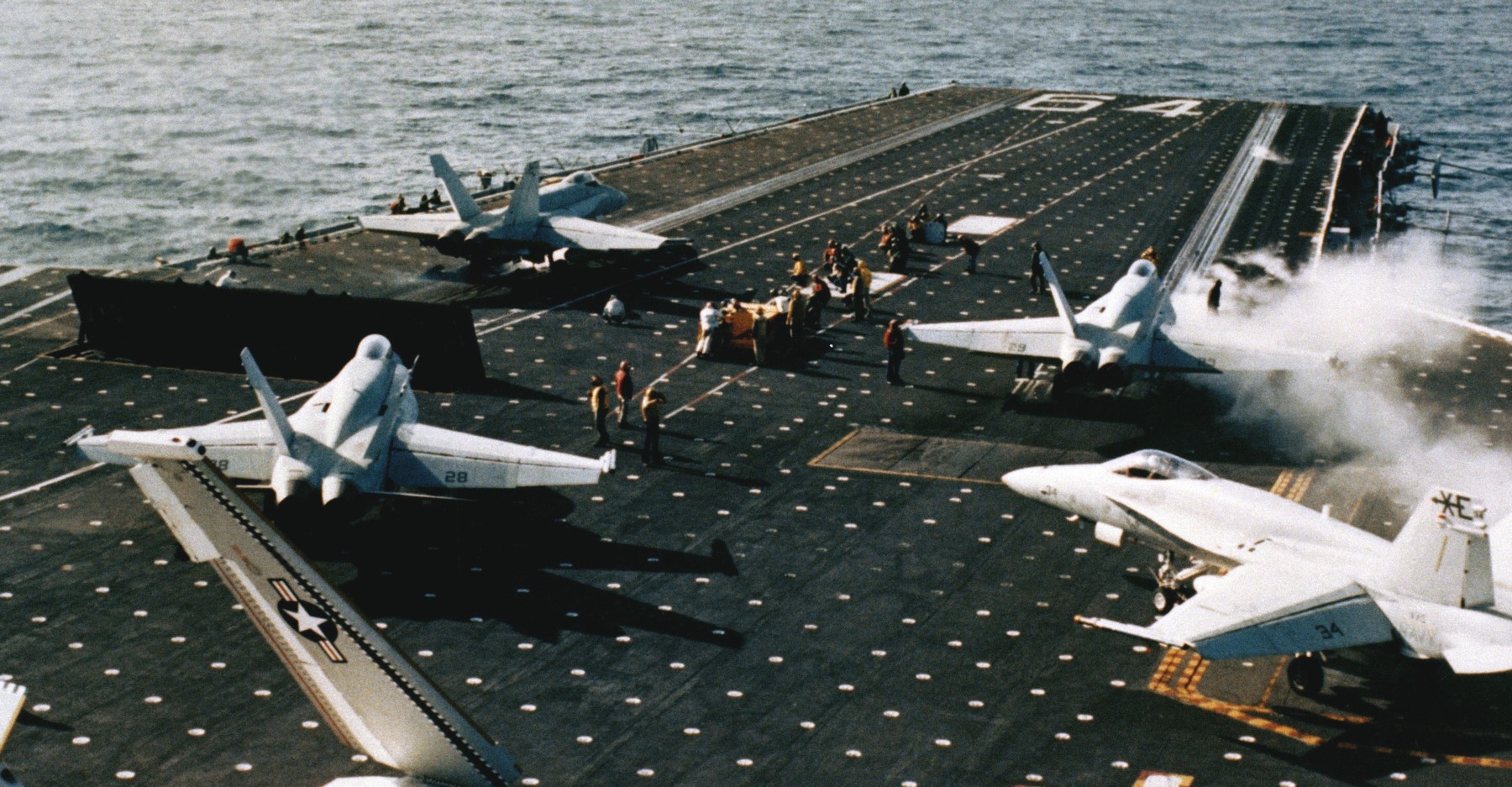 F/A-18 Operational Evaluation (OPEVAL) - February 1984 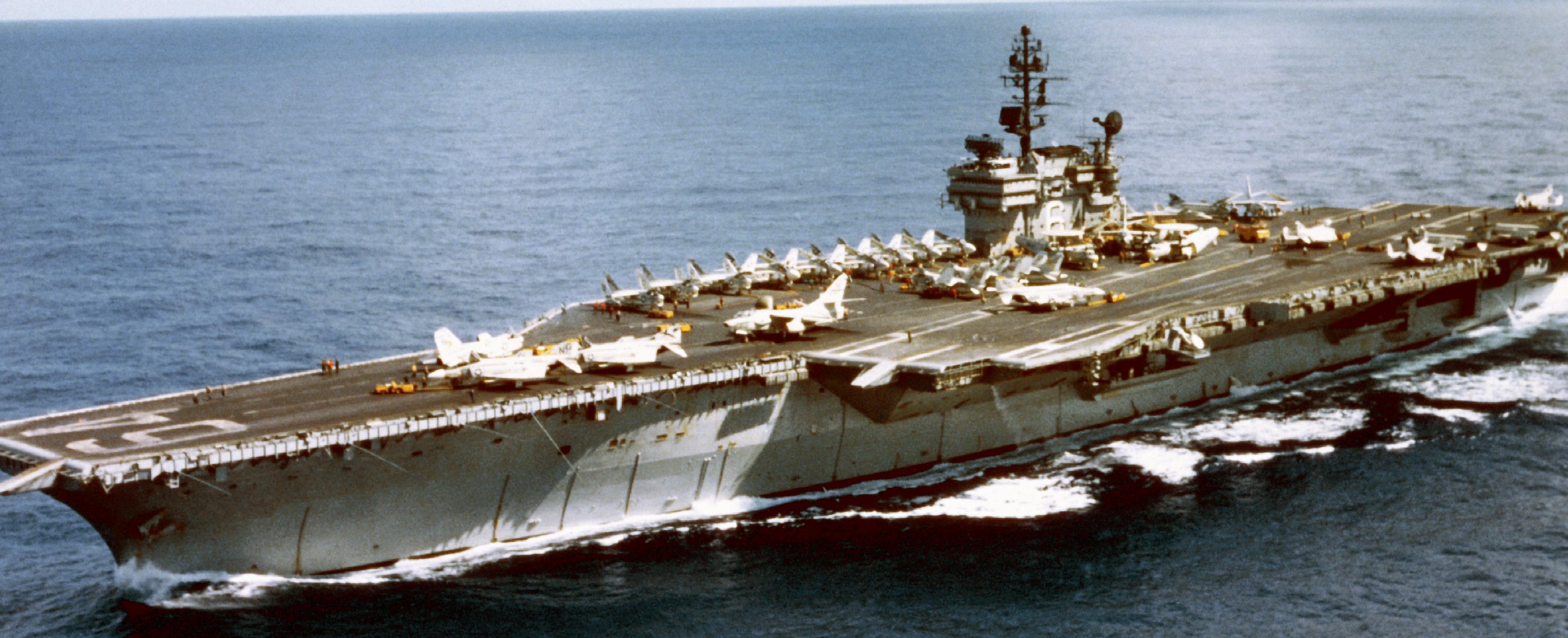 with CVW-9 embarked - November 1981 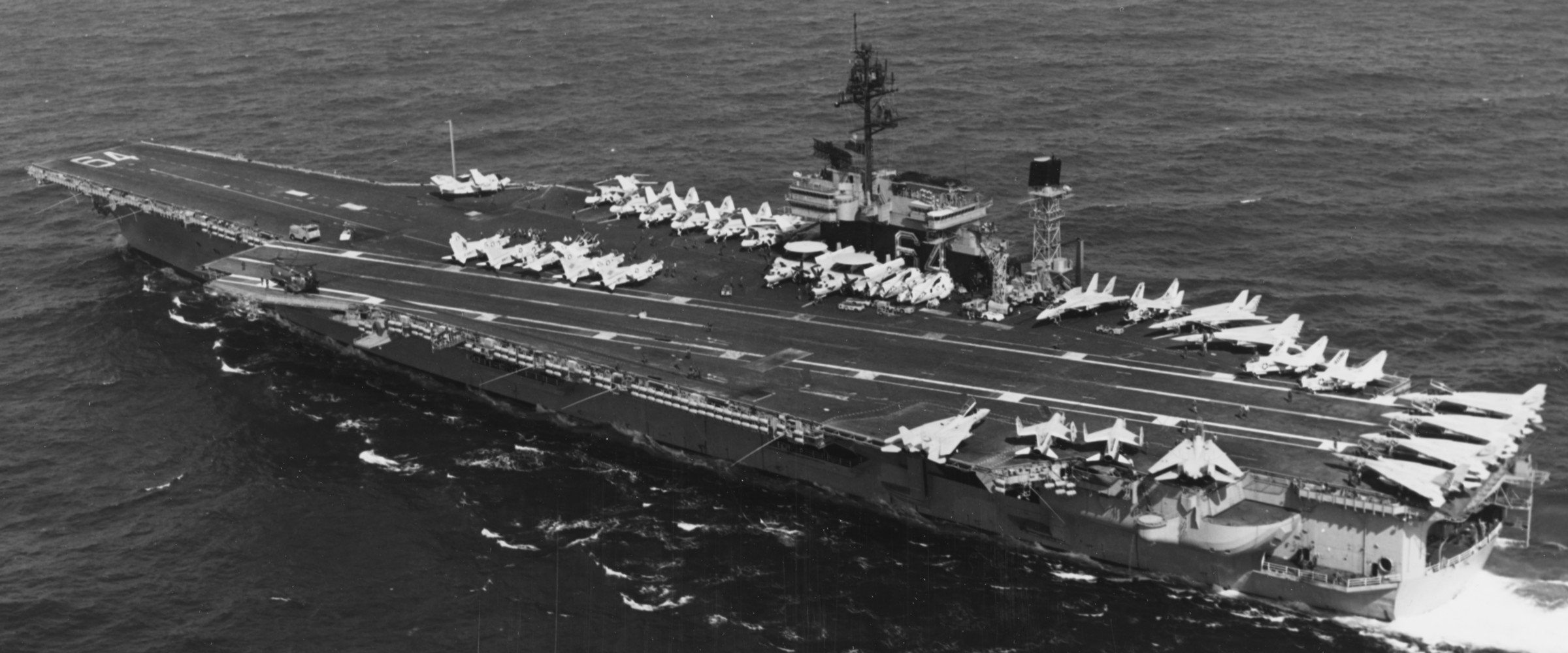 with CVW-9 embarked - 1981 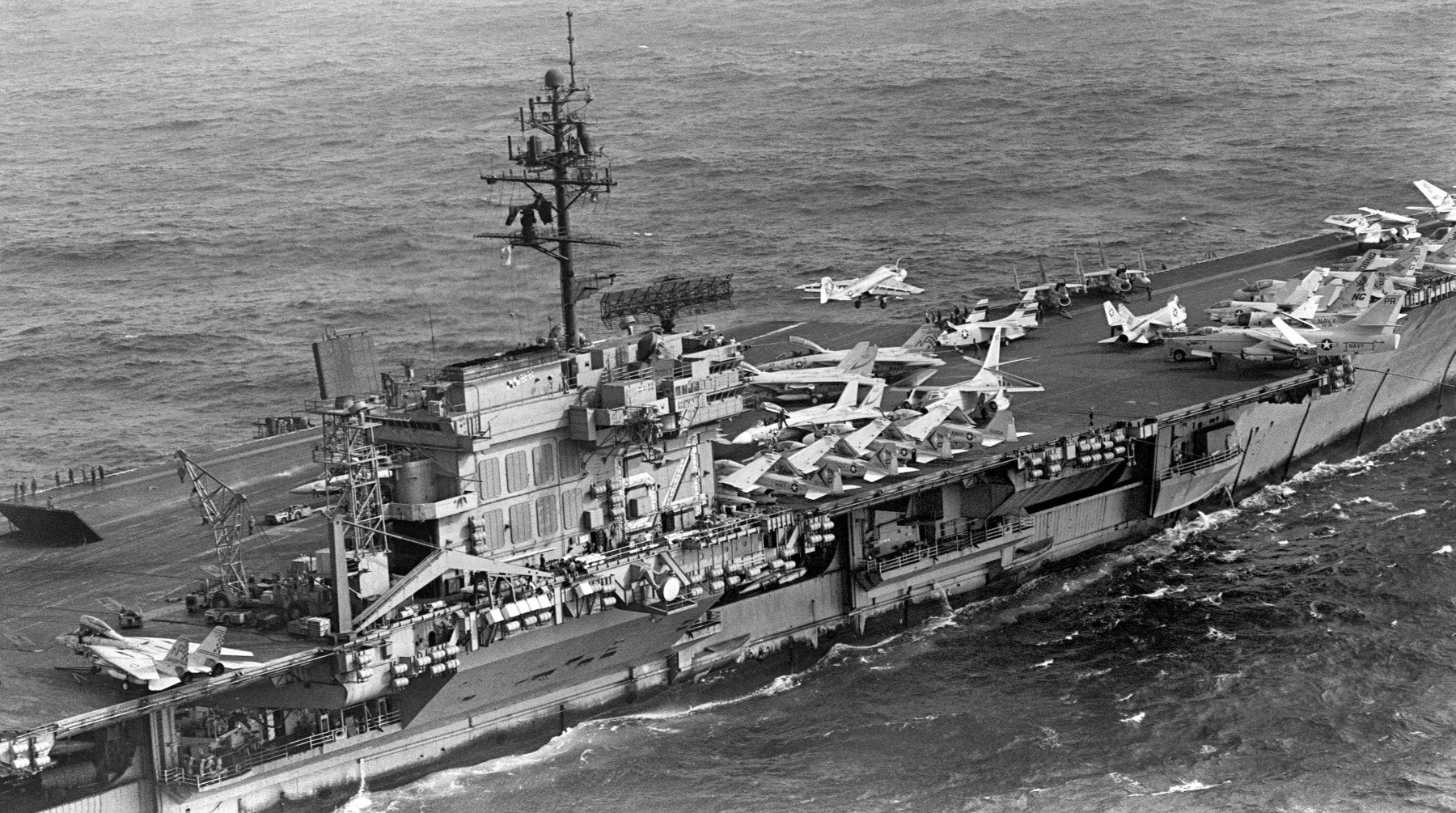 with CVW-9 embarked - July 1980 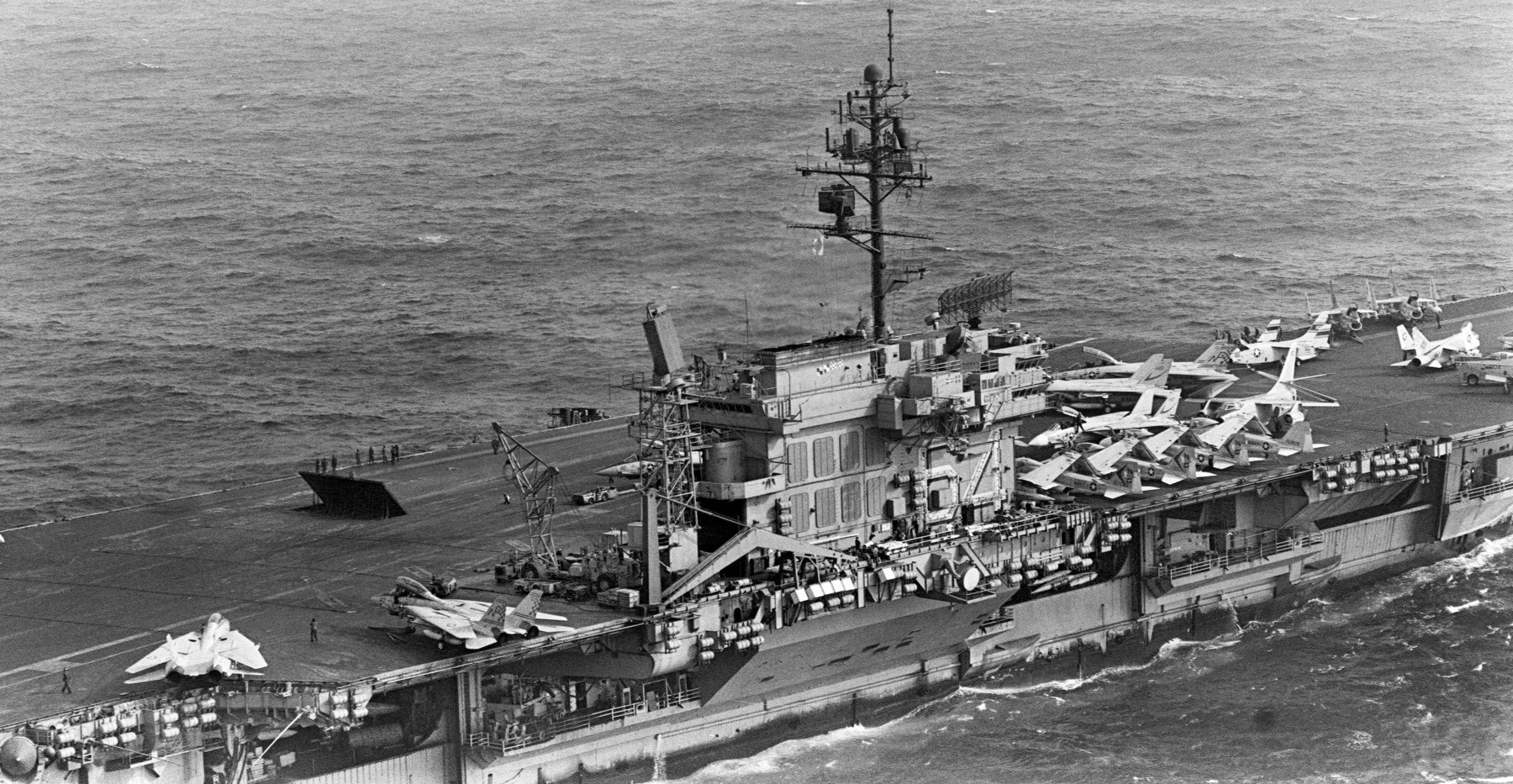 with CVW-9 embarked - July 1980 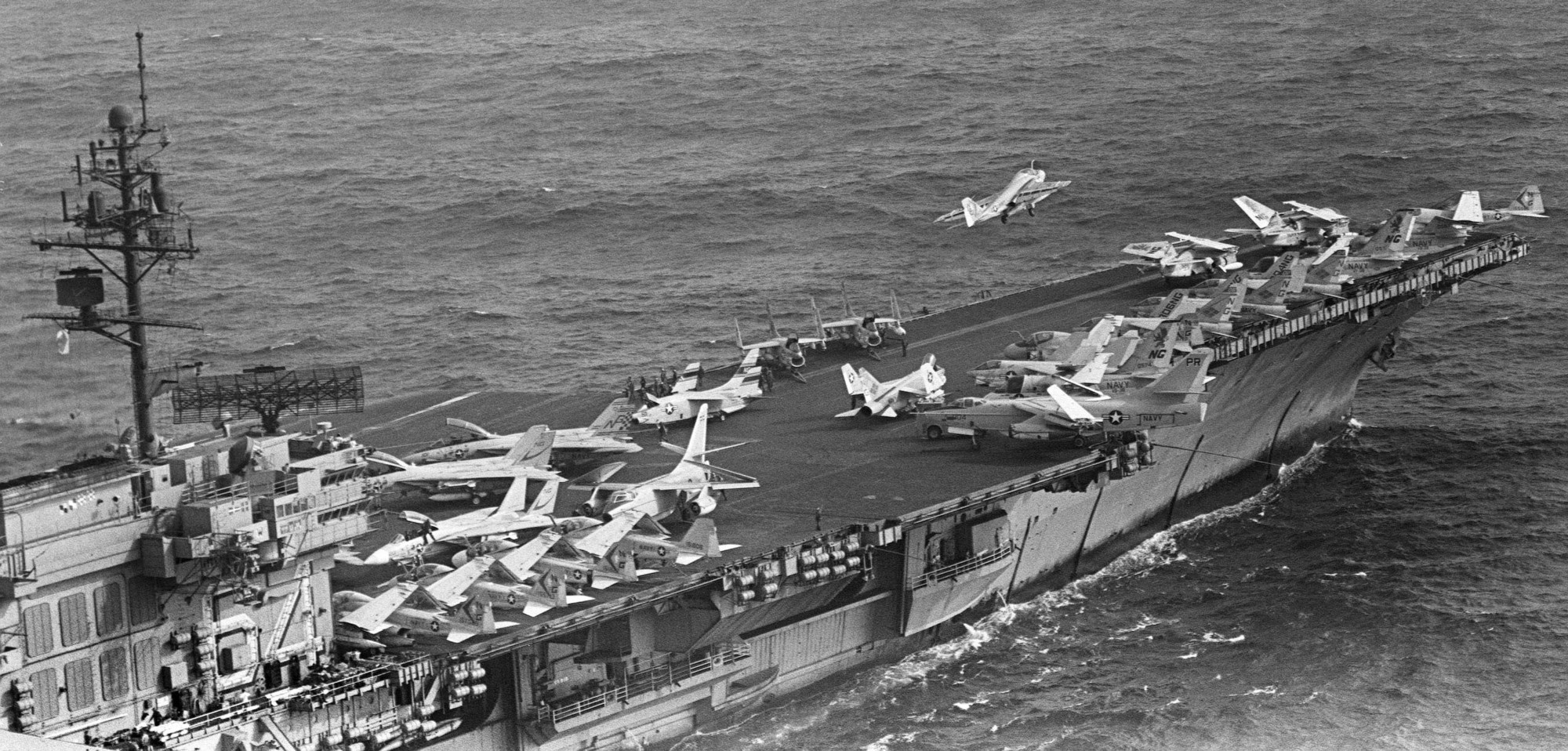 with CVW-9 embarked - July 1980 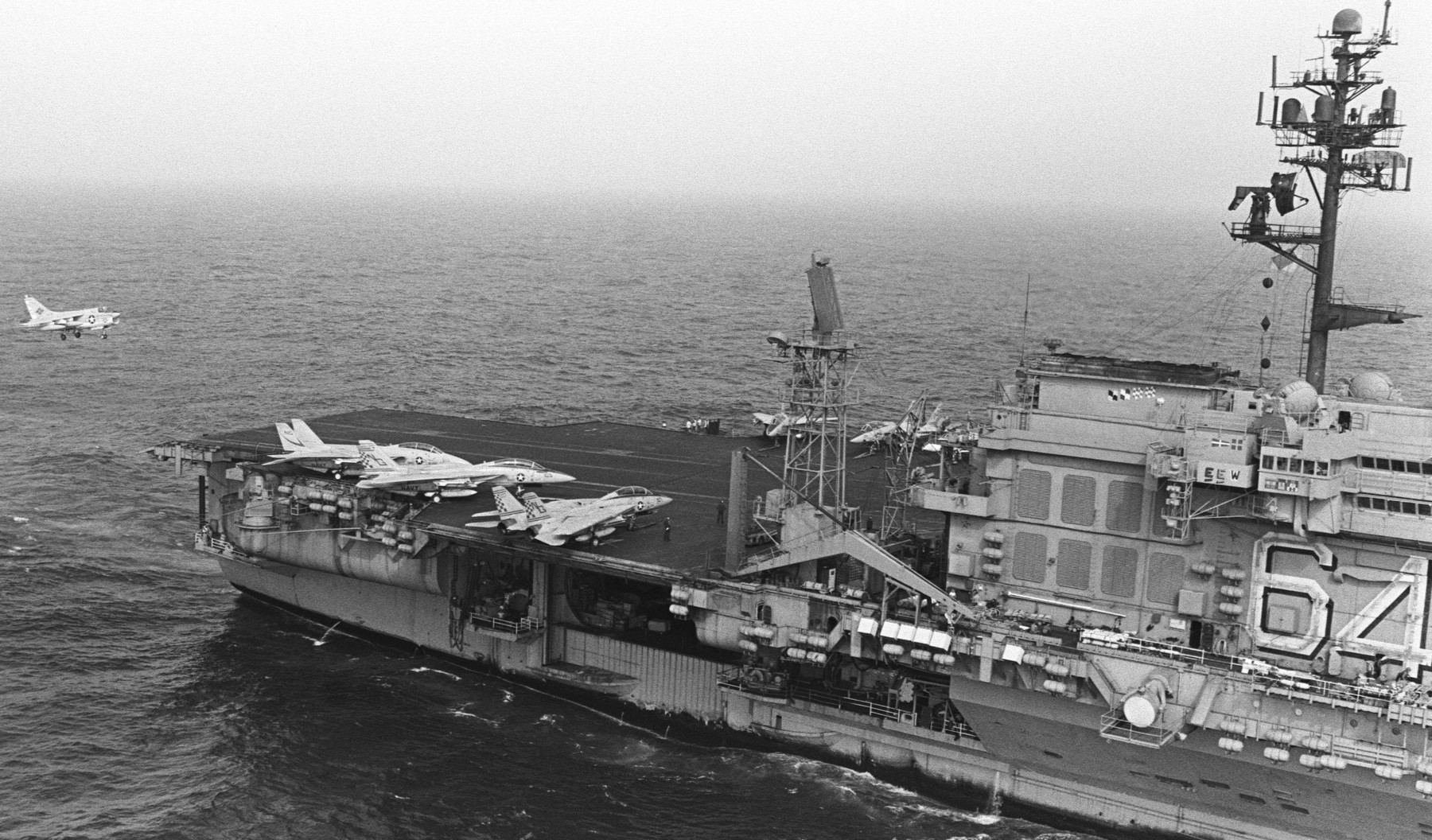 with CVW-9 embarked - July 1980 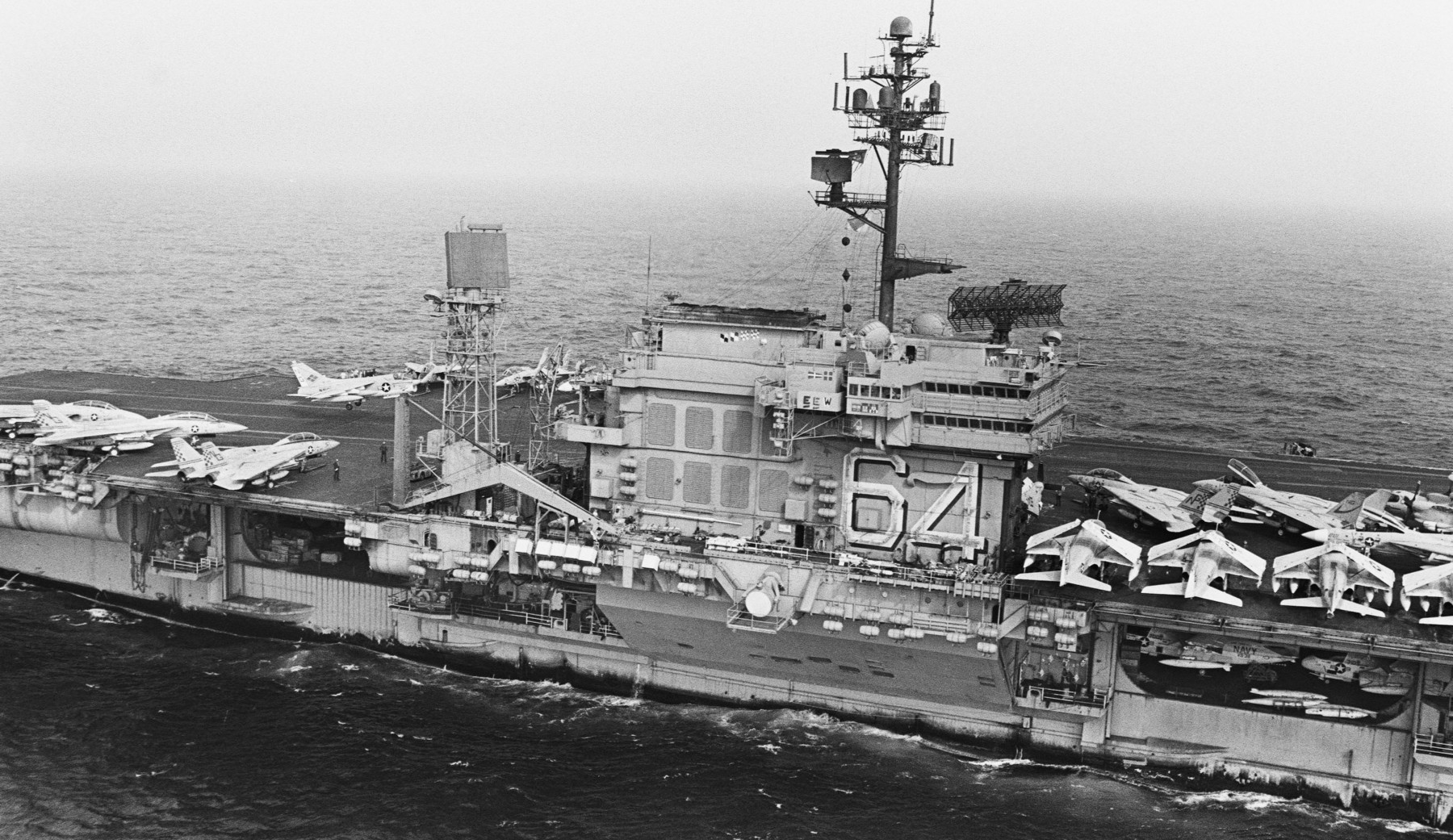 with CVW-9 embarked - July 1980 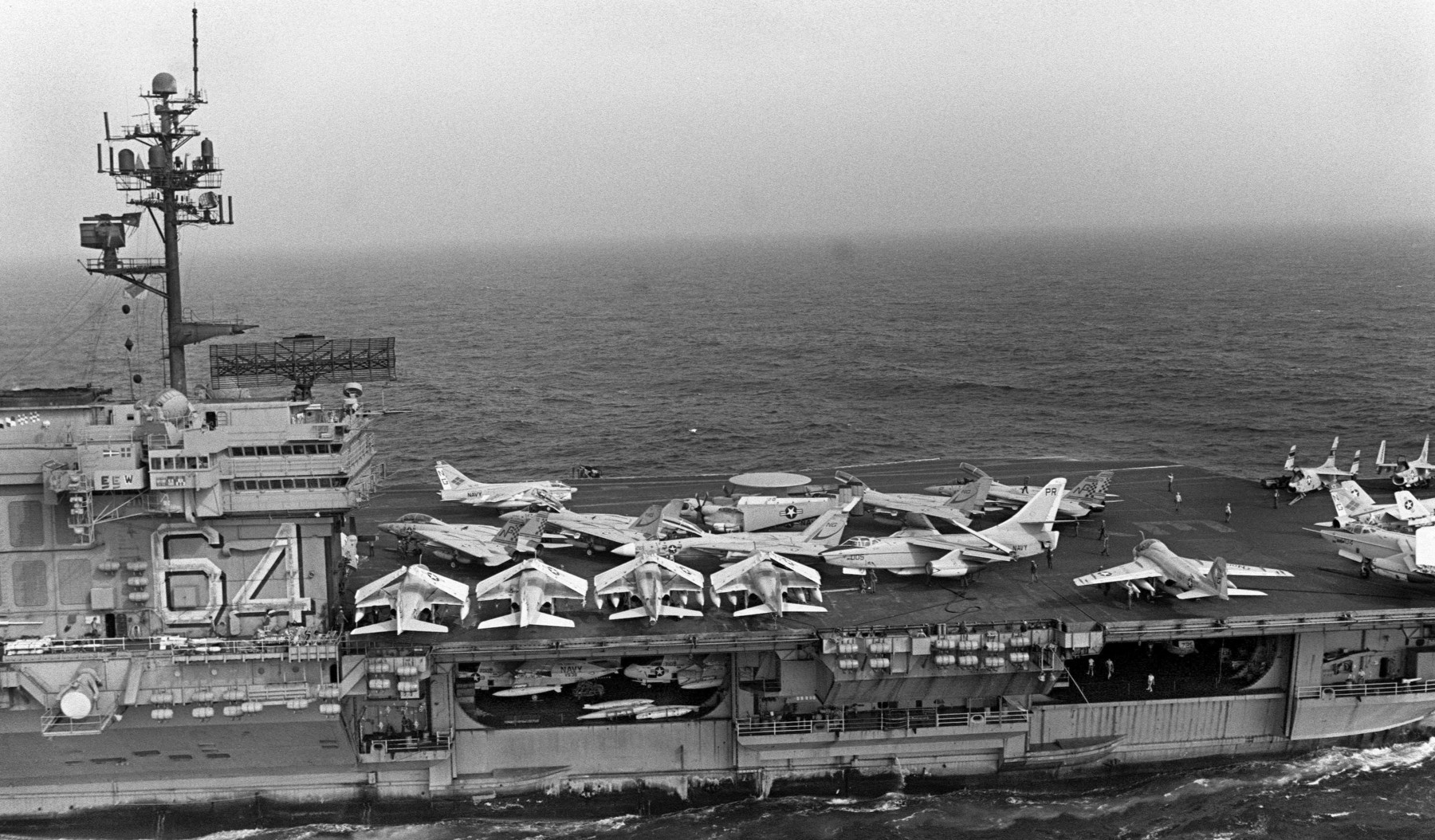 with CVW-9 embarked - July 1980 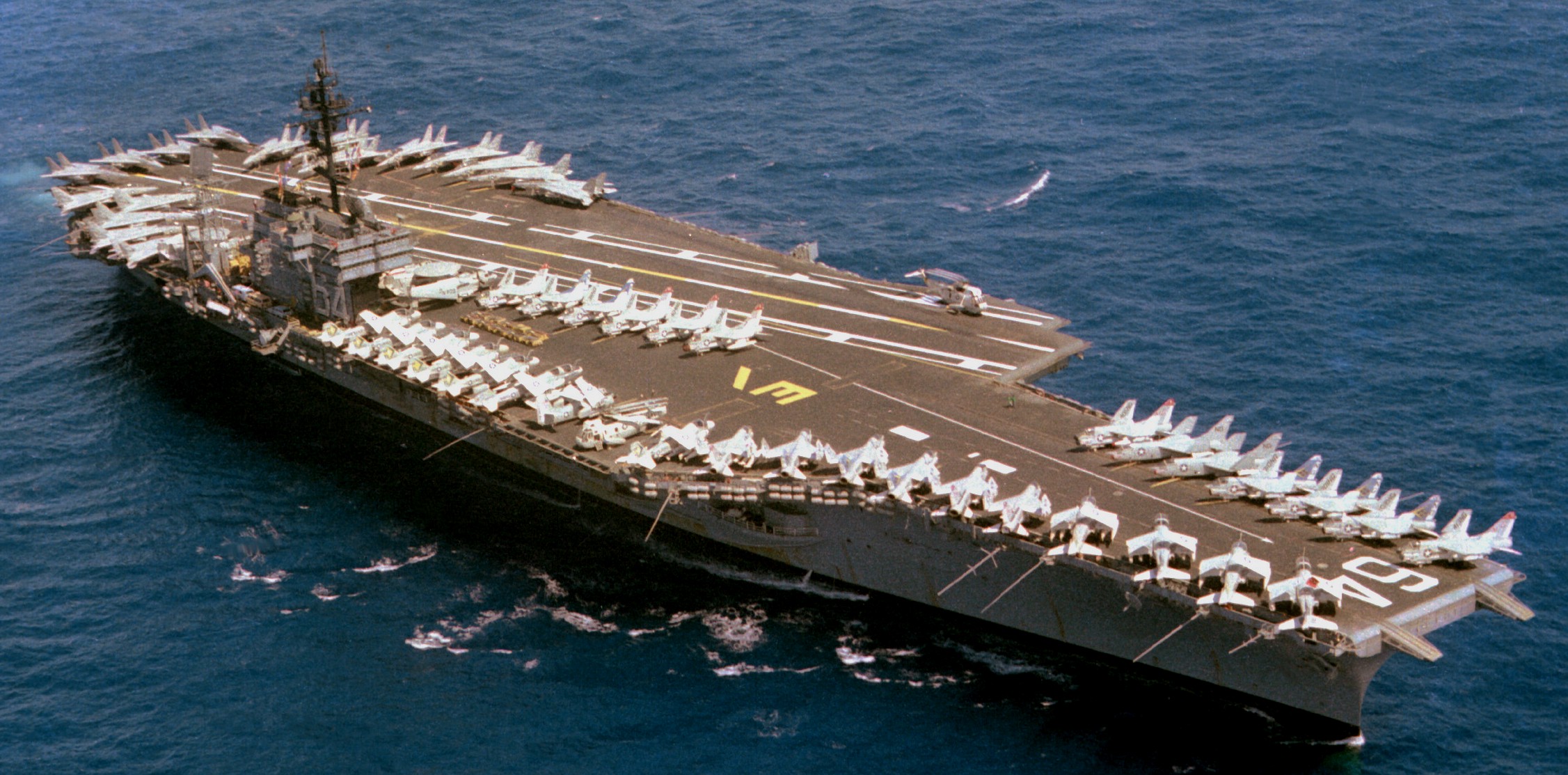 with CVW-9 embarked - May 1979 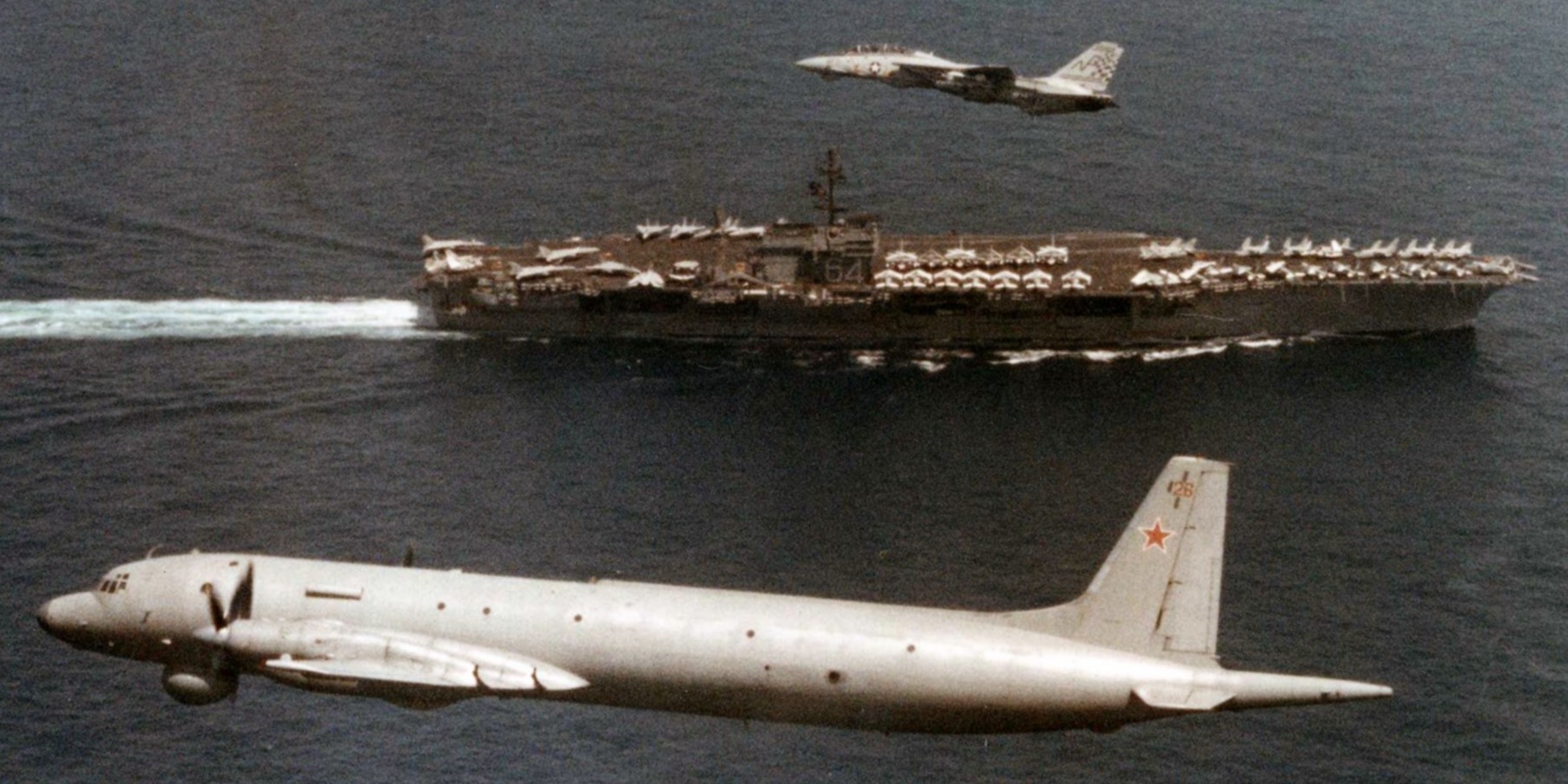 Sovjet Ilyushin Il-38 patrol aircraft over USS Constellation (CV 64) with CVW-9 embarked - 1979 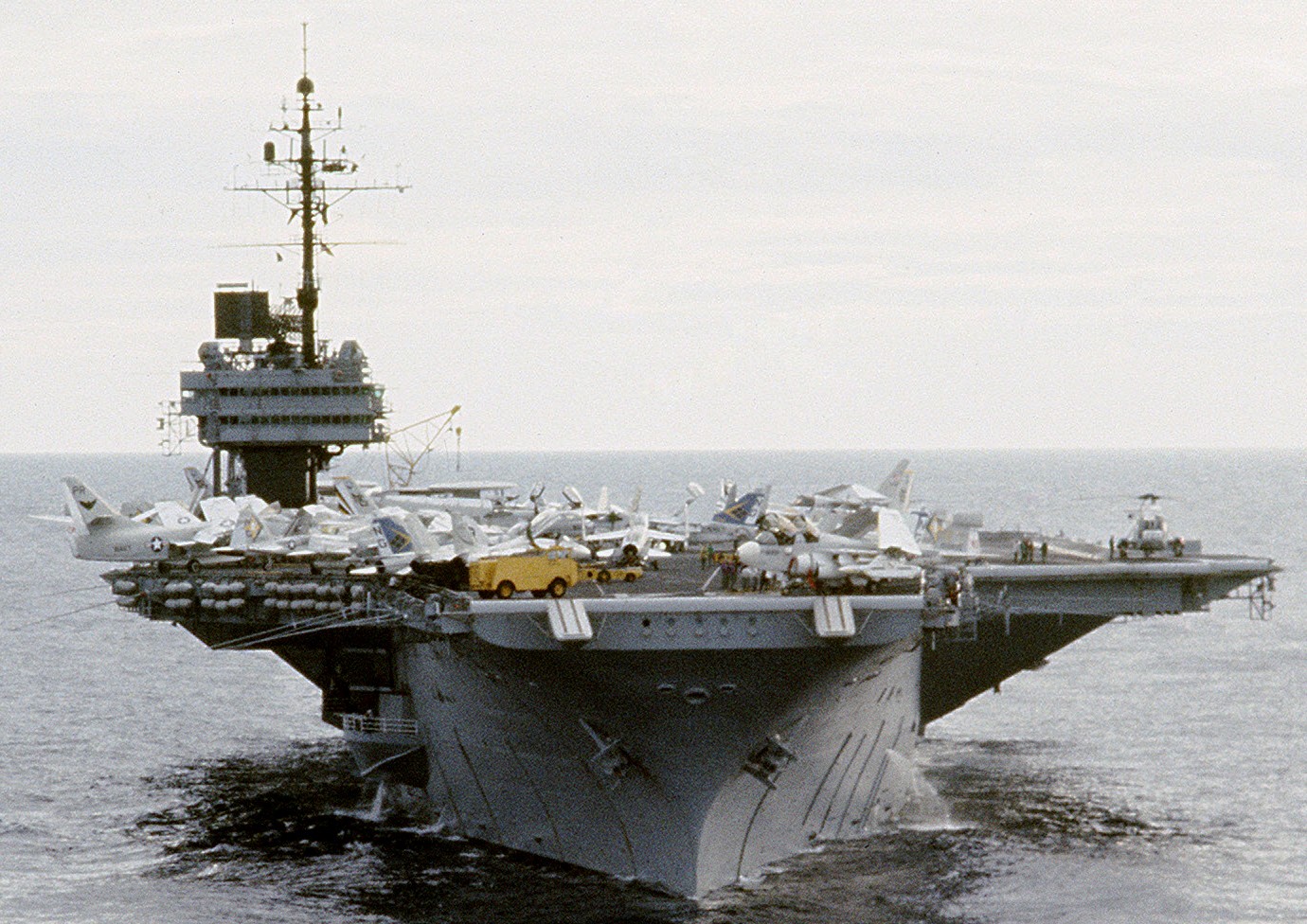 with CVW-9 embarked - 1979 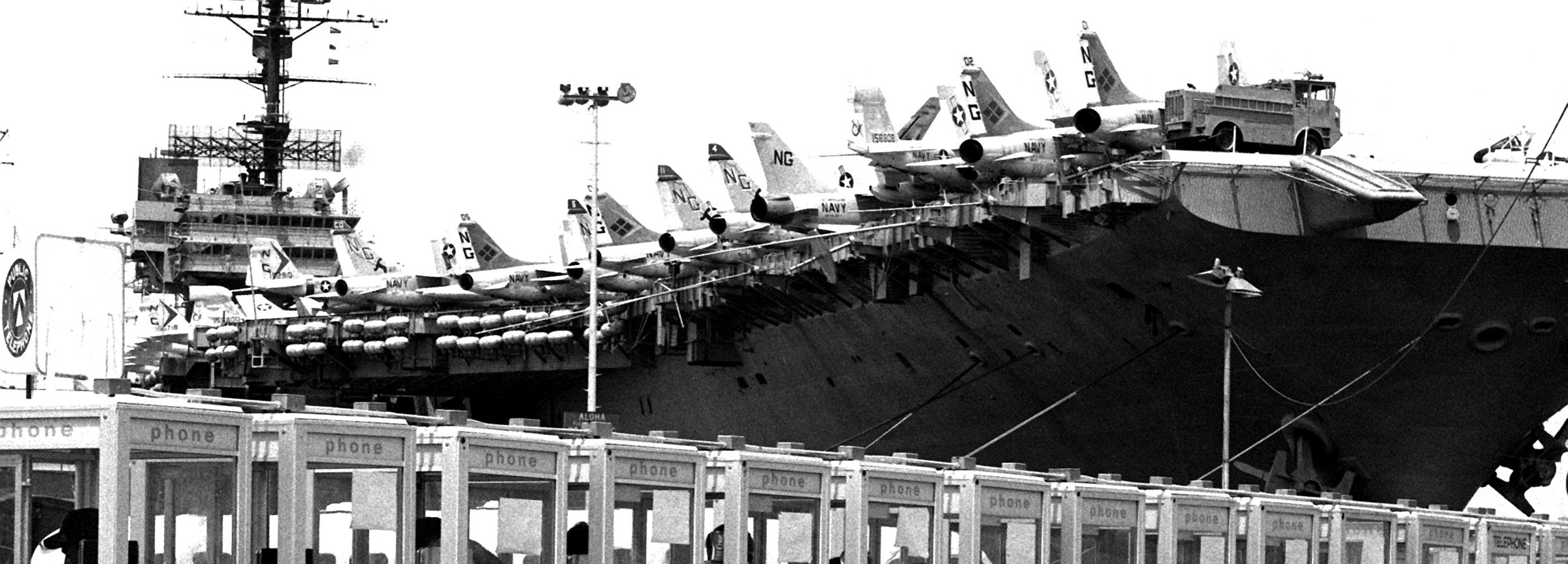 with CVW-9 embarked - Pearl Harbor, Hawaii - 1979 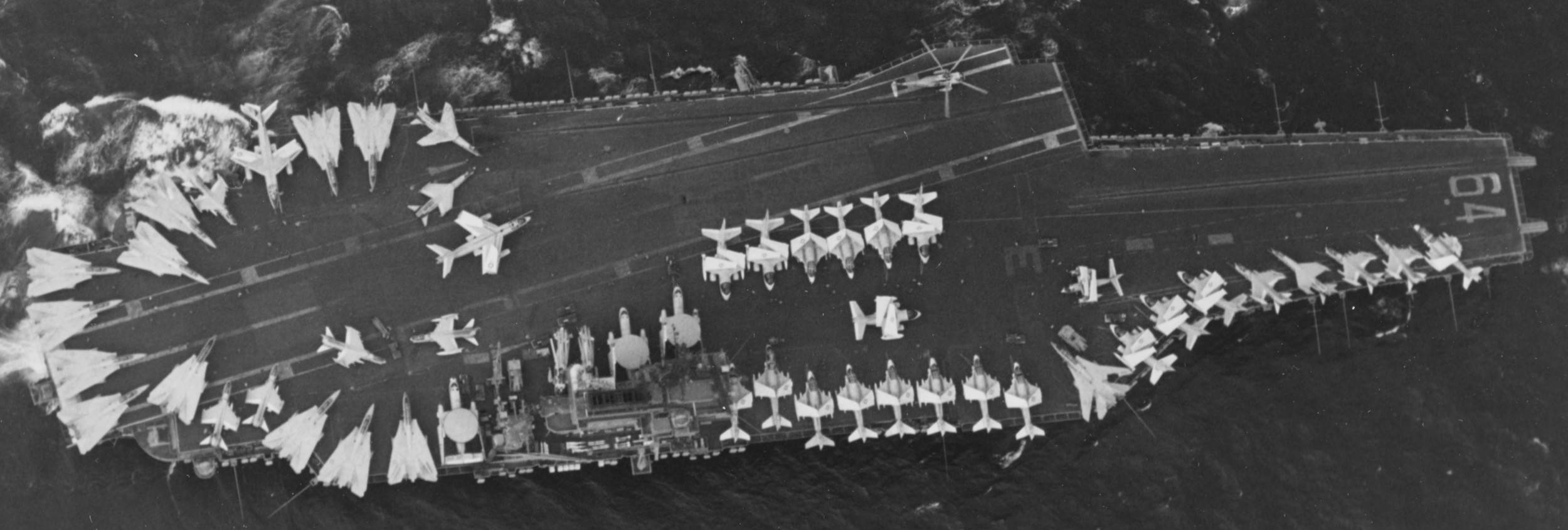 with CVW-9 embarked - December 1978 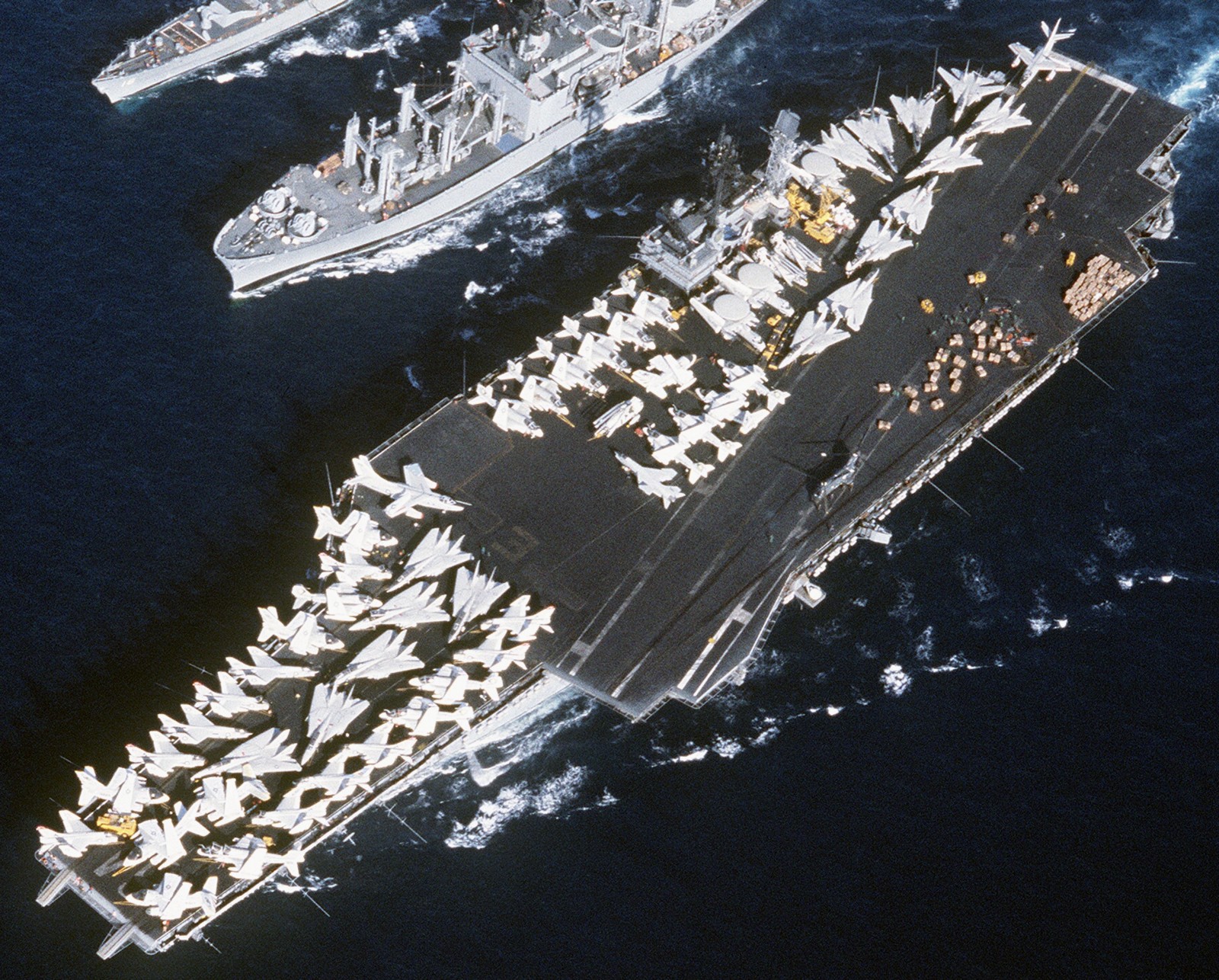 with CVW-9 embarked - December 1978 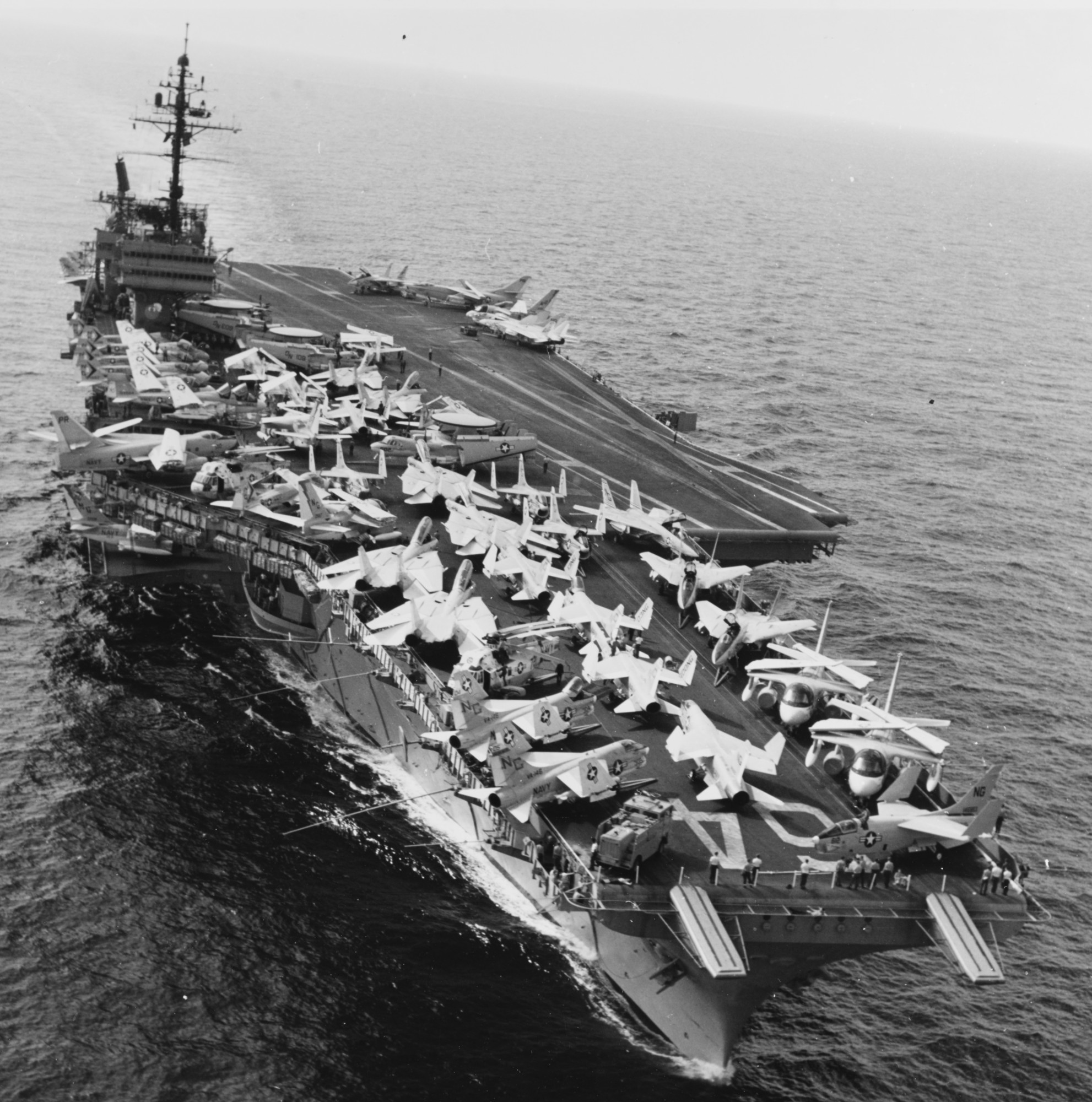 with CVW-9 embarked - July 1977 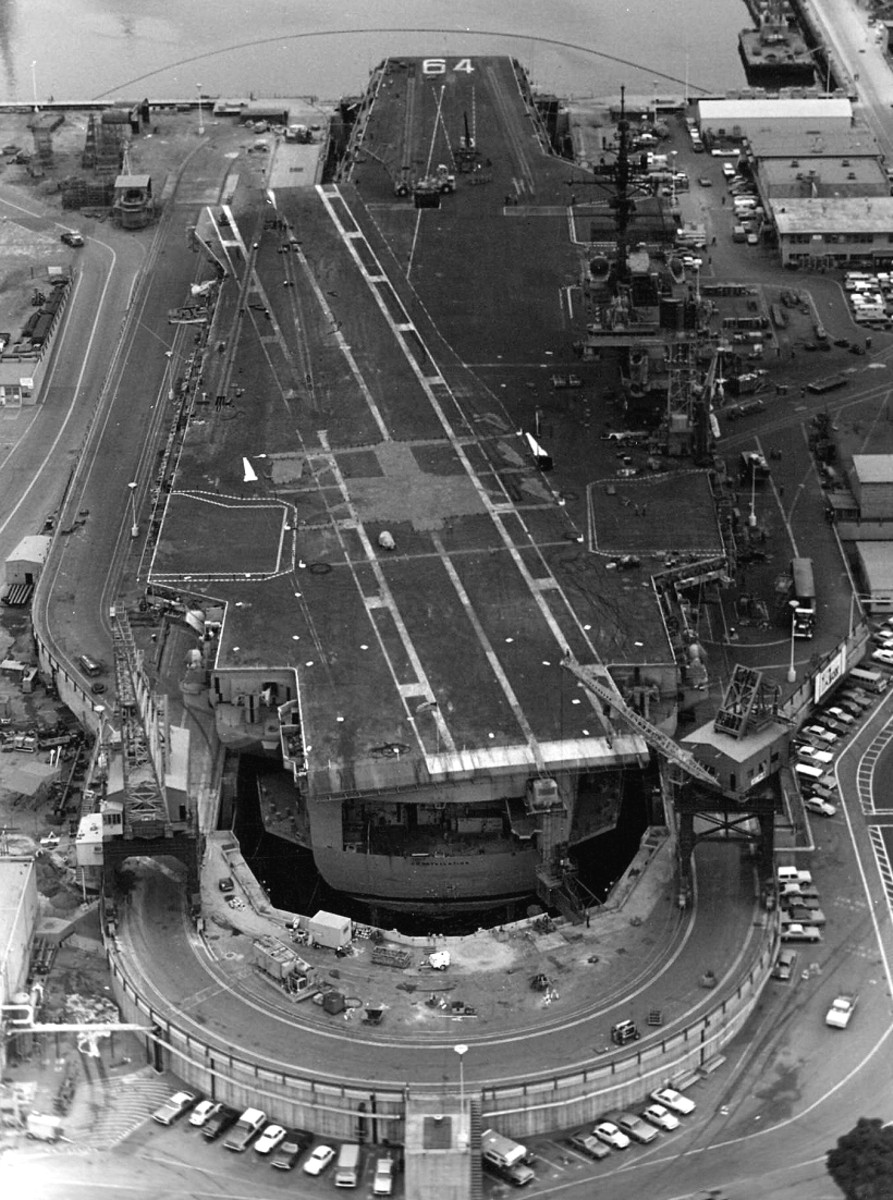 in dry dock at Long Beach Naval Shipyard, California - 1976 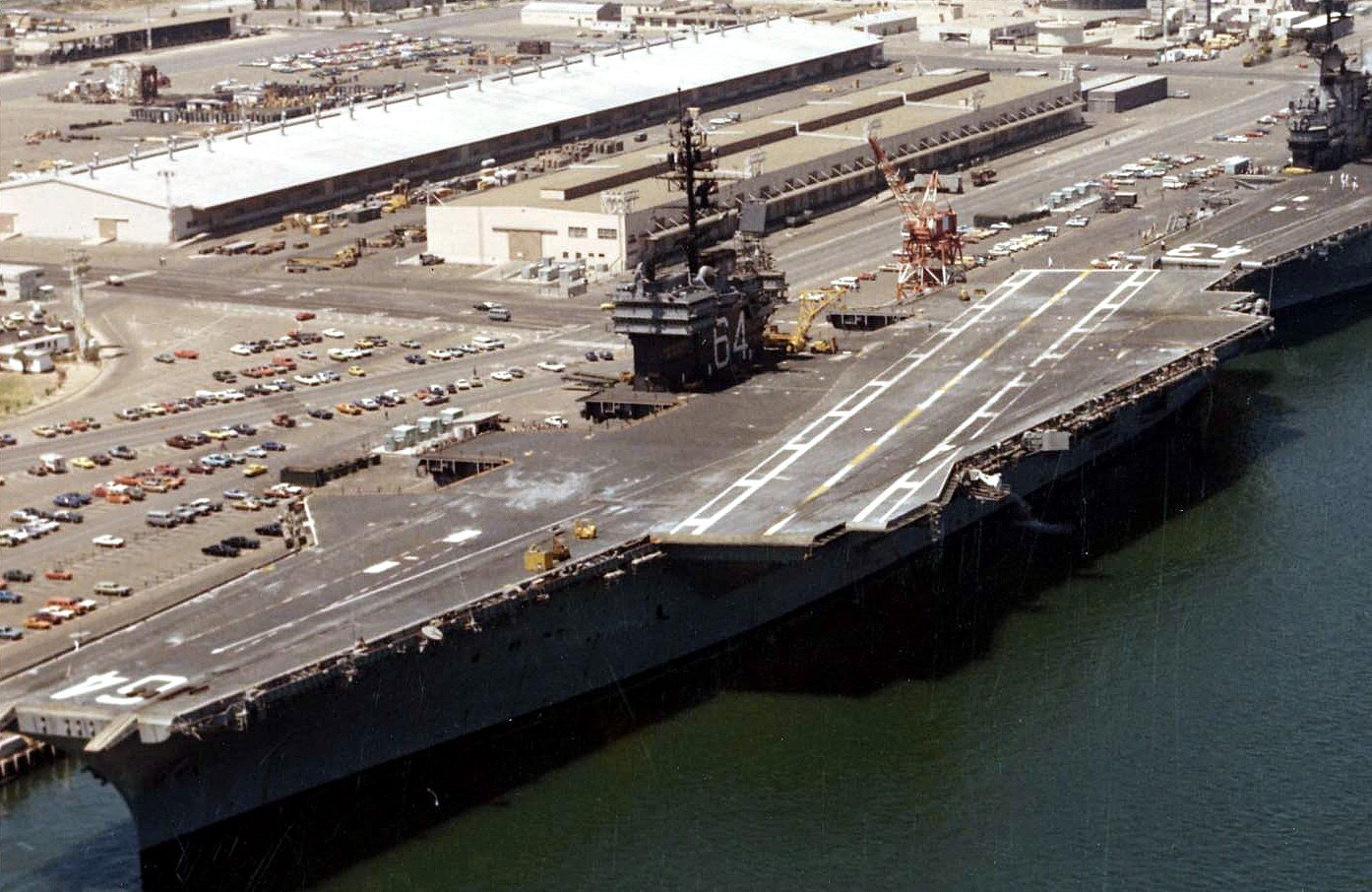 moored at NAS North Island, California - August 1976 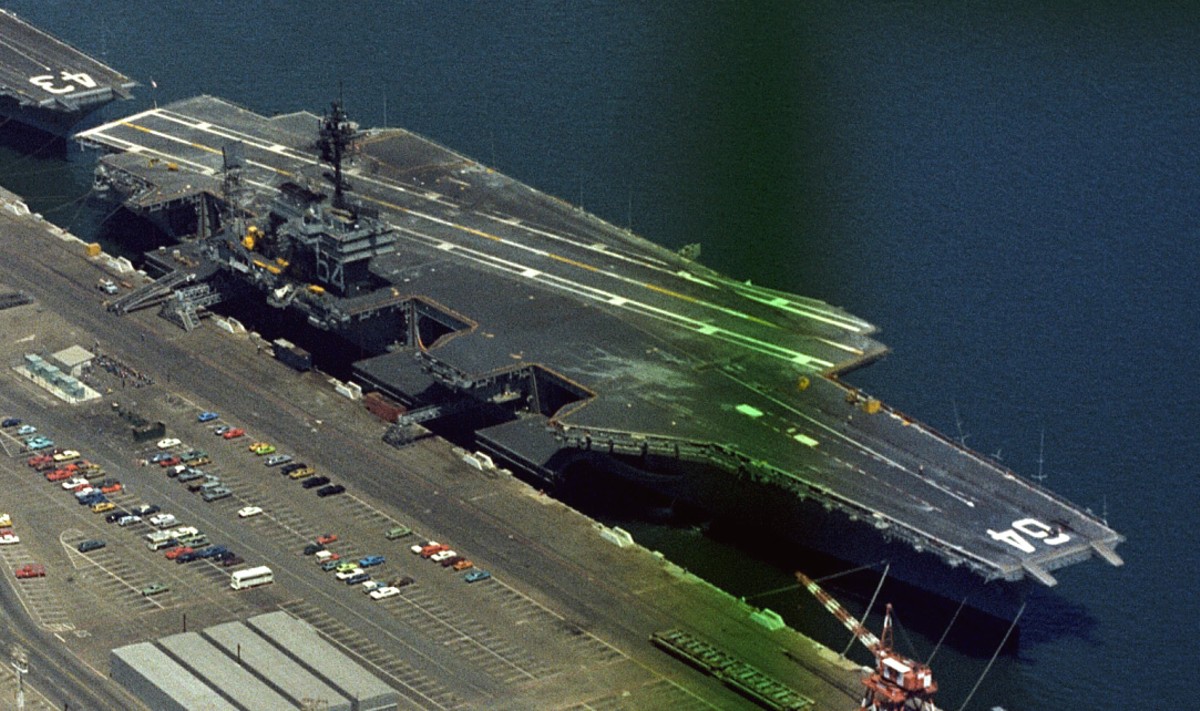 moored at NAS North Island, California - August 1976 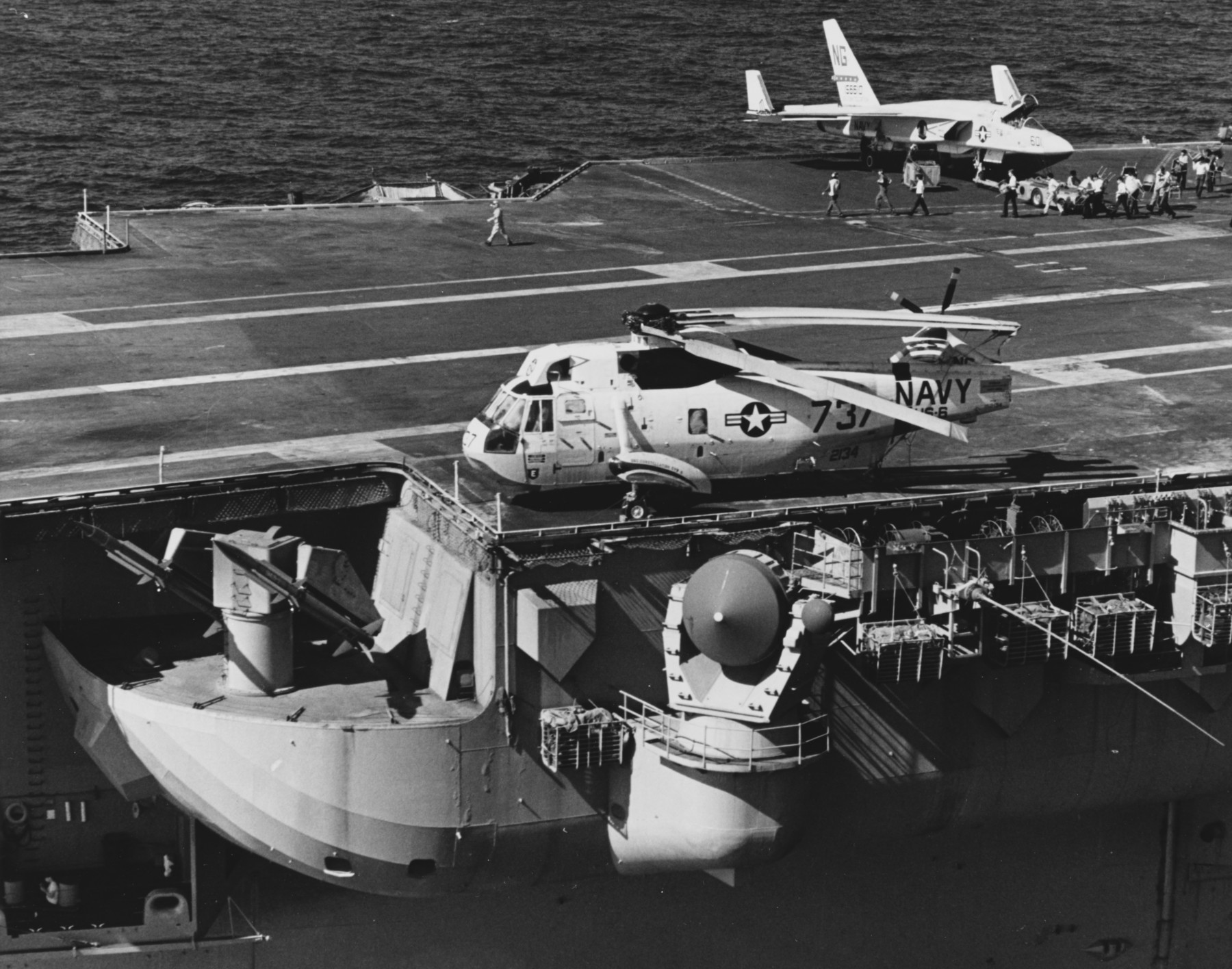 with CVW-9 embarked - note the Mk.10 launcher with RIM-2 Terrier SAM's and the AN/SPG-55 fire control radar - November 1974 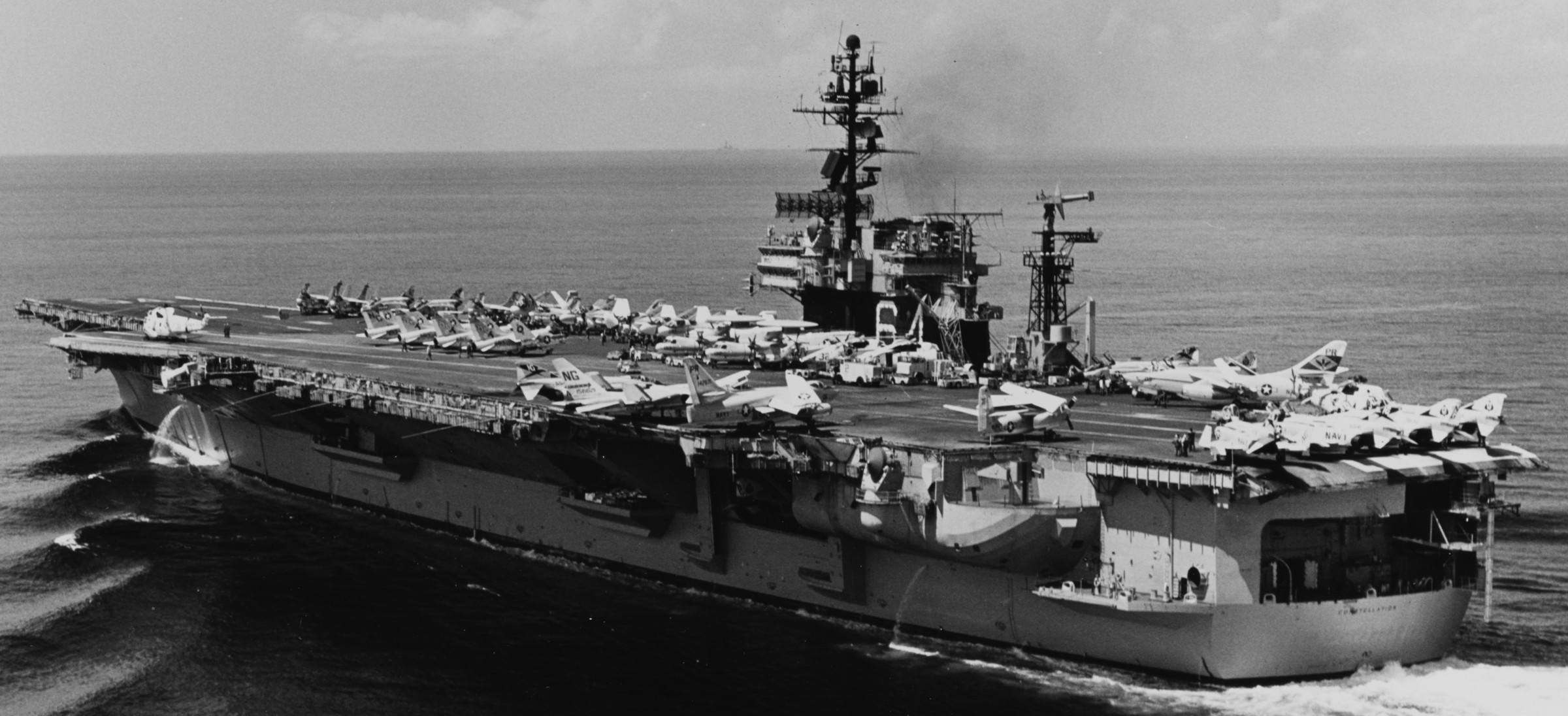 with CVW-9 embarked - South China Sea - October 1974 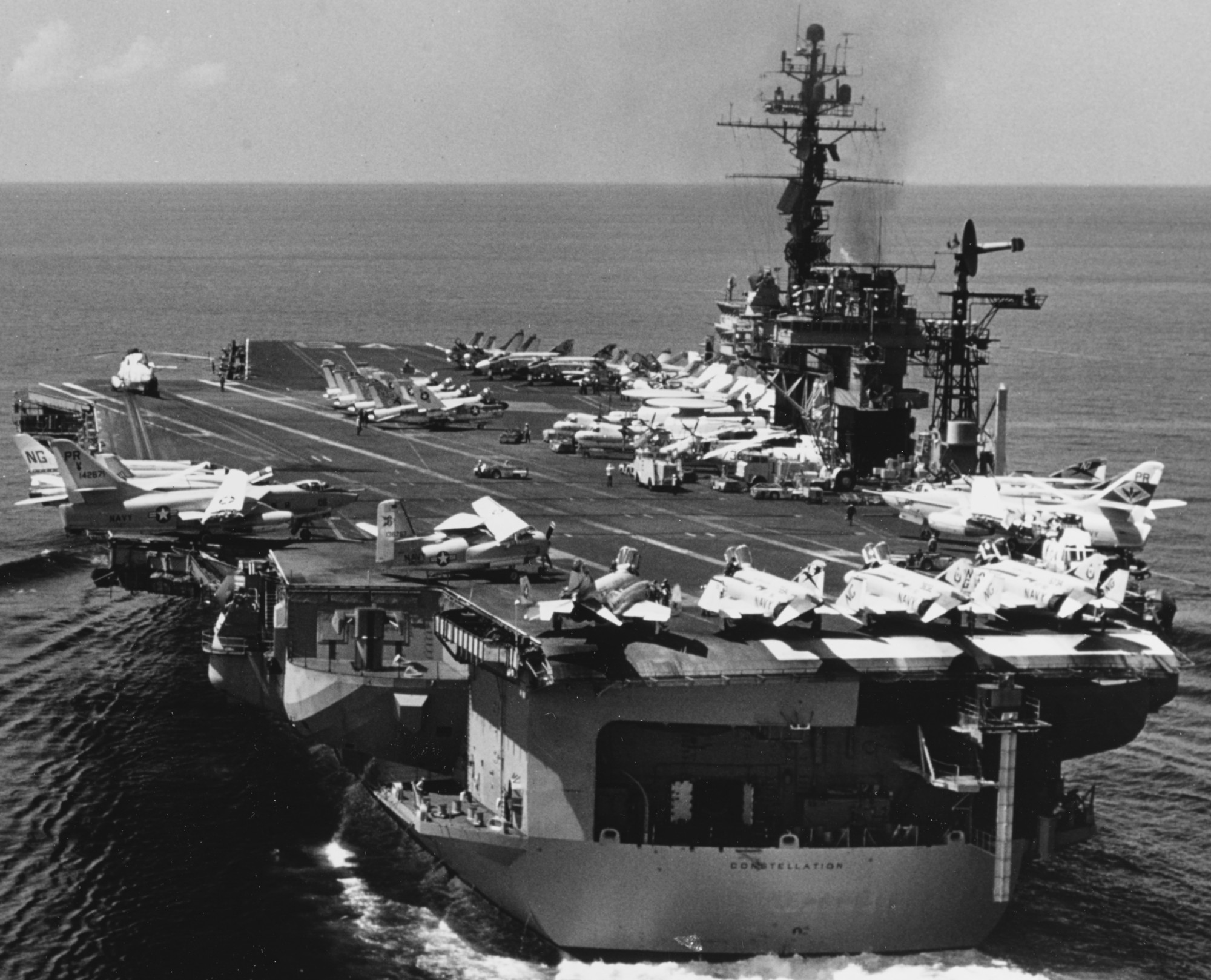 with CVW-9 embarked - South China Sea - October 1974 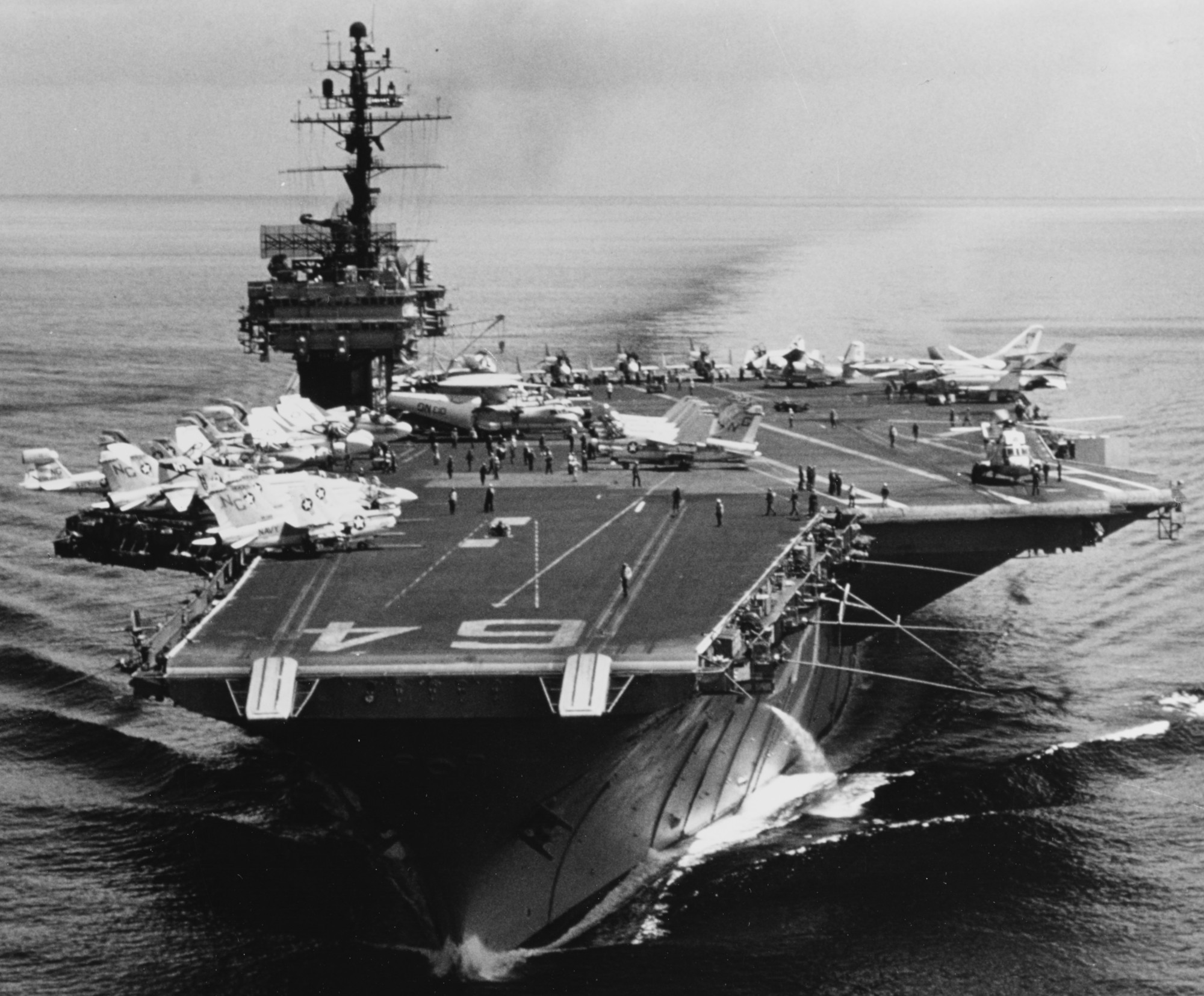 with CVW-9 embarked - South China Sea - October 1974 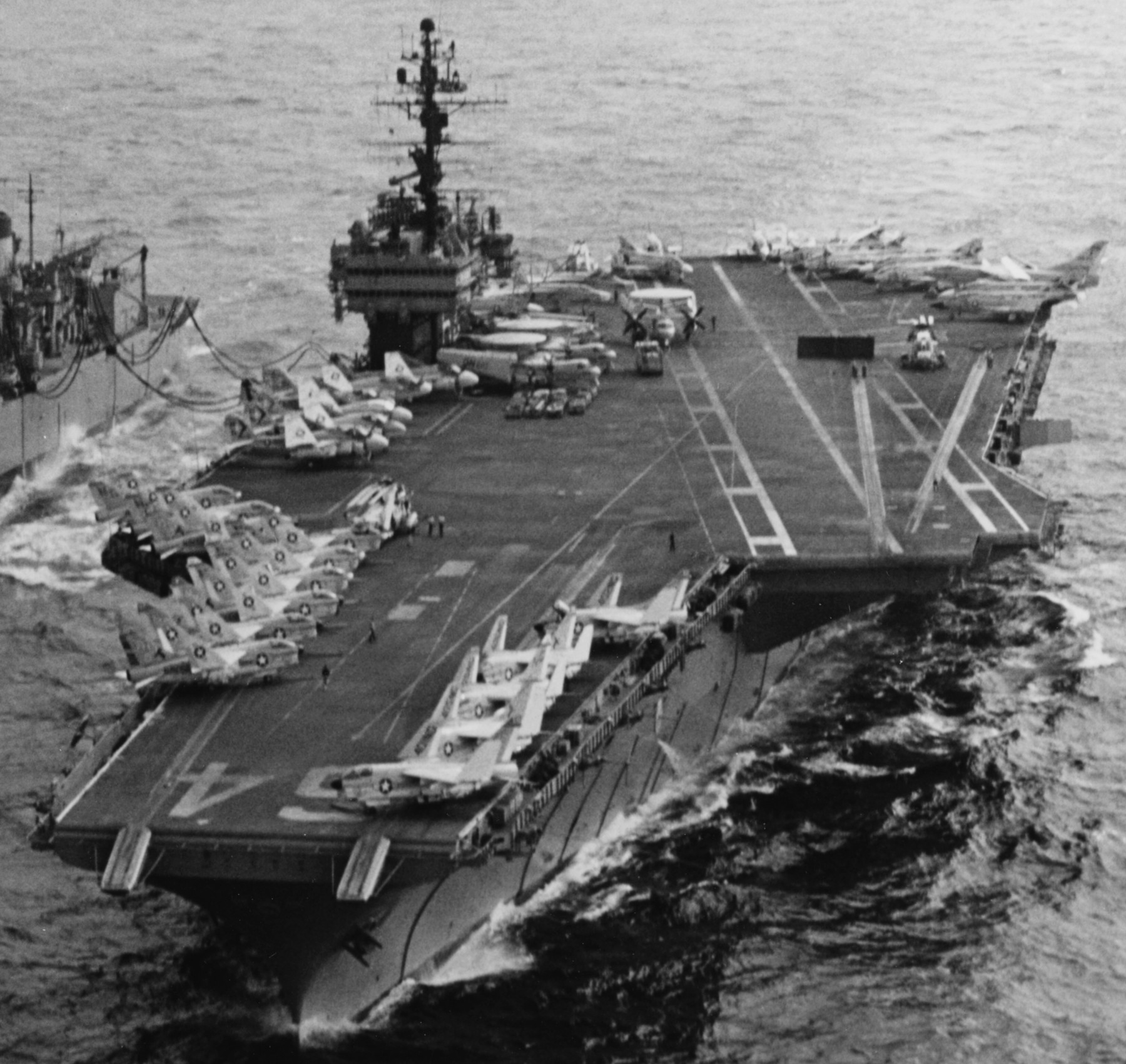 with CVW-9 embarked - South China Sea - August 1974 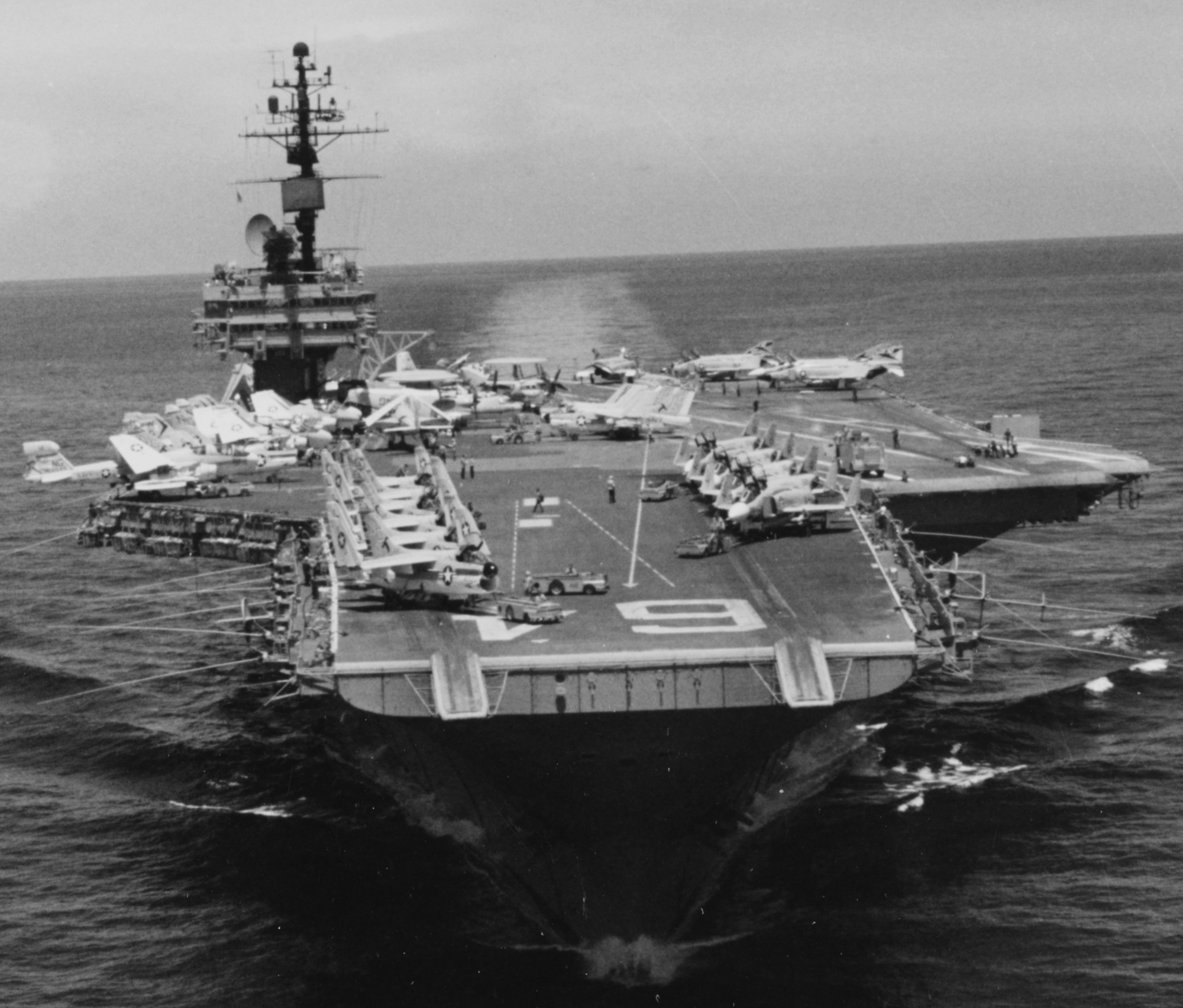 with CVW-9 embarked - South China Sea - July 1974 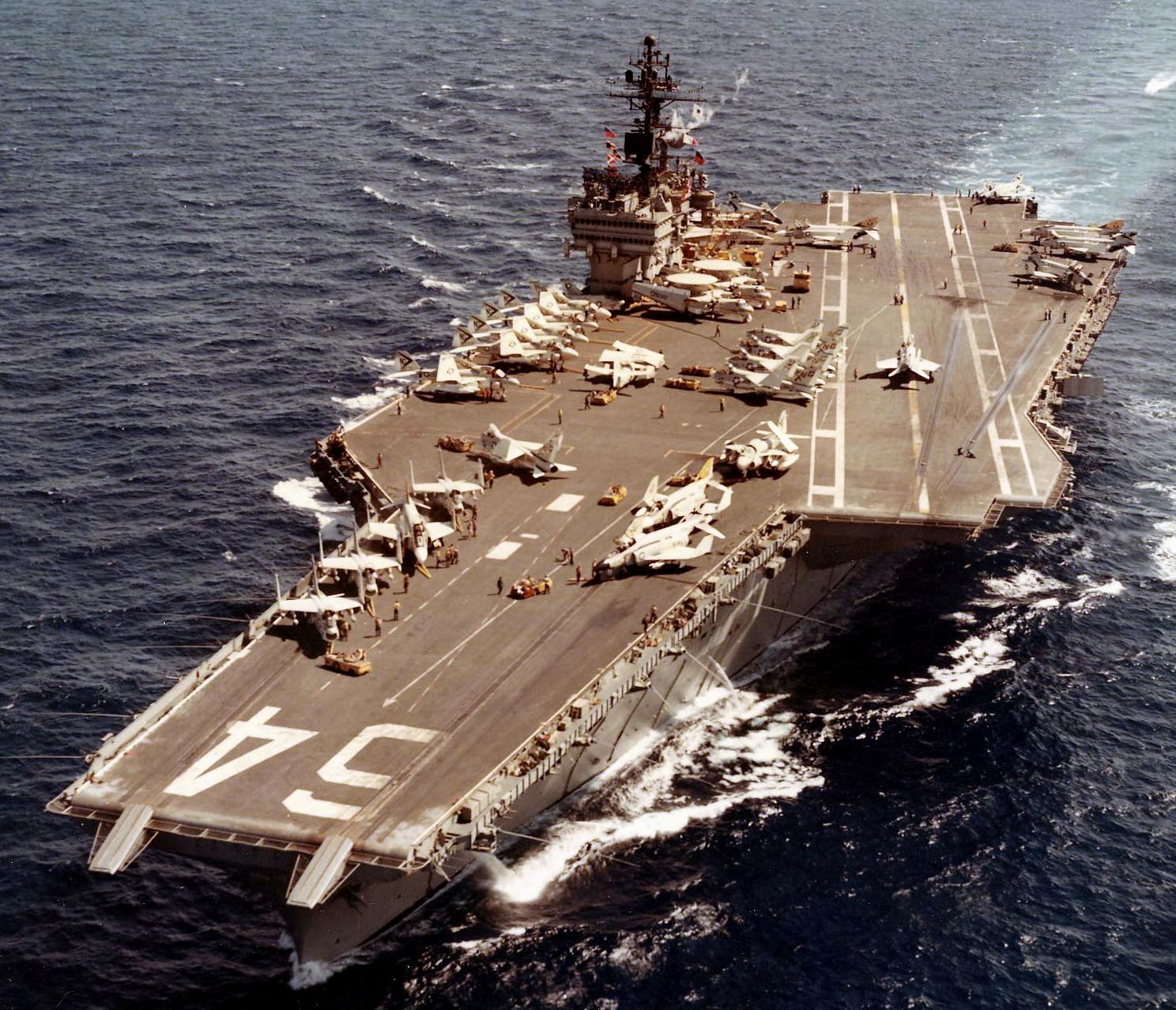 with CVW-9 embarked - Gulf of Tonkin - 1973  with CVW-9 embarked - Gulf of Tonkin - 1973 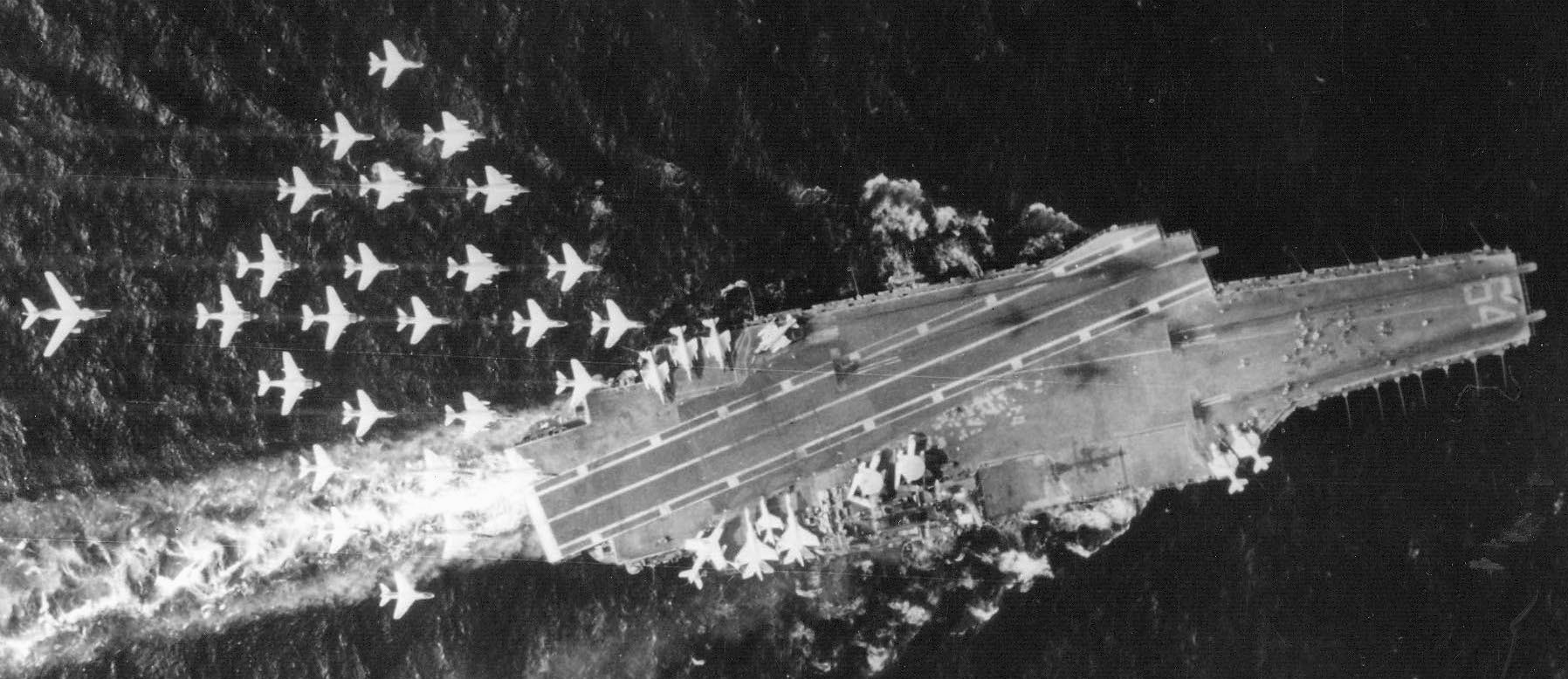 with CVW-9 embarked - early 1970's 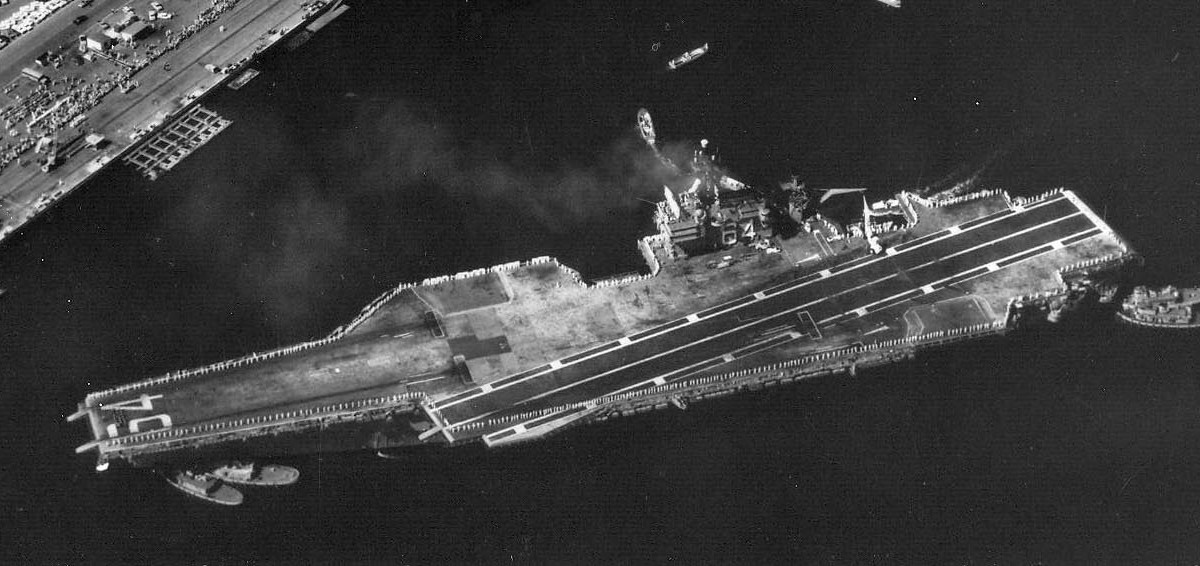 NAS North Island, California - 1973 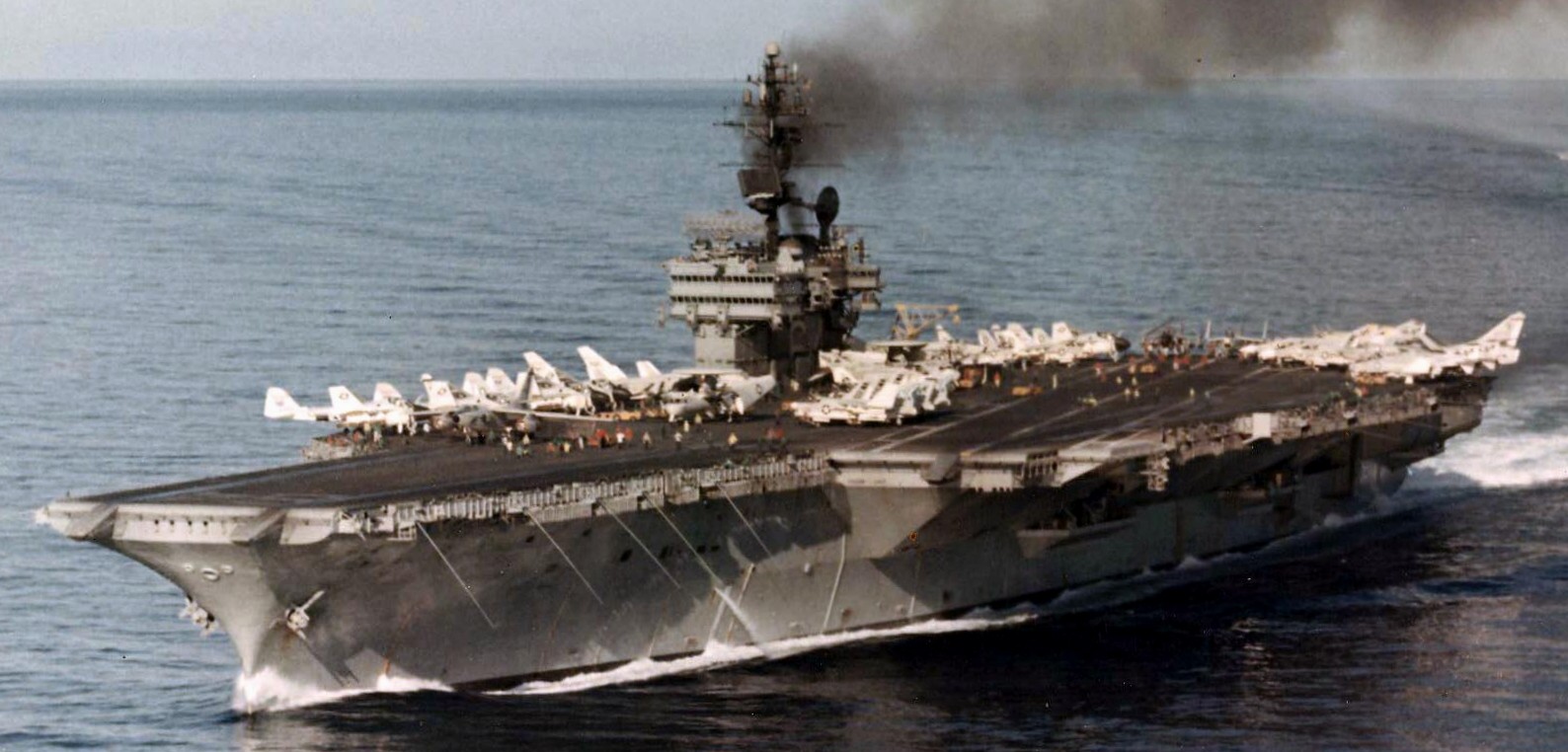 with CVW-14 embarked - Vietnam war - 1968 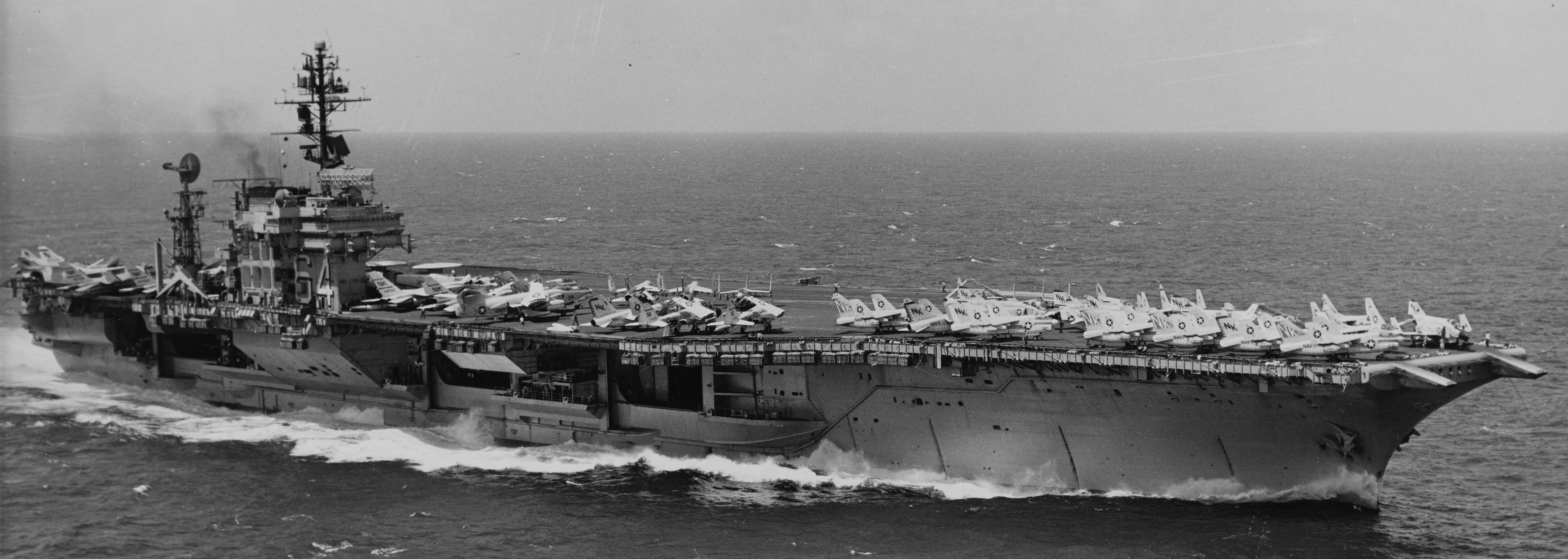 with CVW-14 embarked - Gulf of Tonkin - 1968  with CVW-14 embarked - Gulf of Tonkin - 1968 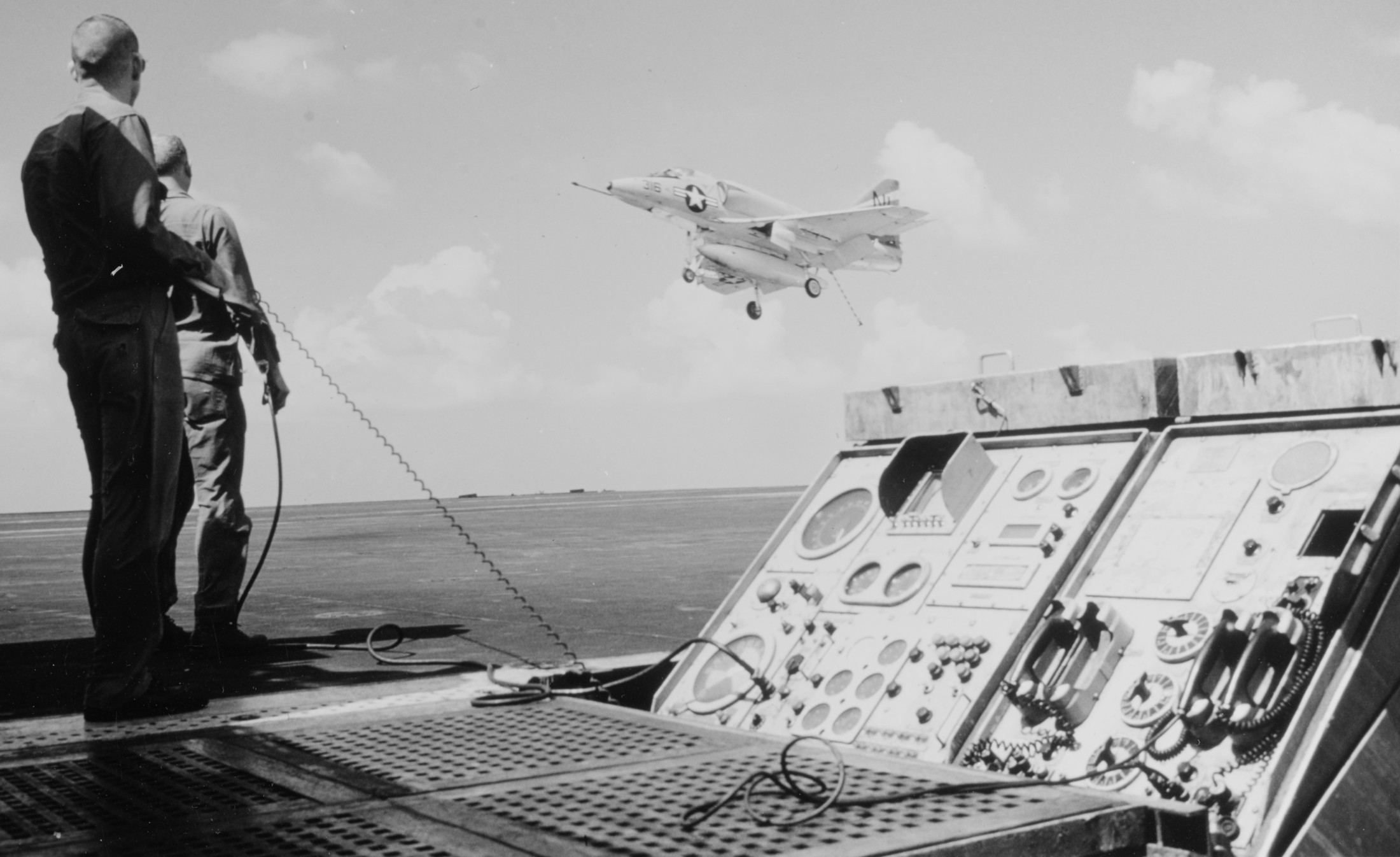 landing signal officer (LSO) console - with CVW-15 embarked - Vietnam War - October 1966 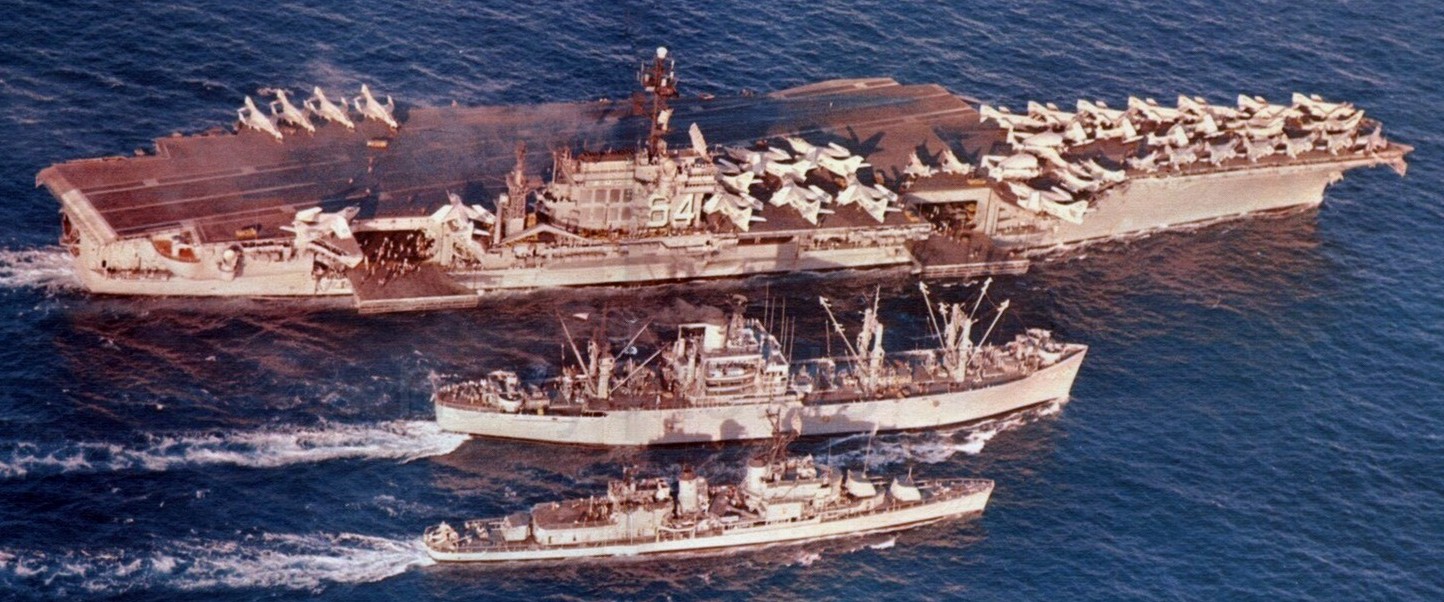 with CVW-14 embarked - Pacific Ocean - 1964 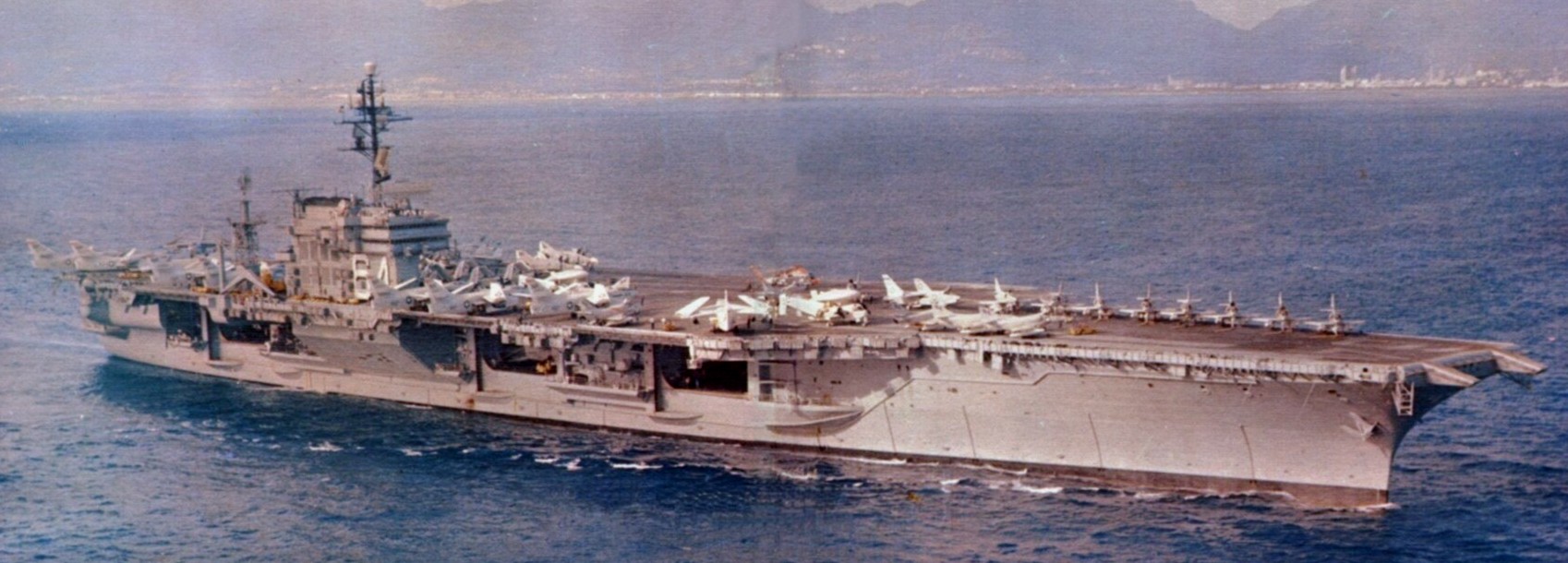 with CVW-14 embarked - 1964 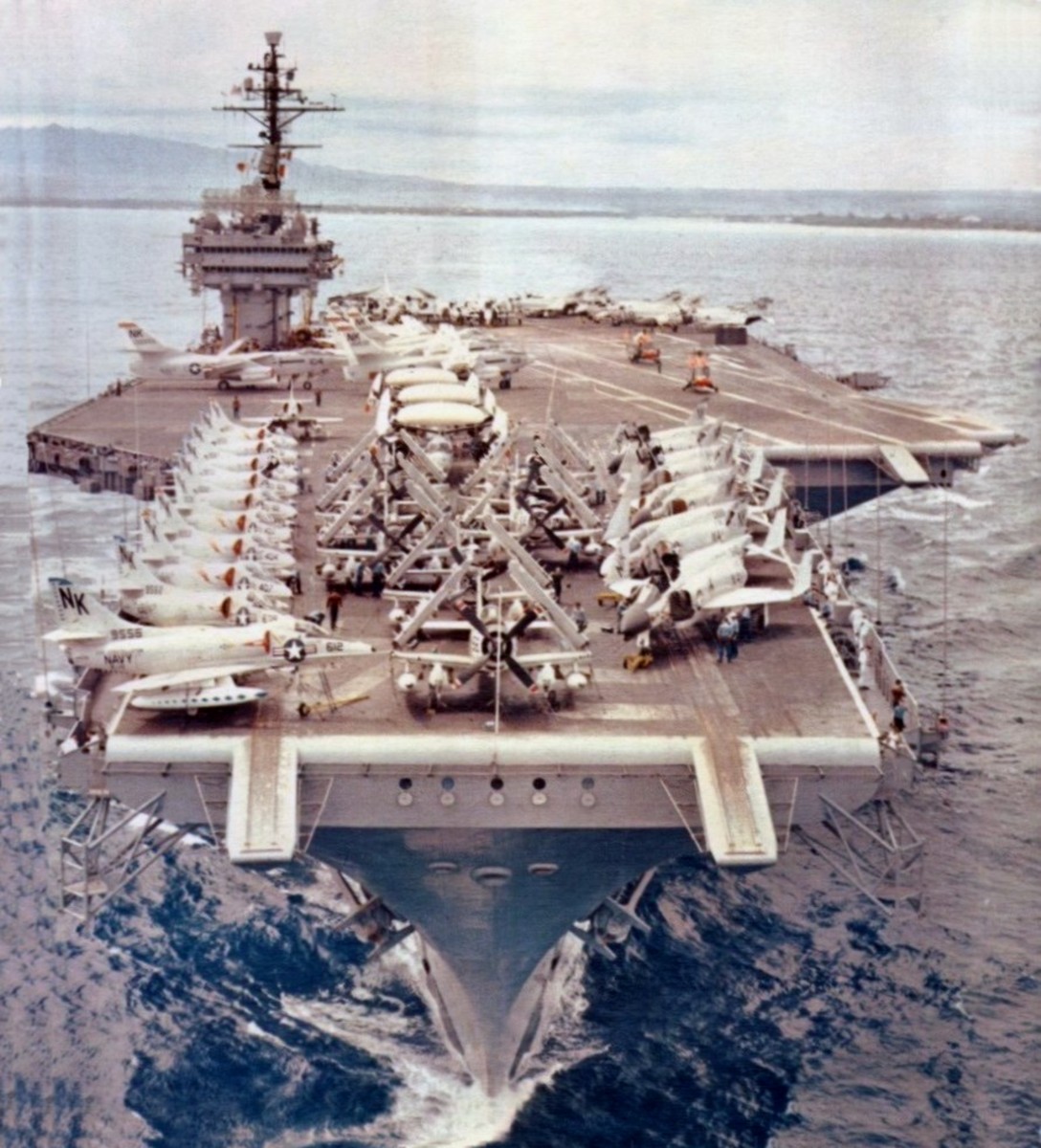 with CVW-14 embarked - 1964 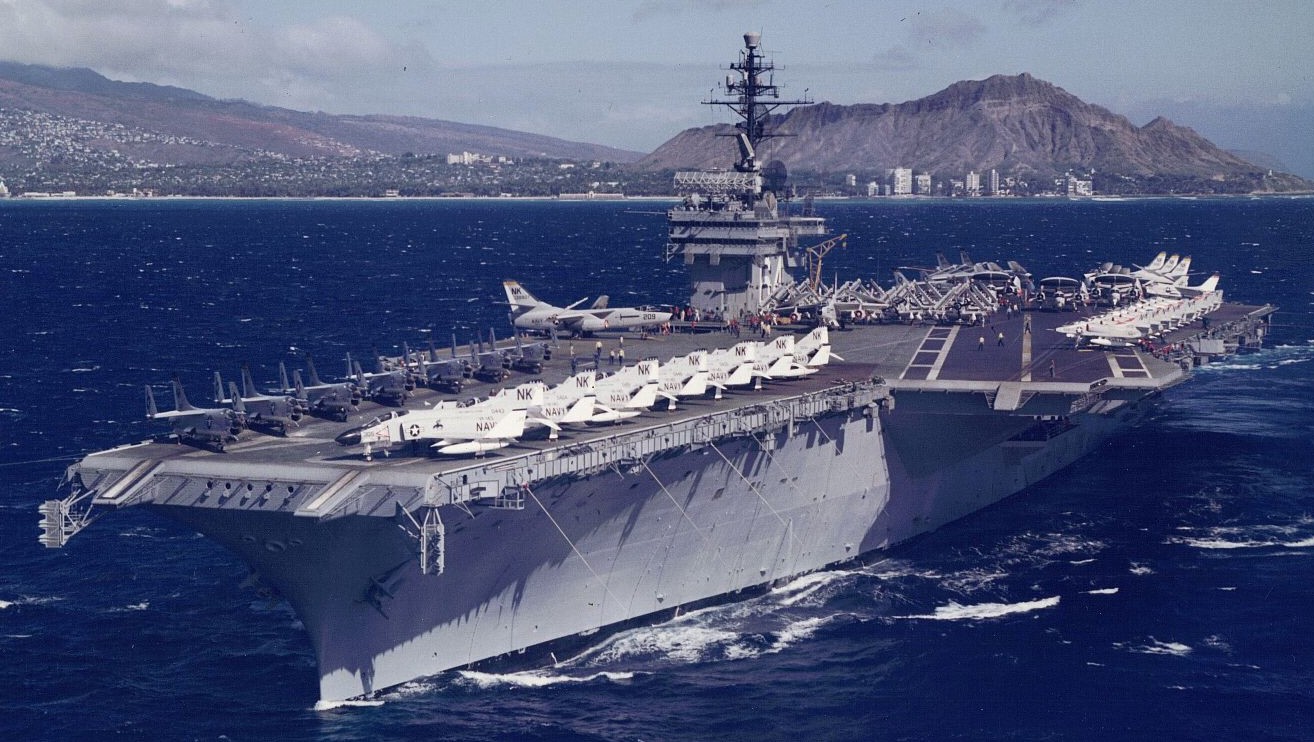 with CVG-14 embarked - off Hawaii - 1963 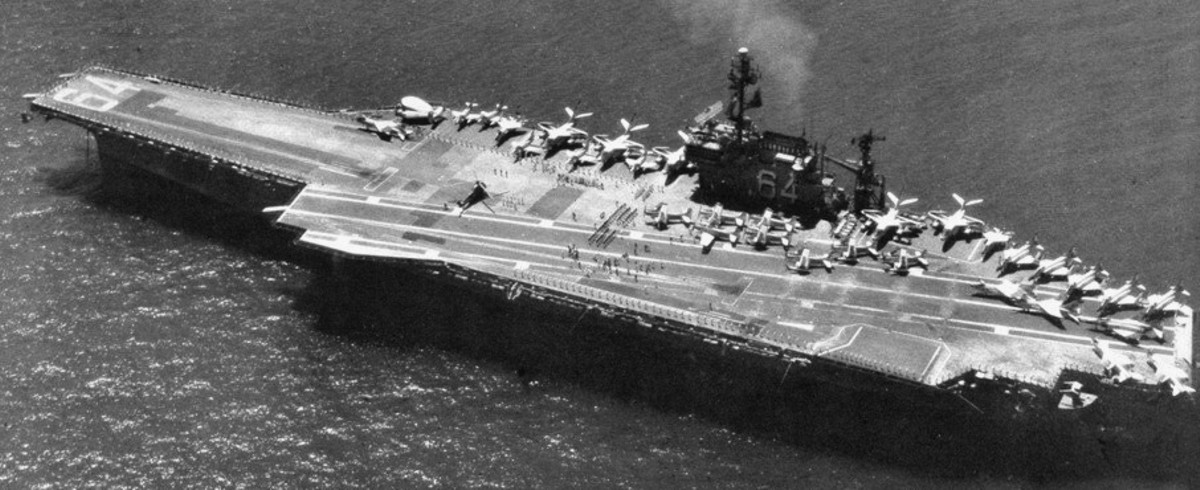 with CVG-14 embarked - off Okinawa, Japan - 1963 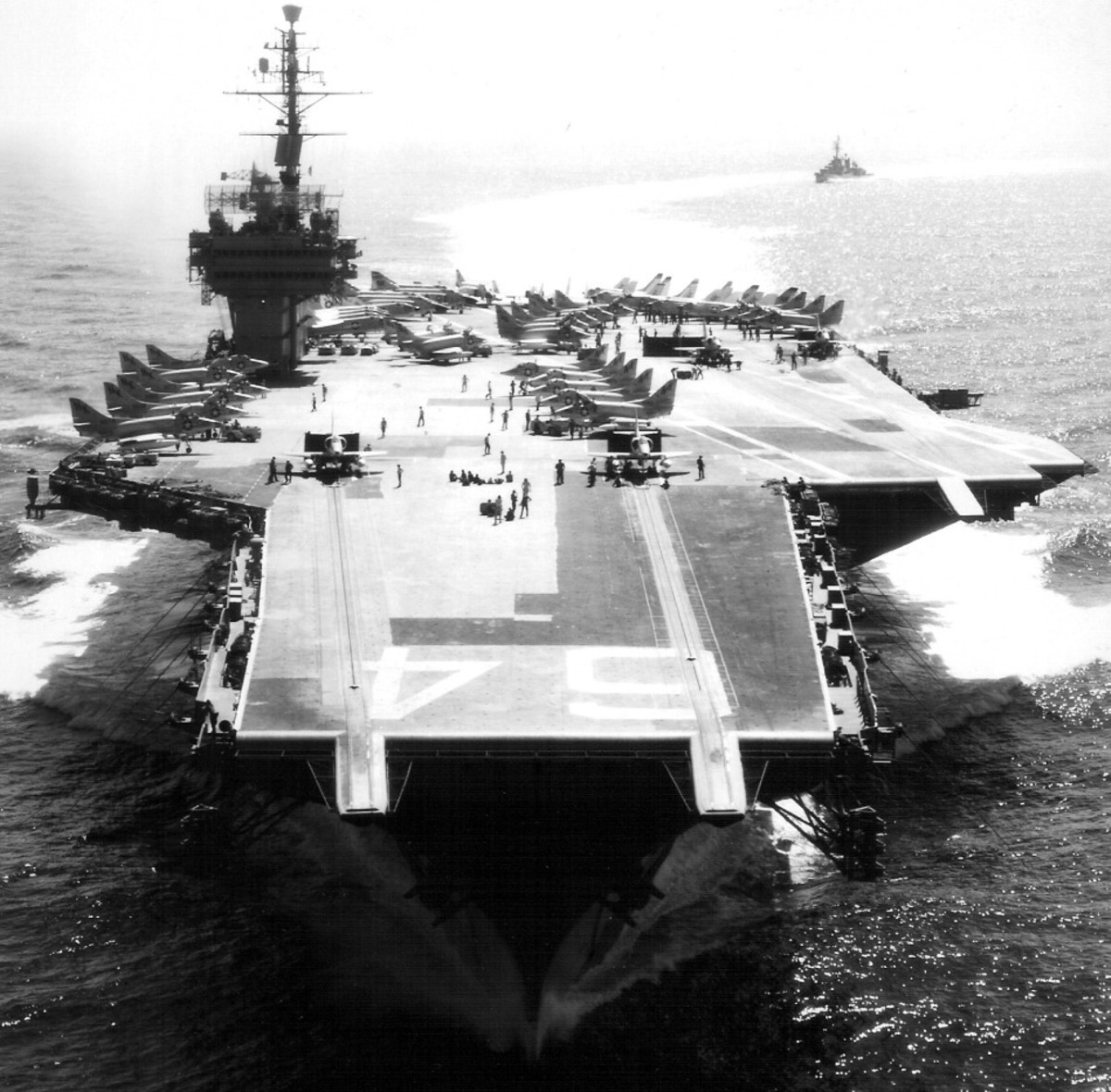 with CVG-14 embarked - 1963 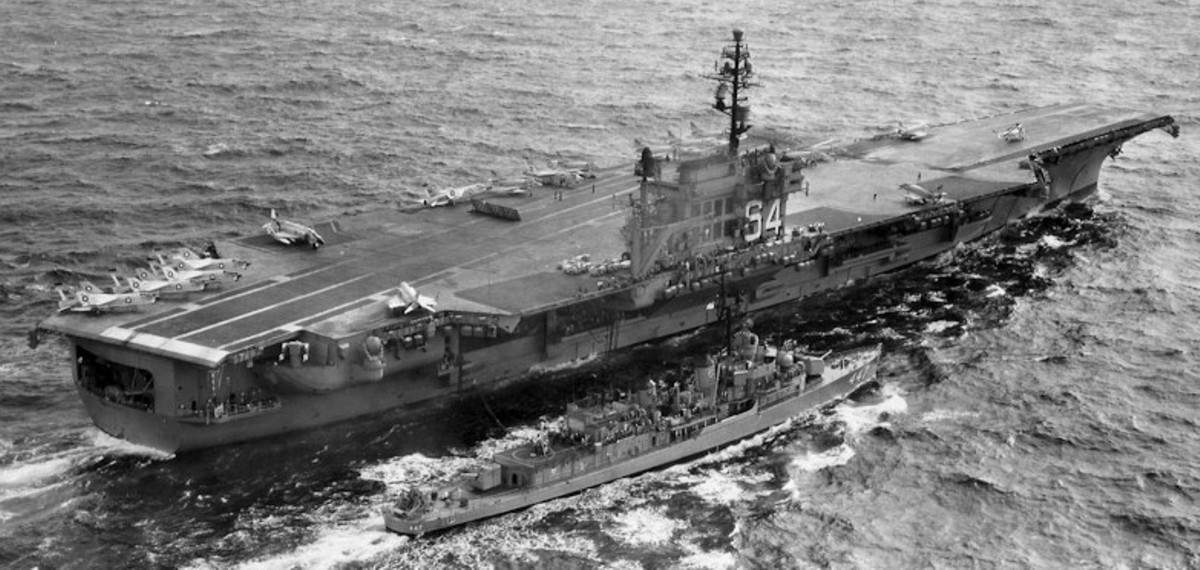 with CVG-14 embarked - 1962 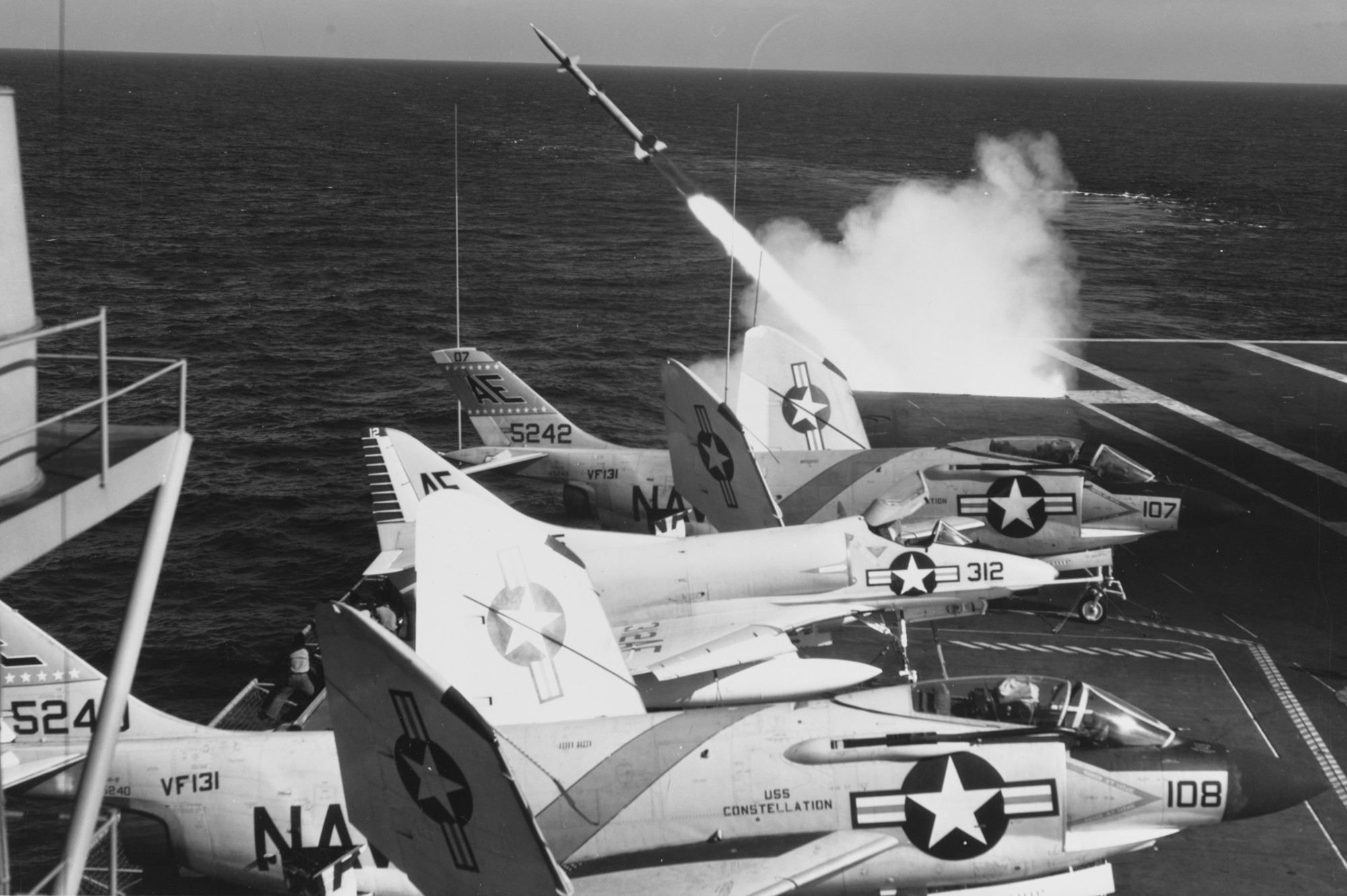 with CVG-13 embarked - firing an RIM-2 Terrier SAM missile - off Puerto Rico - April 1962 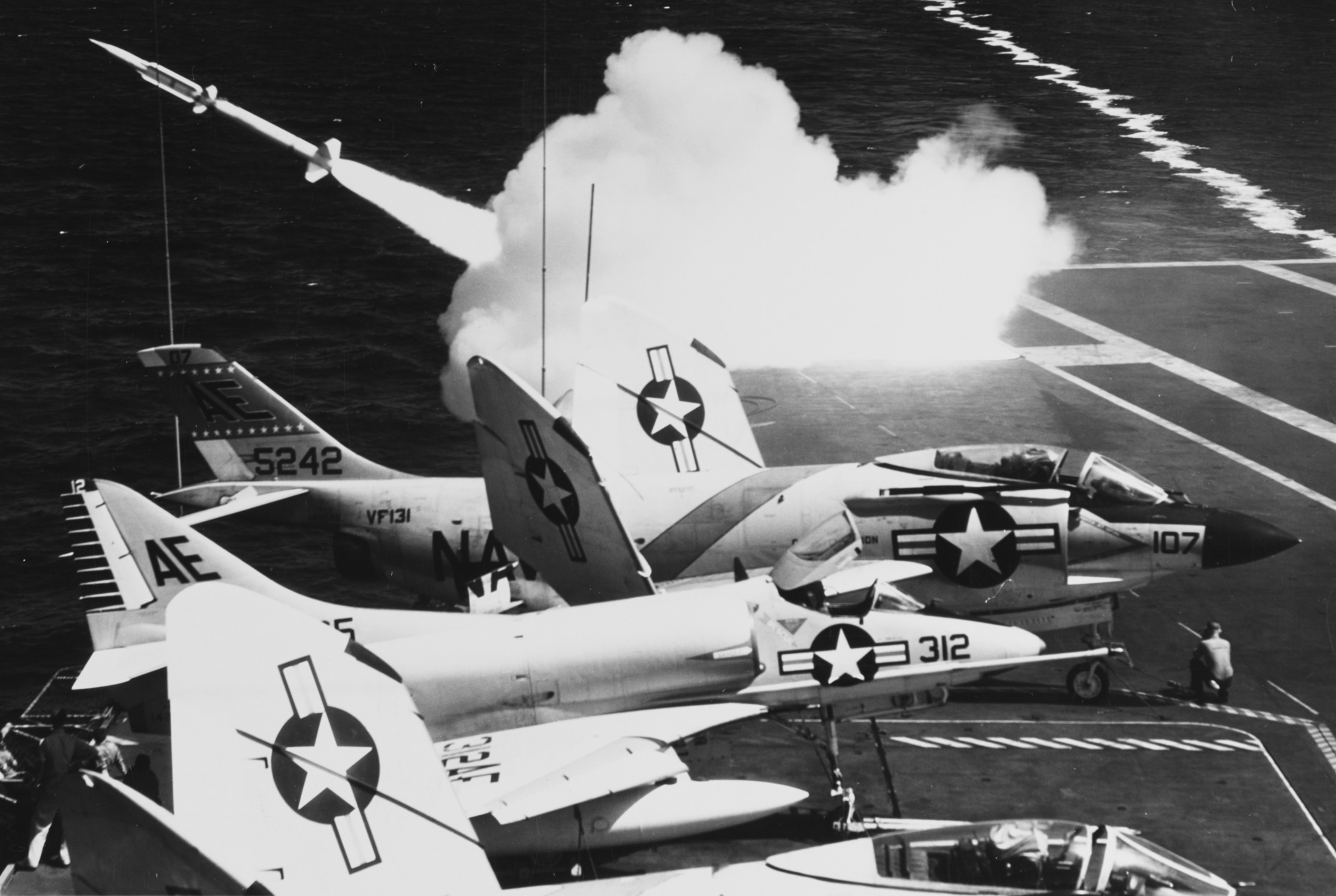 with CVG-13 embarked - firing an RIM-2 Terrier SAM missile - off Puerto Rico - April 1962 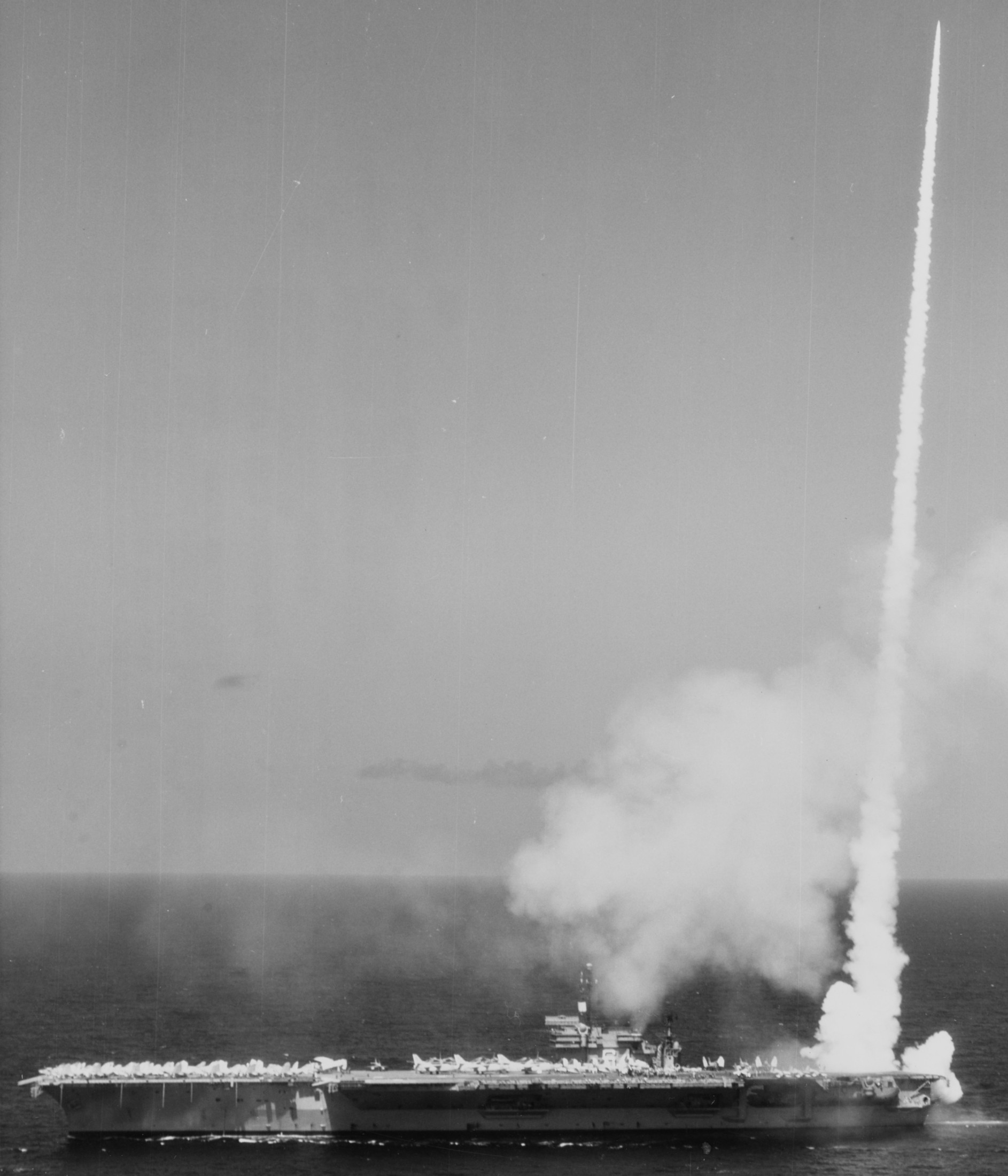 with CVG-13 embarked - firing an RIM-2 Terrier SAM missile - off Puerto Rico - April 1962 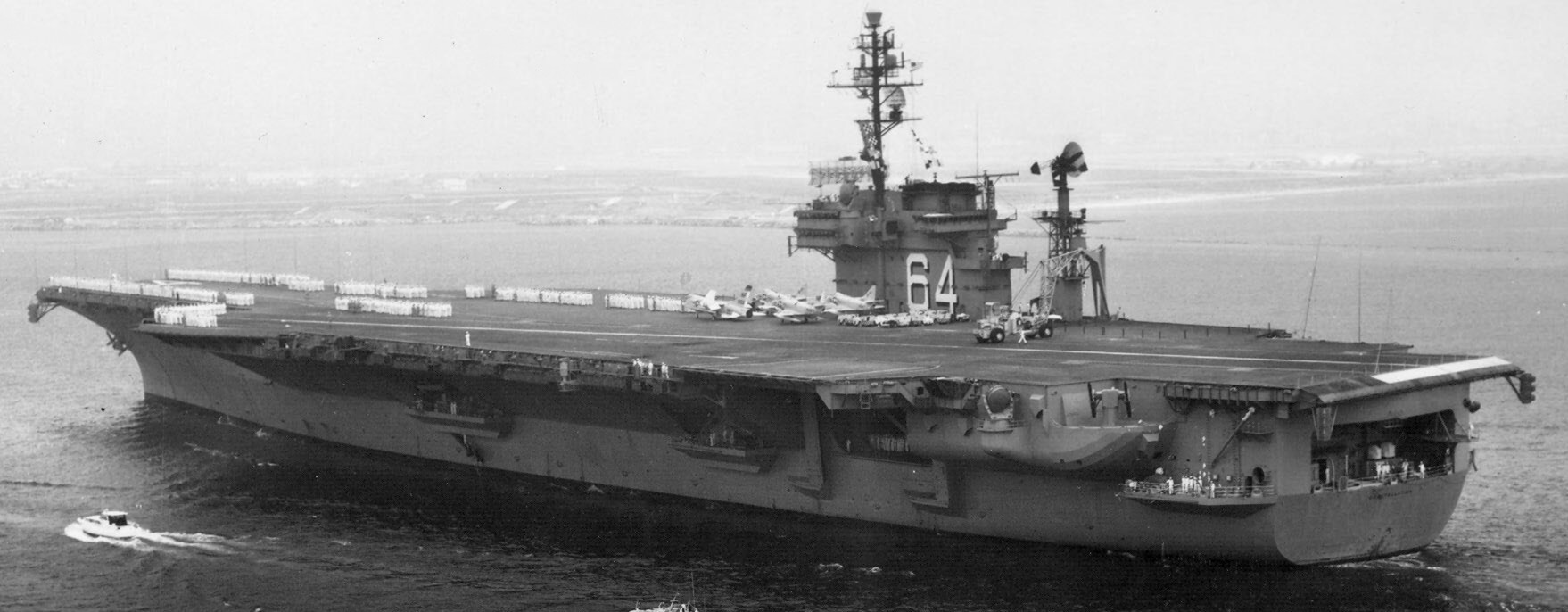 1962 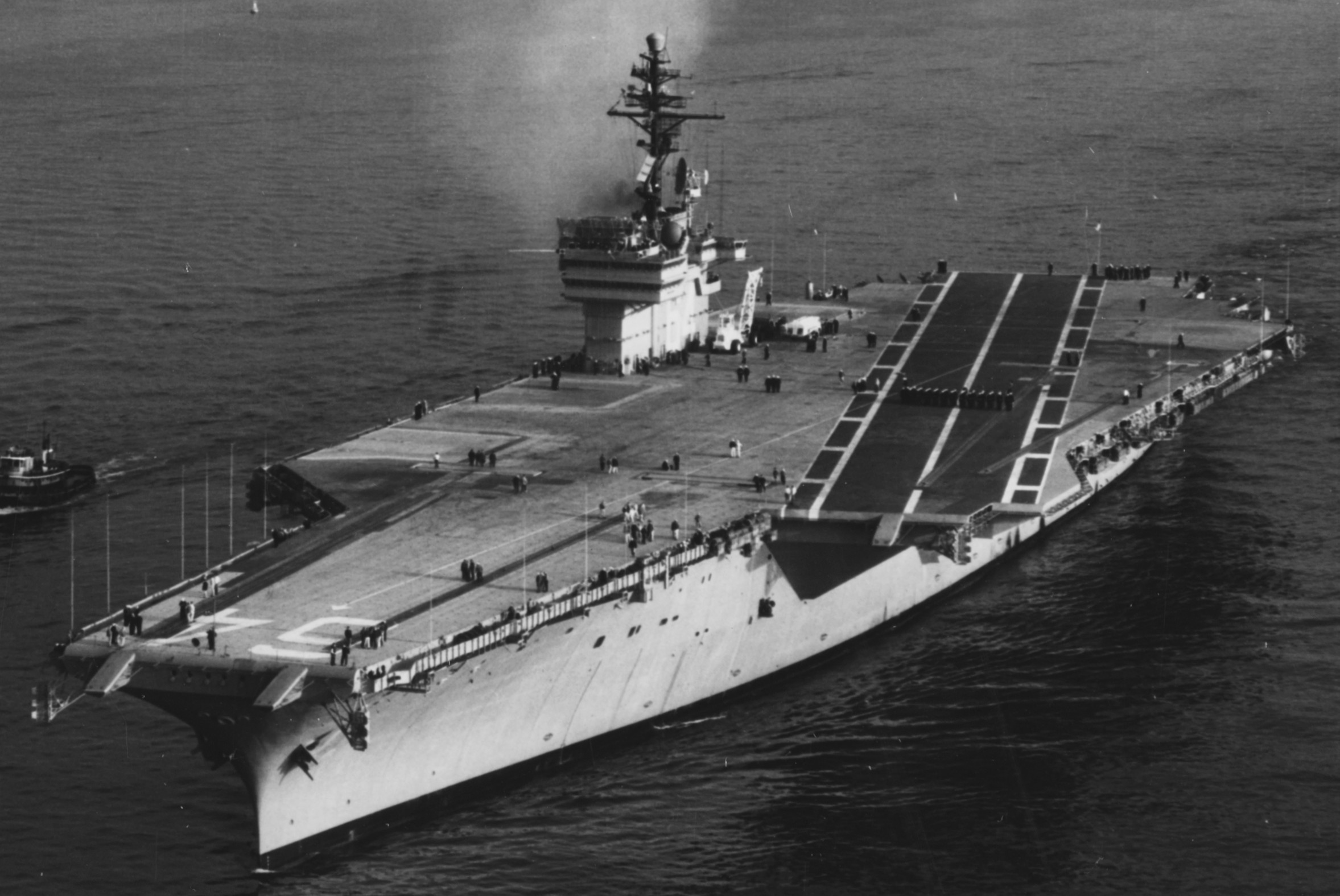 departing New York for trials - November 1961 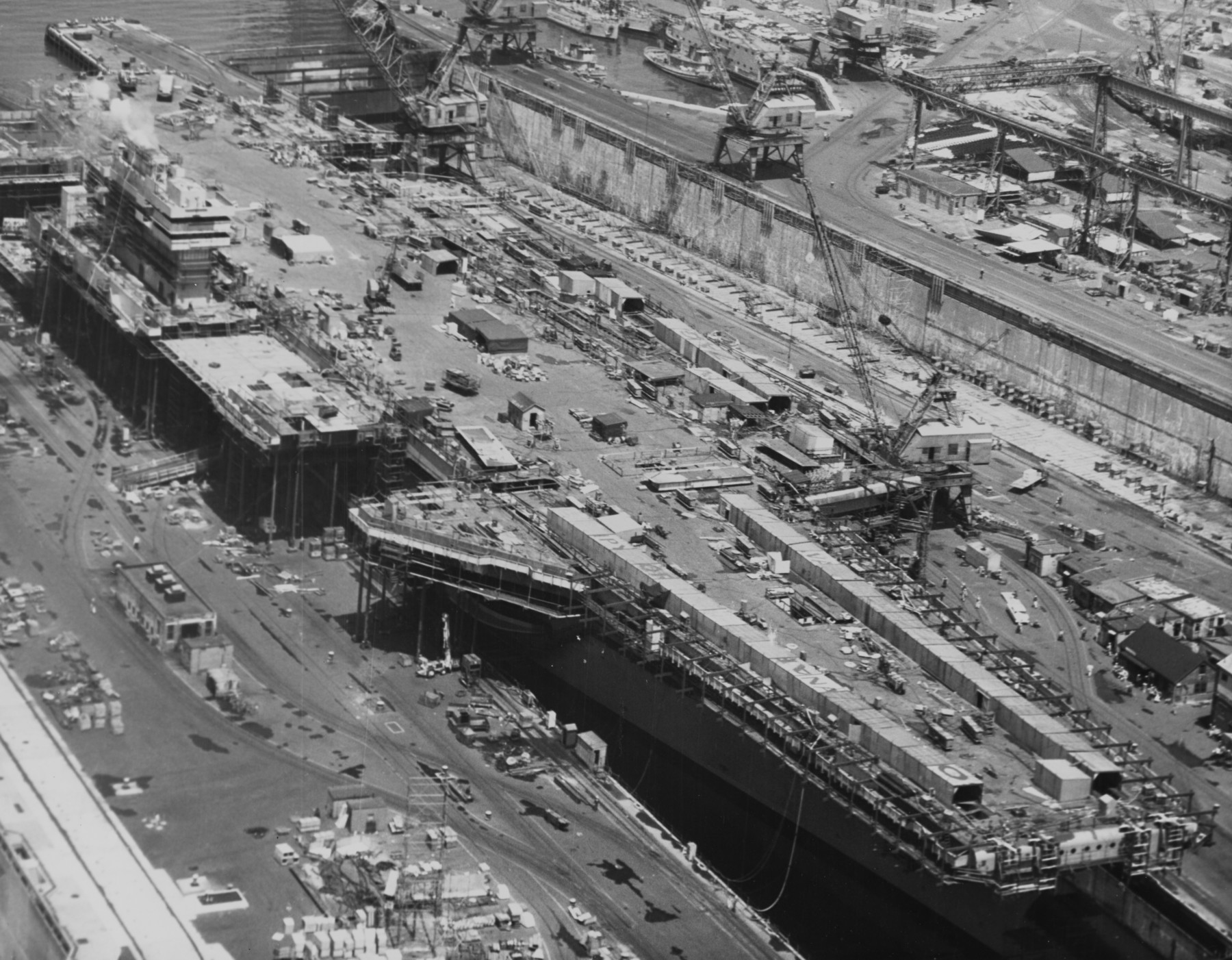 under construction at New York Naval Shipyard, Brooklyn - 1960 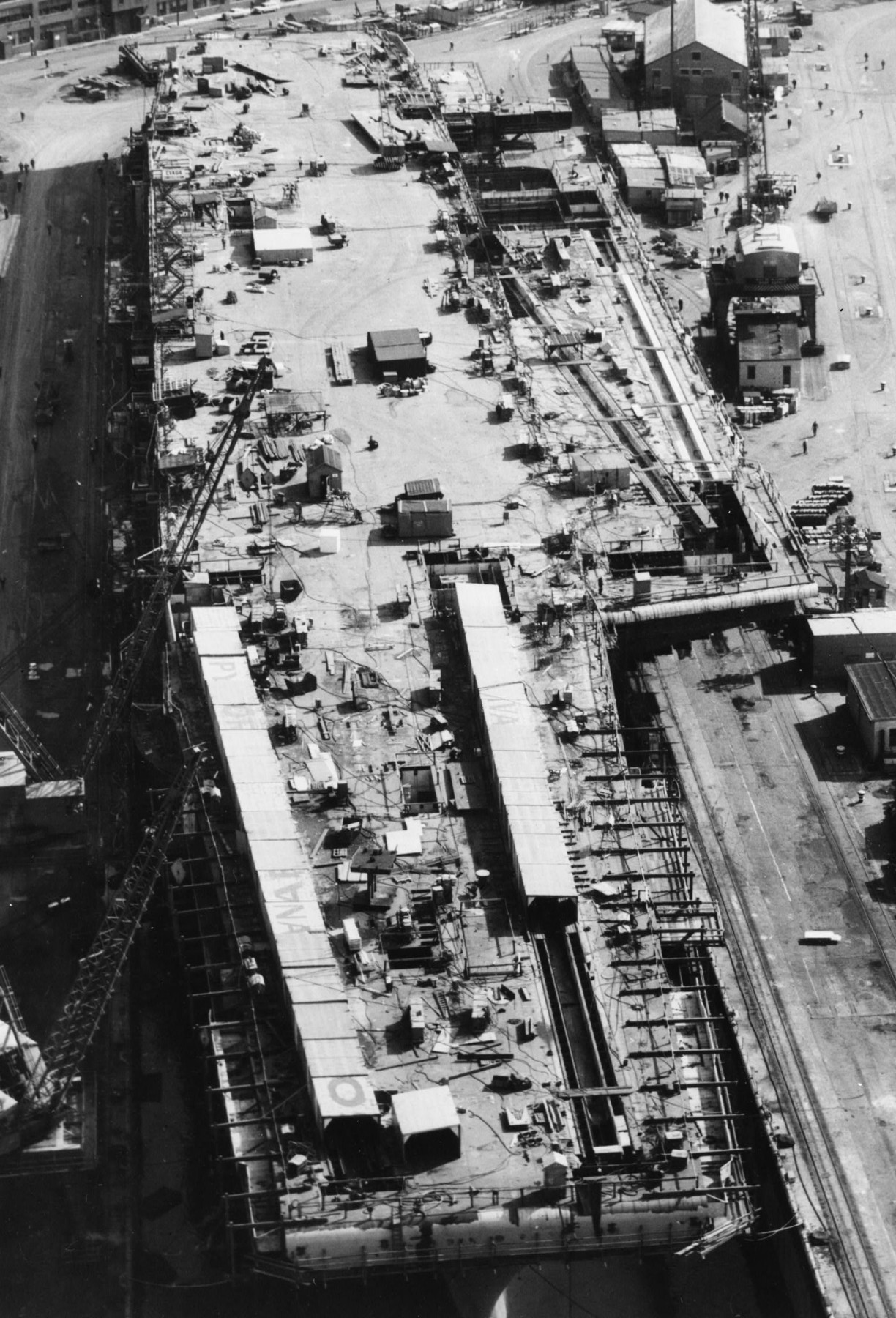 under construction at New York Naval Shipyard, Brooklyn - 1960 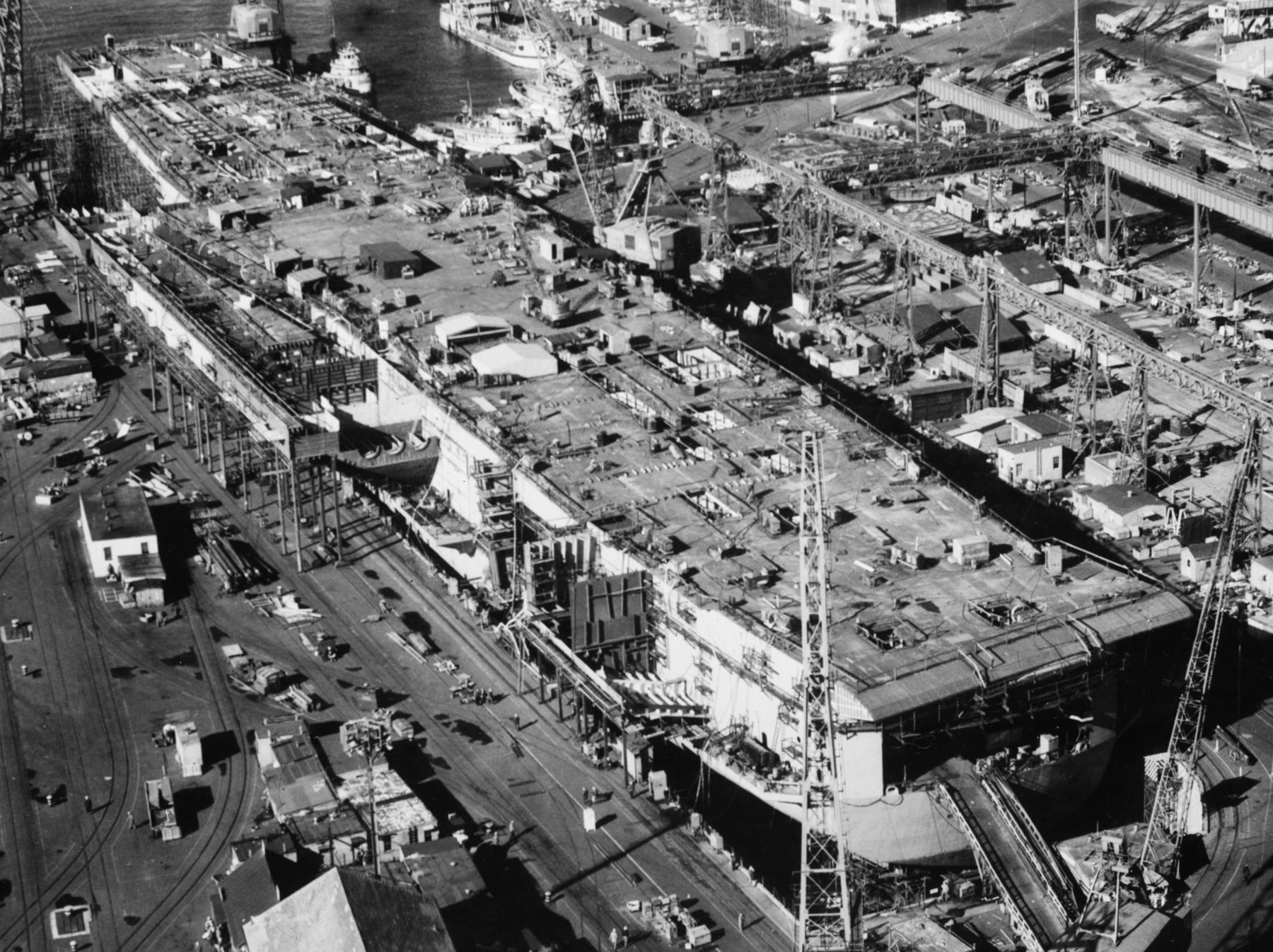 under construction at New York Naval Shipyard, Brooklyn - November 1959 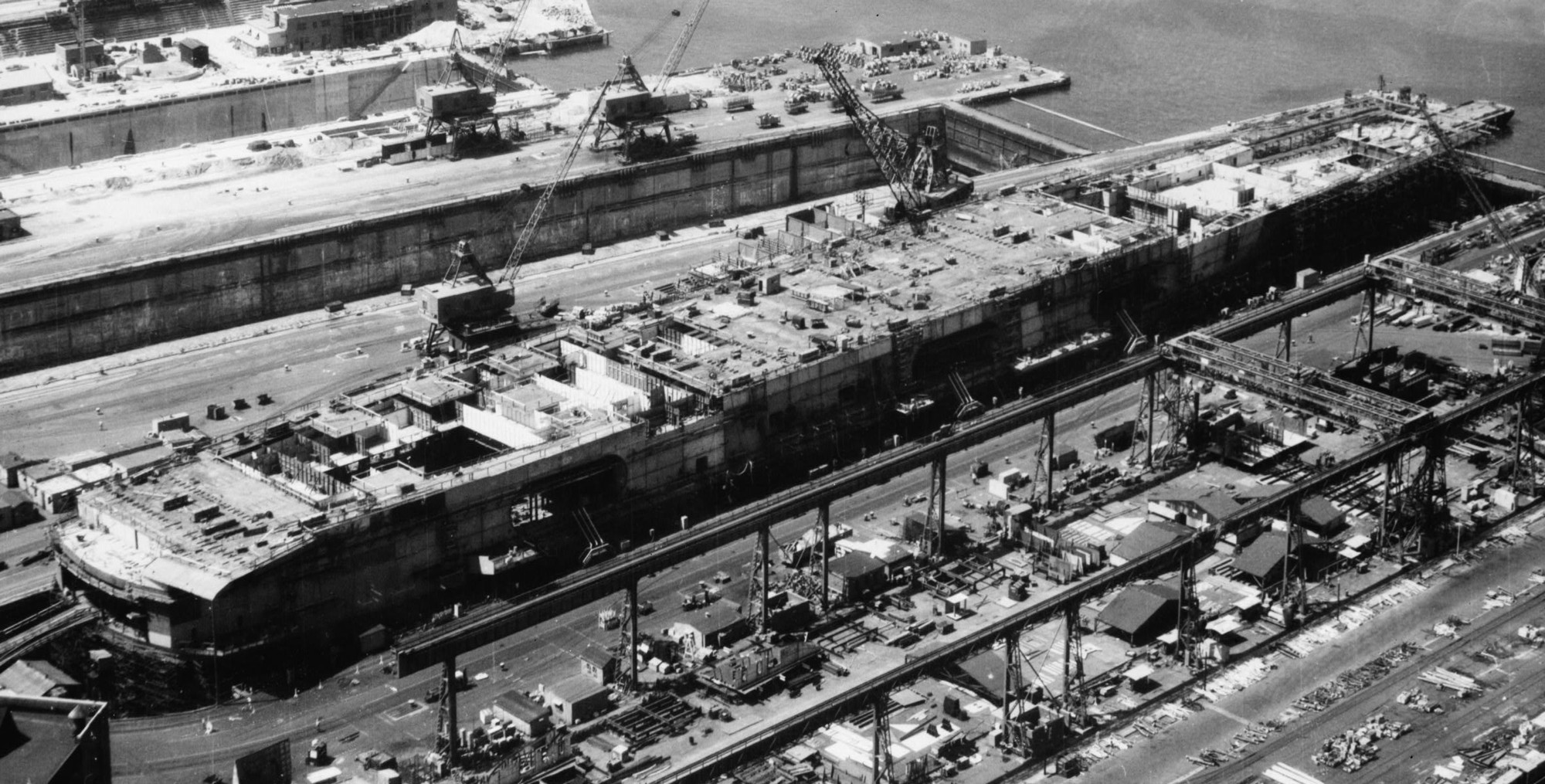 under construction at New York Naval Shipyard, Brooklyn - August 1959 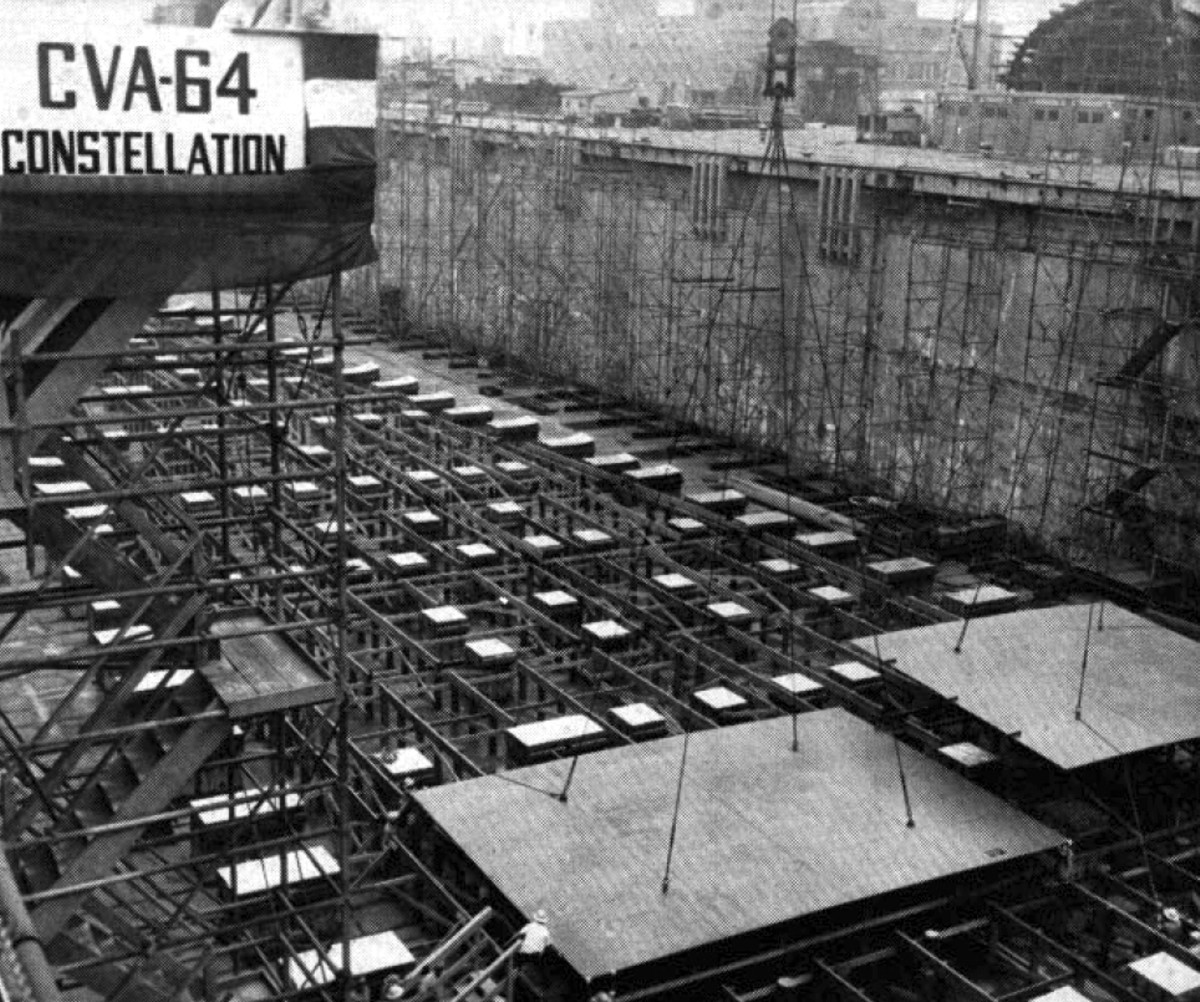 keel laying at New York Naval Shipyard, Brooklyn - September 14, 1957 |
||
|
USS Constellation (CVA 64 / CV 64): The second Constellation (CVA 64) was built by New York Naval Shipyard, Brooklyn, N.Y.; christened 8 October 1960 by Mrs. C. A. Herter, wife of the Secretary of State; and commissioned 27 October 1961, Capt. T. J. Walker, in command. She was named for one of the six frigates bought by the Continental Congress in the late 1790s. The first of those frigates, ships which were to make American naval history, was named for the ring of 13 stars that formed a "new Constellation" on the flag of the new United States. It was in the last stages of her building at the New York Naval Shipyard, on 19 December 1960, a fire broke out on Constellation's hanagar deck. Fifty civilian workers died in the blaze. Another fire occurred aboard Constellation on 7 November 1961, while she was being tested at sea, killing four and injuring nine others. Following fitting out and acceptance trials, Constellation departed her home port of Norfolk, Virginia, on 7 February 1962 for initial air operations off the Virginia Capes. She conducted her first catapult launch and arrested landing the same day with Commander George C. Watkins, air group (CVG) 13 commander, at the controls of an A4D-2 Skyhawk of Attack Squadron 34. After a month of operating locally, Connie (as the carrier became known) conducted a two-month shakedown cruise in the Caribbean Sea. In summer 1962, Constellation was transferred to the U.S. Pacific Fleet and CVG-13 was disestablished. For the two-month trip around Cape Horn to her new home port of San Diego, California, Constellation embarked elements of CVG-5 and departed Mayport, Florida, on 25 July. In November Constellation, with CVG-14 on board, commenced workup exercises for her upcoming maiden deployment to the western Pacific as a component of the U.S. Seventh Fleet. The uneventful cruise took place from February to September 1963. Constellation deployed to the western Pacific from her homeport of San Diego on 5 May 1964. The first three months of that deployment brought normal operations, training and port calls. However, on 2 August, while operating in international waters in the Gulf of Tonkin, USS Maddox (DD-731) reported being attacked by units of the North Vietnamese Navy. Within minutes of her receipt of the message, USS Ticonderoga (CVA 14) dispatched four, rocket-armed F8E Crusaders to the destroyer's assistance. Upon arrival, the Crusaders launched Zuni rockets and strafed the North Vietnamese craft with their 20-millimeter cannons. The Ticonderoga airmen teamed up with Maddox gunners to thwart the North Vietnamese attack, leaving one boat dead in the water and damaging the other two. Two days later, late in the evening of the 4 August, Ticonderoga received urgent requests from USS Turner Joy (DD-951), by then on patrol with Maddox, for air support in resisting what the destroyer alleged to be another torpedo boat foray. The carrier again launched planes to aid the American surface ships, and Turner Joy directed them. The Navy surface and air team believed it had sunk two boats and damaged another pair. President Johnson responded with a reprisal to what he felt at the time to be two unprovoked attacks on American seapower and ordered retaliatory air strikes on selected North Vietnamese motor torpedo boat bases. On 5 August, Ticonderoga and Constellation launched 60 sorties against four bases and their supporting oil storage facilities. Those attacks reportedly resulted in the destruction of 25 PT-type boats, severe damage to the bases, and almost complete razing of the oil storage depot. The strikes lasted for four hours. Constellation lost an A-1H Skyraider, whose pilot, Lt. j.g. Richard A. Sather, became the first Navy pilot to be killed in Vietnam, and an A-4E Skyhawk, flown byLt. j.g. Everett Alvarez who became the first Navy POW. On 7 August 1964, Congress authorized President Johnson to "take all necessary measures to repel any armed attack against the United States .... [and] to assist any member or protocol state" of the Southeast Asia Treaty Organization (SEATO). This resolution passed in the House of Representatives by a vote of 416 to 0 and in the Senate by 88 to 2. Constellation returned 1 February 1965. Her crew was awarded the Navy Unit Commendation and the Armed Forces Expeditionary Medal for actions in the Gulf of Tonkin. Constellation again deployed to the western Pacific from her home of San Diego on 12 May 1966 with Carrier Air Wing 15. On 1 July, three North Vietnam torpedo boats came out to attack USS Coontz (DLG 9) and USS Rogers (DD 876) operating about 40 miles off shore on search and rescue missions. Aircraft from Constellation and USS Hancock (CVA 19) made short work of the attackers, sinking all three with bombs, rockets, and 20mm cannon fire. After the attack, Coontz pulled 19 survivors from the water. Constellation returned from the WESTPAC deployment on 3 December 1966. Constellation made her third deployment to the western Pacific and Vietnam in 1967. She departed San Diego with with a new air wing, CVW 14, on 29 April 1967 and returned home on 4 December. Constellation began her fourth deployment to the western Pacific and Vietnam on 29 May 1968. It was during the initial stages of this deployment that she was visited in June by President Lyndon B. Johnson. On 1 November, as directed by President Johnson, all bombing of North Vietnam was halted at 2100 Saigon time. The last Navy mission over the restricted area was flown earlier in the day from Constellation by Cmdr. Kenneth E. Enney in an A-7 Corsair II. Constellation remained on deployment, returning home to San Diego on 31 January 1969. Following maintenance and training periods, the carrier once again stood out from southern California, this time on her fifth deployment to the western Pacific and Vietnam on 11 August 1969. On 28 March 1970, Lt. Jerome E. Beaulier and Lt. (j.g.) Stephen J. Barkley in an F-4 Phantom II of VF-142 off Constellation shot down a MiG-21 while escorting an unarmed Navy reconnaissance plane on a mission near Thanh Hoa, North Vietnam. This was the first North Vietnamese MiG kill since the 1 November 1968 bombing halt. Constellation returned home on 8 May 1970. On 1 October 1971, Constellation sailed from San Diego to begin her sixth combat deployment to Vietnam. Seven months later, Lieutenant Randy Cunningham and Lieutenant (junior grade) Willie Driscoll became America's first aces of the war by downing three MiG fighters during vicious dog-fighting over North Vietnam, bringing their total to five enemy aircraft in four months. Alternating on Yankee Station, Constellation, USS Oriskany (CVA 34) and USS Enterprise (CVAN 65) provided 22 two-carrier days on the line by 1 November, delivering 1,766 ordnance-bearing strike sorties, twelve and nine of them into North Vietnam and South Vietnam, respectively. Two reconnaissance missions were flown during the month, with the airfield at Vinh the mission assignment. Escort aircraft on both missions expended ordnance in a protective reaction role against firing antiaircraft artillery sites near the field. Other protective reaction strikes were executed. Constellation and Enterprise operated on Yankee Station together during the month until 10 December, when Enterprise was unexpectedly directed to transit to the Indian Ocean where she operated as flagship for the newly formed Task Force 74 for the possible evacuation of U.S. citizens from East Pakistan in connection with the Indo-Pakistani war. Constellation's tour was extended to the end of the month due to these new contingency operations. USS Coral Sea (CVA 43) joined Constellation on the line 15 December. A total of 2,462 ordnance delivery strike sorties were flown during December 1971. The number of surface-to-air missile firing incidents increased and the bold excursions by MiG aircraft into Laos prompted both the U.S. Air Force and U.S. Navy to develop new tactics, combining efforts, to suppress the MiG threat. A major protective reaction strike effort by both USAF and USN commenced 26 December and terminated 30 December. In this period, TF-77 flew 423 strike sorties employing all-weather A-6A systems backed up by A-7Es as pathfinders, with Dong Hoi, Quang Khe and Vinh the major targets assigned to the Navy. During the month, the Laser Guided Bomb (LGB) was introduced by squadrons aboard Constellation. Initially, 16 trial LGB drops were road cuts, with subsequent targets antiaircraft artillery sites. In the coming year, LGBs were to be used effectively against heretofore seemingly indestructible targets in NVN, such as heavy steel bridge structures built into solid rock. USS Enterprise rejoined Constellation on Yankee Station on 18 January 1972 following her tour in the Indian Ocean in December 1971. The next day, 19 January, Lieutenants Randall H. Cunningham and William P. Driscoll in an F-4 Phantom of VF-96 off Constellation shot down a MiG-21, the first enemy aircraft downed since the 28 March 1970 shoot-down of a MiG-21 by Lt. Jerome E. Beaulier and Lt. (j.g.) Stephen J. Barkley in an F-4 Phantom II of VF-142 off Constellation . The 19 January action occurred during a protective reaction strike in response to earlier antiaircraft artillery and surface-to-air missile firings from the area which had menaced an RA-5C reconnaissance plane and its escorts. This accounted for the Navy's 33rd MiG shot down in the Vietnam war since the first shoot-down on 17 June 1965, downed by Commanders Louis C. Page and John J. Smith in an F-4 of VF-21 off USS Midway (CVA 41). Throughout January 1972 Constellation, Coral Sea and Enterprise served intermittently on Yankee Station. With only light ground action, limited troop contacts and the withdrawal of U.S. ground troops continuing during the month, the level of air operations also remained low, a situation which continued generally throughout the first three months of the year. During January, a total of only eight Navy tactical air attack sorties were flown in South Vietnam. In North Vietnam, there was very little attack effort except for some protective reaction strikes. During the following month, naval air attack sorties in South Vietnam had risen to 733 compared tothe eight during January. The increase was due to the preemptive operations by allied forces in preparation for an expected large-scale enemy offensive during Tet which did not materialize. Constellation, Coral Sea and Hancock served overlapping tours on Yankee Station, assuring two to three carriers on station at a time during most of February 1972. Naval Air attack sorties in South Vietnam in March 1972 again dropped to 113. On 23 March the U.S. canceled further peace negotiations in Paris, France, because of a lack of progress in the talks. This was followed by the North Vietnamese invasion of South Vietnam. This "Easter," or "Spring Offensive" was the result of the long buildup and infiltration of North Vietnamese forces during previous months and presaged some of the most intense fighting of the entire war. The North Vietnamese invasion prompted increased air operations by the carriers in support of South Vietnamese and U.S. forces. The carriers on Yankee Station when North Vietnam invaded on 30 March were Hancock and Coral Sea, which had rotated with Constellation and USS Kitty Hawk (CVA 63). Beginning on 5 April 1972, aircraft from Constellation, along with those from Hancock, Coral Sea and Kitty Hawk took part in Operation Freedom Train which involved Navy tactical air sorties against military and logistic targets in the southern part of North Vietnam that were involved in the invasion of the south. The operating area in North Vietnam was limited initially to between 17° and 19°N. However, special strikes were authorized against targets above the 19th parallel on various occasions. The magnitude of the North Vietnamese offensive indicated that an extended logistics network and increased resupply routes would be required to sustain ground operations by North Vietnam in their invasion of South Vietnam. Most target and geographical restrictions that were placed in effect since October 1968 concerning the bombing in North Vietnam were lifted gradually and the list of authorized targets expanded. Strikes in North Vietnam were against vehicles, lines of communication (roads, waterways, bridges, railroad bridges and railroad tracks), supply targets, air defense targets and industrial/power targets. By the end of April, operations were permitted in North Vietnam throughout the region below 20° 25'N and many special strikes above the 20th parallel had also been authorized. By mid-April, the Navy was averaging 191 sorties per day in South Vietnam, a 97 percent increase over the previous week. Sorties concentrated west and north of Quangtri City with interdiction and direct air support flown in the area. Carriers on Yankee Station were Constellation, Hancock, Coral Sea, and Kitty Hawk. On 16 April, in Operation Freedom Porch, aircraft from Constellation and the other three carriers on Yankee Station flew 57 sorties in the Haiphong area in support of U.S. Air Force B-52 strikes on the Haiphong petroleum products storage area. From 25 through 30 April, Constellation's VA-146, VA-147 and VA -165 hit areas around the besieged city of Anloc in support of South Vietnamese troops, some only 40 miles outside the capital of Saigon. Targets attacked included artillery fire bases, enemy tanks, bunkers, troop positions, ammunition caches and gun emplacements. On 9 May 1972, Operation Pocket Money, the mining campaign against principal North Vietnamese ports, was launched. Early that morning, an EC-121 aircraft took off from Da Nang airfield to provide support for the mining operation. A short time later, Kitty Hawk launched 17 ordnance-delivering sorties against the Nam Dinh railroad siding as a diversionary air tactic. Poor weather, however, forced the planes to divert to secondary targets at Thanh and Phu Qui which were struck at 090840H and 090845H, Vietnam time, respectively. Coral Sea launched three A-6A and six A-7E aircraft loaded with mines and one EKA-3B in support of the mining operation directed against the outer approaches to Haiphong Harbor. The mining aircraft departed the vicinity of Coral Sea at 090840H in order to execute the mining at precisely 090900H to coincide with President Richard Nixon's public announcement in Washington that mines had been seeded. The A-6 flight led by the CAG, Cmdr. Roger E. Sheets, was composed of Marine Corps aircraft from VMA-224 and headed for the inner channel. The A-7Es, led by Cmdr. Leonard E. Giuliani and made up of aircraft from VA-94 and VA-22, were designated to mine the outer segment of the channel. Each aircraft carried four MK 52-2 mines. Capt. William R. Carr, USMC, the bombardier/navigator in the lead plane, established the critical attack azimuth and timed the mine releases. The first mine was dropped at 090859H and the last of the field of 36 mines at 090901H. Twelve mines were placed in the inner segment and the remaining 24 in the outer segment. All MK 52-2 mines were set with 72-hour arming delays, thus permitting merchant ships time for departure or a change in destination consistent with the President's public warning. It was the beginning of a mining campaign that planted over 11,000 MK 36 type destructor and 108 special MK 52-2 mines over the next eight months. It is considered to have played a significant role in bringing about an eventual peace arrangement, particularly since it so hampered the enemy's ability to continue receiving war supplies. On 10 May 1972, Operation Linebacker I, the heavy strike of targets in most of North Vietnam, evolved and lasted until restrictions on operations above 20°N were imposed 22 October. The operation was an outgrowth of Freedom Train and the President's mining declaration which also stated that the U.S. would make a maximum effort to interdict the flow of supplies in North Vietnam. On this first day of Linebacker I, the Navy shifted its attacks from targets in southern North Vietnam to the coastal region embracing Haiphong north to the Chinese border. In all, 173 attack sorties were flown in this region this day, although another 62 were directed into South Vietnam in continuing support of allied forces there. It was the most intensified air-to-air combat day of the entire war. Navy flyers shot down eight MiGs. An F-4 Phantom II from VF-96 on board Constellation - Lt. Randall H. Cunningham, the pilot and Lt. (j.g.) William P. Driscoll - while engaged in aerial combat over Haiphong shot down three MiGs for the first triple downing of enemy MiGs by one plane during the war. These three MiG downings, coupled with their 19 January and 8 May downing of two MiGs, made Lt. Cunningham and Lt. (j.g.) Driscoll the first MiG aces of the Vietnam War. Three other kills were scored by planes of VF-96 and one by VF-92 off Constellation and one by VF-51 off Coral Sea. During the five and one-half month period of Linebacker I, the Navy contributed more than 60 percent of the total sorties in North Vietnam, with 60 percent of this effort in the "panhandle", the area between Hanoi and the DMZ. Tactical air operations were most intense during the July-September quarter with 12,805 naval sorties flown. Most attack sorties in North Vietnam fell into two classes - armed reconnaissance and strike. The former was directed usually against targets of opportunity within three main areas - near Hanoi, Haiphong and the Chinese border. Strike operations were preplanned and usually directed at fixed targets. Most types of fixed targets. not associated with armed reconnaissance, required approval by the Commander-in-Chief, Pacific, or by the Joint Chiefs of Staff, prior to attack. Principal Navy aircraft were the A-7 and A-6, which accounted for roughly 60 and 15 percent of the Navy's attack sorties, respectively. About 25 percent of the Navy's effort was at night. Carriers participating in the initial May to June operations from Yankee Station were Constellation, Coral Sea, Hancock, Kitty Hawk, Midway and USS Saratoga (CVA 60). On 11 May 1972, Naval aircraft flying from Constellation, Coral Sea, Midway, and Kitty Hawk laid additional mine fields in the remaining ports of significance in North Vietnam: Thanh Hoa, Dong Hoi, Vinh, Hon Gai, Quang Khe and Cam Pha as well as the Haiphong approaches. This early mining was not confined solely to the seven principal ports. Other locations were also seeded early in the campaign, including the Cua Sot, Cap Mui Ron, and the river mouths, Cua Day and Cua Lac Giang, south of Don Son and the Haiphong port complex. The following day, 12 May, the 72-hour delay arming time on the initial mines laid at Haiphong was up at 120900H Vietnam time. Nine ships at Haiphong had taken advantage of the grace period to depart the port. Twenty-seven ships remained. Both Soviet and Soviet-bloc ships headed for Haiphong at the time had diverted to different destinations, thus avoiding a direct confrontation with the mine fields. Constellation was relieved at Yankee Station and returned home to San Diego, arriving on 30 June 1972. She received a Presidental Unit Citation from President Nixon in 1973. On 5 January 1973, Constellation, along with Carrier Air Wing 9, began her seventh deployment to the western Pacific and Vietnam. The Vietnam cease-fire, announced on 23 January went into effect on the 27th. Aircraft from Constellation and Oriskany operating on Yankee Station, the location of which was changed to a position off the coast of the northern part of South Vietnam, flew strikes against targets in southern Laos. Combat sorties from carriers on Yankee Station against targets in Laos had continued since the cease-fire in Vietnam. These combat support sorties were flown in support of the Laotian government which had requested this assistance and it had no relationship with the cease-fire. Constellation returned from this deployment on 11 October 1973. Constellation again departed for WESTPAC on 21 June 1974, her eighth such deployment. On 19 November Constellation was part of an eight-ship force from the United States participating in the Central Treaty Organization Exercise Midlink 74. The exercise got underway as the largest naval exercise ever held in the Arabian Sea. Participating were forces from the United States, United Kingdom, Iran, Pakistan, and Turkey. Constellation returned from this deployment on 22 December 1974. On 31 January 1975, Constellation departed San Diego for the Puget Sound Naval Shipyard, Bremerton, Wash., to undergo on of the most extensive carrier overhauls ever undertaken, enabling her to carry the Navy's newest air supremacy fighter, the F-14A Tomcat, and the S-3A Viking, a submarine hunter. On 1 July 1975, she, along with all U.S. carriers, were redesignated as "CV" from "CVA." This change was made to improve the accuracy of designations in modern warfare. By removing the letter A, which stood for attack, the new designation CV could serve a multipurpose air, surface, and ASW role, depending on the type of aircraft carried. After 14 months at Puget Sound, Constellation departed the shipyard on 26 April 1976 to rejoin the Pacific Fleet. On 3 July 1976, Constellation celebrated America's Bicentennial by hosting a nationally-telecast TV special from her flight deck. The special featured many major celebrities and guests. A newly refurbished Constellation began her 10th deployment in April 1977, which included the first port call by a U.S. carrier to Pattaya, Thailand. On 26 September 1978, "Connie" sailed west again beginning her 11th deployment. On 27 December, Constellation and her escort ships were directed to the vicinity of Singapore in response to the internal crisis in Iran and because of vital U.S. interests in the Arabian Gulf area, but on 2 January 1979, the President directed Constellation and her escort ships to remain on station in the South China Sea and not enter the Indian Ocean. Constellation and her escorts were released from contingency operations in the South China Sea on 28 January. The crisis in Iran abated when the Shah of Iran departed for exile on 16 January. Due to the uneasy situation in Iran all U.S. government dependents and nonessential American citizens were ordered to evacuate the country on 30 January. Constellation and her escorts were ordered to the Gulf of Aden on 7 March 1979 in response to the conflict between North and South Yemen. The Gulf of Aden and the Arabian Gulf were considered vital waterways for the passage of petroleum products to the U.S. and her allies. On 16 April, Constellation was relieved by Midway as the Indian Ocean contingency carrier. Constellation returned to San Diego 17 May 1979. The deployment had twice been extended and her service earned her the Navy and Marine Corps Expeditionary Medals. Constellation began her 12th deployment to the western Pacific on 26 February 1980. On 18 April, the carrier and her battle group departed Subic Bay, the Republic of the Philippines, to relieve Coral Sea in the Indian Ocean, doing so on 30 April. Coral Sea had been on station for 89 days in connection with the Iranian crisis. On 4 November 1979, a mob of Muslim "students," adherents of the Ayatollah Khomeini's fundamentalist revolution, stormed the U.S. Embassy in Teheran and seized the Americans in the compound, including 14 Marine guards. The students announce that they will release their hostages if the United States will extradite the deposed Shah, who is undergoing medical treatment in New York, for trial by a revolutionary tribunal. President Jimmy Carter refuses to concede to the Iranians' demands. On 19 November, the Iranians occupying the Teheran embassy free three American hostages: a woman and two black Marines. Ten more of the Americans are freed the following day, but fifty-three remained in captivity for a total of 444 days, being released on 20 January 1981 as President Ronald Reagan took office. Constellation herself set a new endurance record in 1980 remaining on station in the Indian Ocean for an exhausting 110 consecutive days. Midway relieved Constellation on 17 August, and the ship began her voyage home, arriving 15 October. Constellation began her 13th deployment in October 1981, returning to San Diego in May 1982. Before the deployment, in late summer 1981, the carrier played host to President Ronald Reagan. During this visit, Mr. Reagan presented a Presidential Flag to the ship and proclaimed her "America's Flagship." While operating in the Gulf of Oman, Secretary of Defense Caspar Weinberger and the Chief of Naval Operations paid Constellation a visit. In December 1982, Constellation again sailed north to Puget Sound Naval Shipyard in Bremerton, Wash., to begin a 14-month complex overhaul. During the overhaul, Constellation was modified to carry the Navy's newest strike fighter, the FA-18 Hornet. Connie was the first carrier to receive the new aircraft. She was also fitted with the new Phalanx radar-guided gattling-gun, two new flush deck catapults and the NATO Sea Sparrow Missile System. Constalltion completed the $235 million overhaul two weeks early and under budget, something which a carrier had not accomplished since the 1940s, according to the shipyard. Constellation set sail on her 14th deployment to the western Pacific and Indian Ocean on 21 February 1985. This was the first operational deployment of the F/A-18 Hornet strike fighter and the LAMPS, which used the SH-60B Seahawk ASW helicopter. The Hornets replaced the A-7E Corsair IIs operated by two squadrons assigned to CVW-14, making Constellation the Navy's first carrier to have F/A18s assigned to her air wing. The SH-60B Seahawk helicopter operated as the air subsystem of the LAMPS MK III weapon system, deployed aboard the frigate USS Crommelin (FFG 37). In addition to the western Pacific Ocean and the Indian Ocean, the cruise included port visits to Singapore, Kenya and Western Australia. Constellation returned to her homeport of San Diego In late August. For her performance during this cruise, the carrier's crew earned the Meritorious Unit Commendation. The ship also received the Secretary of the Navy's Environmental Protection Award. With the cruise and two major awards, 1985 was a pretty good year for Constellation, but 1986 would be even better. During the first part of this year Constellation earned the Golden Anchor Award for retention excellence and a second consecutive Environmental Protection Award. The most Important award, though, came when the ship earned the U.S. Pacific Fleet Battle Efficiency Award covering her outstanding performance from January 1985 to June 1986. Constellation began a two-month Northern Pacific Cruise (NOPPAC) in September 1986. In early September, the ship spent five days in Vancouver, British Columbia, where many members of the crew visited EXPO '86. In late September the ship spent four days in Anchorage, Alaska. It was the first carrier to ever visit that port. During these port visits, the ship hosted over 15,000 visitors. Constellation's final port visitwas in Seattle, Wash., where an estimated 45,000 visitors walked her decks while America's Flagship celebrated the Navy's 211th birthday. Connie returned home to Naval Air Station North Island in San Diego in time for her 25th birthday. On 27 October 1986, Constellation celebrated her Silver Anniversaiy on board with a concert, ceremony and a giant cake. On 11 April 1987, Constellation once again made her way west to the western Pacific and Indian Oceans. But this cruise, her 15th major deployment, took her on up into the North Arabian Sea and the Gulf of Oman. On 2 August 1988, Constellation successfully fought a severe fire in the main engineering space using the installed HALON firefighting equipment; this was the first carrier use of the system in fighting a fire. In February 1990, Constellation left San Diego, returning to the east coast for a three-year overhaul. The $800-million Service Life Extension Program (SLEP), completed in Philadelphia Naval Shipyard in March 1993, added an estimated 15 years to the carrier's operational life. The overhaul saw upgrades to virtually every system on the ship. Constellation departed the Philadelphia Naval Shipyard 4 March 1993, the fifth and last carrier to complete SLEP. Back in San Diego, the carrier was visited on 18 August by Secretary of the Navy John H. Dalton on his first trip to southern California. Following a similar trip two days earlier to east coast commands, the Secretary also Naval Station San Diego, Camp Pendleton, the Marine Corps Recruit Depot, Naval Air Station Miramar, Naval Submarine Base San Diego and other area commands. On 31 July 1994, Lt. Kara Hultgreen made her first qualifying landing in an F-14A on board Constellation, 110 miles southwest of San Diego. She thus became the first fully qualified female Tomcat pilot. Lt. Hultgreen was assigned to VF-213 at NAS Miramar, Calif. Lt. (j.g.) Carey Dunai, also in an F-14, became the second woman to reach the milestone with her qualifying trap moments later. Lt. Hultgreen was killed at sea 25 October 1994 while approaching USS Abraham Lincoln (CVN 72) for a landing 50 miles off San Diego. Constellation and her battle group deployed again on 10 November 1994, and spent most of December in the western Pacific. On 11 January 1995, the carrier and her seven-ship battle group entered the Arabian Gulf. With Constellation were the guided missile cruisers USS Chosin (CG 65) and USS Lake Erie (CG 70), the destroyer USS Kinkaid (DD 965), the ammunition ship USS Kiska (AE 35), the replenishment oiler USS Cimarron (AO 177), and the attack submarine USS Topeka (SSN 754). Aircraft from Constellation's air wing, Carrier Air Wing Two (CVW 2), patrolled the U.N. no-fly zone over southern Iraq in support of Operation Southern Watch. During this period in the Gulf, when the Constellation's crew learned of its hometown San Diego Chargers' American Football Conference championship victory over the Pittsburgh Steelers, it decided to send the Chargers and the fans of San Diego a personal message. On 18 January, about 850 sailors from Connie and her air wing assembled on the flight deck in their white uniforms to form the words "Go Chargers" spelled out on the ship's flight deck. Photographers in a helicopter flying above the ship took photos and shot video and them back to San Diego. Constellation returned to San Diego in May 1995. Actor and comedian Tim Allen visited Constellation during an at-sea period in early 1996. Mr. Allen, star of ABC's then-top-rated sitcom Home Improvement, along with the show's producers and writers, came aboard 19 January, and were scouting Constellation as a possible setting for a future show. That show, number A553, episode 127/ 6.01, aired on the ABC television network on 17 September 1996. In February 1997, Constellation was selected by the Navy as one of the test ships for a new working uniform. The test lasted six months. Also, from 10 through 21 February 1997, Constellation, along with her Carrier Battle Group and the USS Boxer (LHD 4) Amphibious Ready Group with the 15th Marine Expeditionary Unit embarked, took part in Pacific Joint Task Force Exercise (PAC JTFEX) 97-1 off the southern California coast. More than 15,000 military personnel tested their ability to project combat power ashore during the 3rd Fleet exercise. The exercise included various air strike and support missions, maritime interdiction operations, humanitarian operations, operational testing of weapons systems, logistics support, search and rescue and command and control. The amphibious operations supporting the exercise culminated with an amphibious landing at Camp Pendleton, Calif., involving surface and helicopter assault forces. On 19 April 1997, while Constellation and her nine-ship battle group were on a routine six-months deployment, she was conducting a vertical replenishment with the replenishment ship USNS Niagara Falls (T-AFS 3) when one of the replenishment ship's UH-46E Sea Knight helicopters crashed into the sea. The crash occurred approximately 2,000 miles southwest of Hawaii and all four crew members were safely rescued. The helicopter crew members from Helicopter Support Squadron Five, homeported in Guam, were rescued by the quick reaction of other CH-46 helicopters on-scene at the time of the incident. Assisting in the rescue was a motor-whale boat from Niagara Falls, also homeported in Guam. The four crew members, who escaped injury, were transported to Constellation for medical observation and were released to the Niagara Falls the same day. The Constellation Battle Group entered the Arabian Sea 16 May 1997 and conducted high tempo operations that included more than 4,400 sorties during more than 10 weeks in the Arabian Gulf. Operations included exercises with friendly forces in the region. Carrier Air Wing (CVW) 2, embarked in Constellation, participated in Operation Southern Watch flying 1,460 sorties enforcing the no-fly zone over southern Iraq. On 14 July 1997, Constellation rescued two Iranian merchant seamen found adrift in international waters of the Arabian Gulf. Lookouts aboard the carrier spotted the two men clinging to floating debris about 70 nautical miles northeast of Bahrain. Constellation crewmen immediately launched a rescue boat to retrieve the stranded seamen from the water. Once on board, the two stated they had been adrift for approximately five days, after their Iranian cargo dhow, Ramazan, with eight other crewmen aboard, broke up in rough seas. The two Iranian merchant seamen were later transfer ashore. An unsuccesful search for any other survivors continued using helicopters from Helicopter Antisubmarine Squadron Light (HSL) 37, Detachment 9, embarked aboard USS Lake Erie (CG 70); and Helicopter Antisubmarine Squadron Light(HSL) 42, Detachment 5, embarked aboard USS Thorn (DD 988). Constellation and her battle group departed 5th Fleet's Area of Responsibility on 17 August 1997 and began her journey back towards San Diego. The Battle Group included USS Merrill (DD 976), USS John Paul Jones (DDG 53), USS Chosin (CG 65), USS Lake Erie (CG 70), USS Cimarron (AO 177)and USS Mount Hood (AE 290). Beginning 28 August 1997, Constellation participated in Fleet Battle Experiment Bravo (FBE-B) with deployed naval forces in the eastern and western Pacific to test warfighting concepts and capabilities for the 21st century. The experiment had two main parts. The first experiment ran from 4 through 7 September, and involved the Ring of Fire concept, a naval fire support "Battle LAN" that was tested during Third Fleet's Battle Experiment Alfa (FBE-A) in March 1997. The second part of the experiment, called Silent Fury, began 2 September and lasted until the 23rd. During this phase, Third Fleet, in conjunction with Naval Strike Air Warfare Center at Naval Air Station Fallon, Nev., examined the targeting process and the challenges inherent in the employment of new types of guided munitions soon to be in the Navy's weapons inventory. Other units participating were the USS Peleliu (LHA 5) Amphibious Ready Group with 13th Marine Expeditionary Unit (MEU) embarked, USS Russell (DDG 59), and USS Nimitz (CVN 68). After completing one of the most successful work-up schedules in Navy history, Constellation departed San Diego on 18 June 1999, beginning her 19th overseas deployment. She immediately put her war fighting skills to the test by conducting a Joint Task Force Exercise (JTFEX). This marked the first time ever that a carrier has conducted JTFEX at the beginning of a deployment. With increased tensions between North and South Korea, Constellation then headed for the Korean theatre to closely monitor the situation and provide a calming influence. After port calls in Pusan, Republic of Korea; Yokosuka, Japan; Singapore; and Kuala Lumpur, Malaysia, Constellation entered the Arabian Gulf on 28 August, relieving USS Theodore Roosevelt (CVN 71). She then began flying combat air patrols over the Iraqi no-fly zones in support of Operation Southern Watch. During her 10-week stay in the 5th Fleet theater, Constellation and CVW-2 flew 1,256 sorties and expended nearly 44 tons of ordnance during nine combat engagements against Iraqi ground and air targets. She left the Arabian Gulf for some well-earned rest with port visits in Fremantle/Perth and Sydney, Australia. Constellation recorded a rare deployment milestone of 10,000 aircraft "traps" just before returning to San Diego for a memorable holiday homecoming on 17 December 1999. For their extraordinary efforts during the Navy's last deployment of the 20th century, the crew of Constellation was awarded the 1999 Battle "E" as the Pacific Fleet's best carrier. On 19 May 2000, more than 1,700 educators, school administrators, students and community leaders from California, Nevada and Arizona joined the crew of Constellation at Naval Air Station North Island for a day of life at sea. The ship set sail at 7 a.m. and cruised the waters off San Diego, returning at about 4 p.m. On 16 March 2001, Constellation stood out from San Diego for its 20th deployment in its 40-year history. Nearly 12,000 Sailors and Marines began the scheduled six-month deployment as part of the Constellation Carrier Battle Group and the USS Boxer (LHD 4) Amphibious Ready Group (ARG). In addition to Constellation and the embarked air wing, Carrier Air Wing (CVW) 2, other deploying units included USS Chosin (CG 65), USS Benfold (DDG 65), USS Kinkaid (DD 965), USS Thach (FFG 43), the Canadian frigate HMCS Winnipeg (FFH 338), USS Rainier (AOE 7), and the attack submarines USS Santa Fe (SSN 763) and USS Columbia (SSN 771). Constellation returned from this deployment on 15 September 2001 to a different United States. The events of four days earlier on 11 September 2001, a date, like that of the attack on Pearl Harbor, that will "live in infamy," had changed the country. Terrorists had crashed three commercial airliners into New York's World Trade Center and the Pentagon in Arlington, Va. Constellation hosted more than 270 former "Connie" Sailors at a reception in the ship's hangar bay on 27 October 2001 to celebrate the ship's 40th anniversary. "My thoughts today do not so much concern Constellation herself, mighty as she is, as the men who in the future will write her story; whose actions aboard her will tell all," said Cmdr. C. K. Ruiz, Constellation's first executive officer on the day of the ship's commissioning at the New York Naval Shipyard, 27 October 1961. Retired Capt. Stanley W. Vejtasa, Constellation's second commanding officer, was the guest speaker for the event. More than 150 "plankowners," or members of the original commissioning crew, were in attendance. The Constellation battle group was underway again off the coast of southern California on 19 October 2002 for Joint Task Force Exercise (JTFEX), a final battle group exercise prior to their upcoming deployment, when a Sailor from Strike Fighter Squadron (VFA) 151, was blown overboard by jet blast at five minutes past midnight as he walked behind an EA-6B Prowler on the carrier's flight deck. He had been performing routine duties during normal night flight operations at the time of the incident. Because his shipmates saw him go over the side, rescue efforts began immediately. Constellation executed a 180-degree turn to position itself in the vicinity of the Sailor. Helicopters and Rigid Hull Inflatable Boats (RHIBs) from Constellation, USS Valley Forge (CG 50), USS Bunker Hill (CG 52), and USS Kinkaid (DD 965) assisted. At approximately 7:20 a.m., Bunker Hill's helicopter detachment spotted the Sailor in the water. Constellation's helicopter squadron recovered the Sailor and returned him to the ship where he was in stable condition following medical treatment. Constellation returned to port 29 October. Constellation's 21st deployment began on 2 November 2002 when the carrier and her battle group deployed in support of Operation Enduring Freedom. The battle group consisted of guided-missile cruisers USS Bunker Hill (CG 52) and USS Valley Forge (CG 50); guided-missile destroyers USS Higgins (DDG 76) and USS Milius (DDG 69), and guided-missile frigate USS Thach (FFG 43). Other units include the fast attack submarine USS Columbia (SSN 771), based in Pearl Harbor, Hawaii, and the fast combat support ship USS Rainier (AOE 7), based in Bremerton, Wash. The crew of Constellation quickly responded to a main machinery room fire 8 November, preventing any serious injuries or degradation to the ship's ability to continue its deployment. The fire, which broke out in one of Constellation's four main machinery rooms, was caused by a fuel oil leak. The affected space was immediately evacuated and installed fire fighting equipment contained the fire until the ship's fire parties and damage control teams extinguished it. Constellation arrived in the Arabian Gulf on 14 December, its second deployment to the area in 15 months. While on station in Arabian Gulf, Constellation was visited Rep. Ellen Tauscher (D-Calilf.), serving her third term representing California's 10th Congressional District, San Francisco's East Bay suburbs. The carrier was also visted by Chief of Naval Operations Adm. Vern Clark, Master Chief Petty Officer of the Navy (MCPON) Terry Scott and Chief of Chaplains Rear Adm. Barry Black. On the hangar deck, the CNO told the crew "Remember, the American people are watching you. Be ready to go write some history. Hit fast, hit hard, hit with precision." On 19 January 2003, Constellation added another accomplishment to the list by recording its 390,000th trap. Lt. Frank Wittwer, flying Falcon 407, an F/A-18C Hornet from Strike/Fighter Squadron (VFA) 137, caught the number two wire, at 8:53 p.m., marking the milestone trap for the ship. On 5 March, crew members joined thousands of Americans across the United States in the simultaneous playing of the National Anthem. The Star Spangled Banner echoed throughout Constellation, approximately 1,060 feet from bow to stern, at precisely 7 p.m. local time. Additionally, several Sailors participated in interviews with hometown media. Minutes before the National Anthem was played, Commanding Officer Capt. John Miller provided comments to Constellation's crew about the meaning and significance of the project. "The National Anthem project is a wonderful example of the support we are receiving from the folks back home. We are fortunate to have the opportunity to participate in this landmark demonstration of pride and patriotism," he remarked. Operation Iraqi Freedom, the multi-national coalition effort to liberate the Iraqi people, eliminate Iraq's weapons of mass destruction, and end the regime of Saddam Hussein, began on 20 March 2003 with the firing of Tomahawk missiles from U.S. ships in the Arabian Gulf and Red Sea. On 25 March, aircraft from two squadrons of Carrier Air Wing 2 aboard Constellation successfully destroyed three significant Iraqi naval targets. The aircraft involved received short-order tasking for a time-sensitive strike to engage several naval targets in the vicinity of Basra. Two F/A-18C Hornets from Strike Fighter Squadron (VFA) 151, "The Vigilantes," one of three F/A-18 squadrons aboard, participated in the strikes with one aircraft from Sea Control Squadron (VS) 38, "The Red Griffins," the S-3B Viking squadron, aboard Constellation. One Hornet independently identified and destroyed two naval targets. The S-3B, working in conjunction with the second F/A-18C, as the laser designator, destroyed its target by firing a laser guided missile, the AGM-65E Maverick. The F/A-18 provides laser illumination throughout target engagements. This event was the first time the Navy's S-3 has received tasking for overland strikes in its 30 year history. In addition, it is also the first time the S-3 has fired a laser-guided missile in combat. On 1 April, an S-3B Viking from Sea Control Squadron 38 of Carrier Air Wing (CVW) 2 aboard Constellation veered off the flight deck after making an arrested landing at approximately 5:10 a.m. local time. Shortly after touching down on deck, the S-3B malfunctioned while taxiing on the carrier's flight deck and slid to the port side of the deck. The plane went over the side and hit flight deck safety netting, with the two pilots aboard ejecting into the water. The plane then followed into the water. A helicopter from Helicopter Anti-Submarine Squadron (HS) 2 was performing search-and-rescue (SAR) operations for the flight cycle and arrived on scene immediately. Both pilots were recovered by a SAR swimmer and transported to Constellation, where they were evaluated for minor injuries. After completing SAR operations and recovering the pilots, scheduled flight operations aboard Constellation continued. Constellation departed the Arabian Gulf on 16 April 2003 and began her journey back to her homeport of San Diego. While transiting home on her final deployment in the Arabian Gulf, Constellation received a distress call from an Indonesian inter-island ferry boat carrying civilian passengers in the Banda Sea. USS Milius (DDG 65), also transiting home with the Constellation Strike Group, was in a position to assist, and was tasked by Destroyer Squadron (DESRON) 7, embarked on Constellation, to investigate and render assistance to the vessel. Milius responded immediately and quickly launched a Rigid Hull Inflatable Boat (RHIB) into the water to assess the situation. The ferry, which had 27 civilians aboard, including children, suffered an electrical generator and diesel propulsion engine failure, which had been inoperable for three days. The vessel had attempted to hail several passing ships for two days before Milius responded. Once on the scene, several crew members from Milius embarked the ferry to make repairs. They were able to restore electrical power but found the diesel engine was not repairable. Adding further complications to the initial situation was the fact that no one on the vessel spoke English. Constellation, however, had two linguists aboard and was able to dispatch a helicopter carrying Cryptologic Technician Interpretive 3rd Class Russell Crandall, an Indonesian interpreter, to assist the Milius crew in communicating with crew of the ferry. After a full assessment of the situation and discussion with the vessel's captain, it was determined that the best option for ensuring the vessel's safety would be to tow it to the nearby Indonesian island of Pulau-Sanana, the closest island to the vessel. As Milius began slowly towing the disabled vessel towards the port of Sanaa, the civilians aboard the vessel showed their gratitude to the Milius crew by chanting, "USA, USA!" Following a port visit in Pearl Harbor on 22 May 2003, Constellation and other ships in its strike group got underway for San Diego on 27 May. Aircraft of Carrier Air Wing 2 flew from Constellation on 31 May and June 1. Constellation arrived at Naval Air Station North Island, Calif., 2 June 2003. During Operation Iraqi Freedom, the Constellation Carrier Strike Group flew more than 1,500 sorties (missions) and expended more than 1 million pounds of ordnance, including 408 Tomahawk cruise missiles. USS Bunker Hill was one of the first warships to conduct Tomahawk strikes against leadership targets in Iraq. Its embarked LAMPS (Light Airborne Multi-Purpose System) helicopter detachment, Helicopter Anti-Submarine Squadron Light 45 "the Wolfpack," supported the rescue of United Nations workers being forcibly removed from oil platforms in the Northern Arabian Gulf and provided medical evacuations from Umm Qasr. On 13 July Constellation held an "Alumni Day" event, inviting shipbuilders, Sailors and Marines who served aboard the ship during its history to self-guided tours through some of the ship's spaces. After 41 years of commissioned service, and completing 21 deployments, Constellation was decommissioned in San Diego at the Naval Air Station North Island on 7 August 2003. The decommissioned carrier was towed, beginning 12 September 2003 from the Naval Air Station North Island to the Inactive Ships Maintenance Facility at Bremerton, Wash., by a contracted ocean-going tug operated by Foss Maritime of Seattle, Washington. The ship was towed, beginning 12 September 2003, to the ghost fleet at the Naval Inactive Ship Maintenance Facility, Bremerton, Washington. On 2 December 2003, the ship was stricken (formally removed from the Naval Vessel Register) when Admiral Vern Clark decided against expenditure of maintenance costs. Constellation was placed in Reserve Category X, meaning she received no maintenance or preservation, and only security against fire, flooding, and pilferage was provided. Reserve Category X applies to ships that have been stricken and are awaiting disposal by scrap, sale to foreign countries, as a designated target in a live fire exercise, memorial, or donation, as applicable. According to news reports in February 2008, Constellation was scheduled to be disposed of by dismantling in the next five years, along with USS Independence. As of 26 January 2012, the Navy's Naval Sea Systems Command posted a notice of solicitation for the towing and complete dismantlement of multiple CV-59/CV-63 Class Aircraft Carriers in the United States, to include ex-Forrestal, ex-Independence, and ex-Constellation. Ex-Constellation was scrapped at Brownsville, Texas, starting in early 2015. She was towed around Cape Horn on her final voyage. The carrier arrived at her final resting place in Brownsville on 16 January 2015. Scrapping was complete on 10 May 2017 when the last propeller shaft strut was pulled from the water. |
||
| patches + more | ||
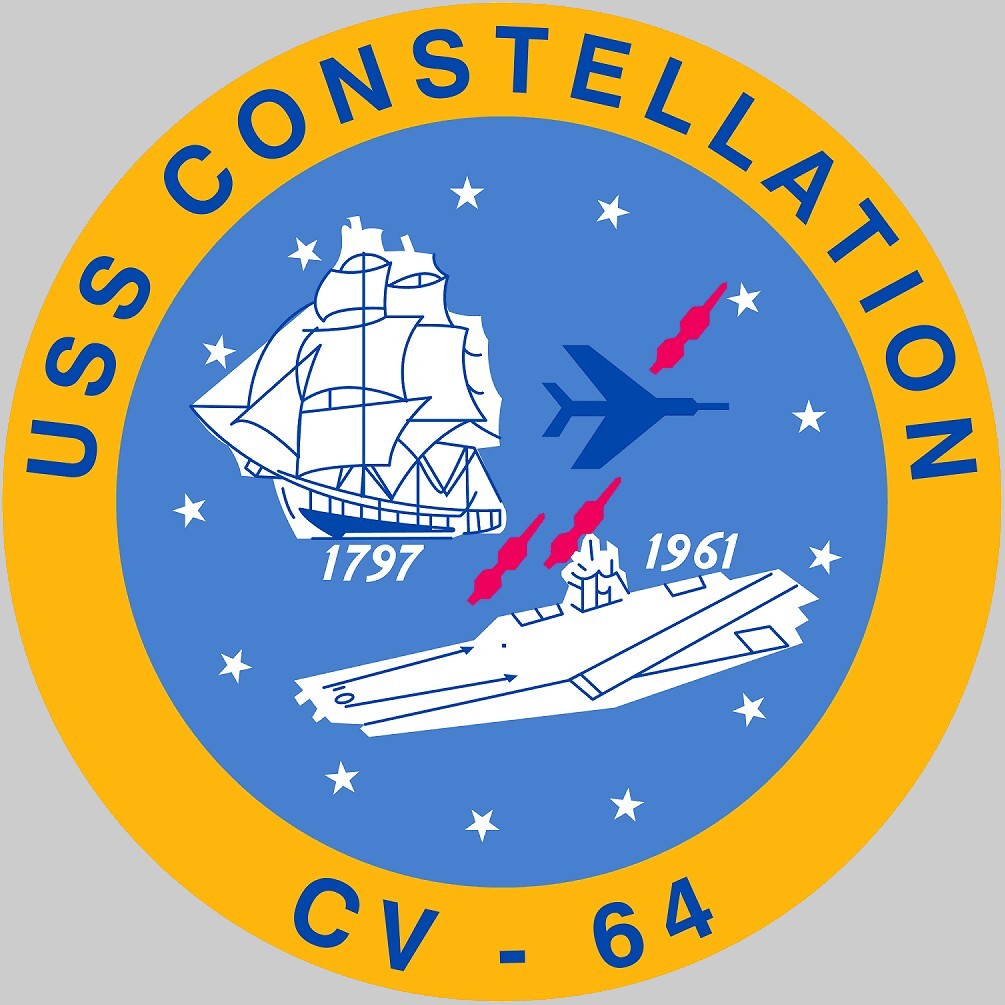 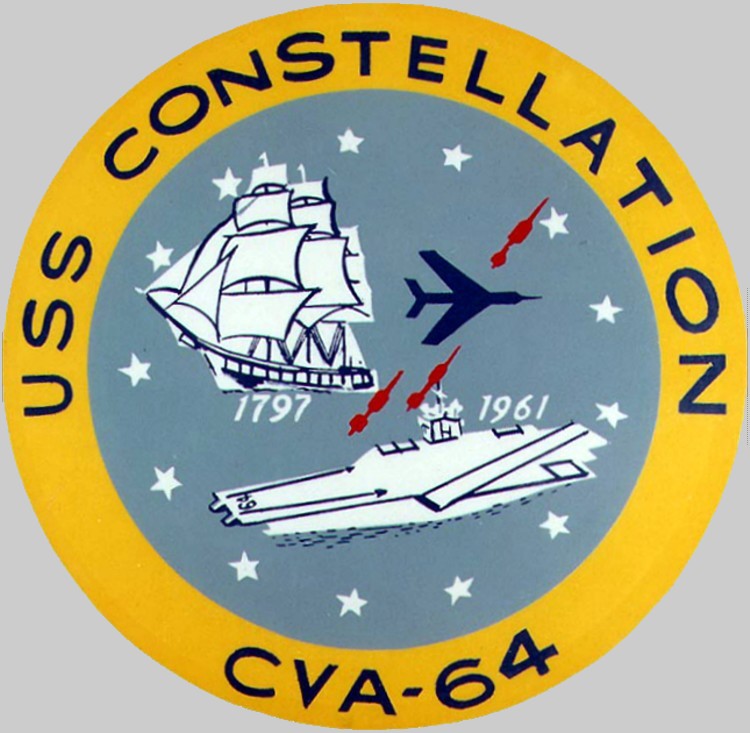 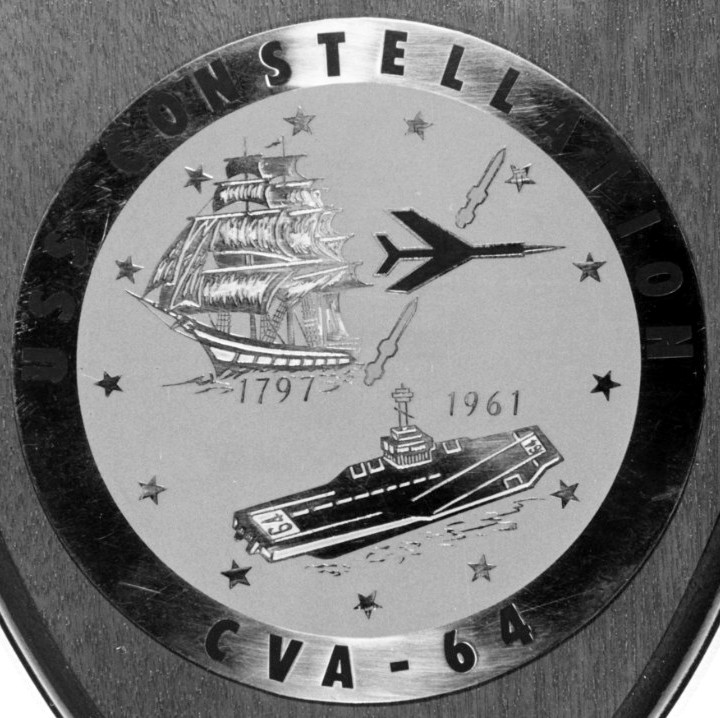 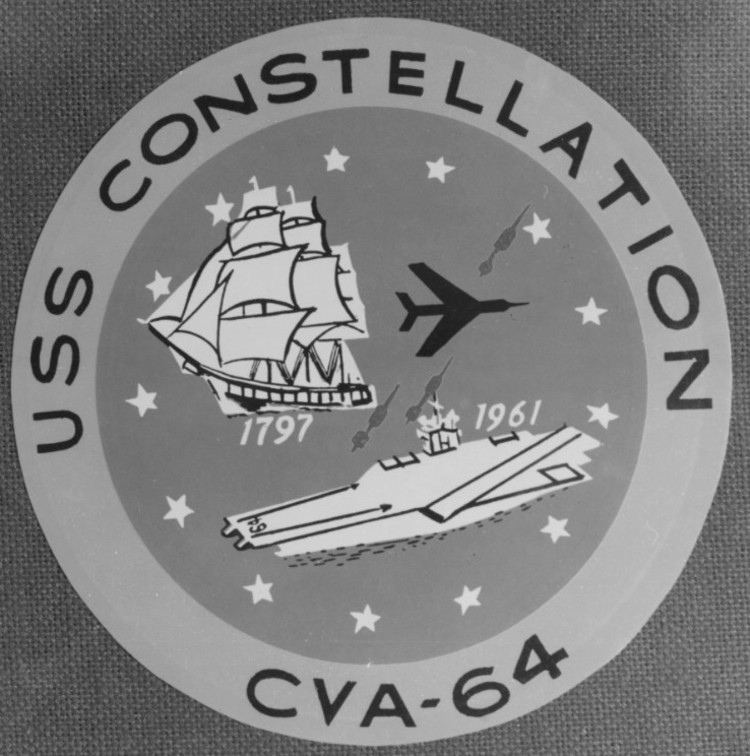 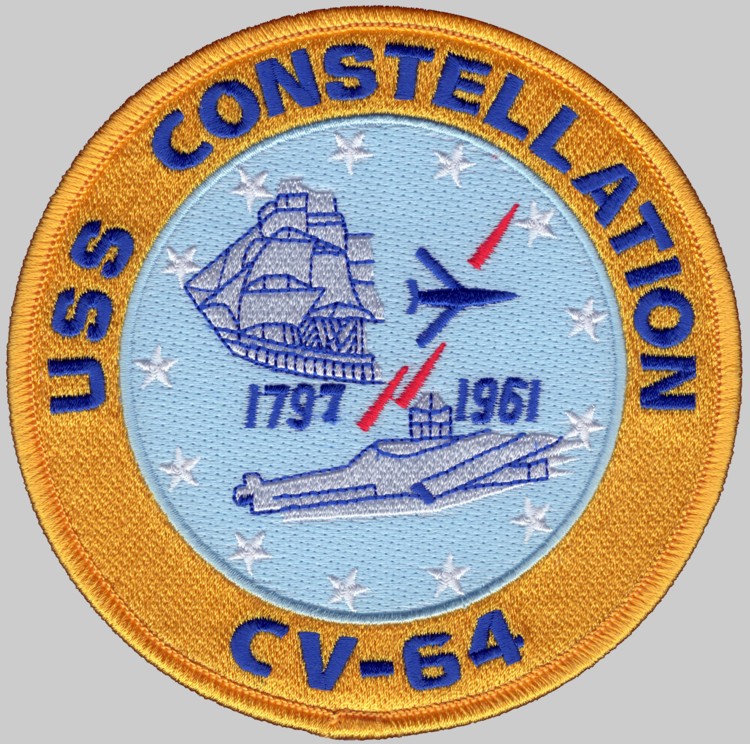 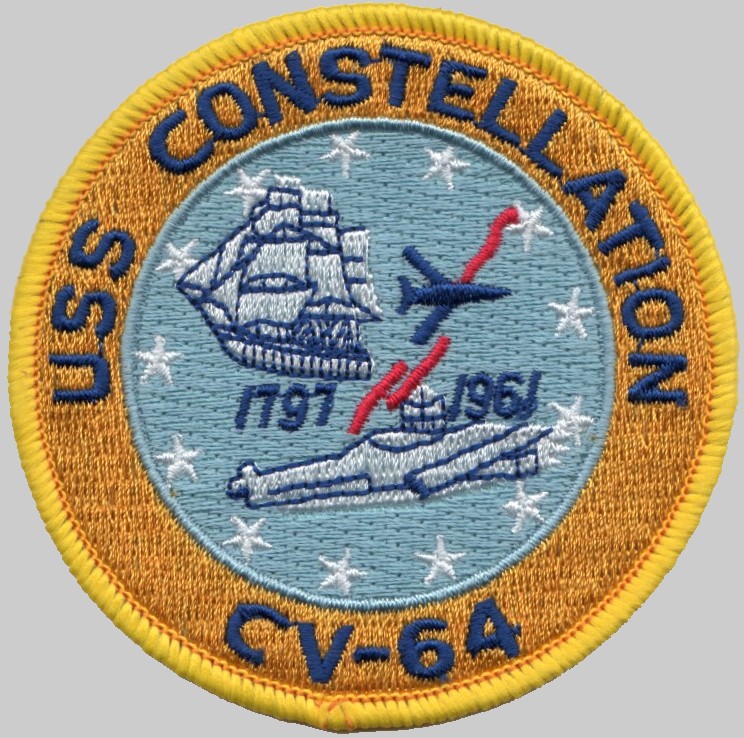 |
||
| | seaforces.org | USN ships start page | |